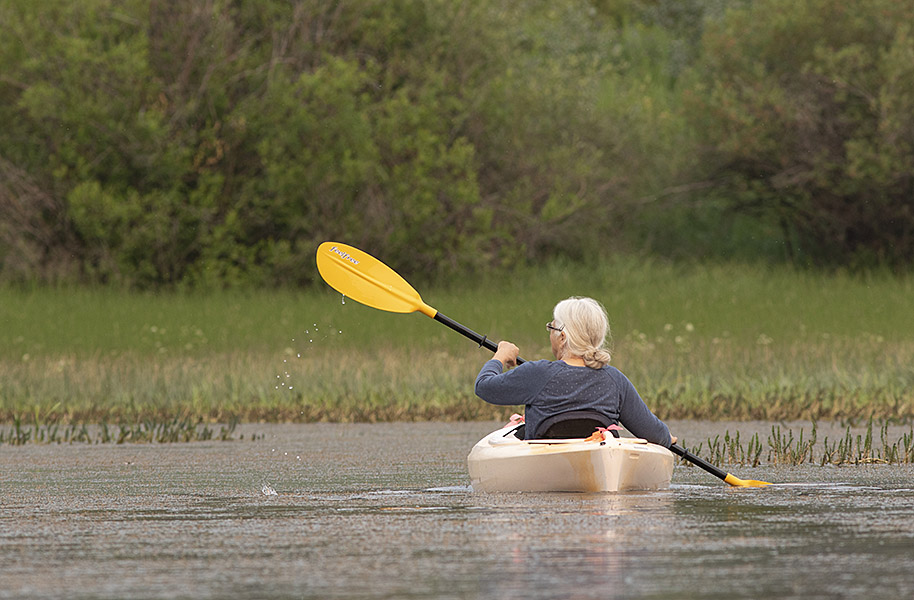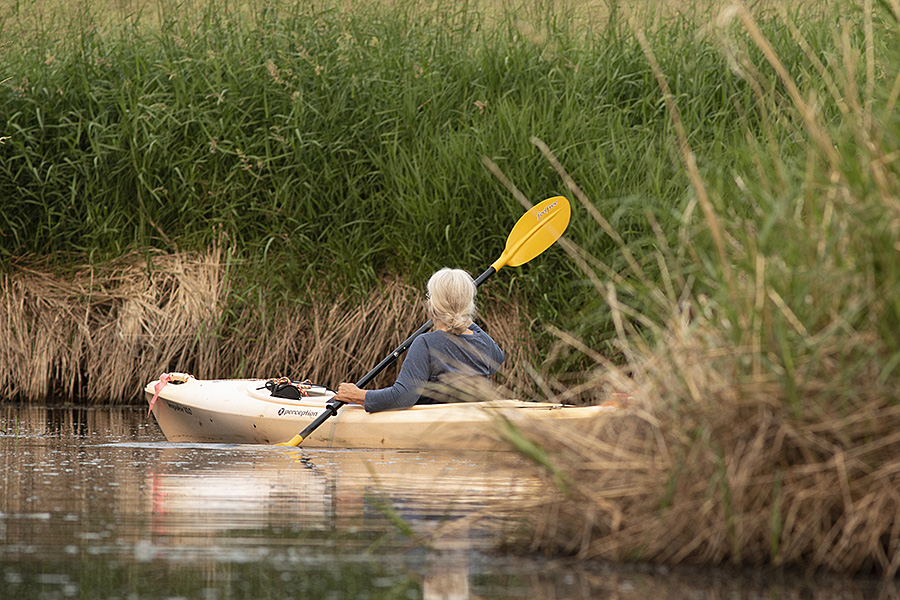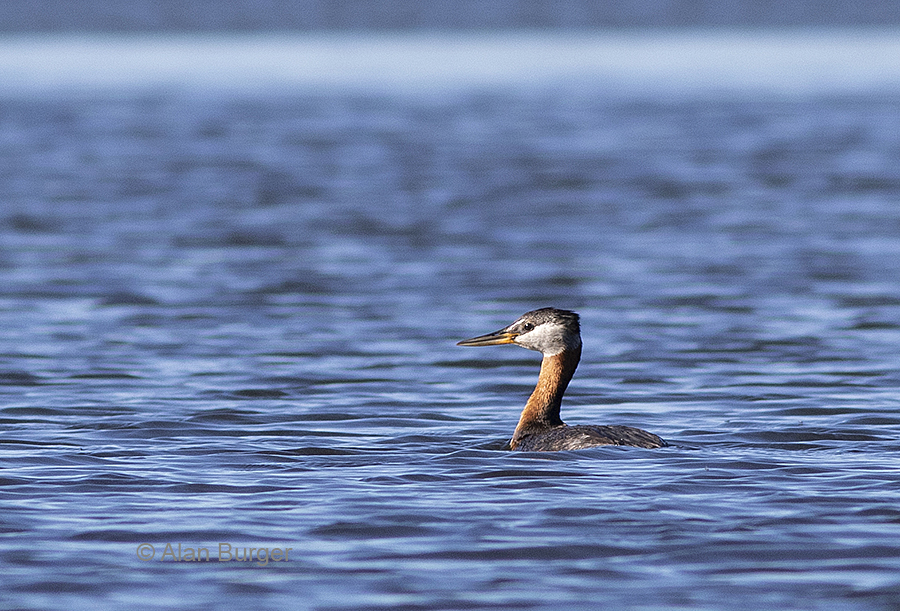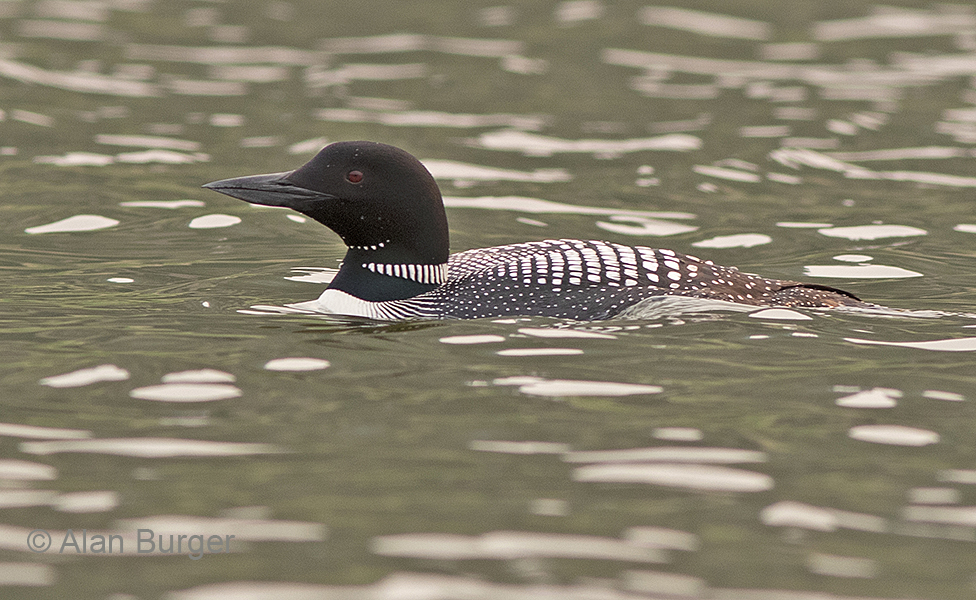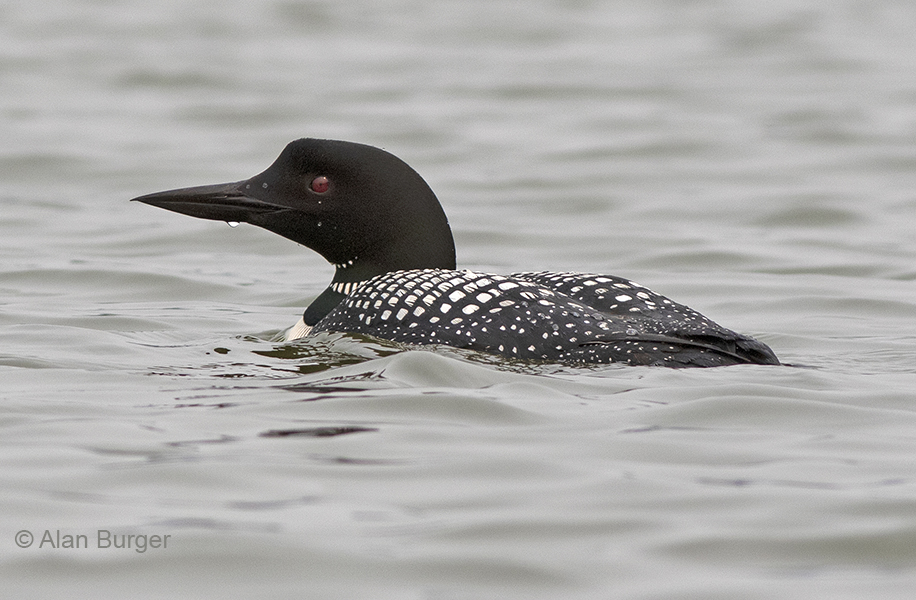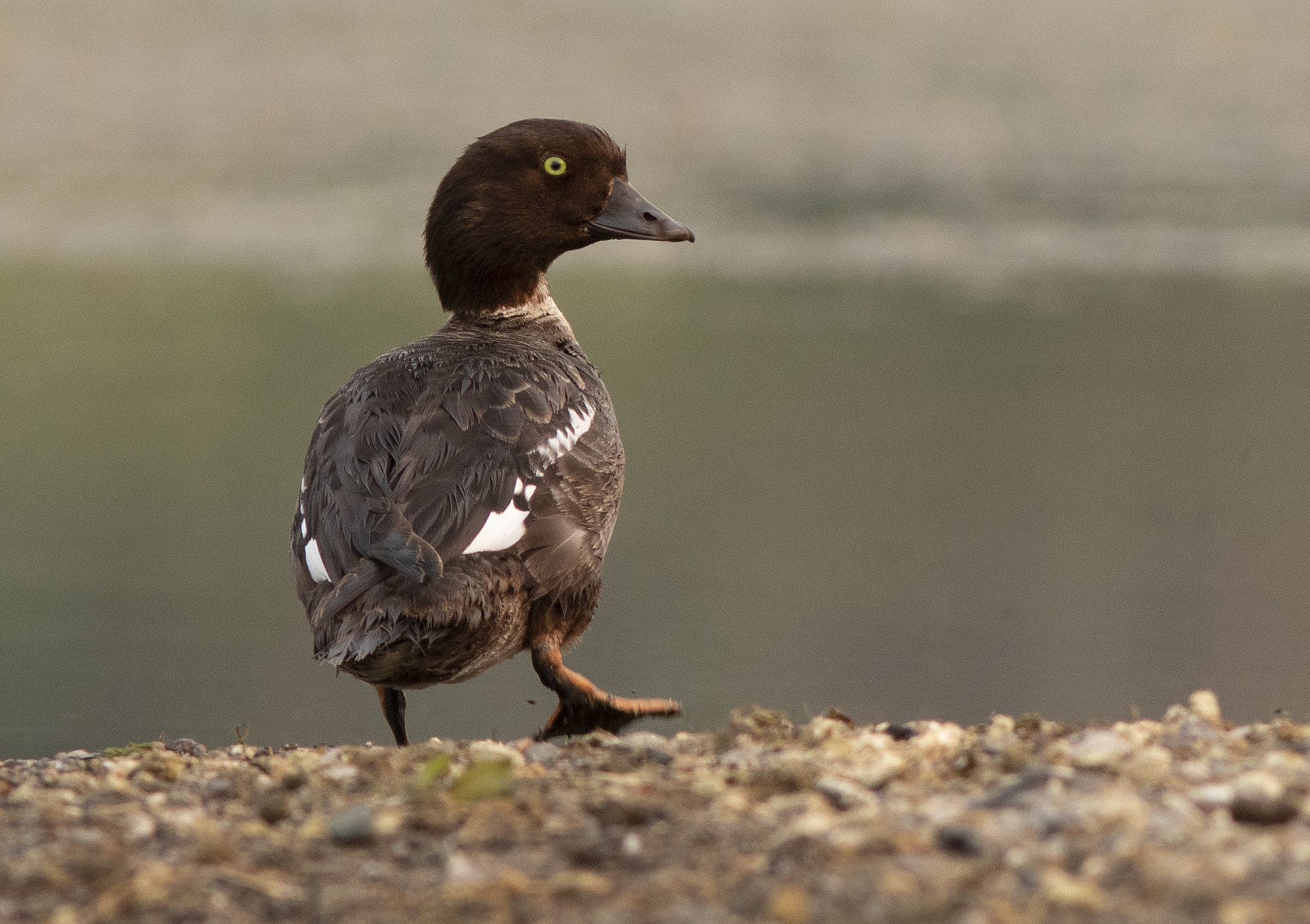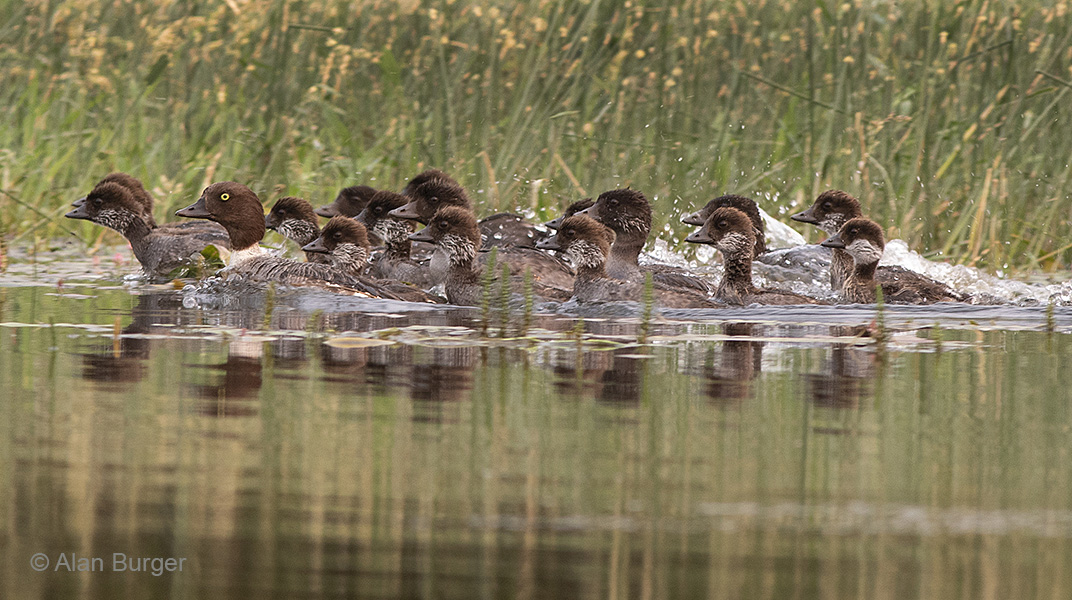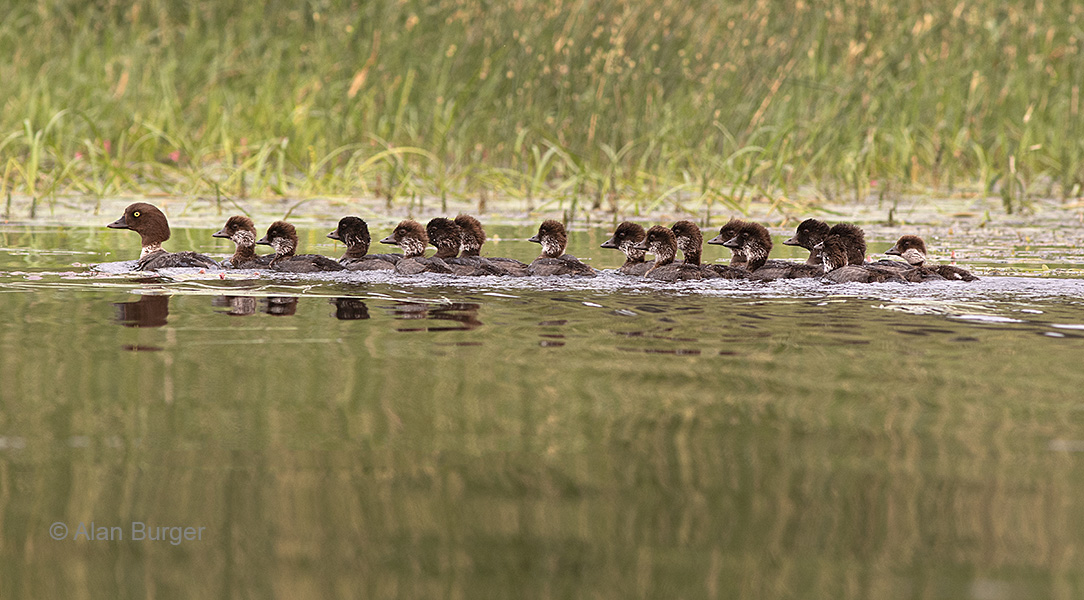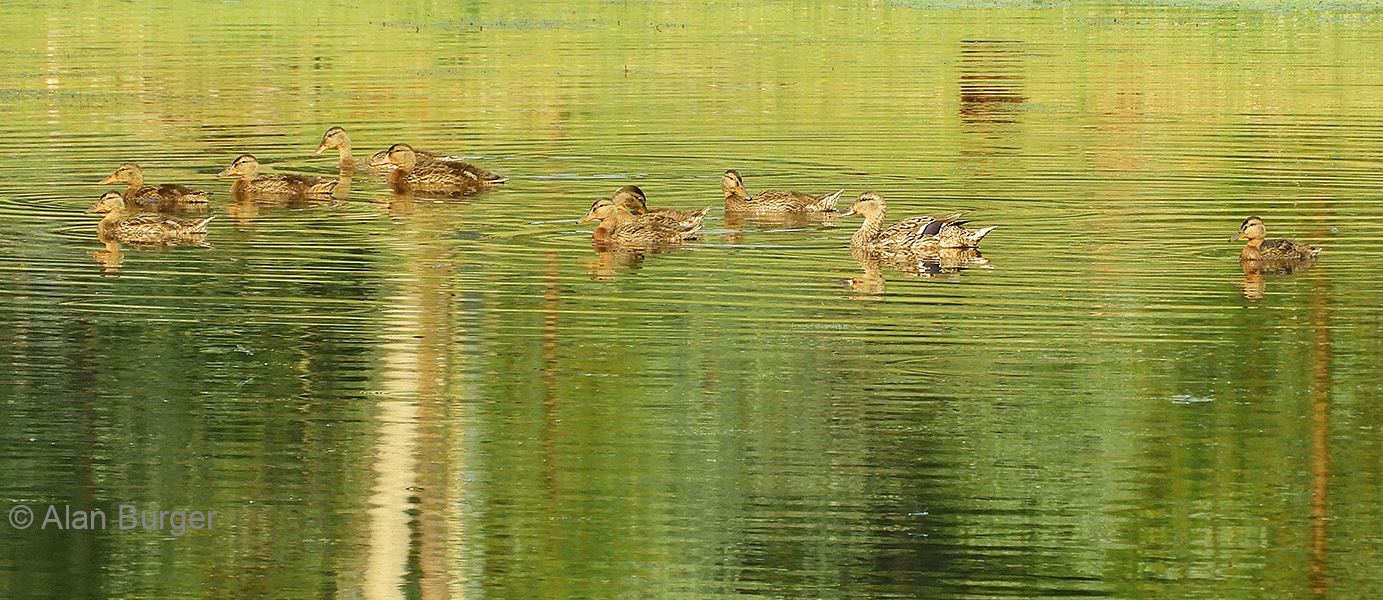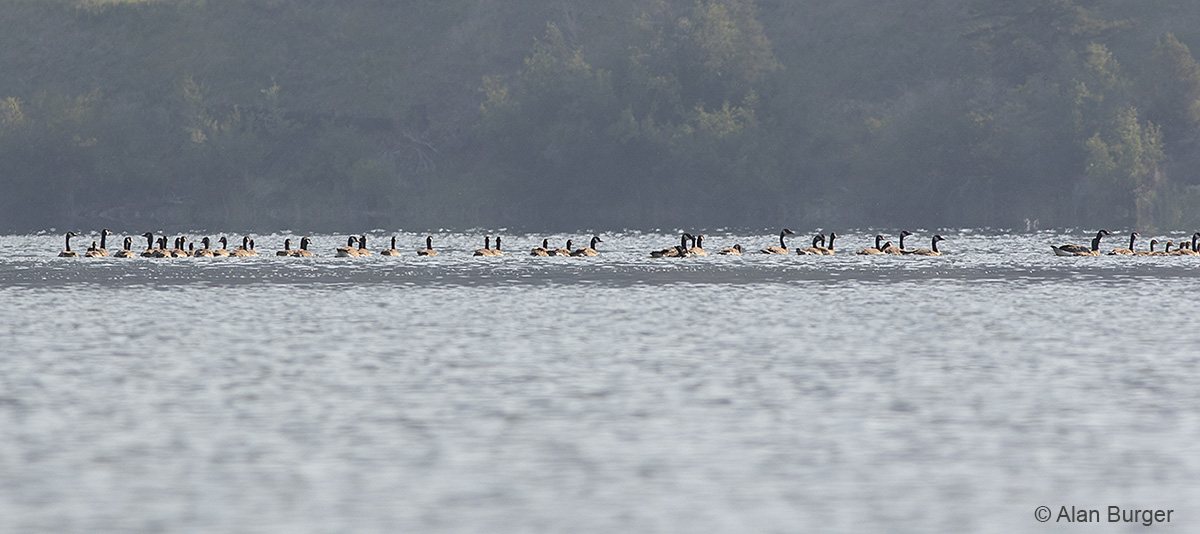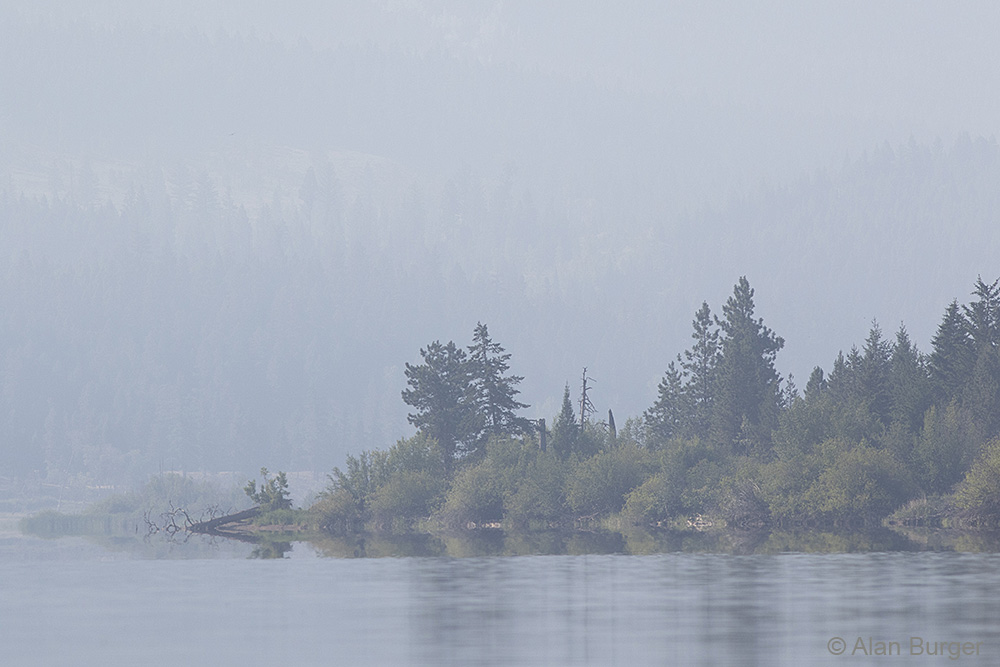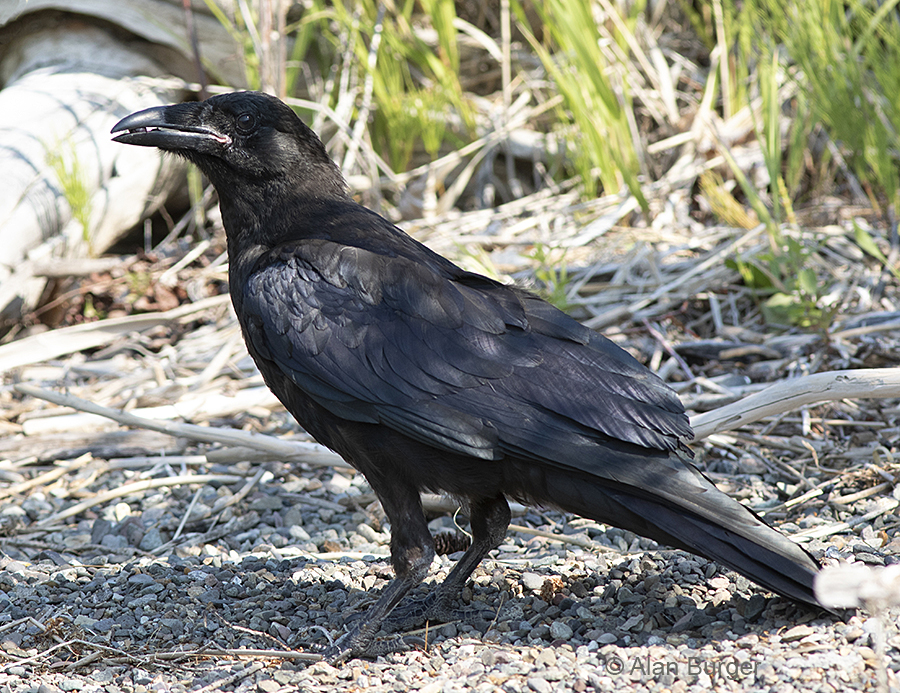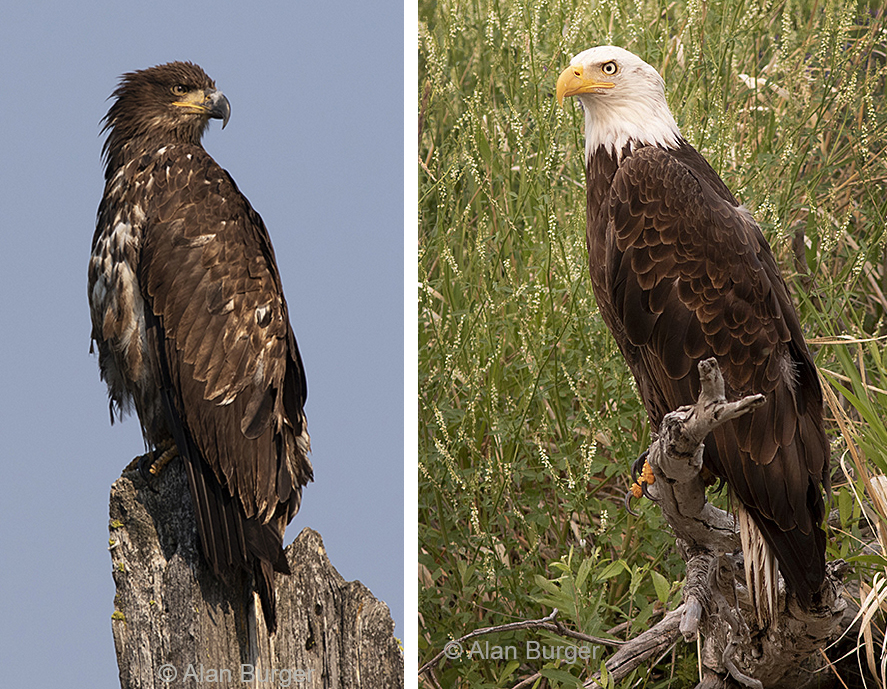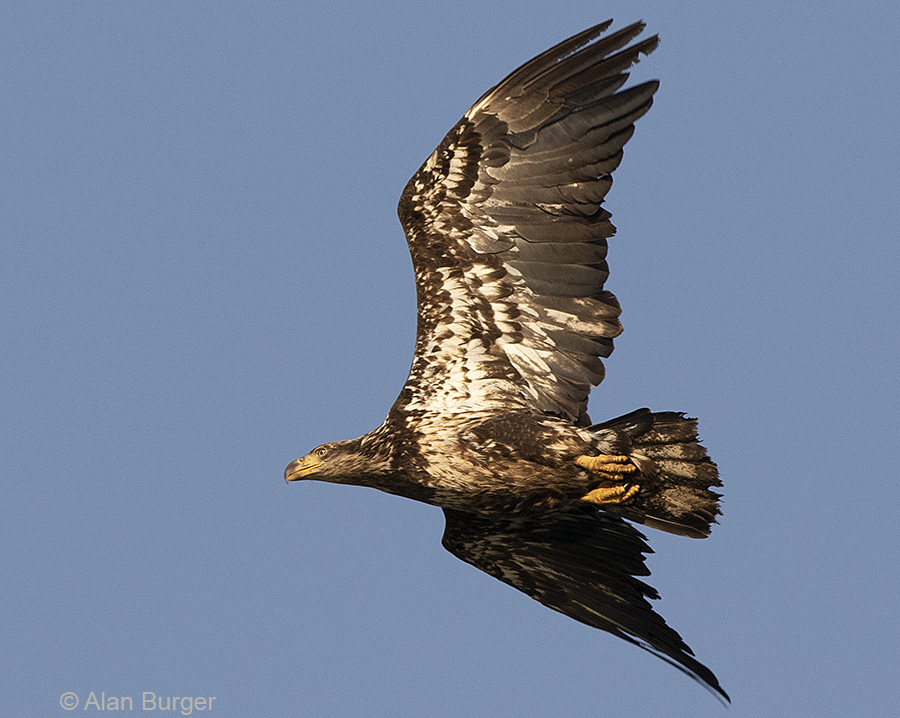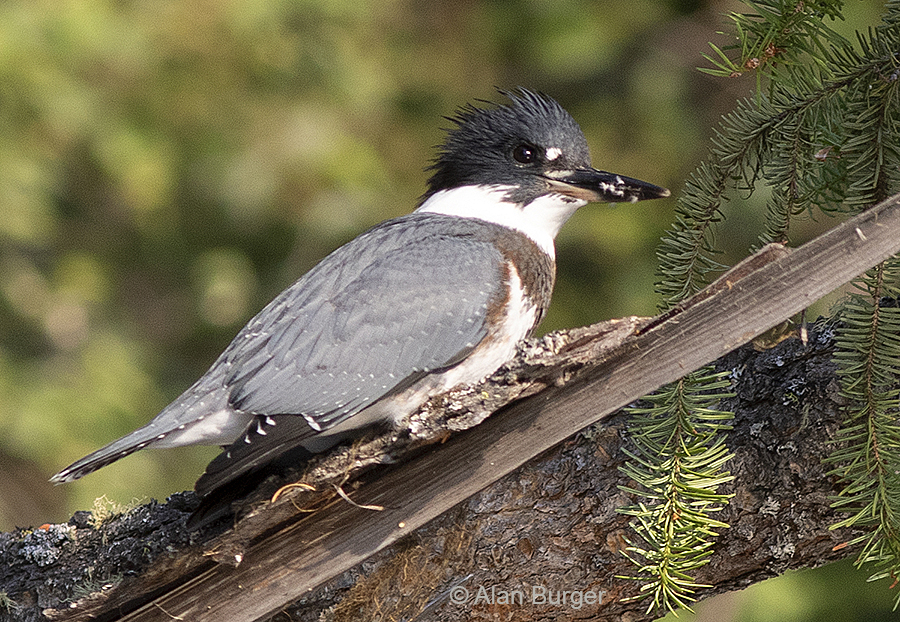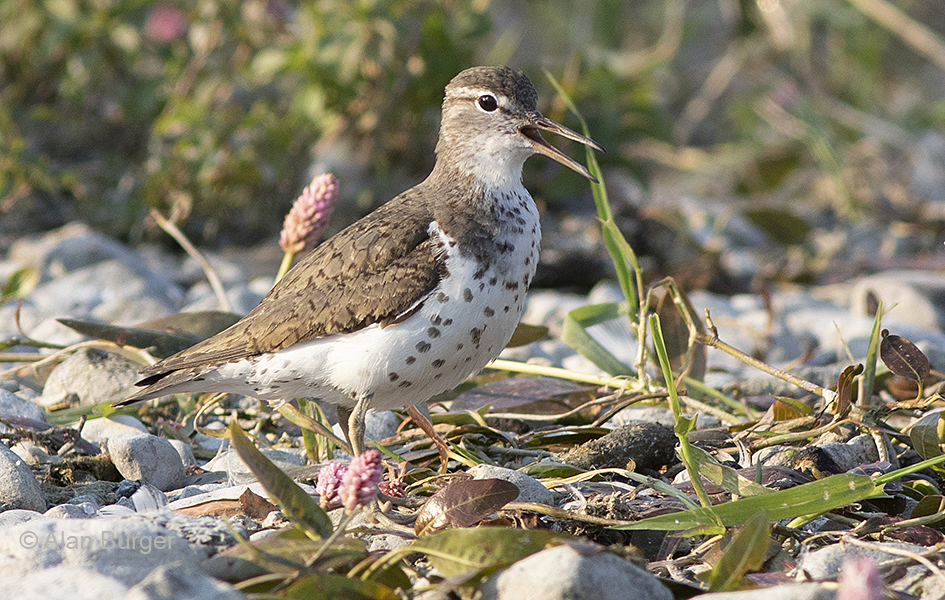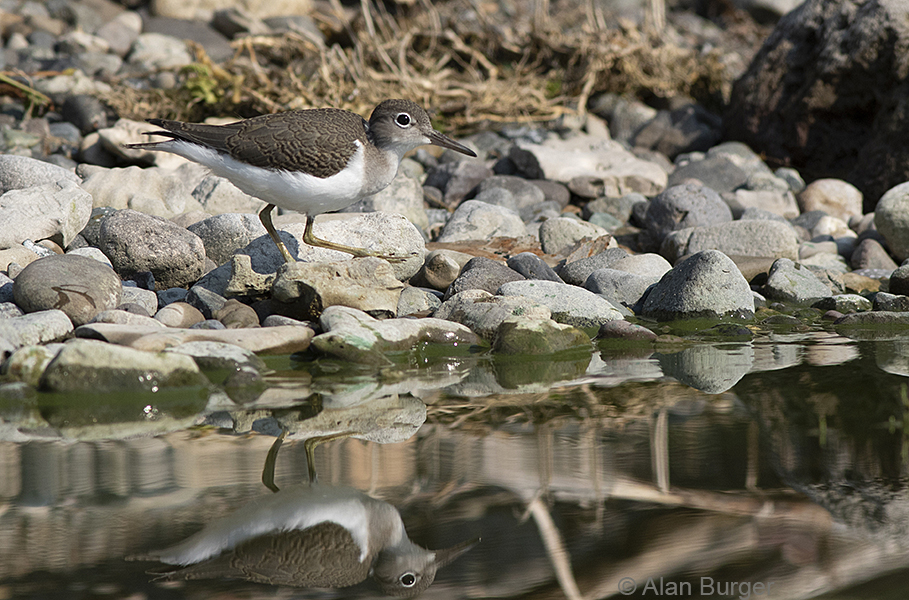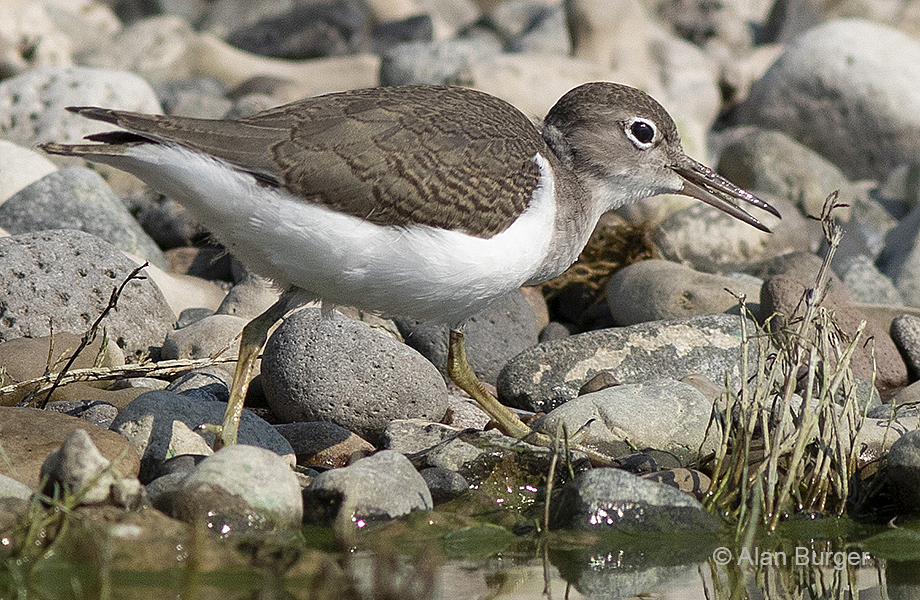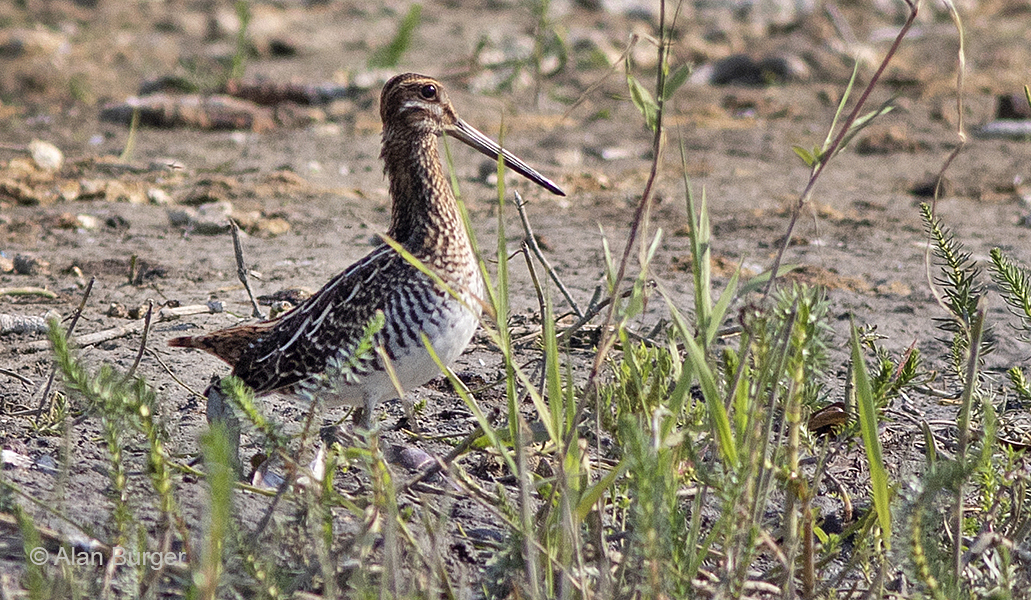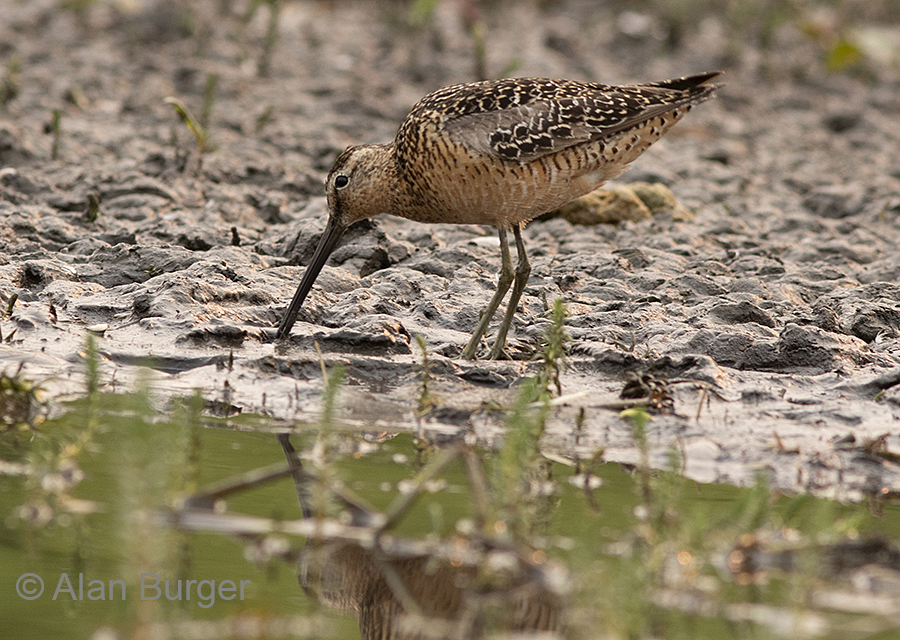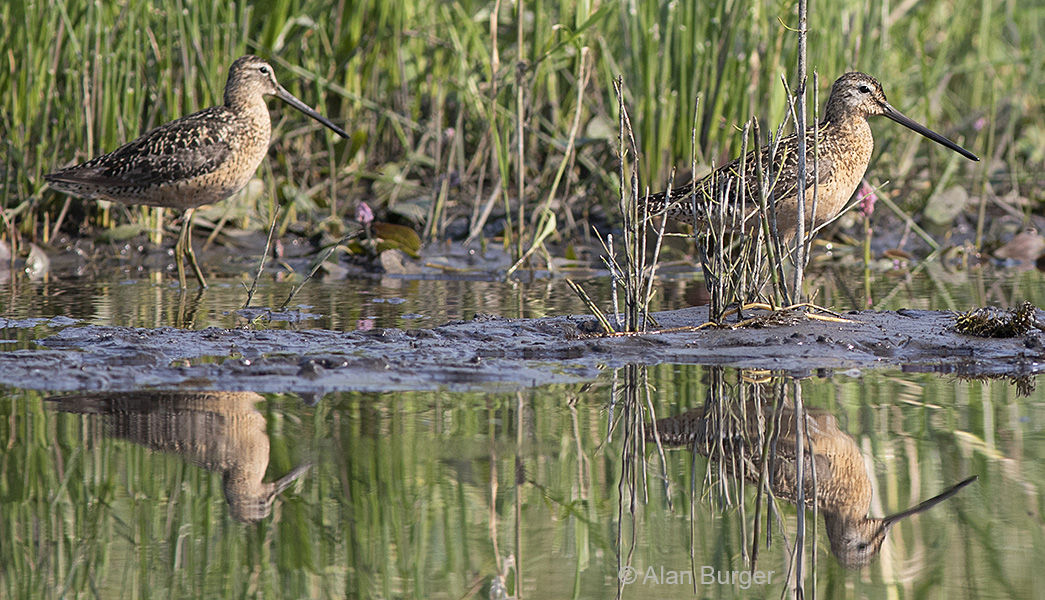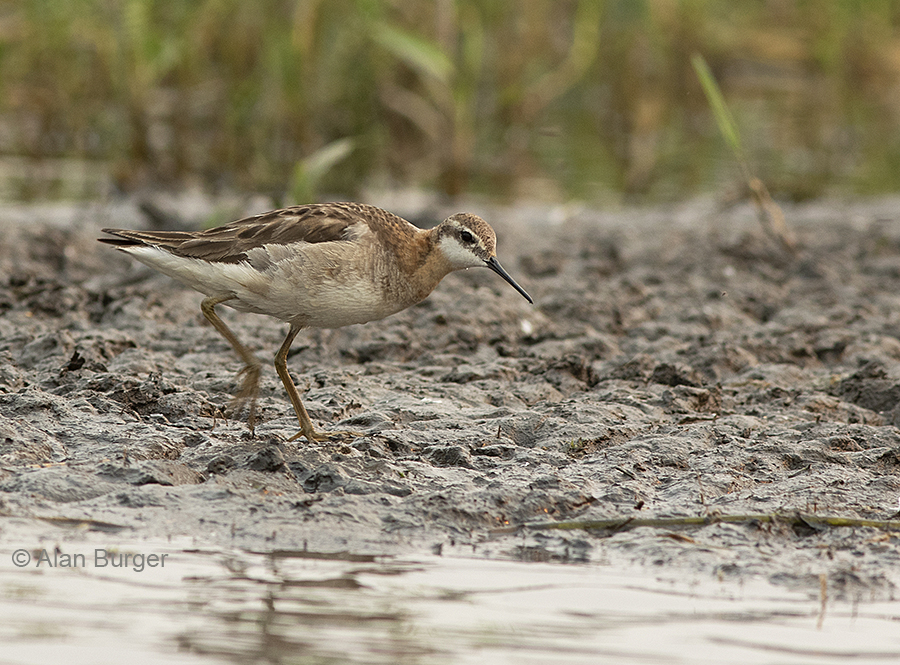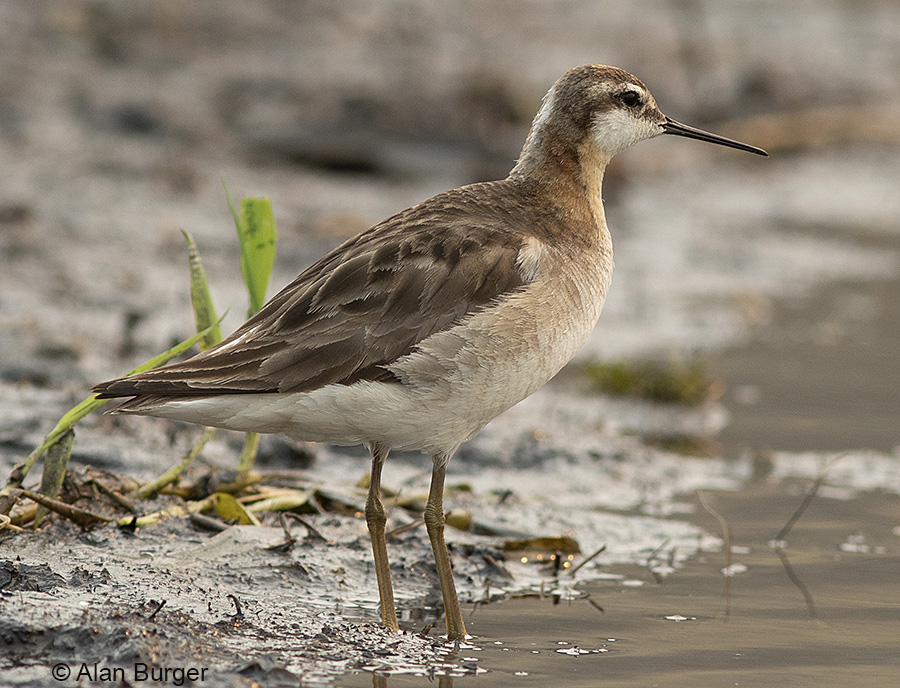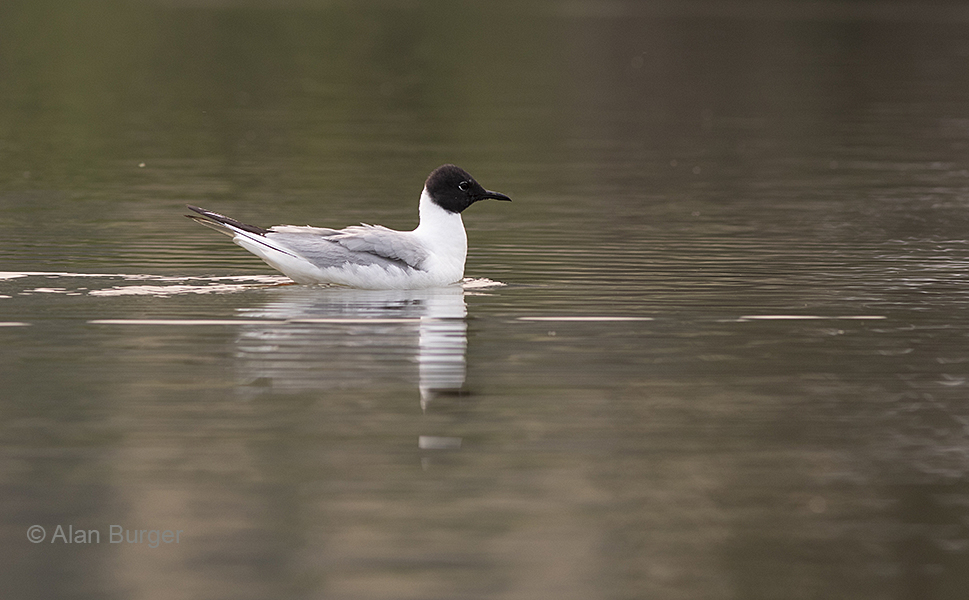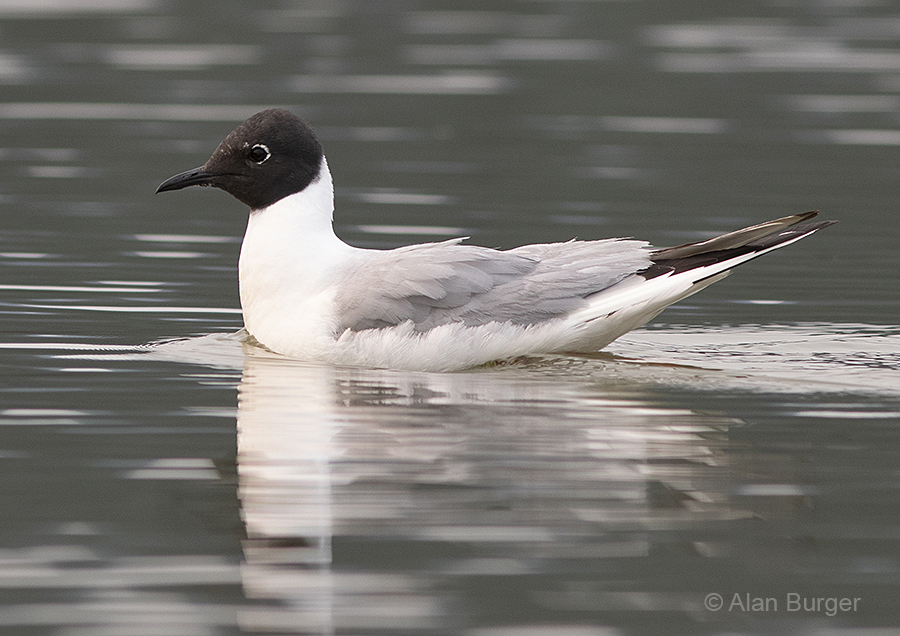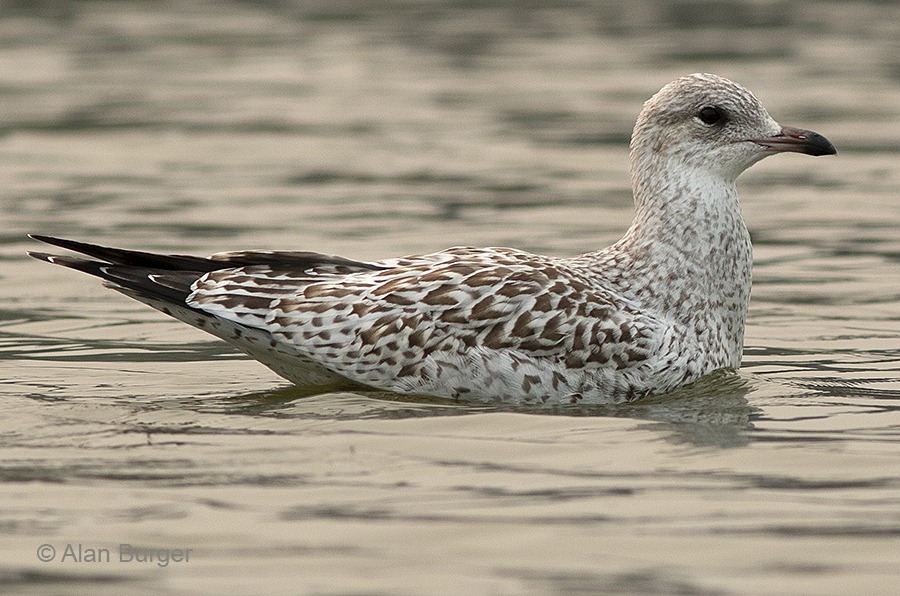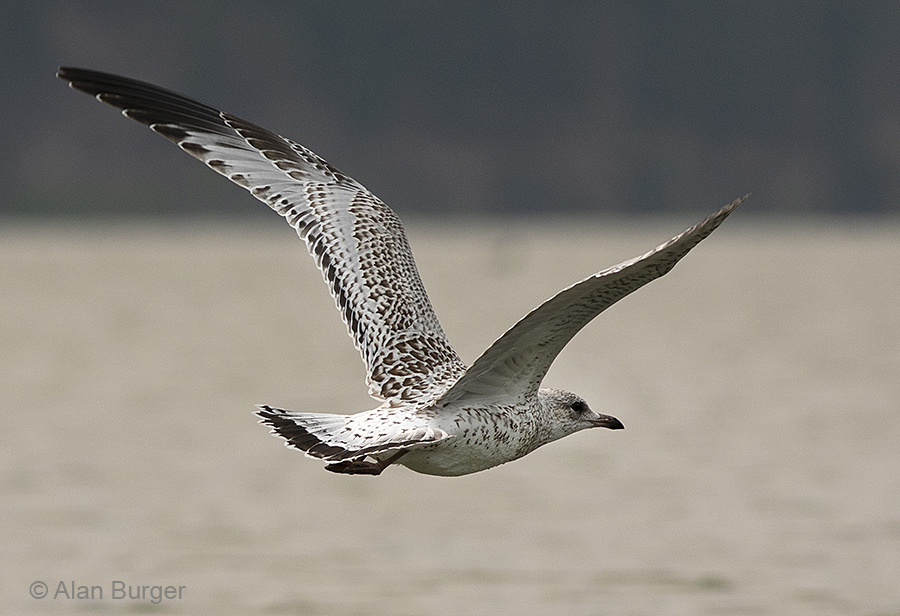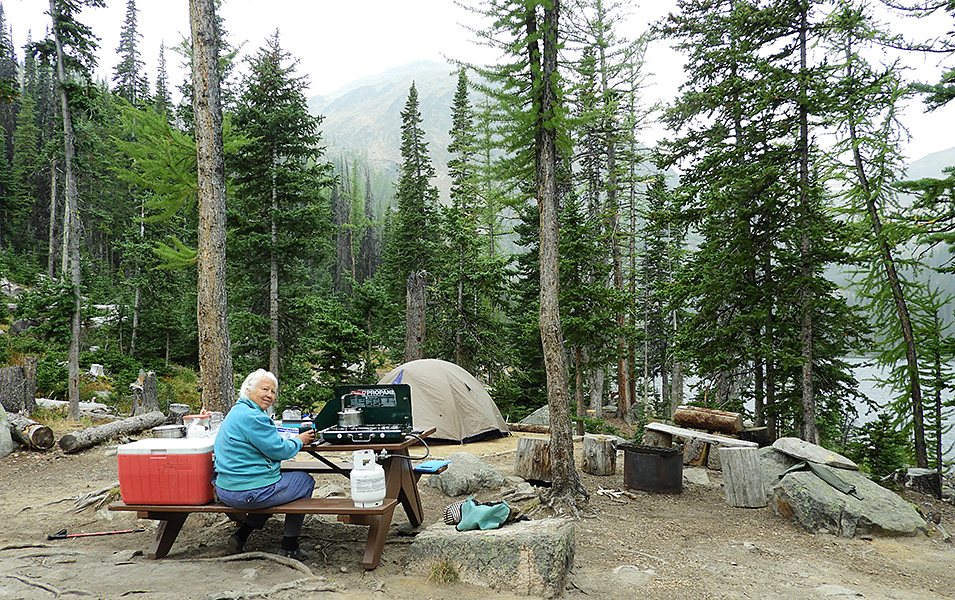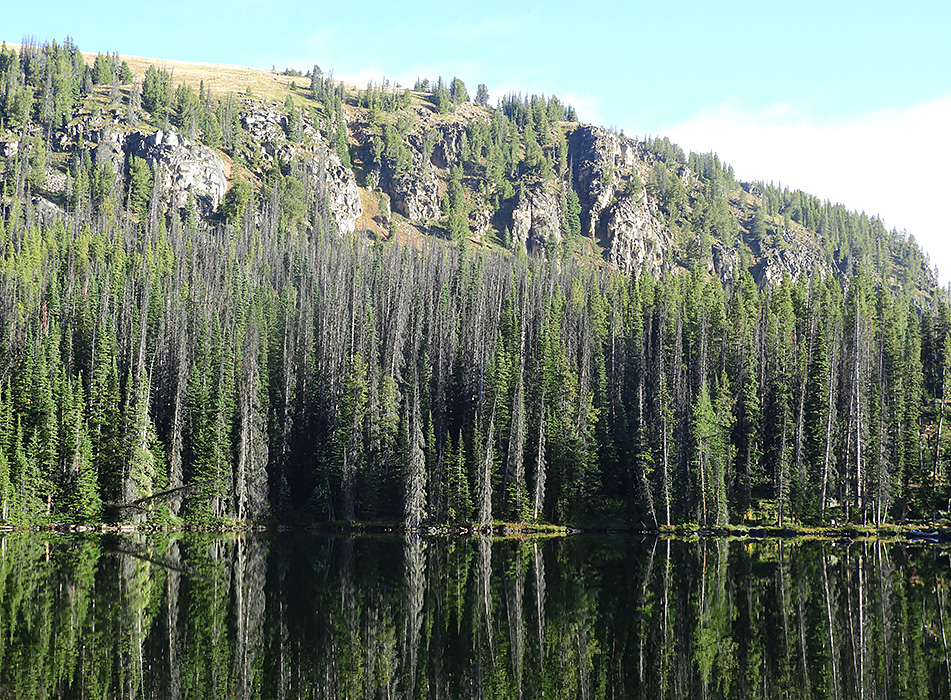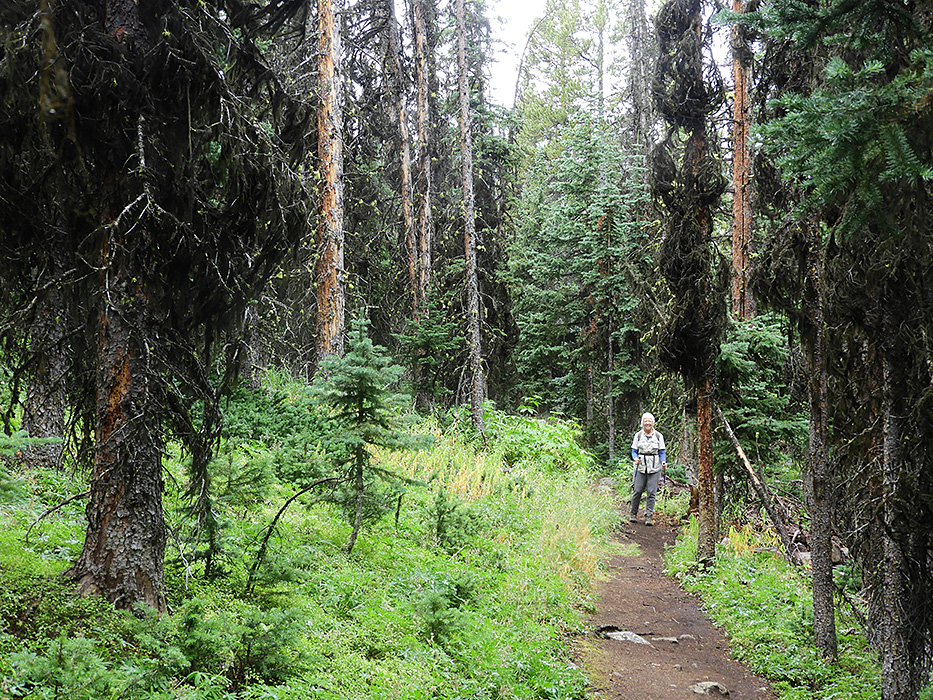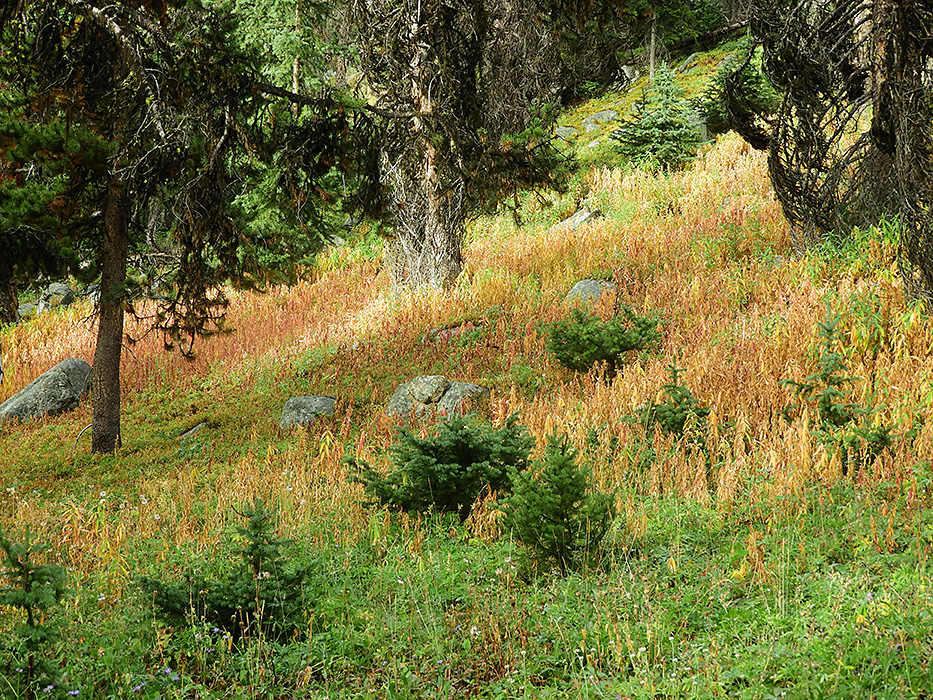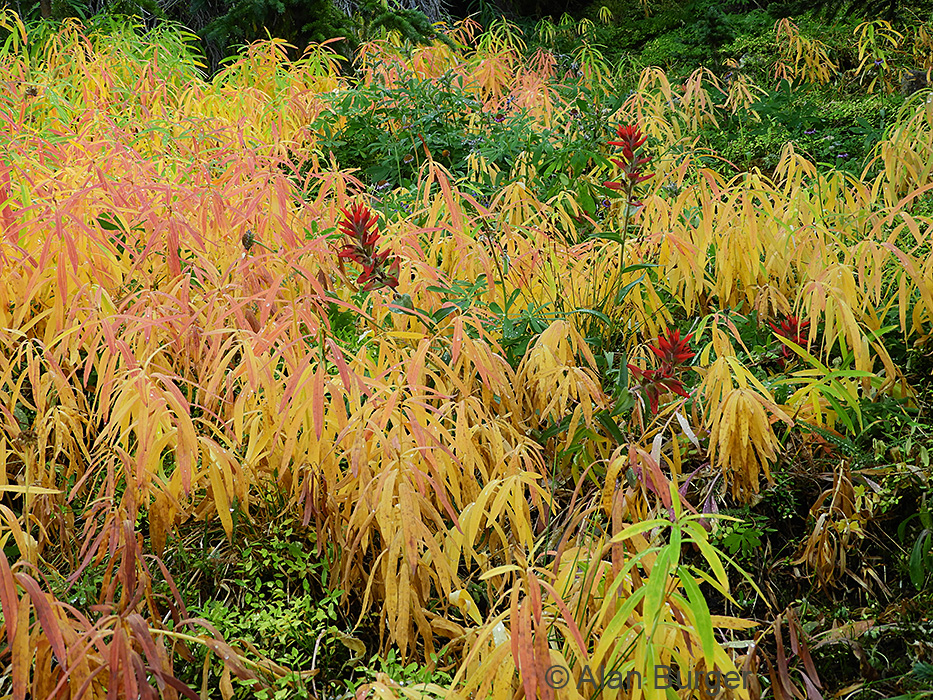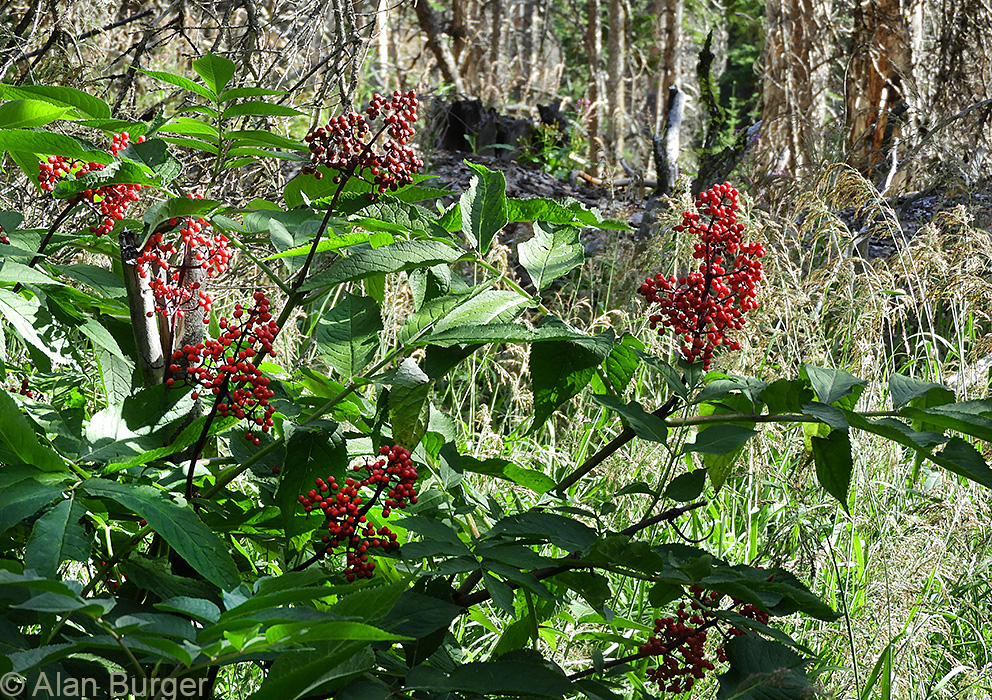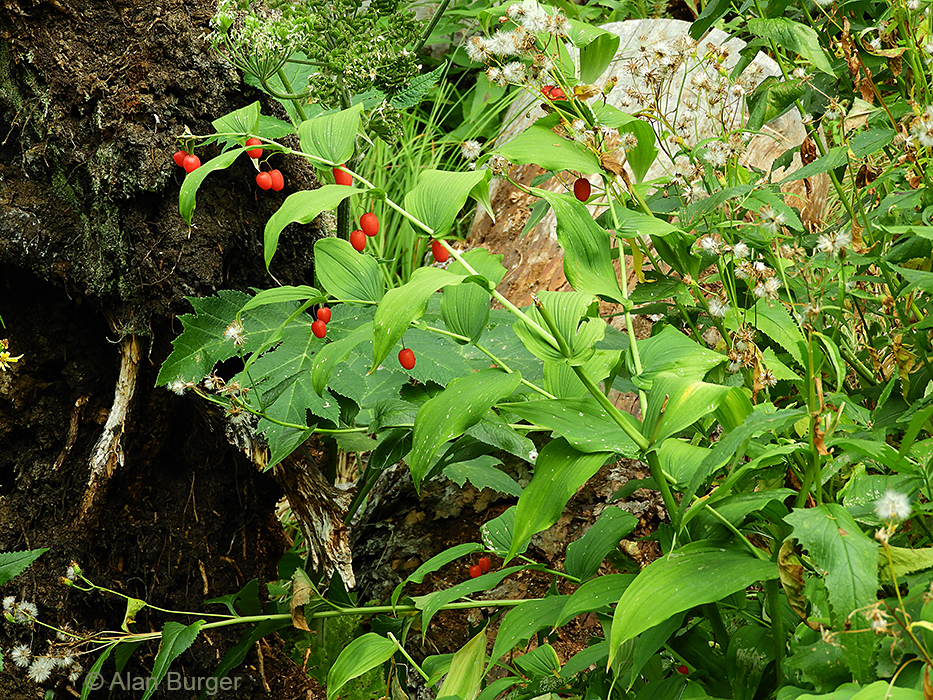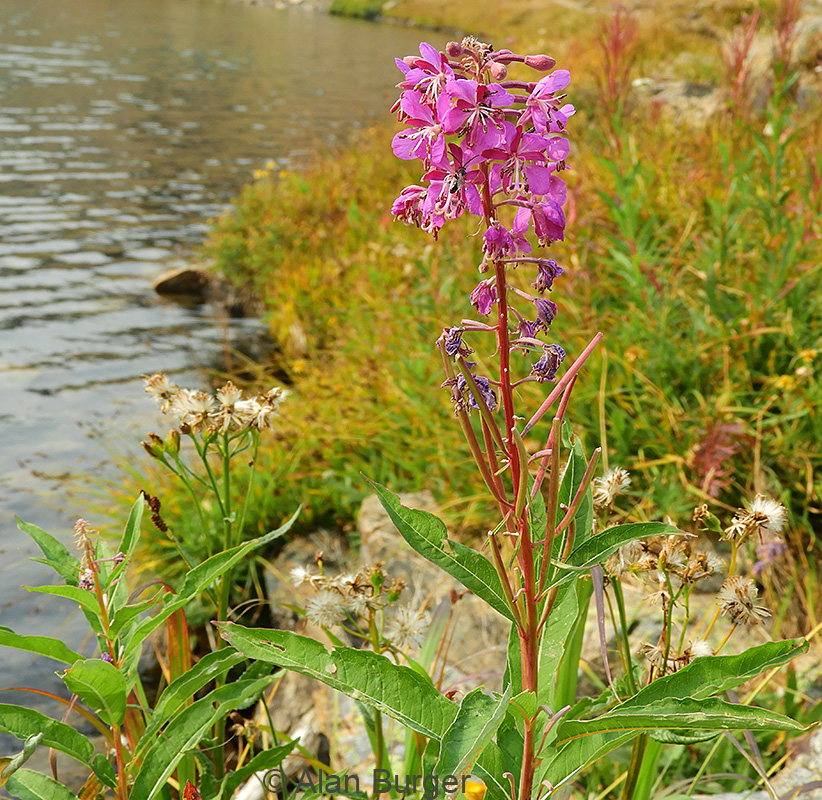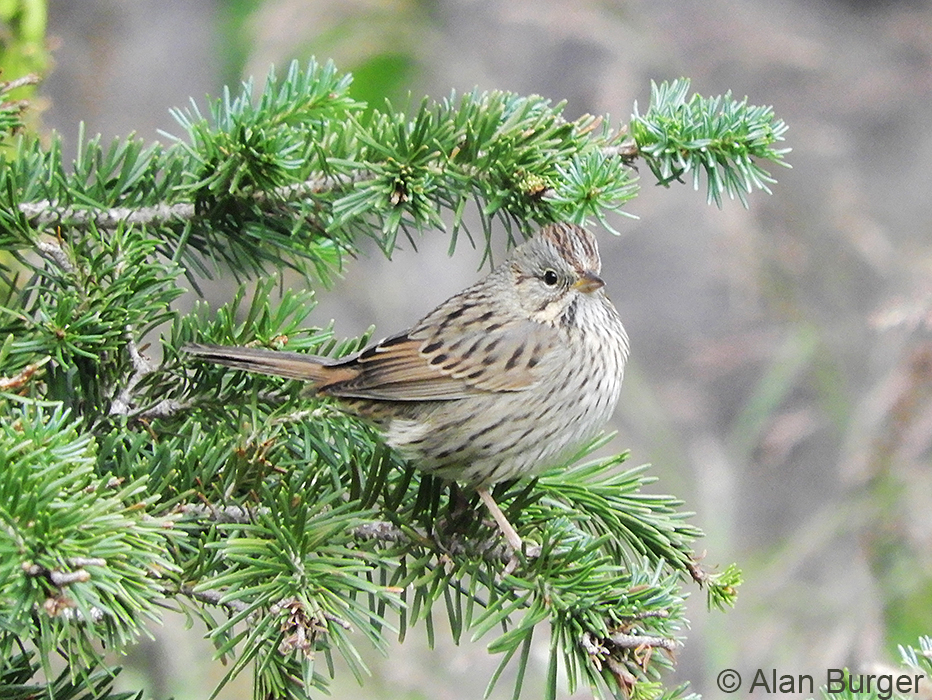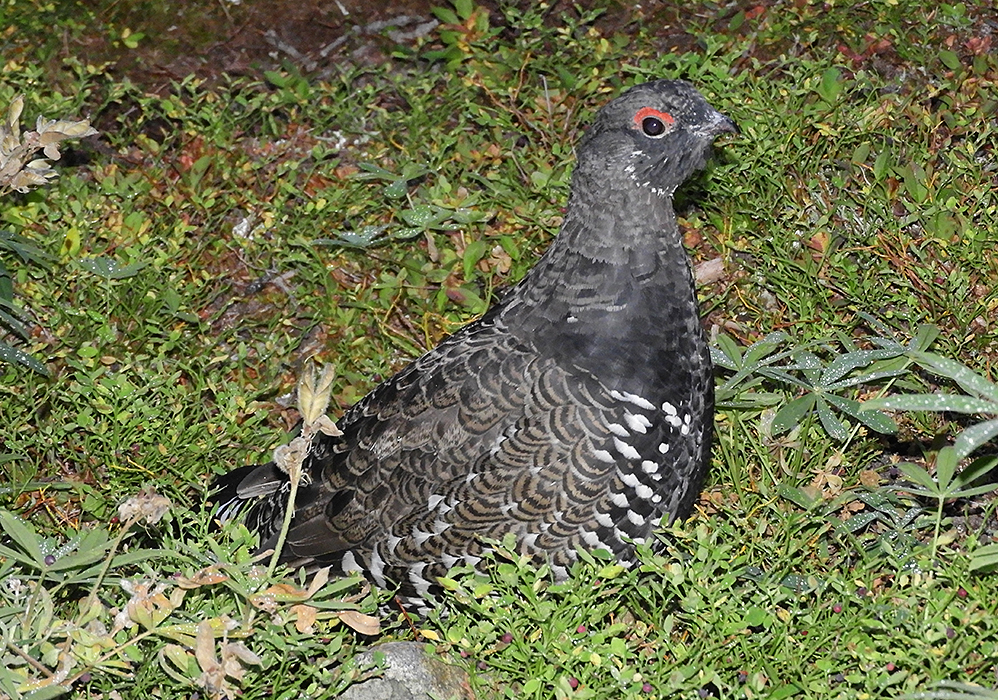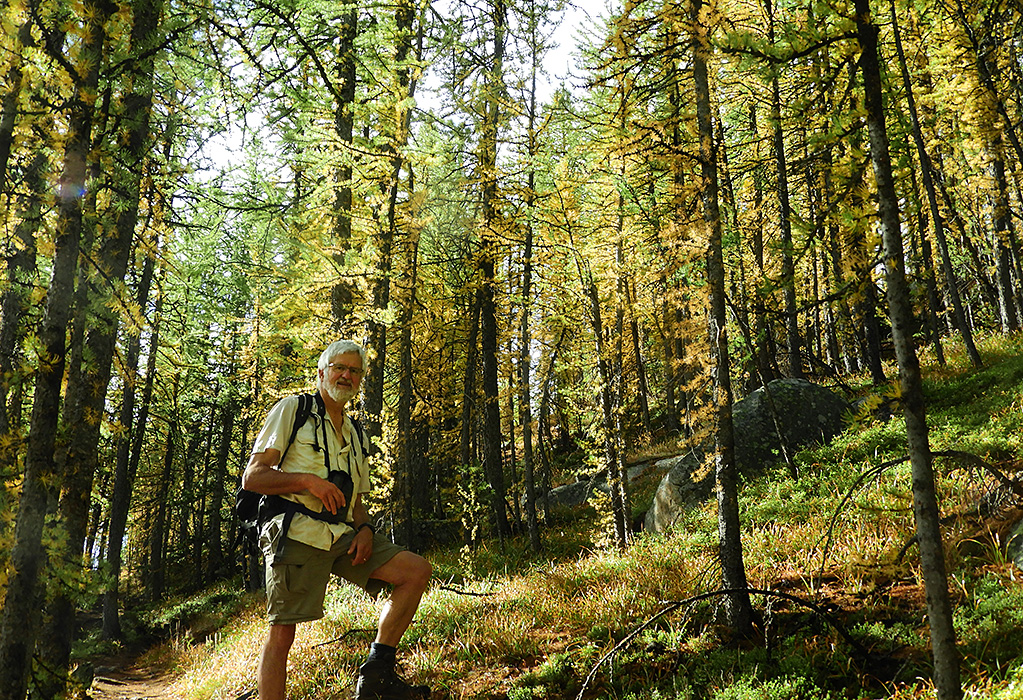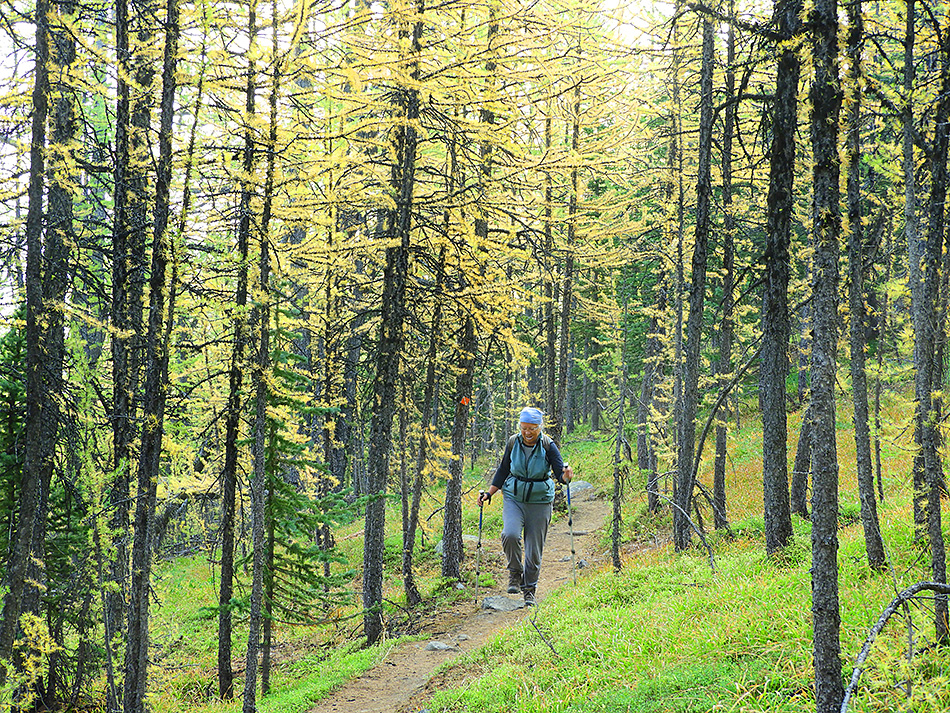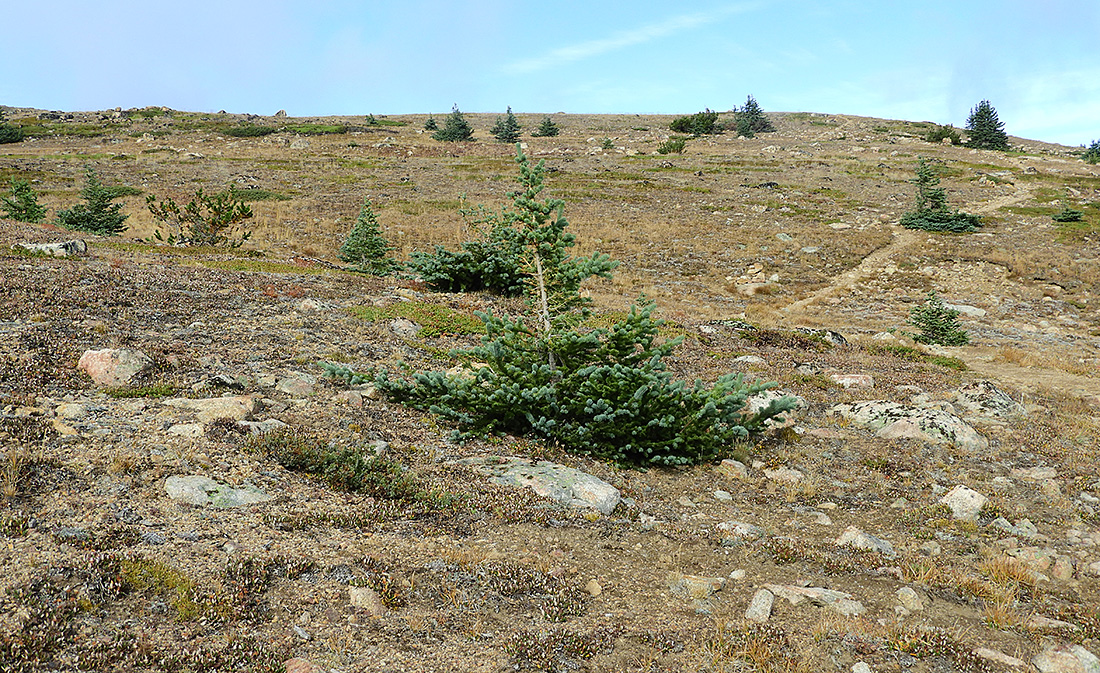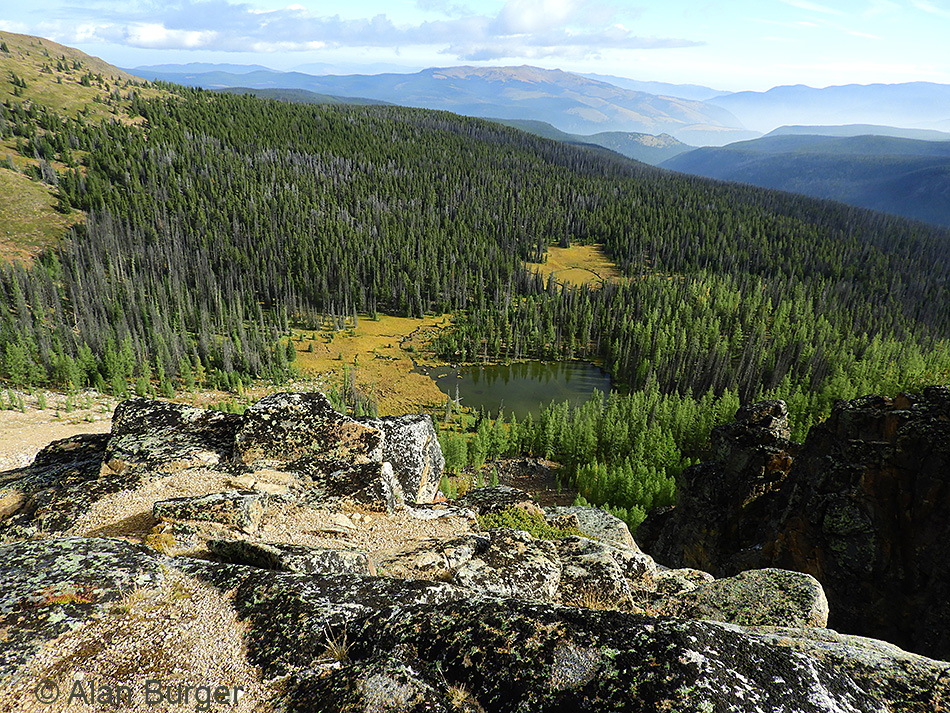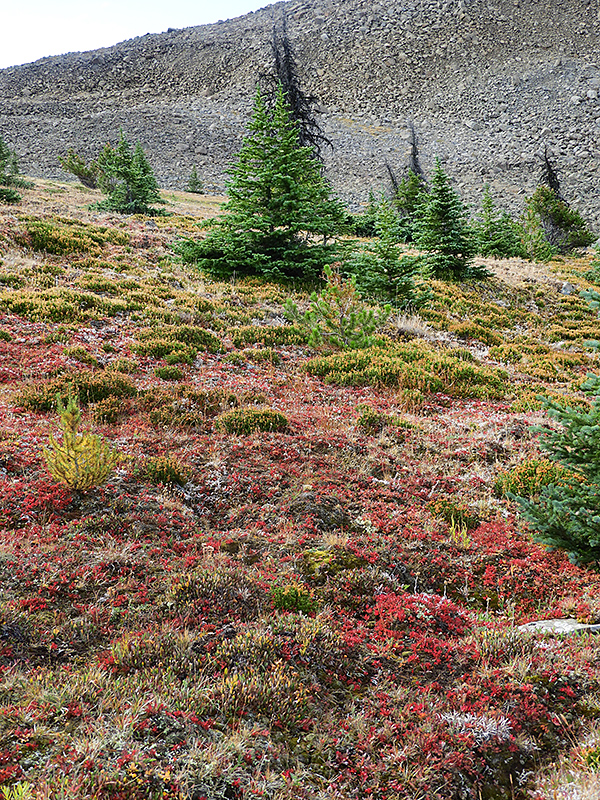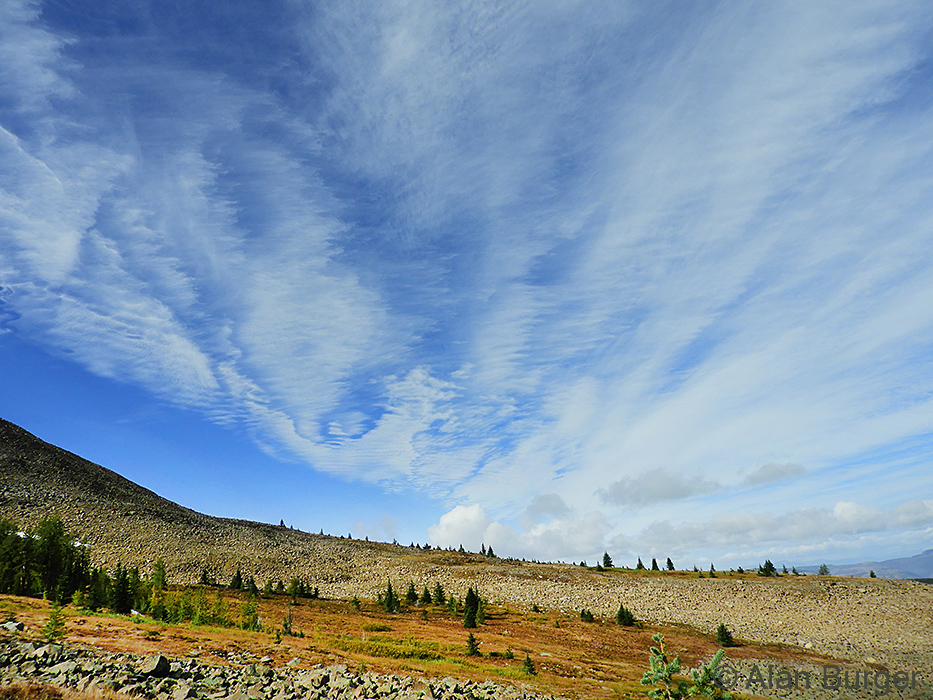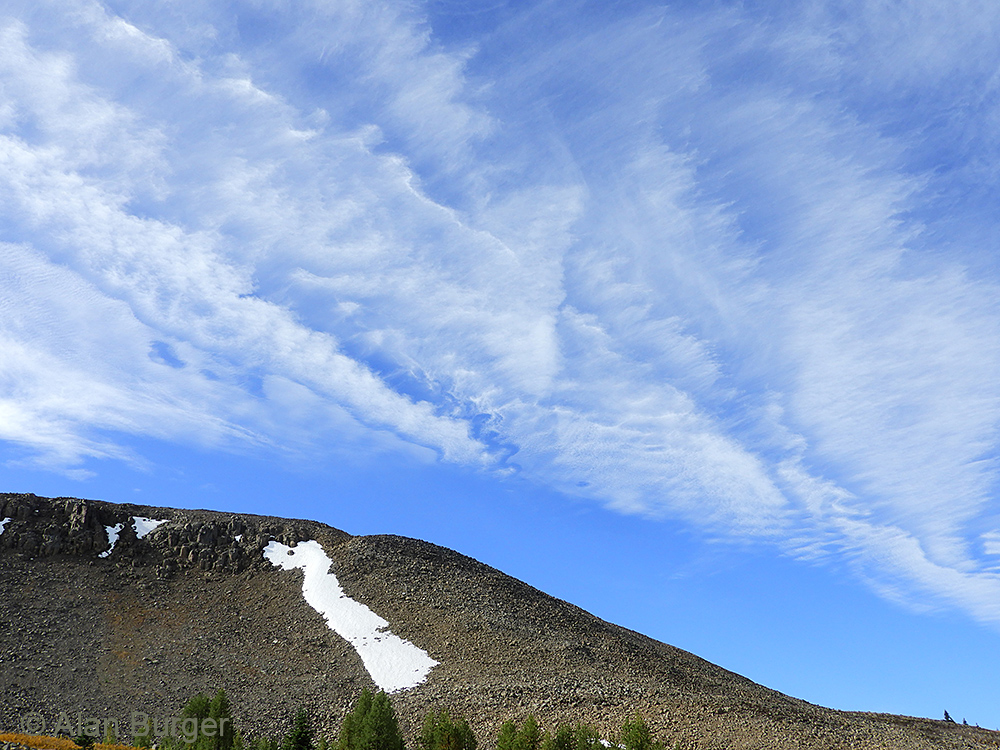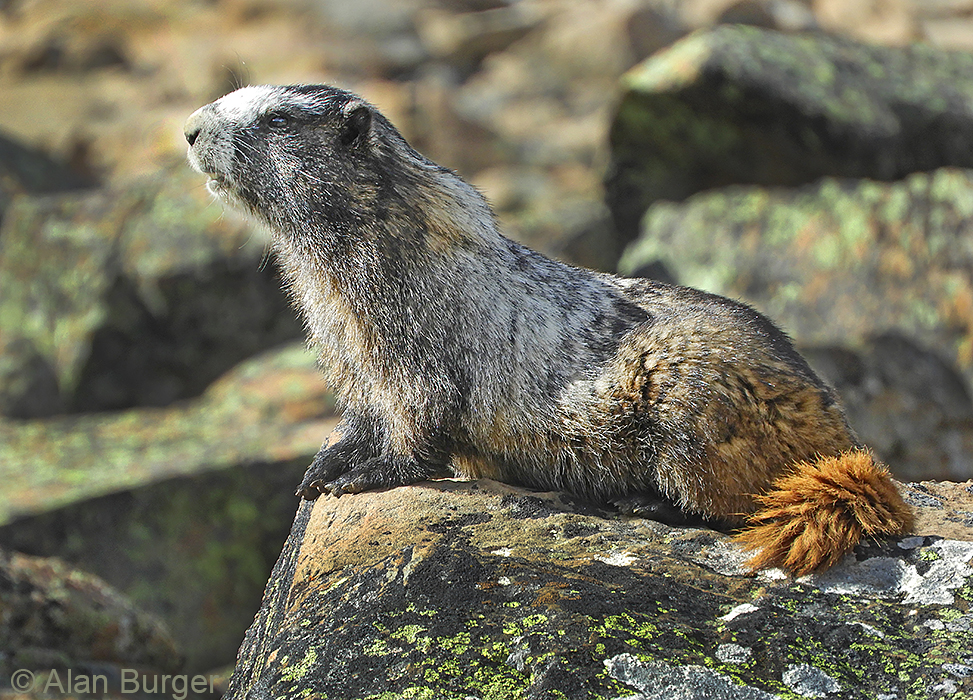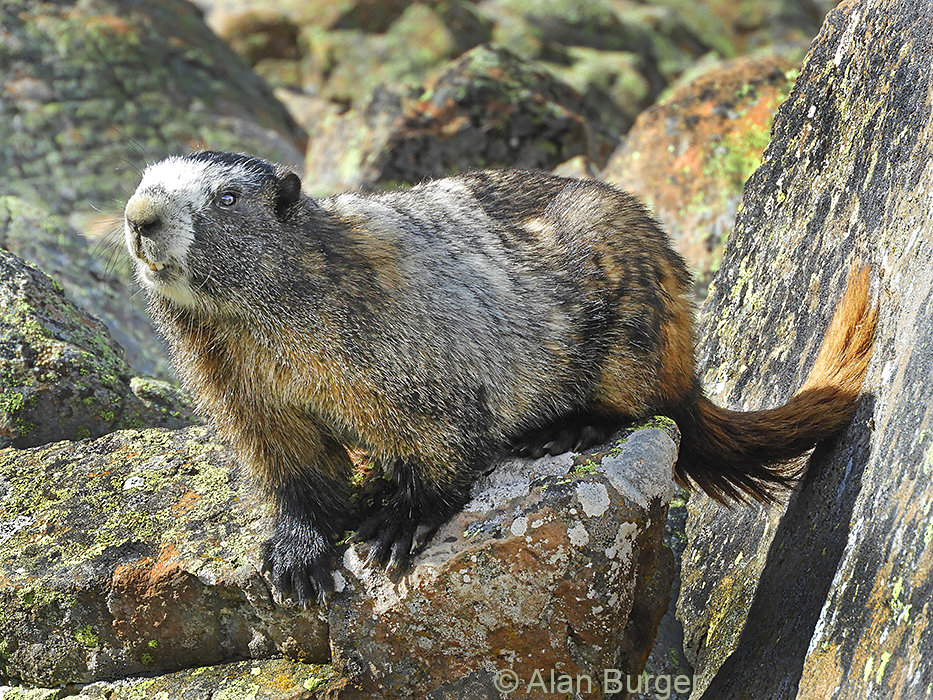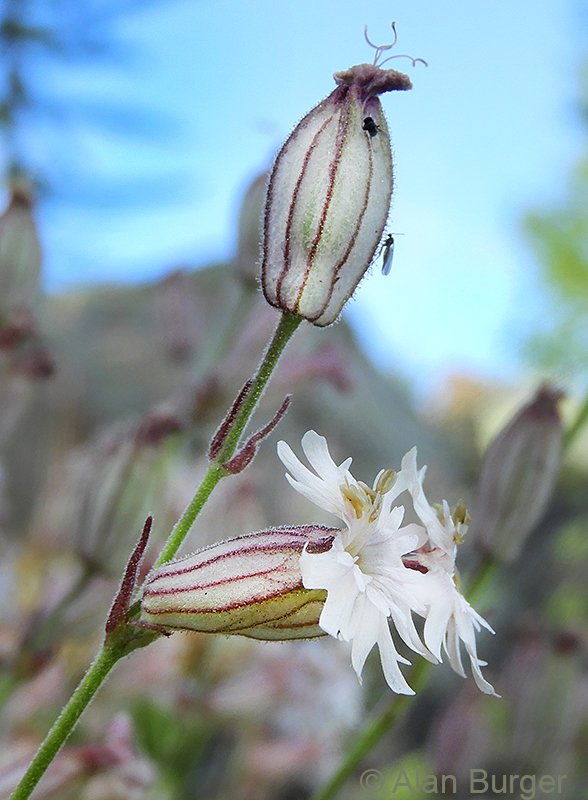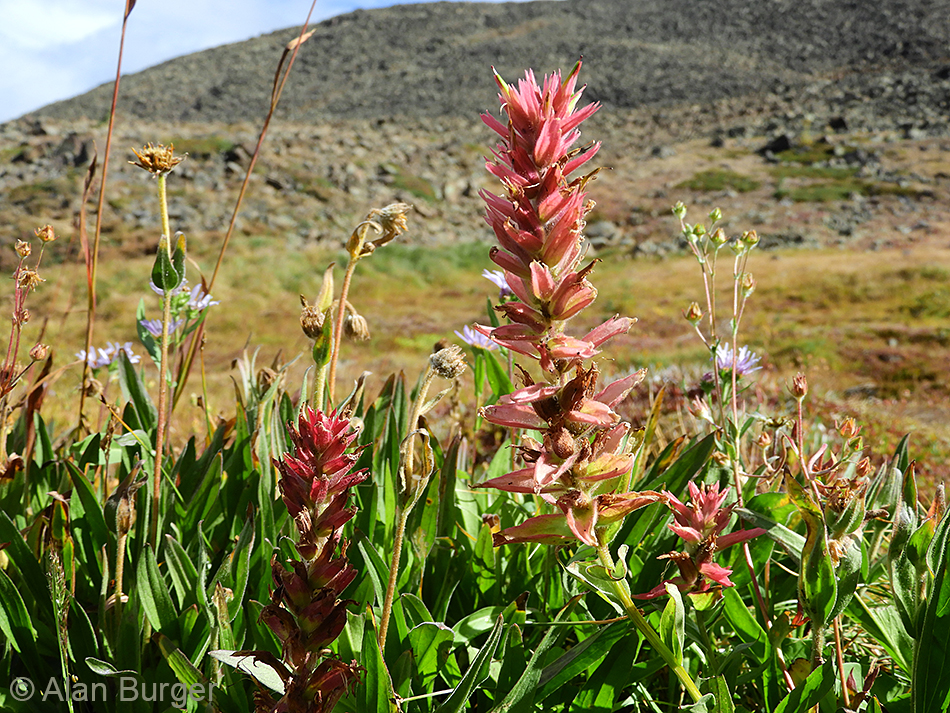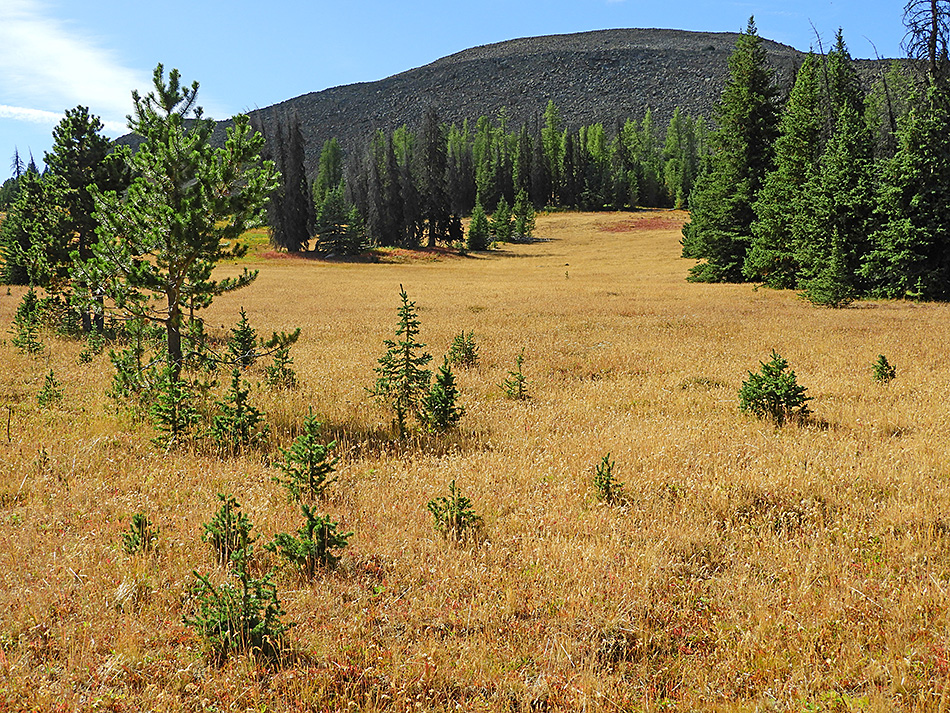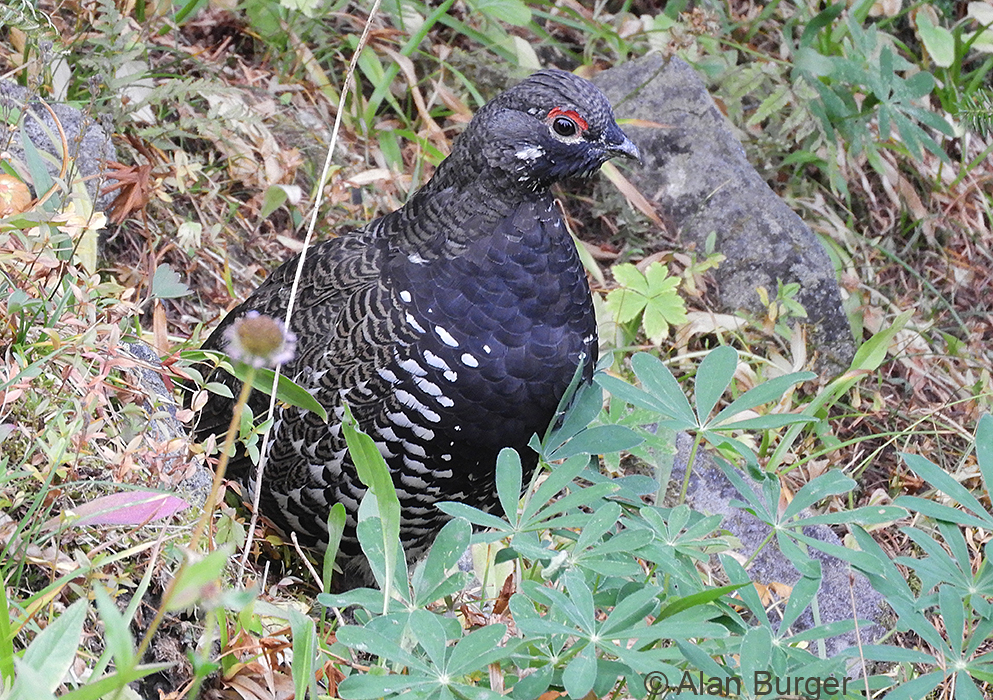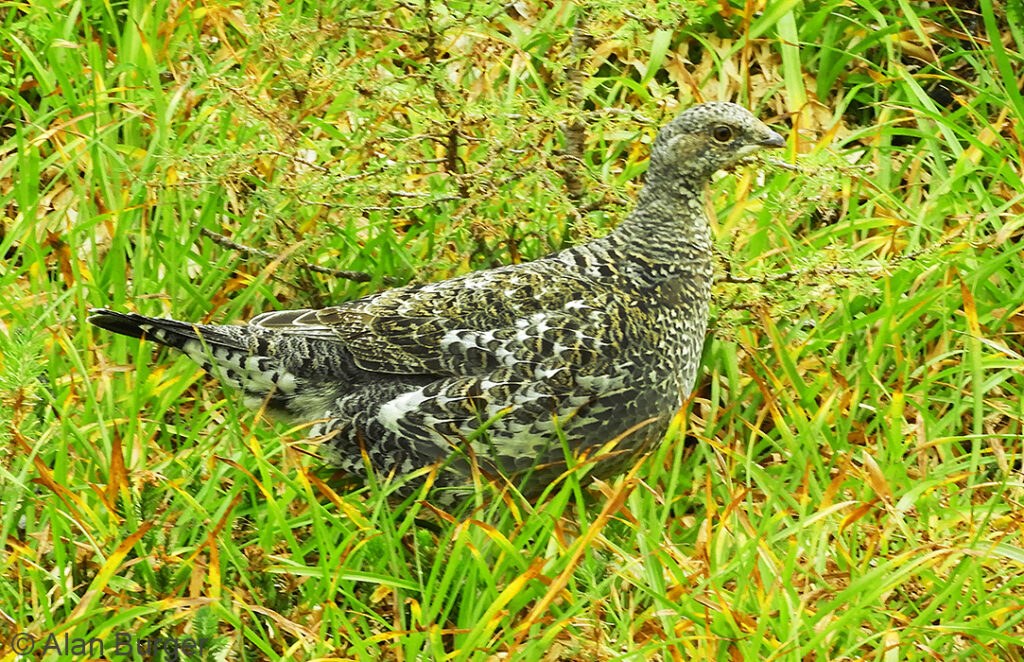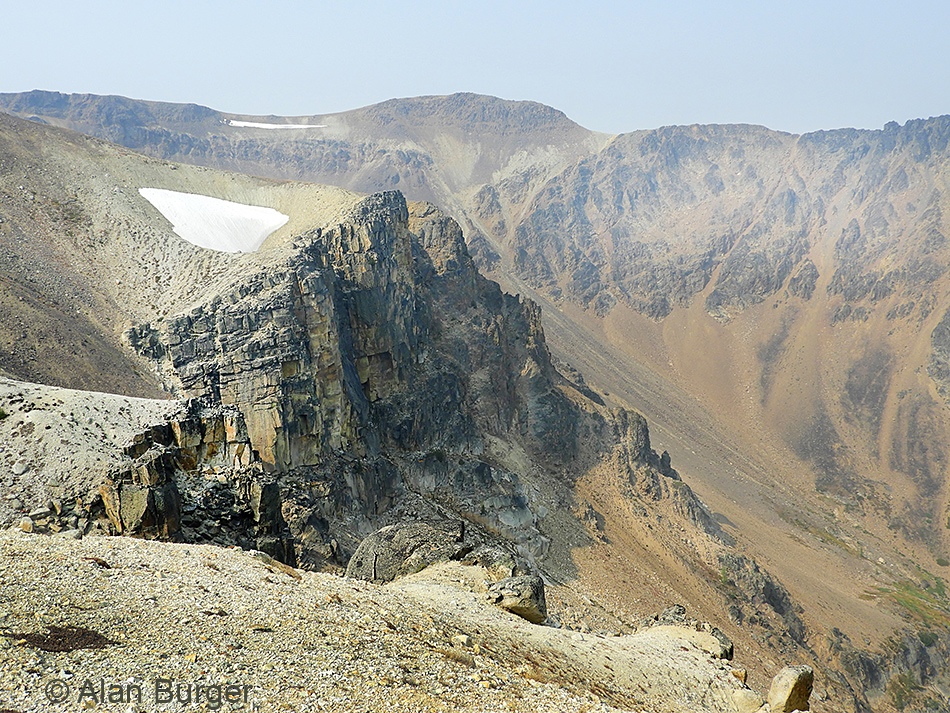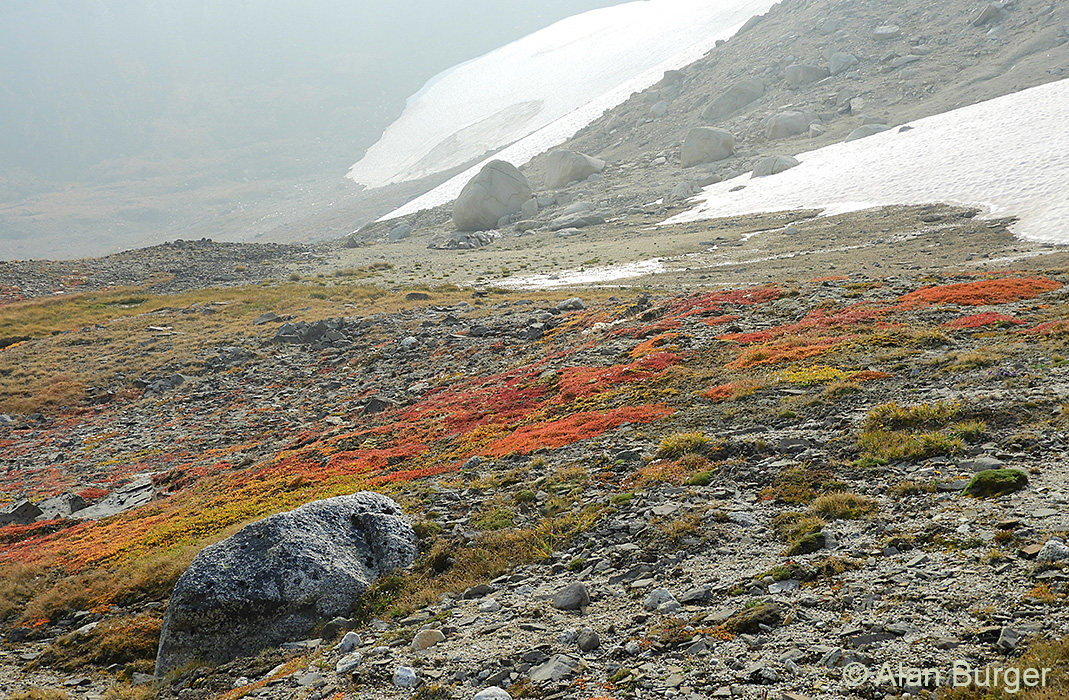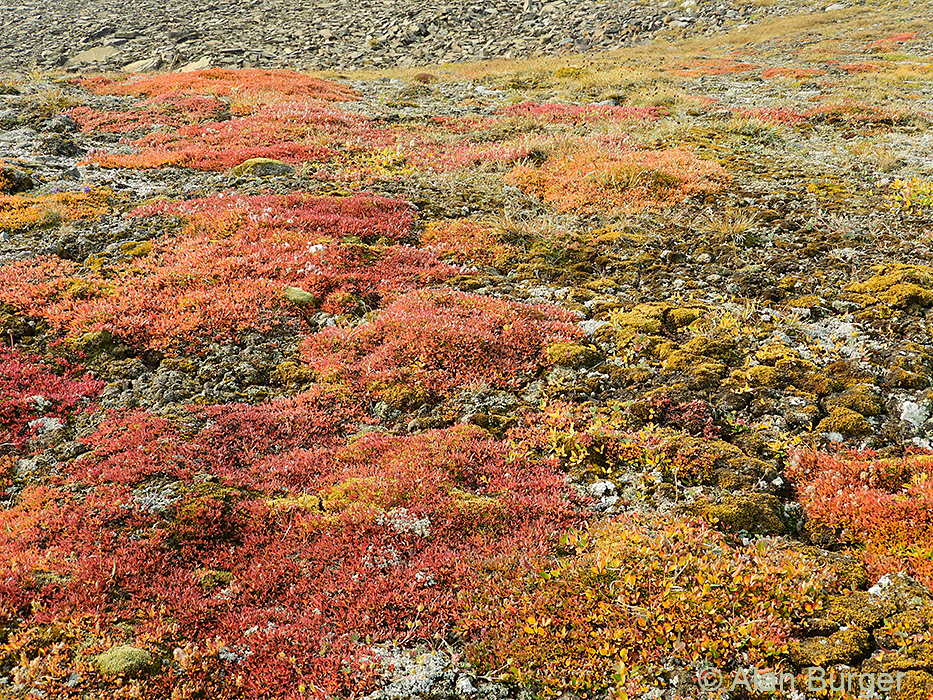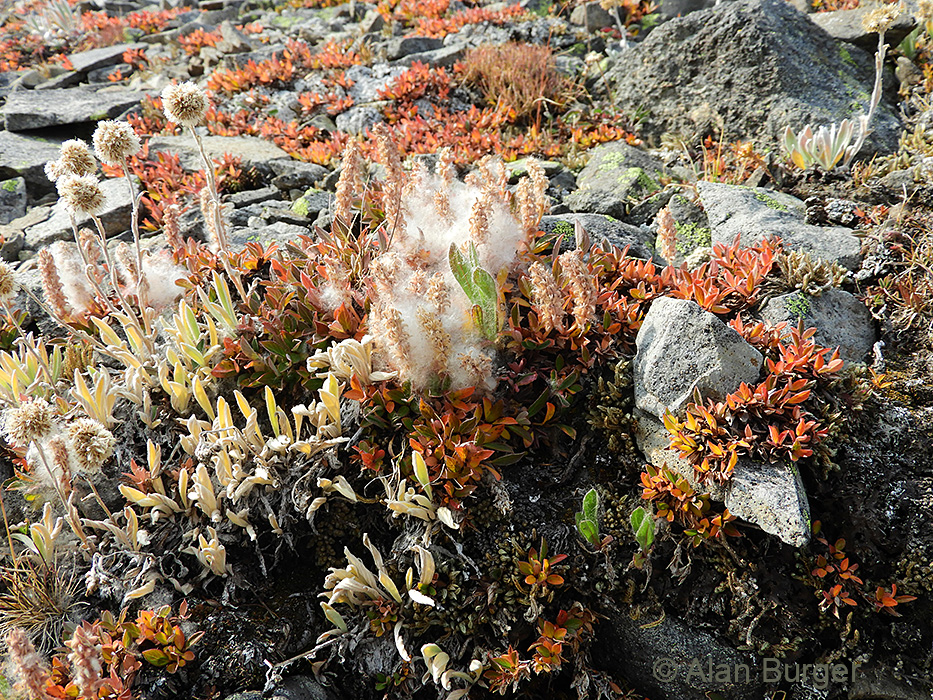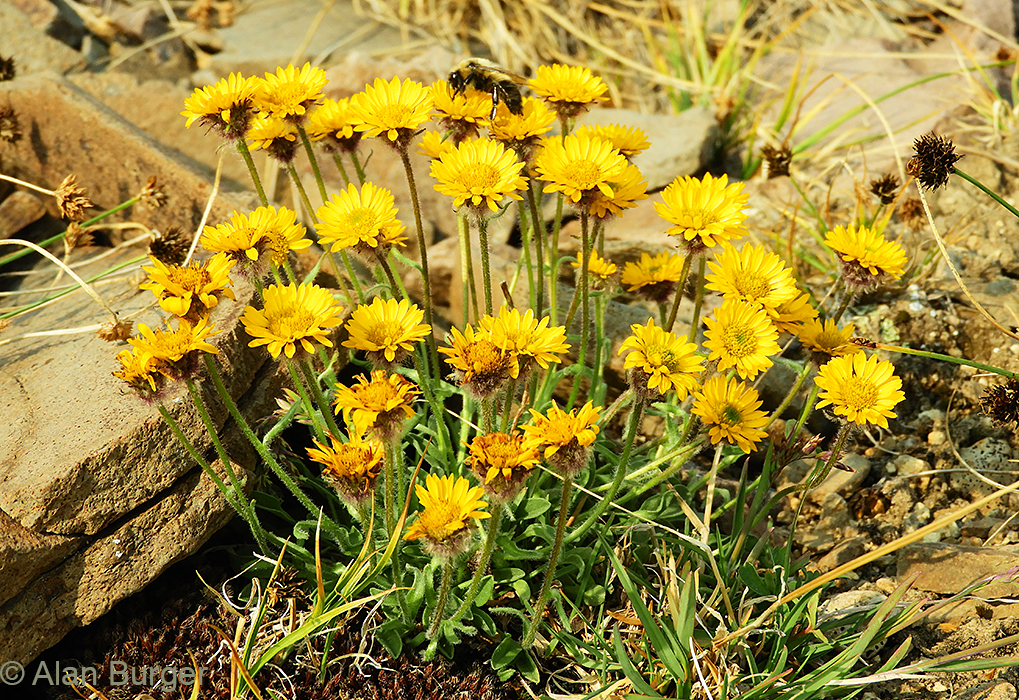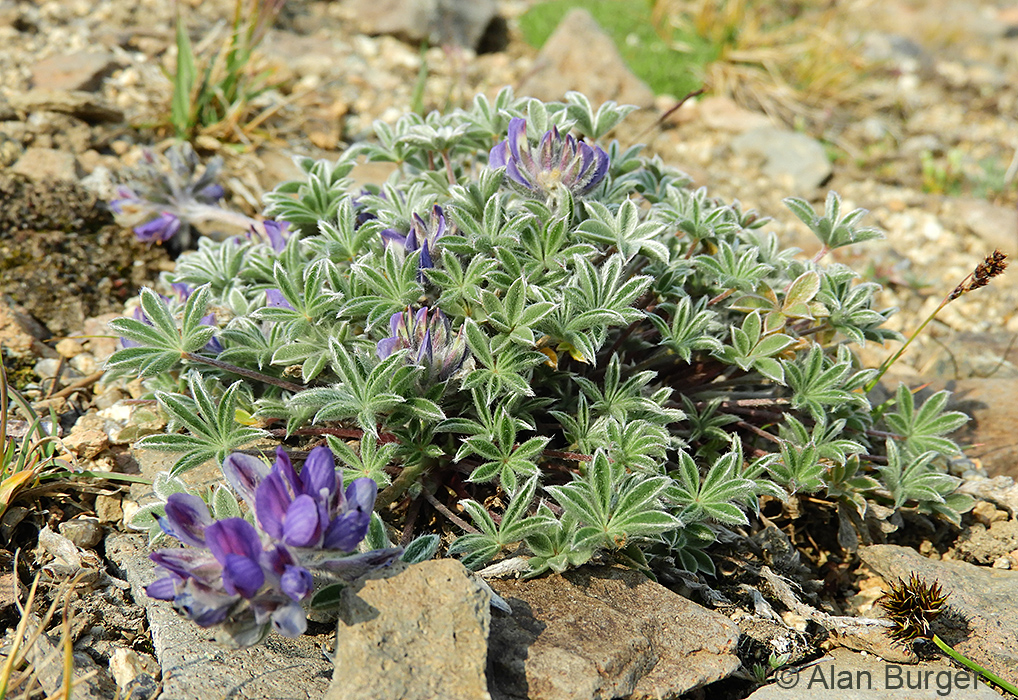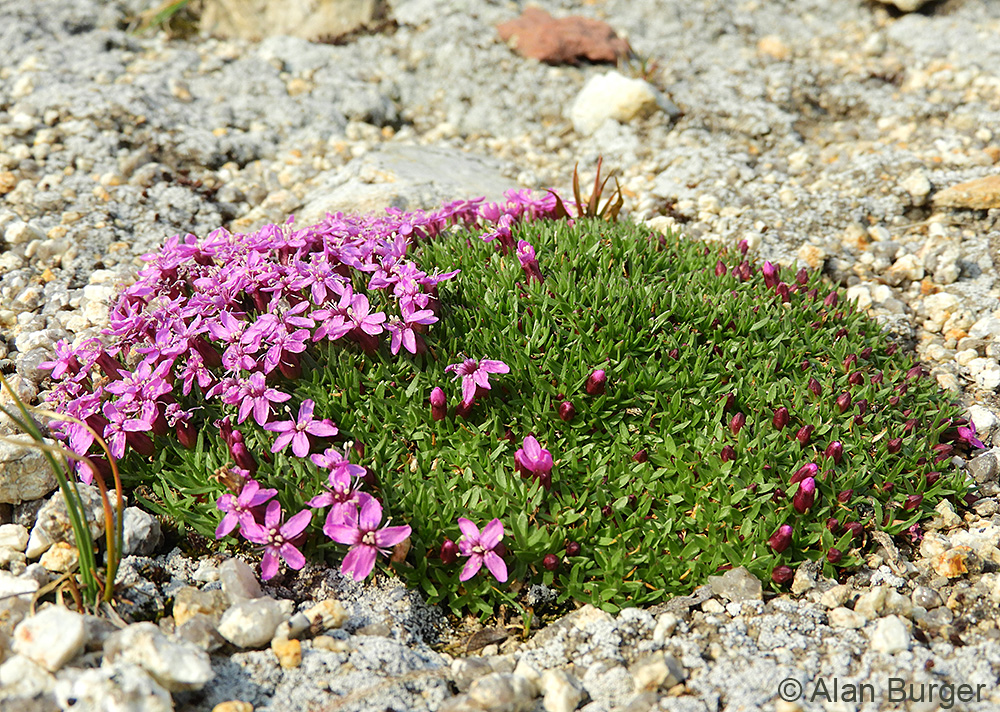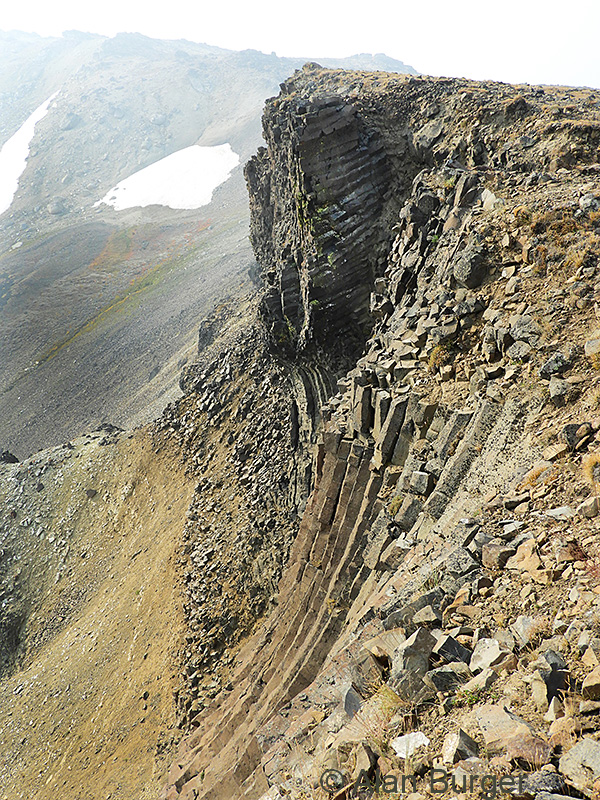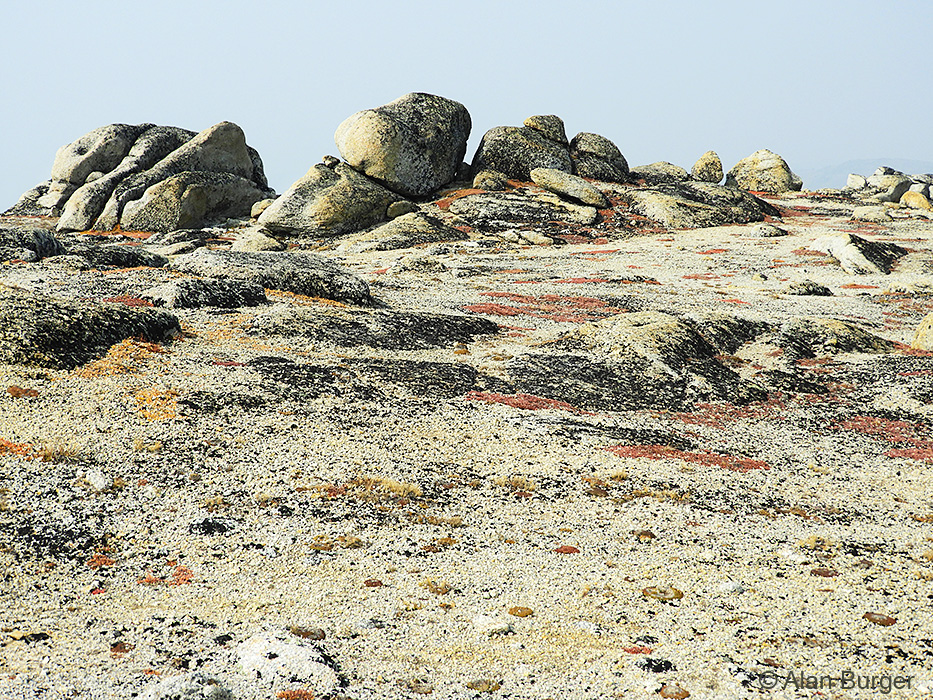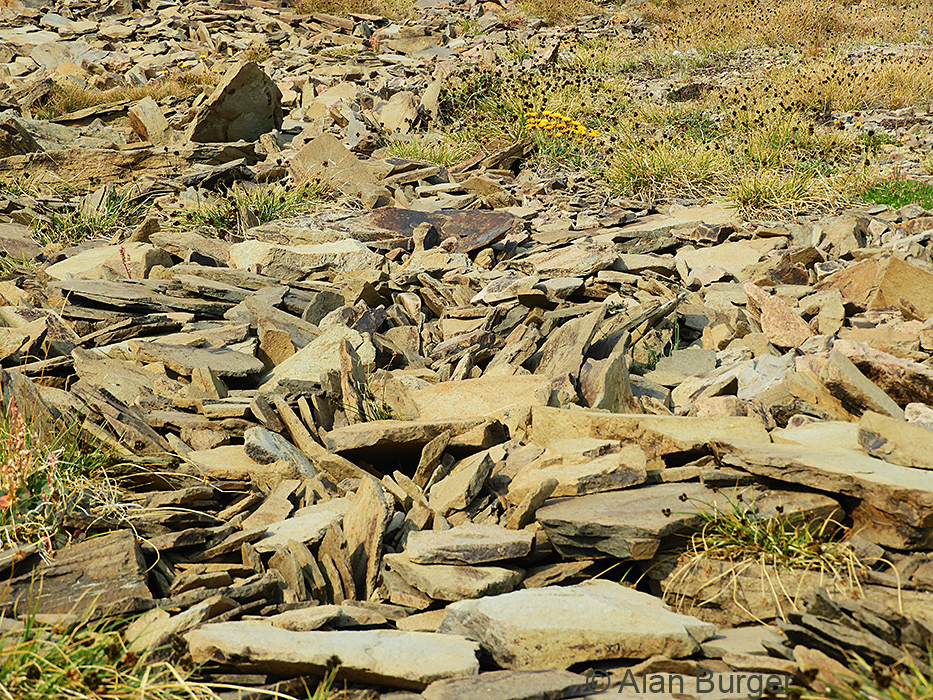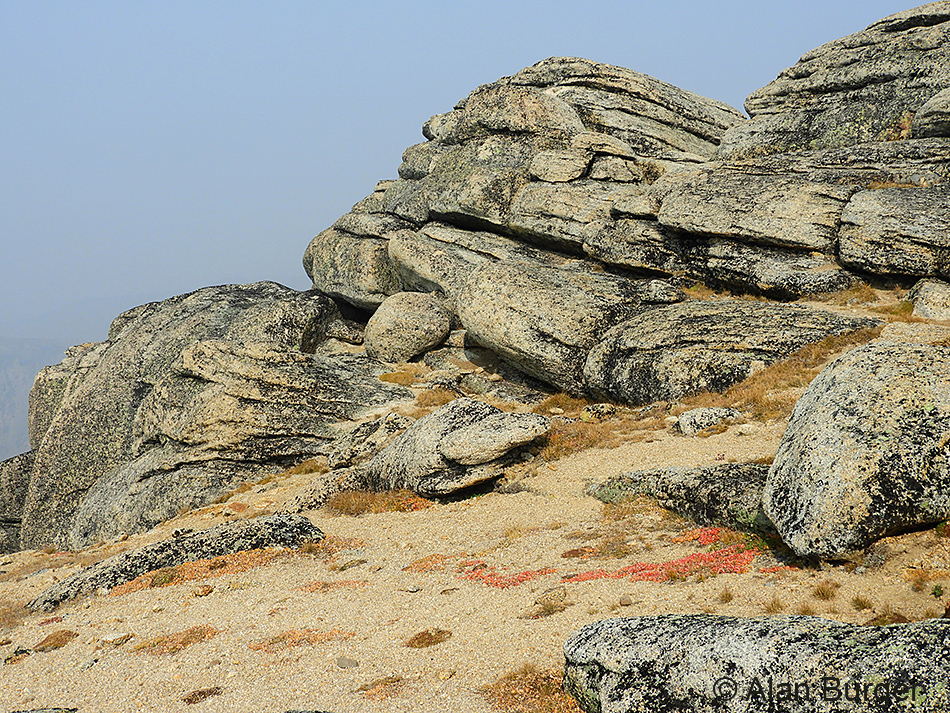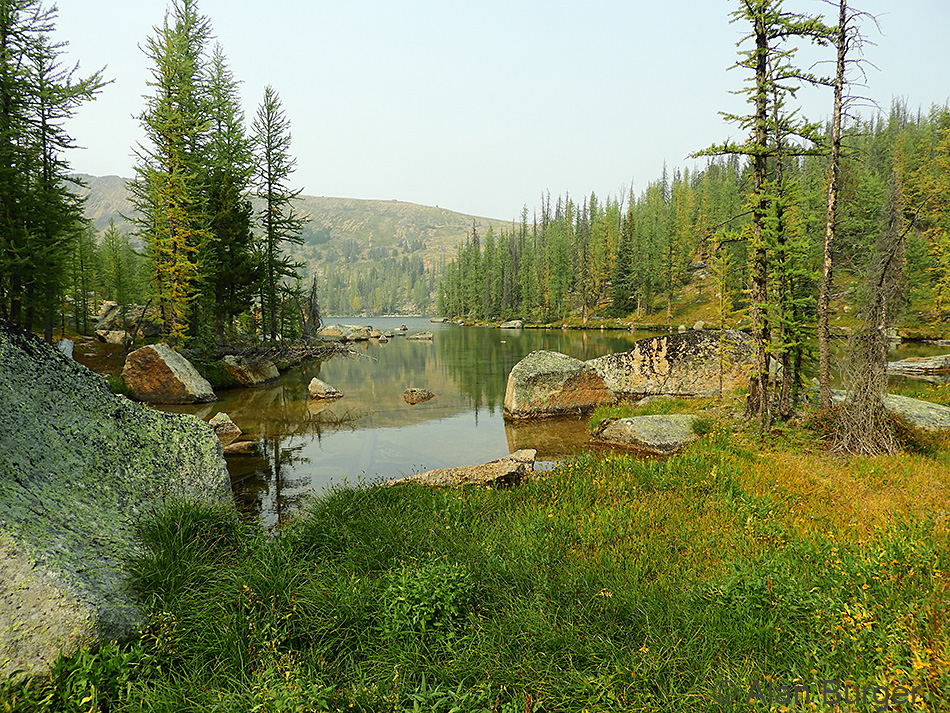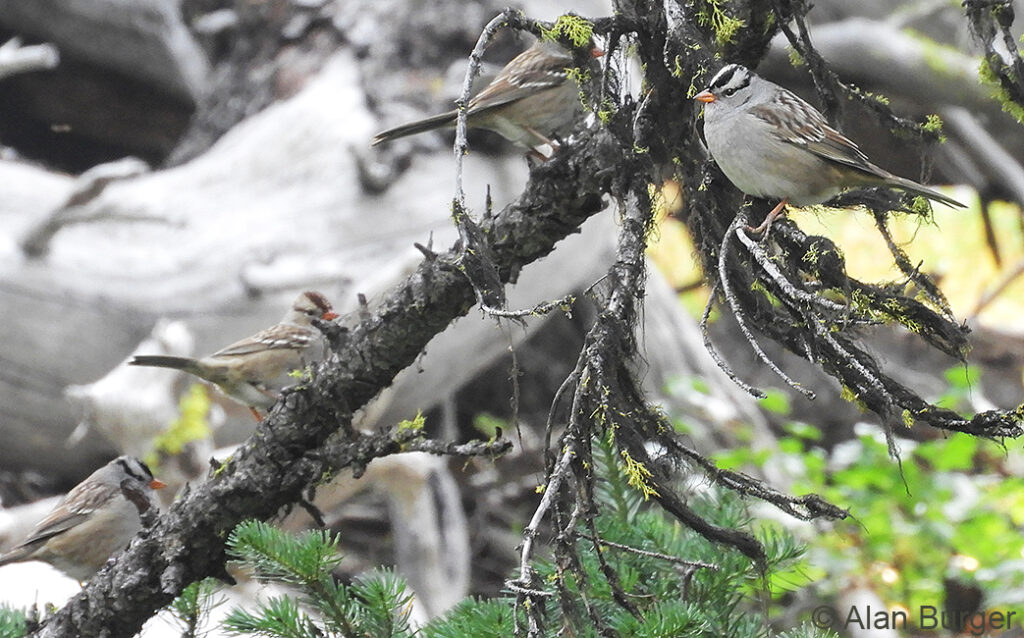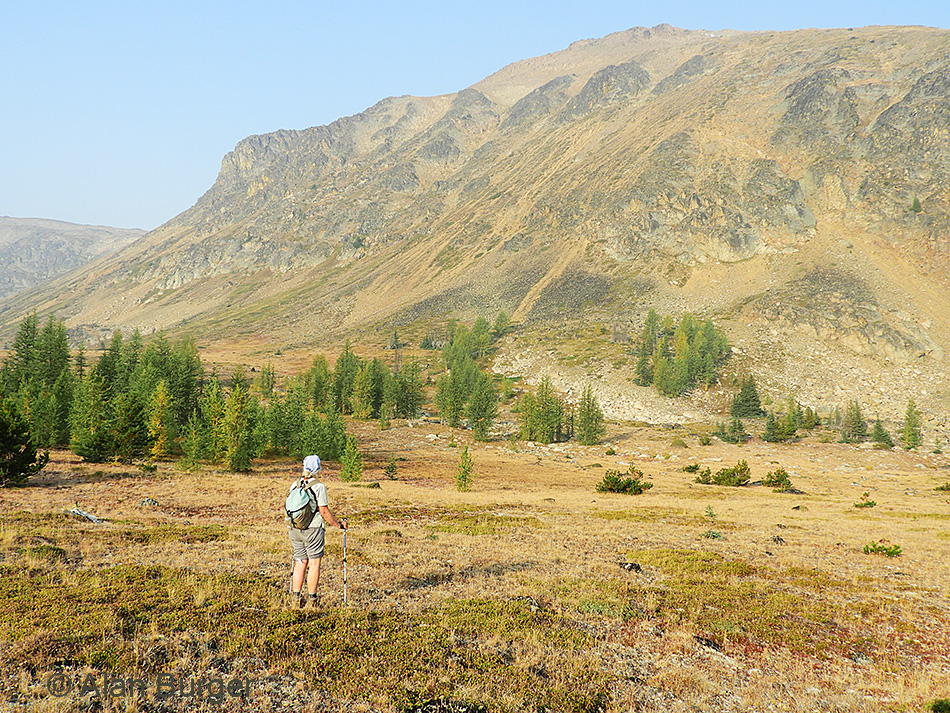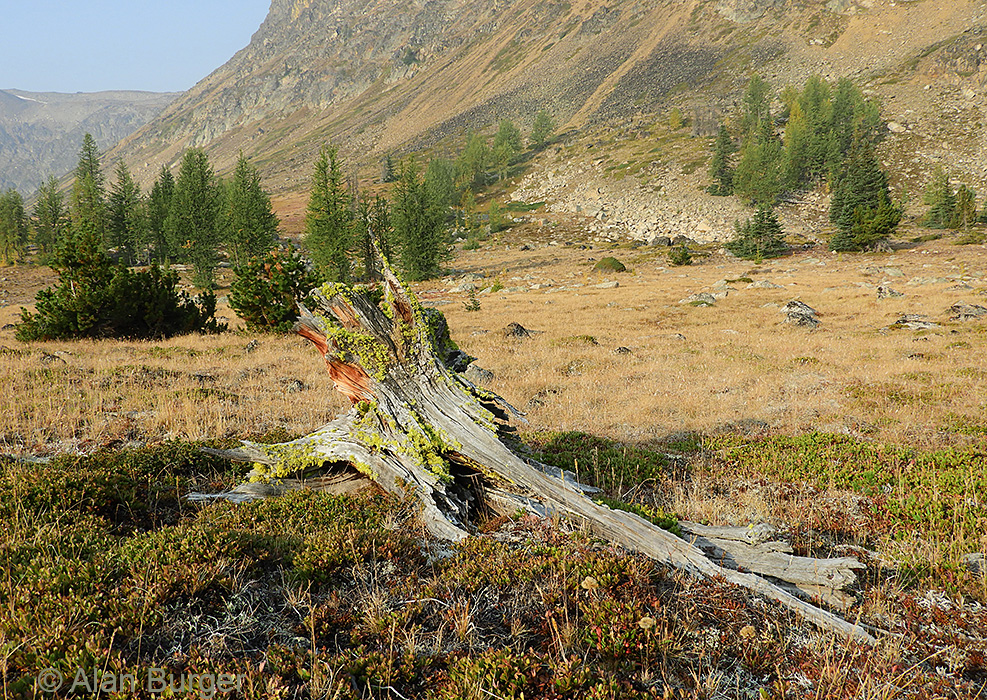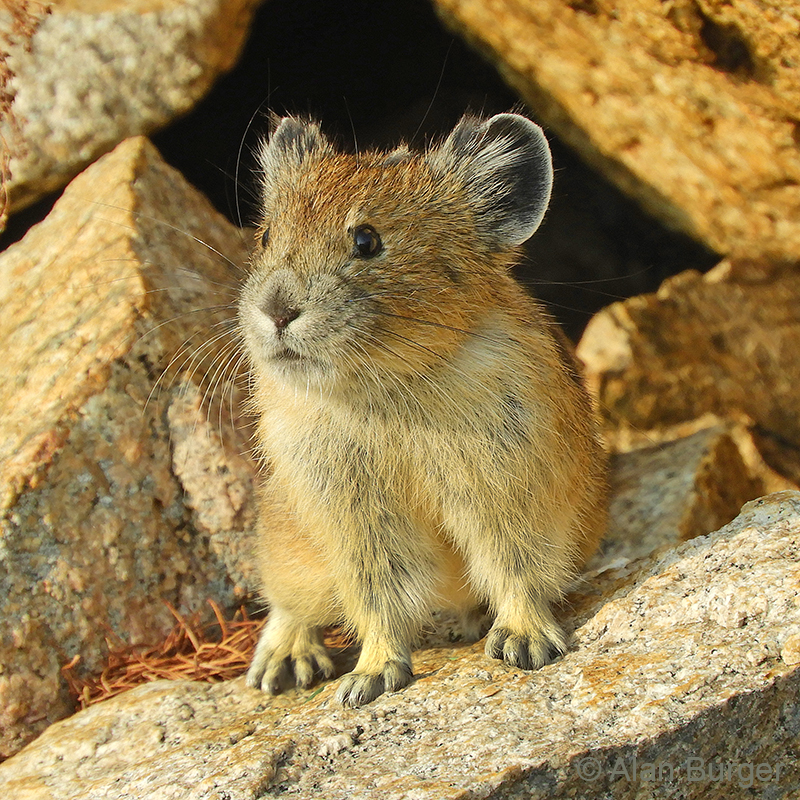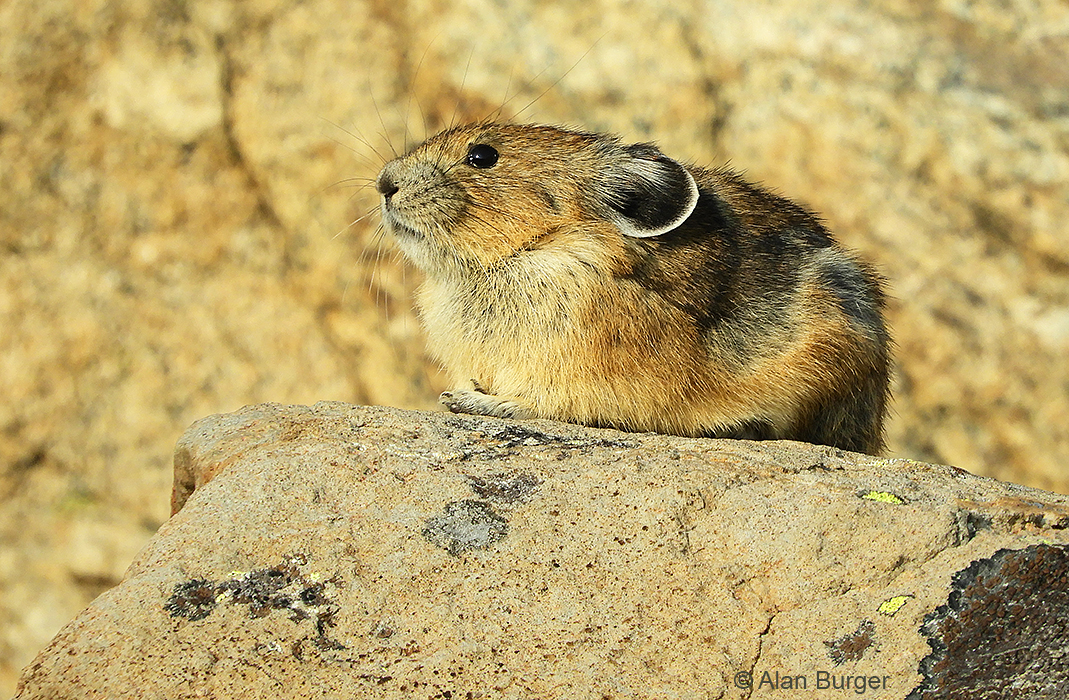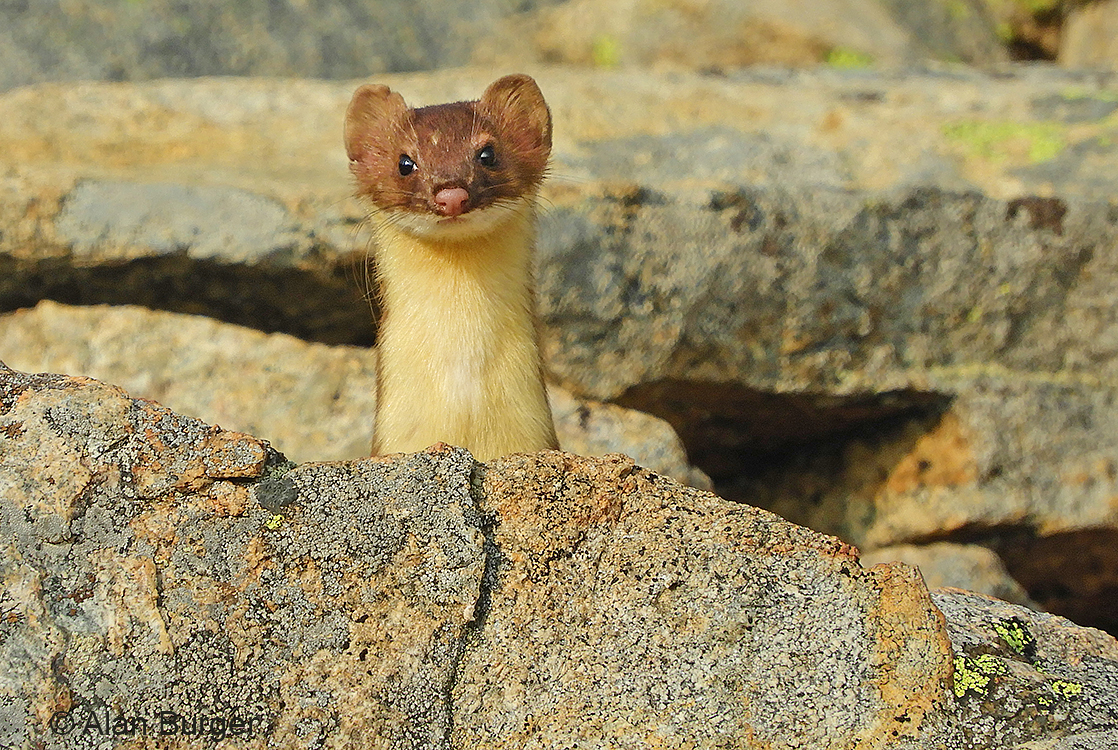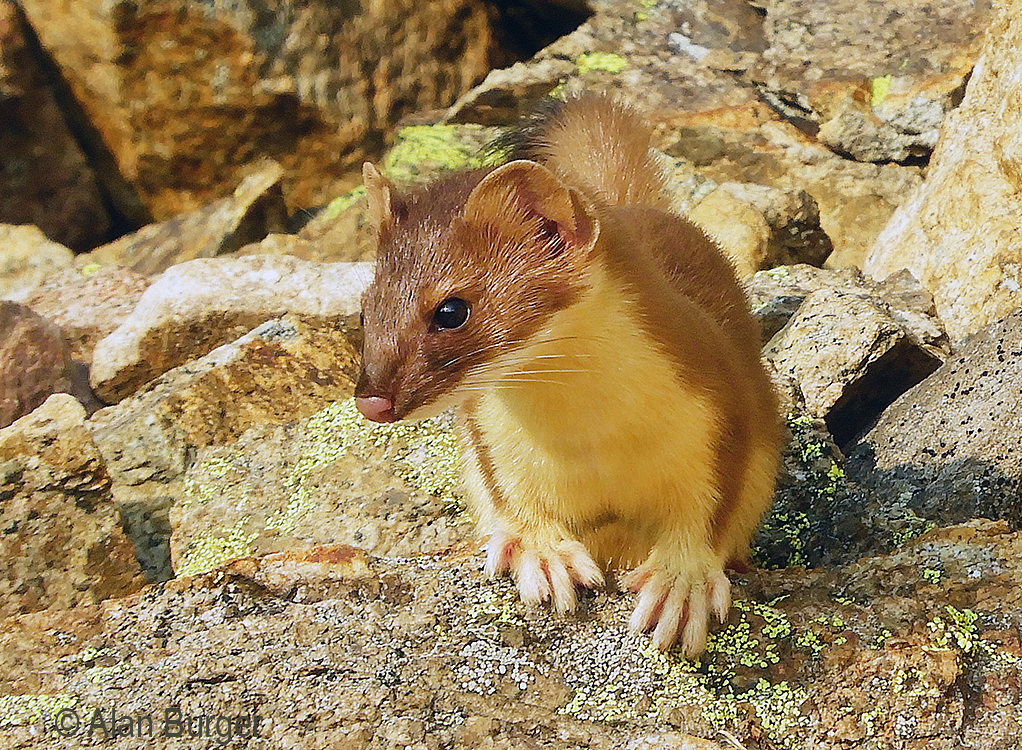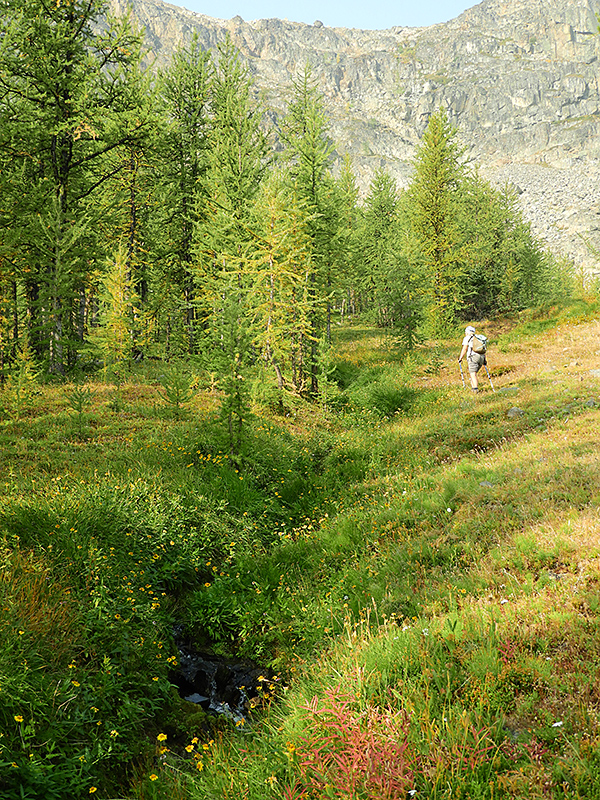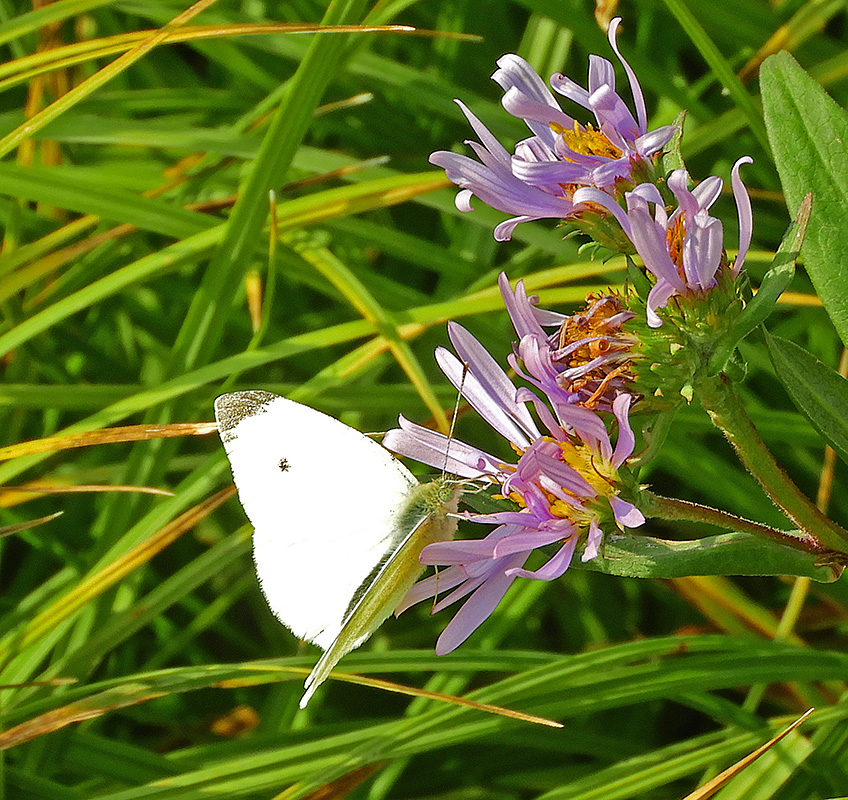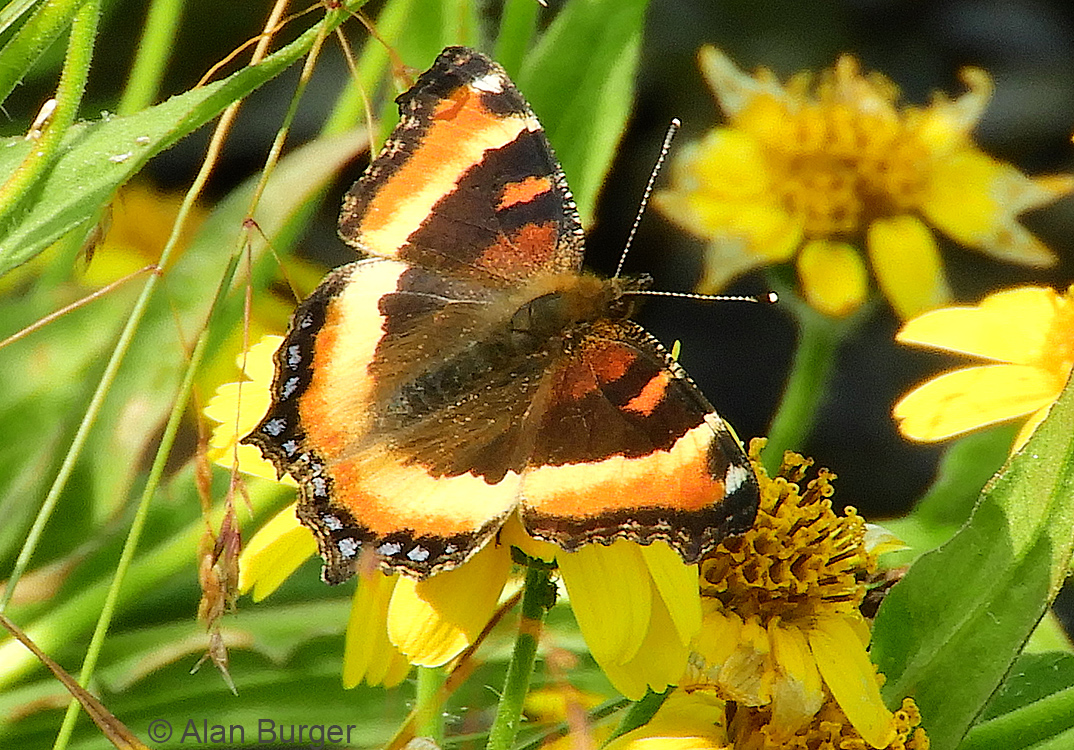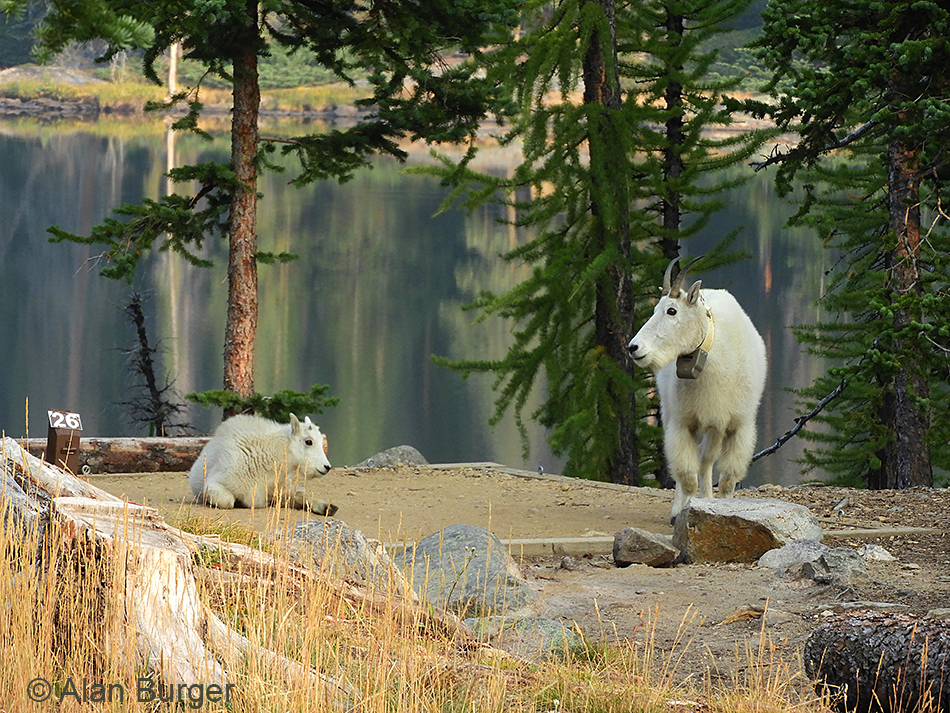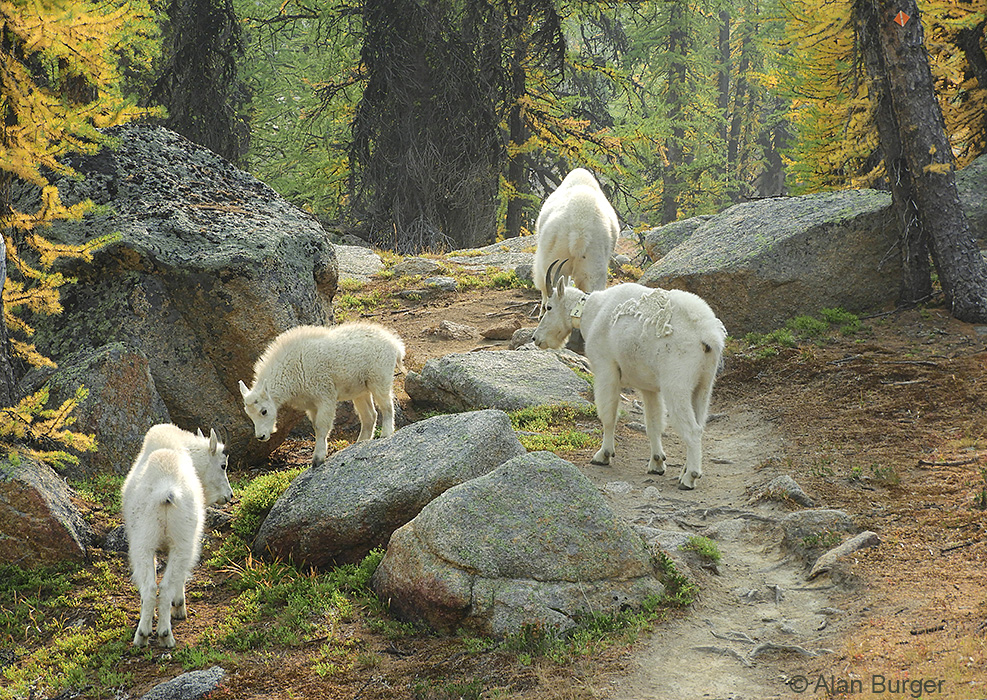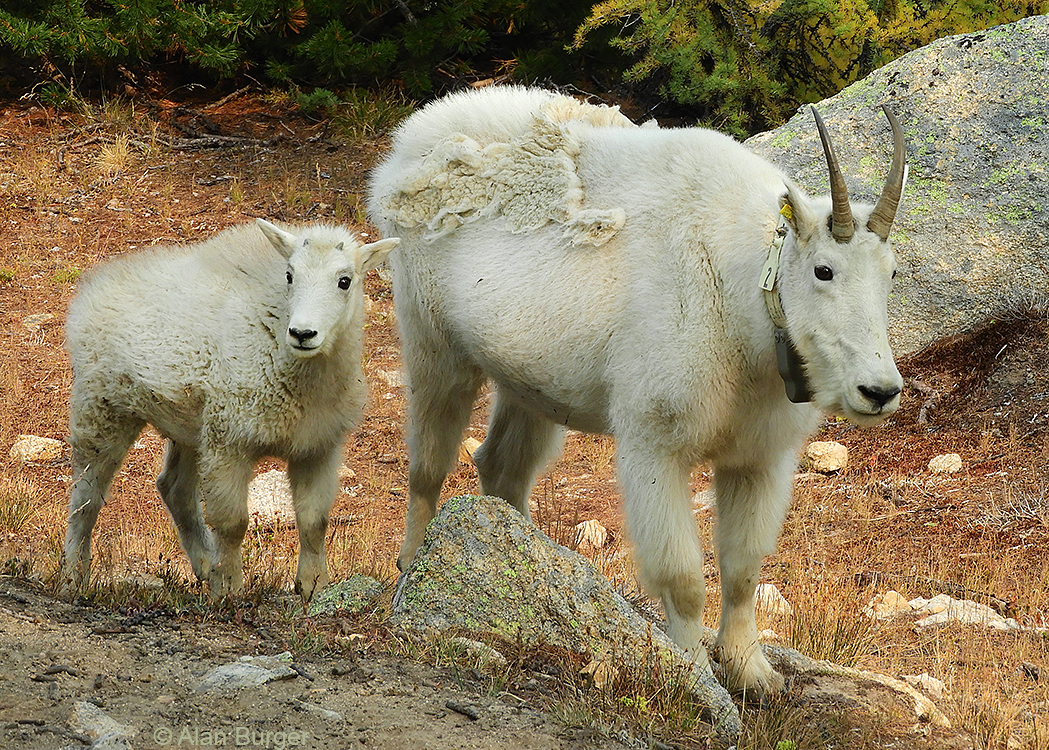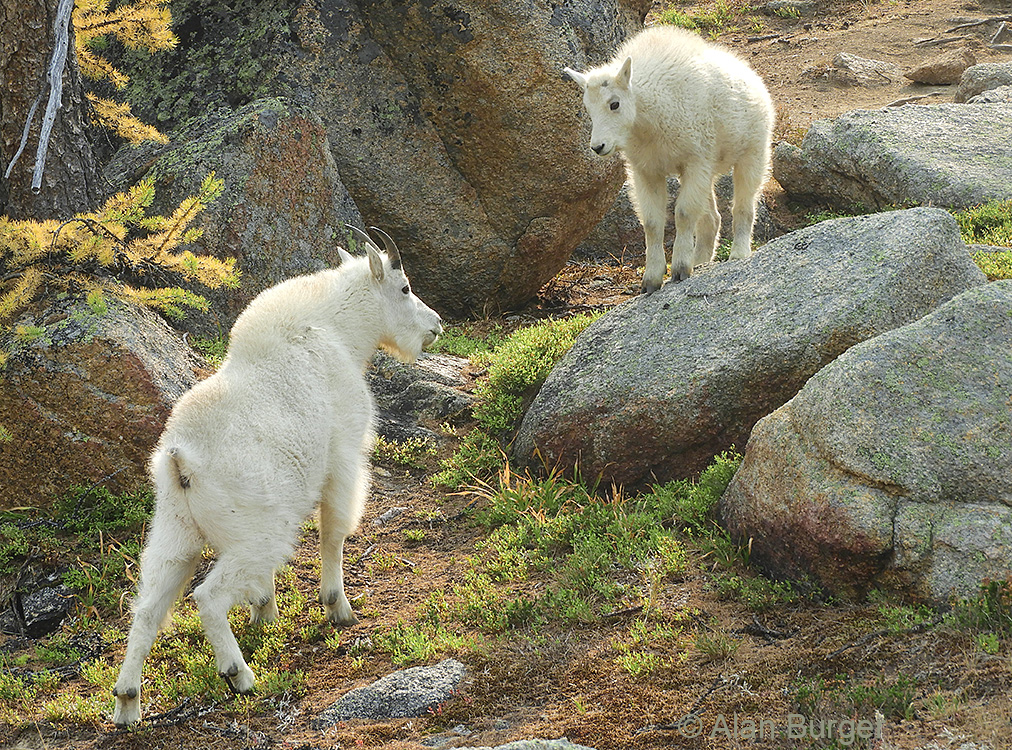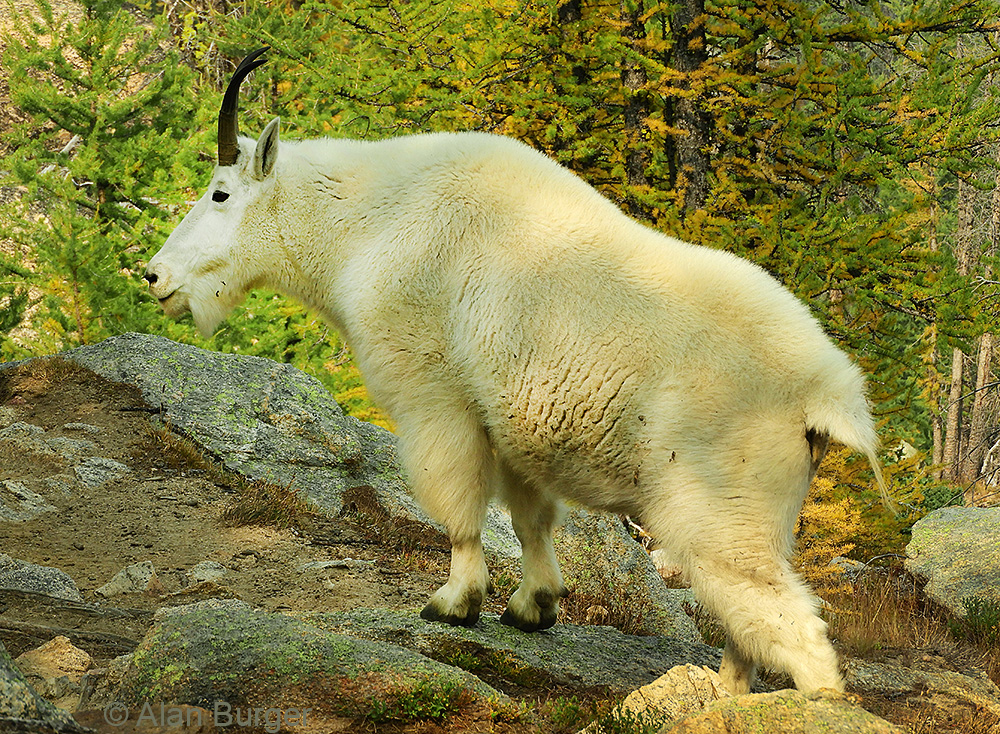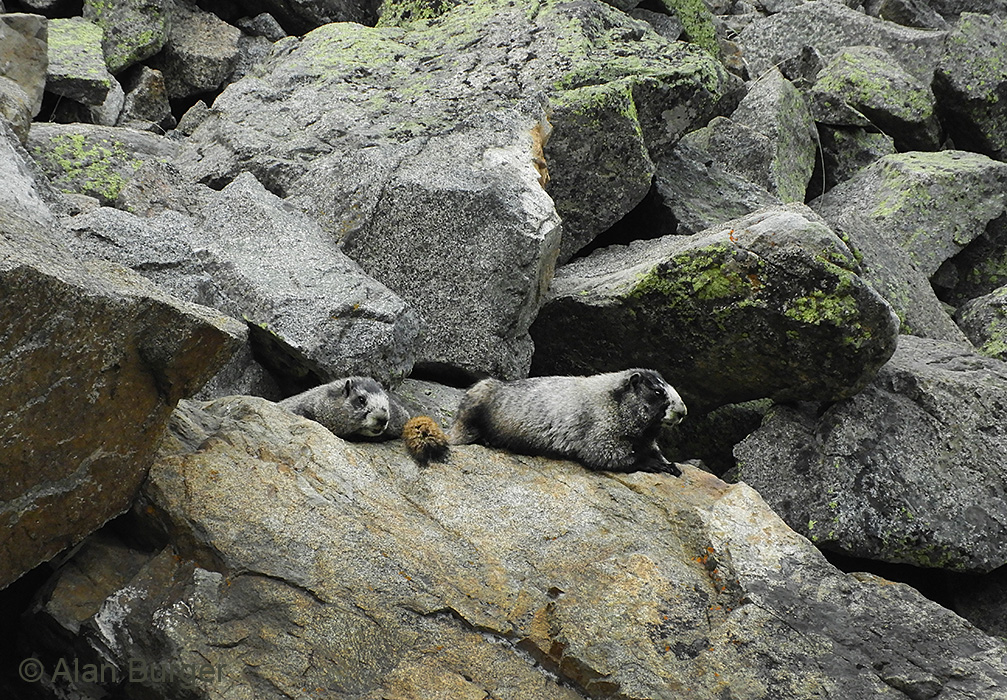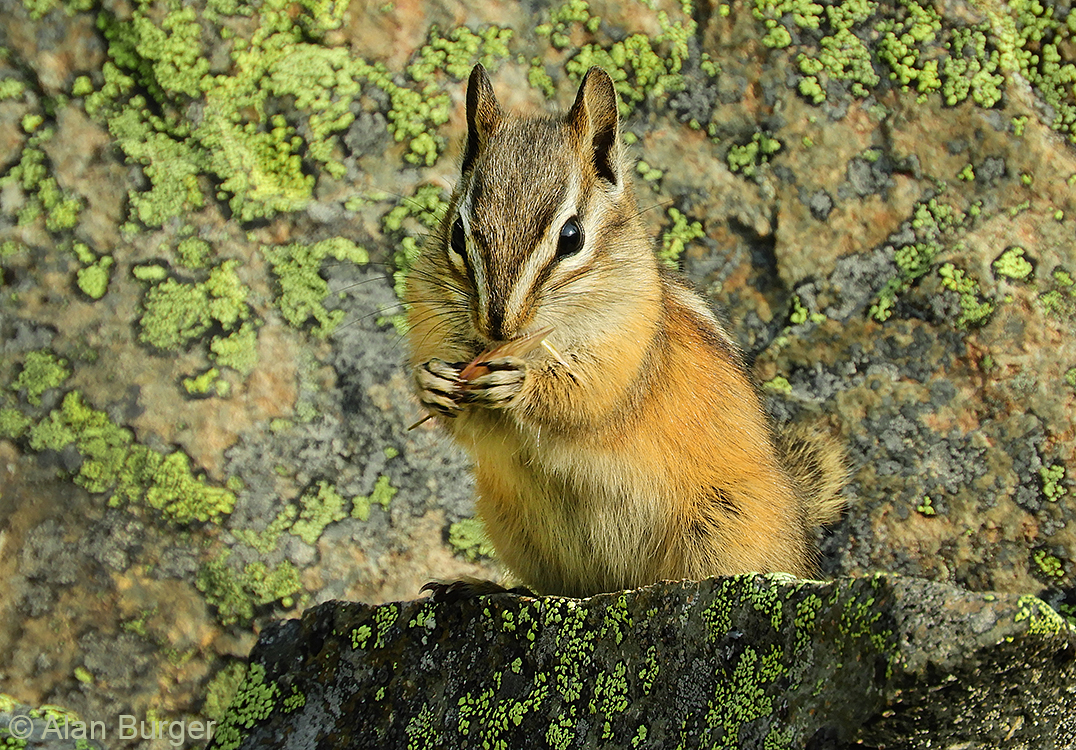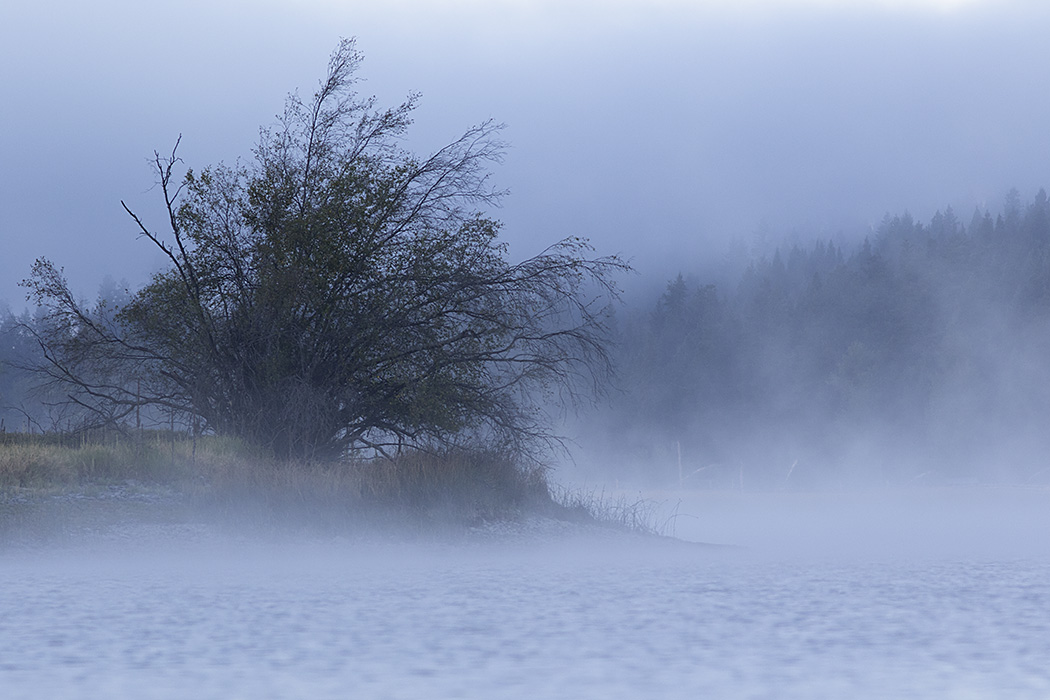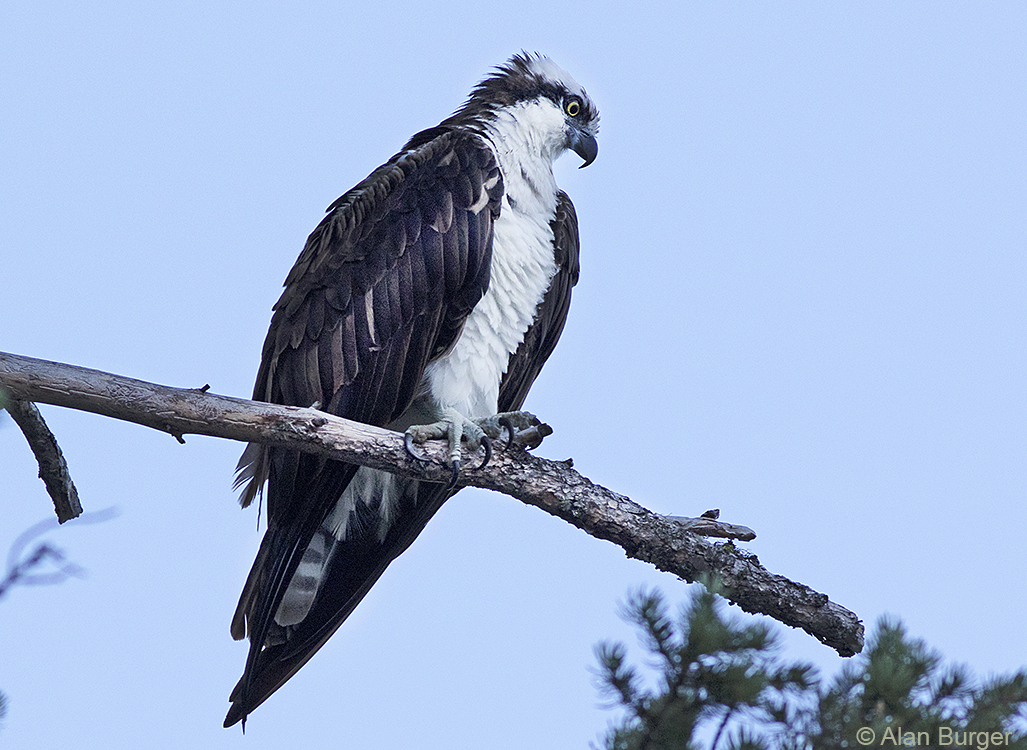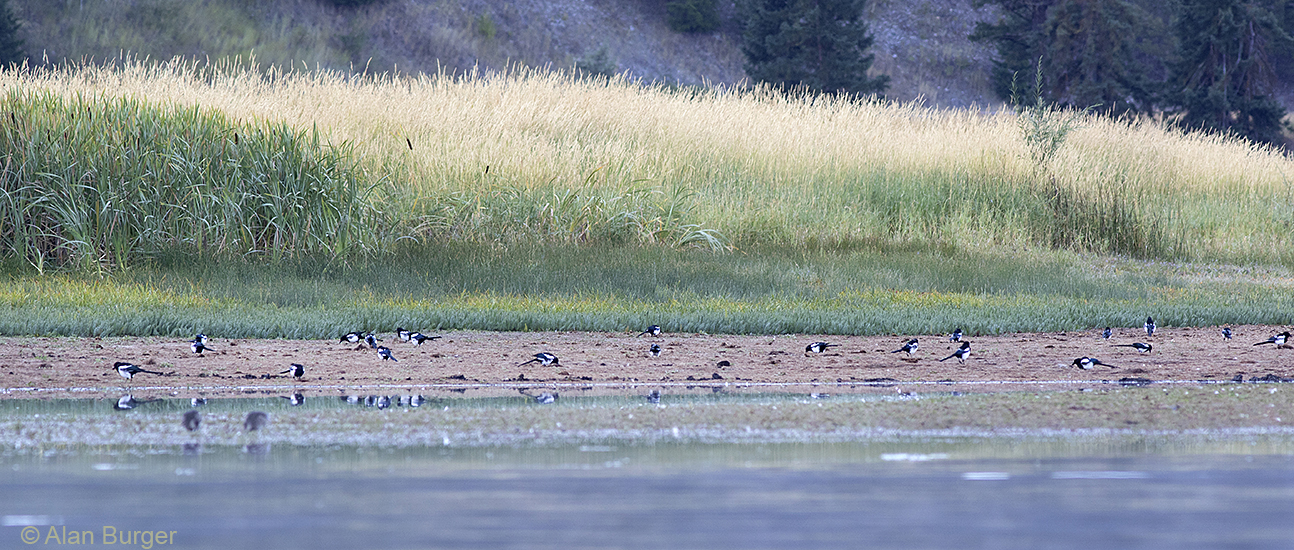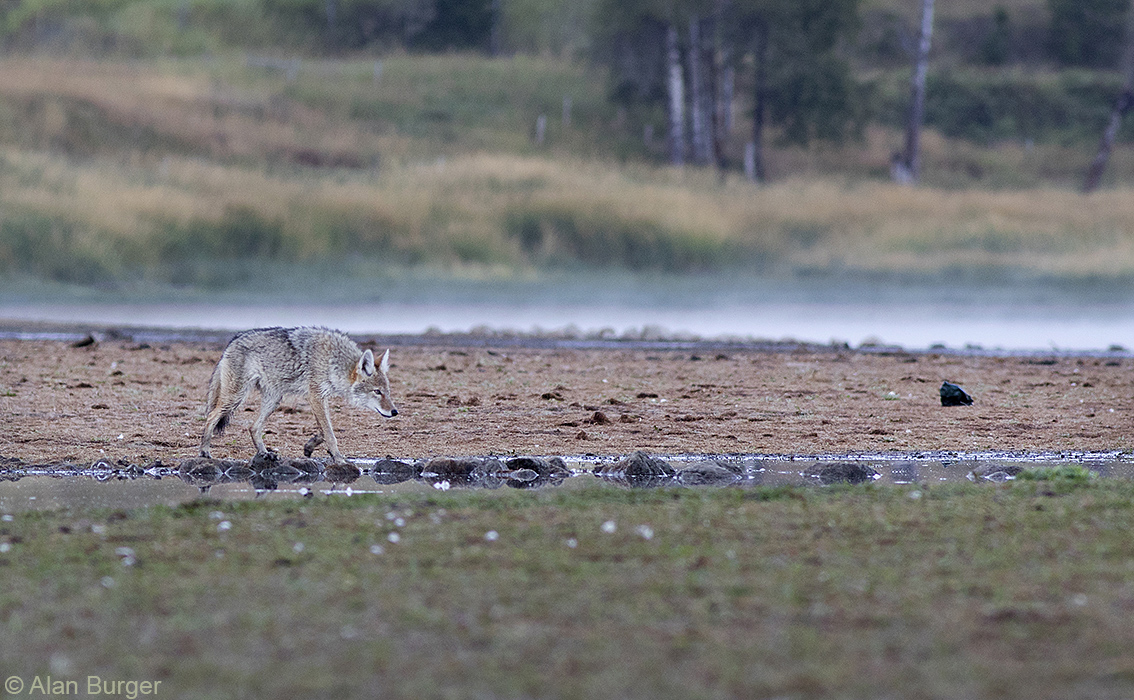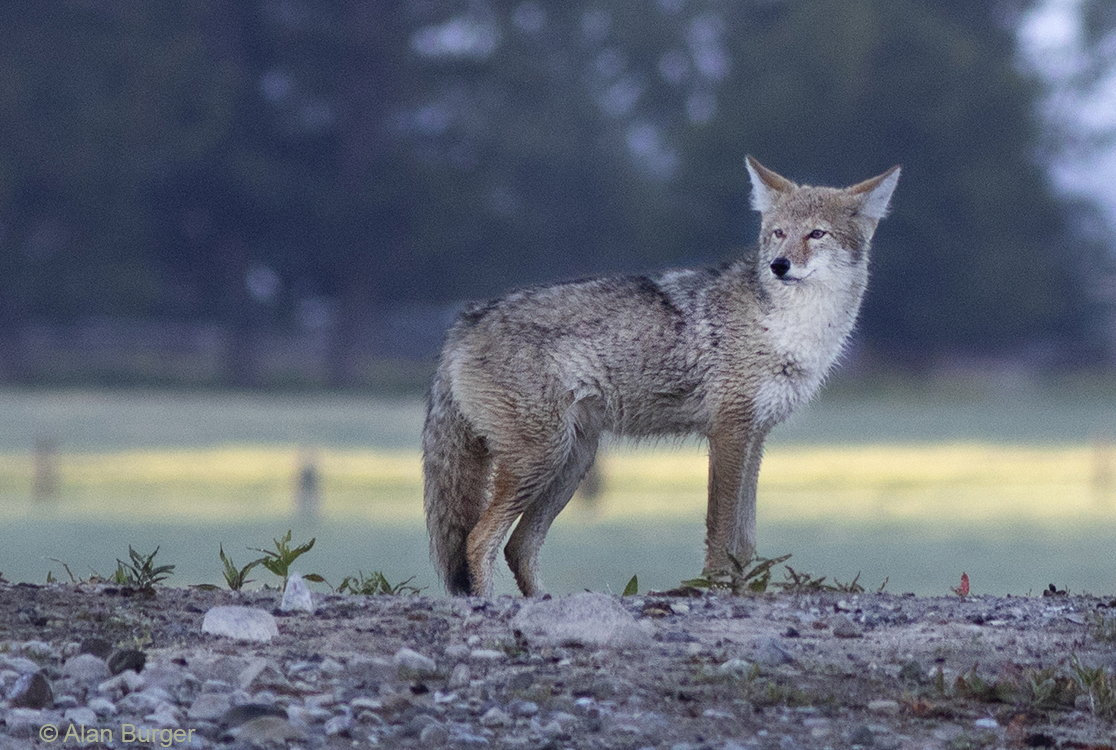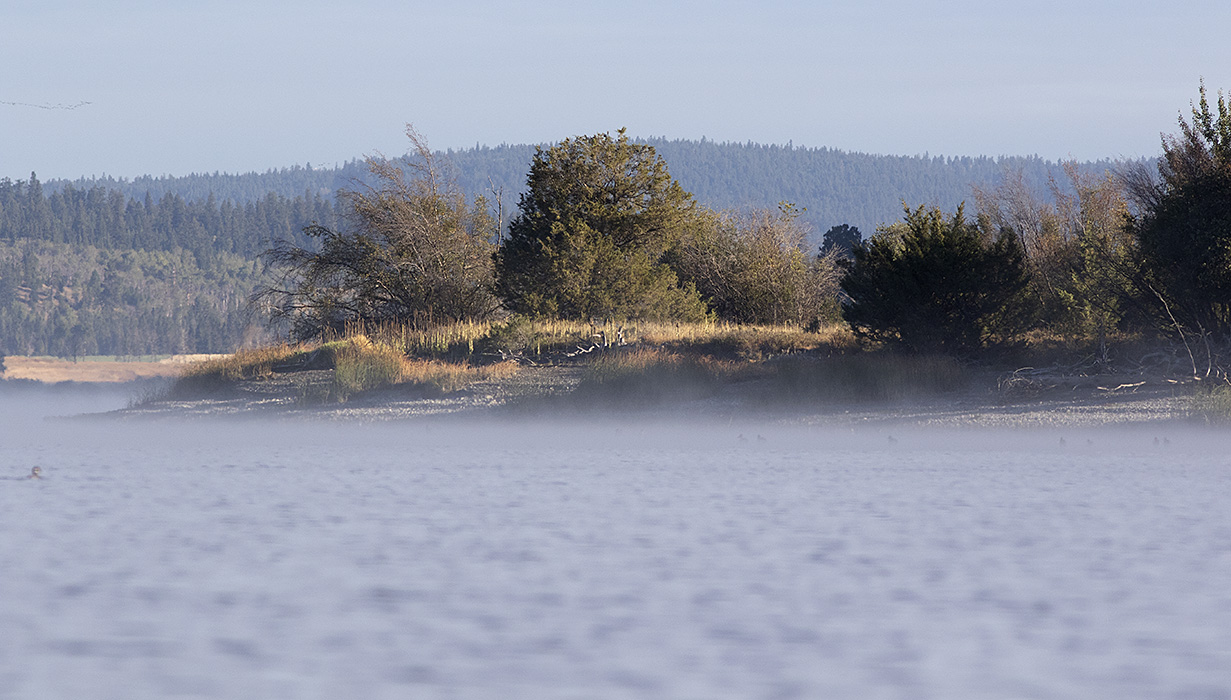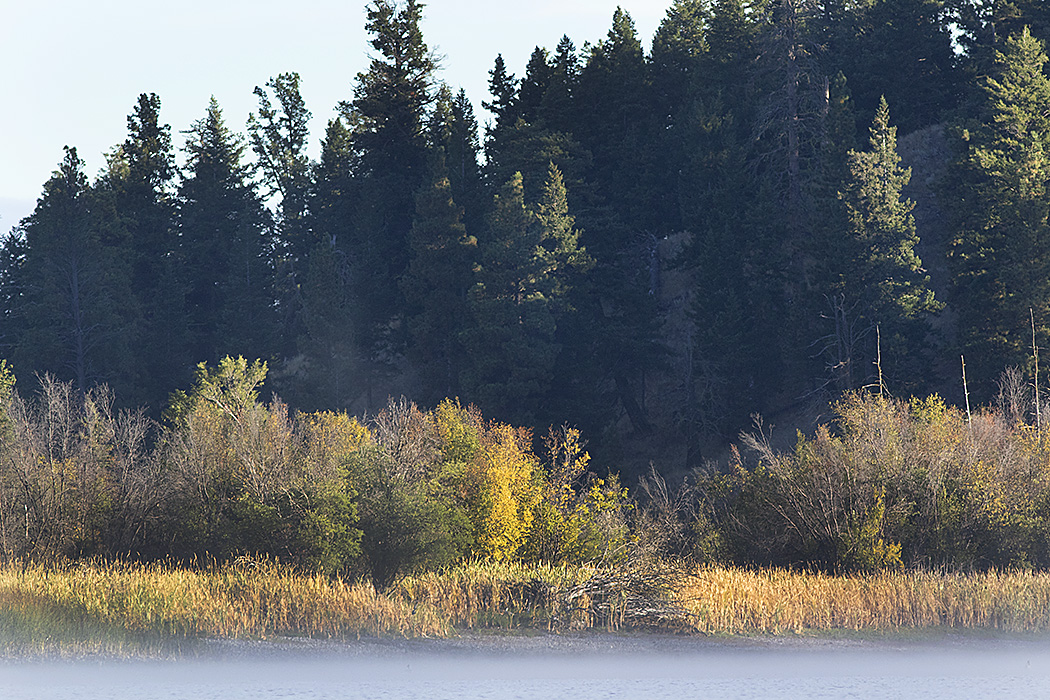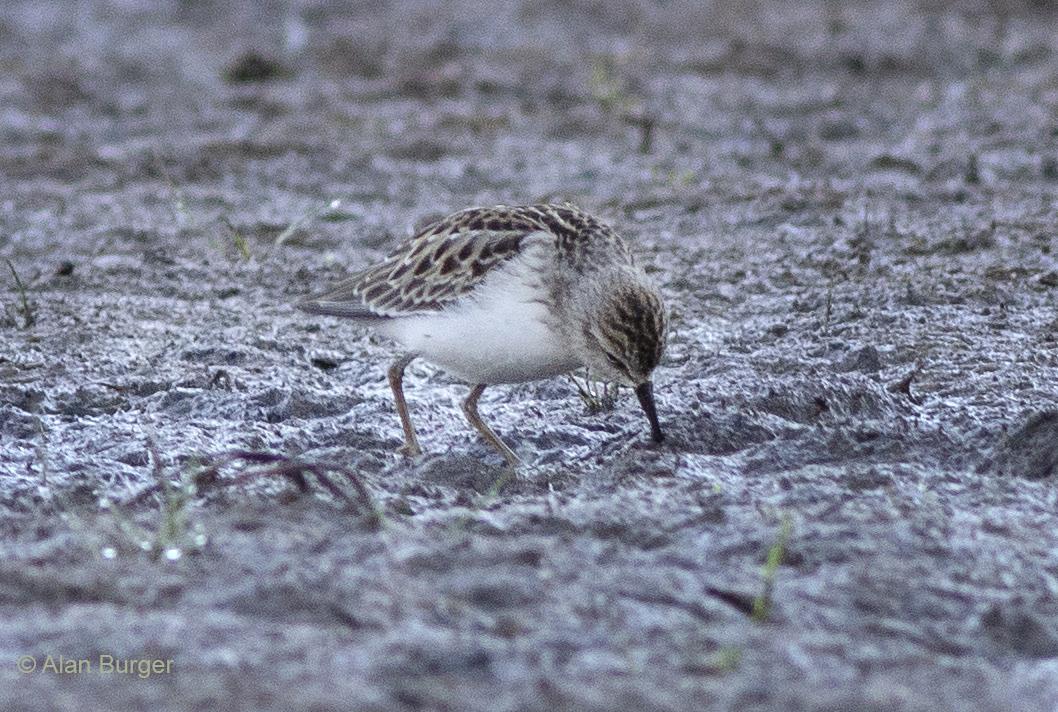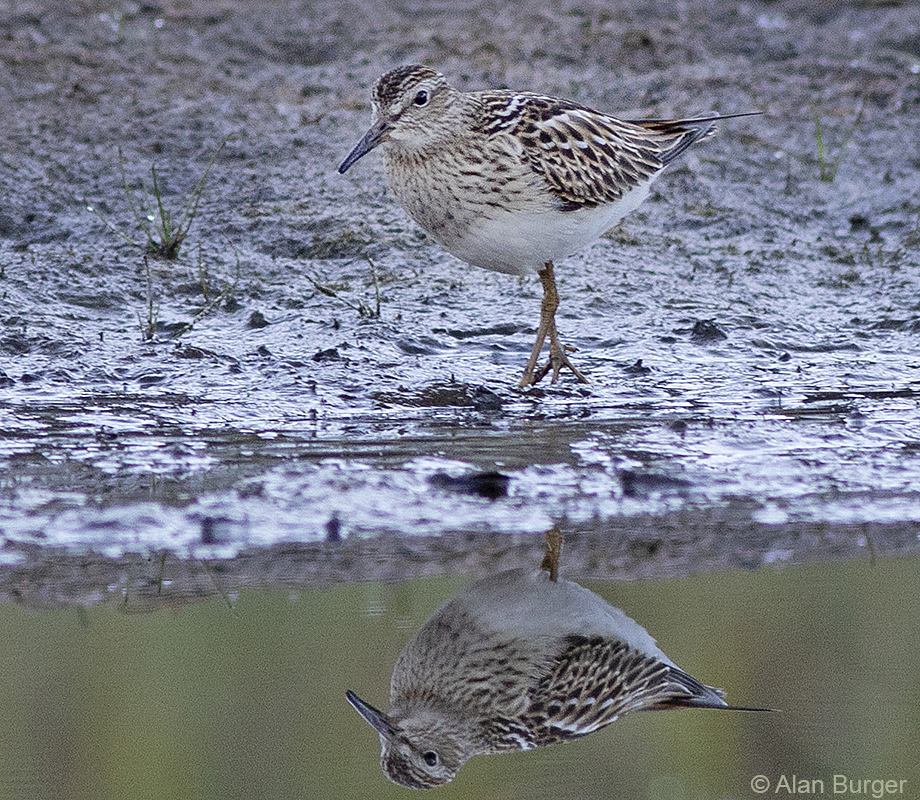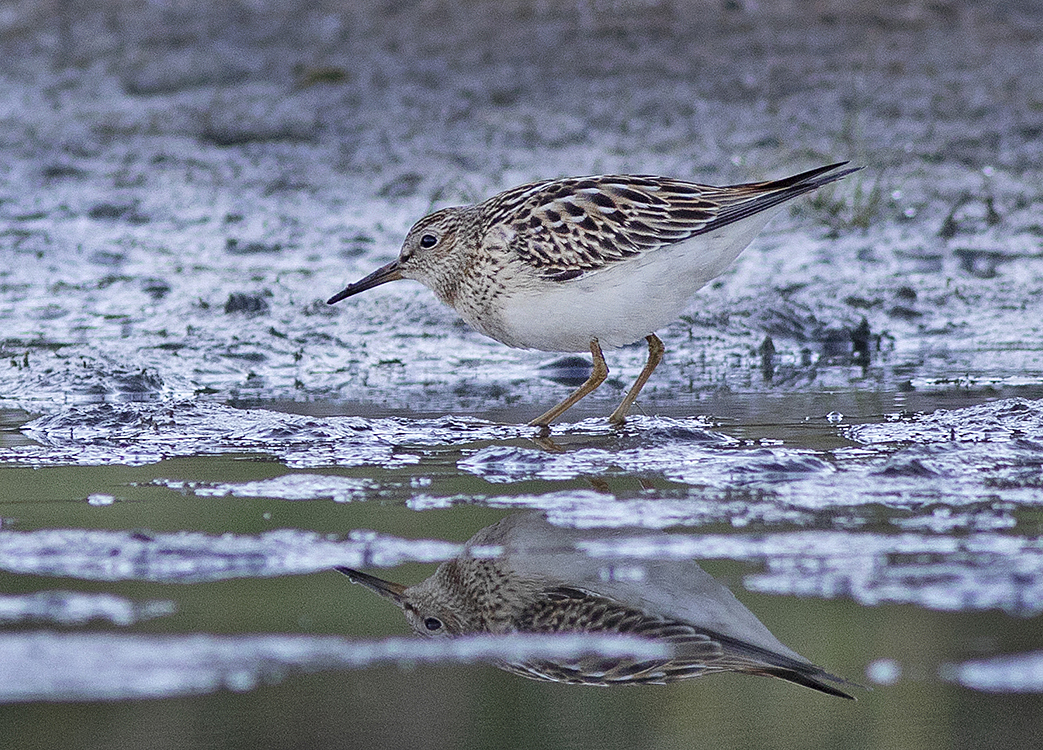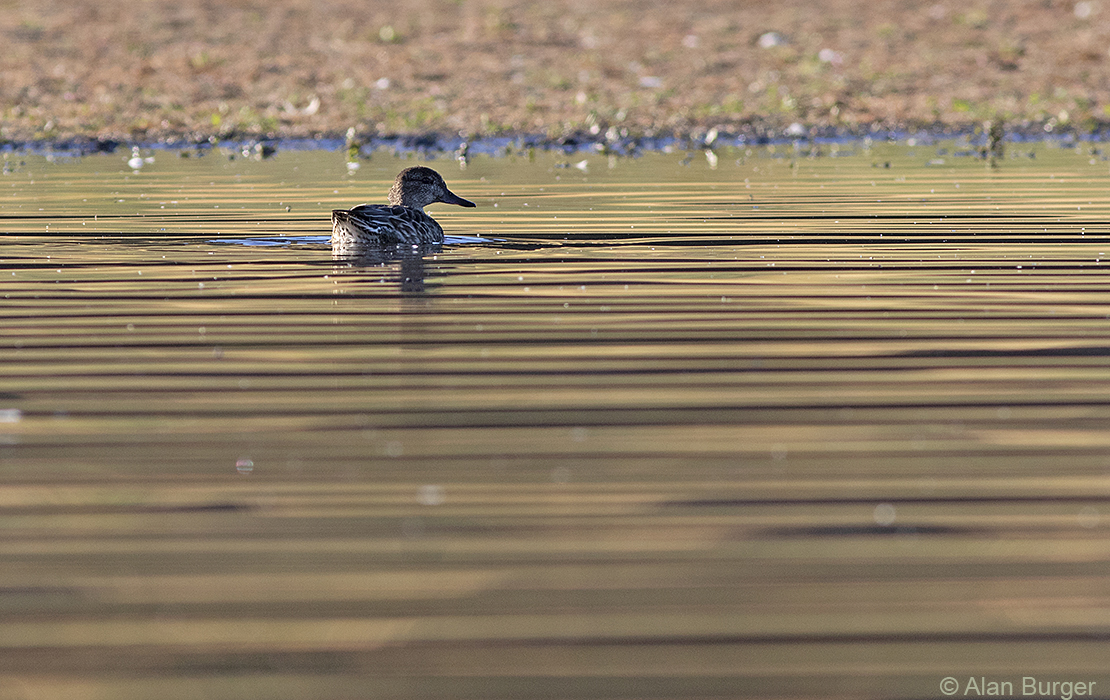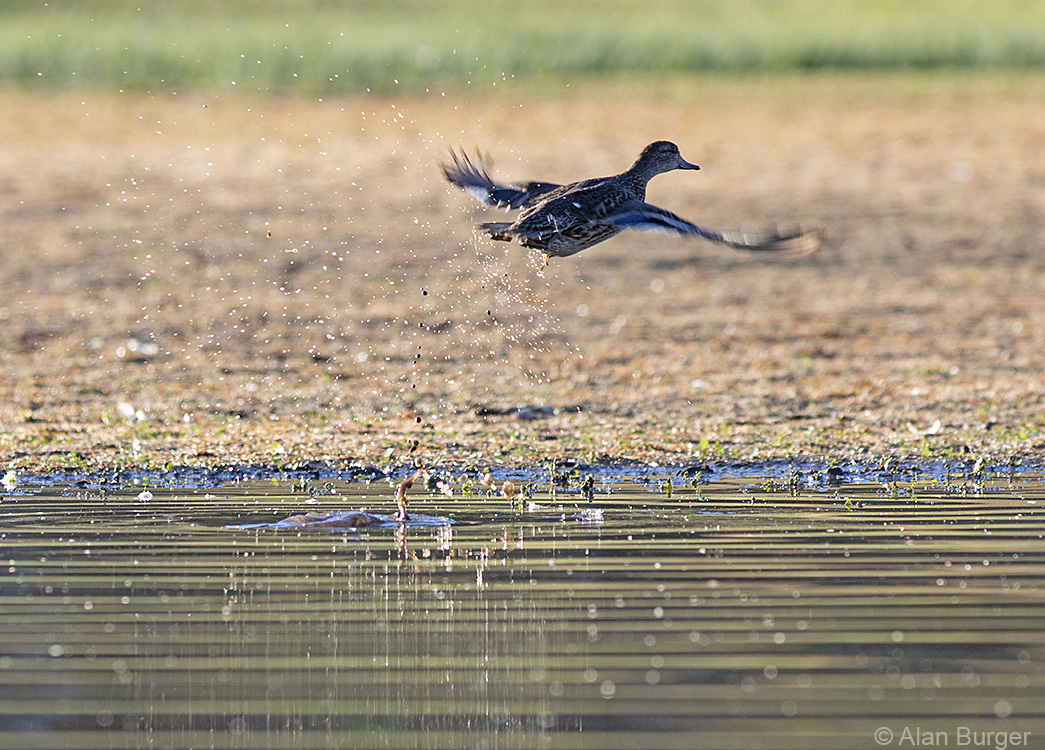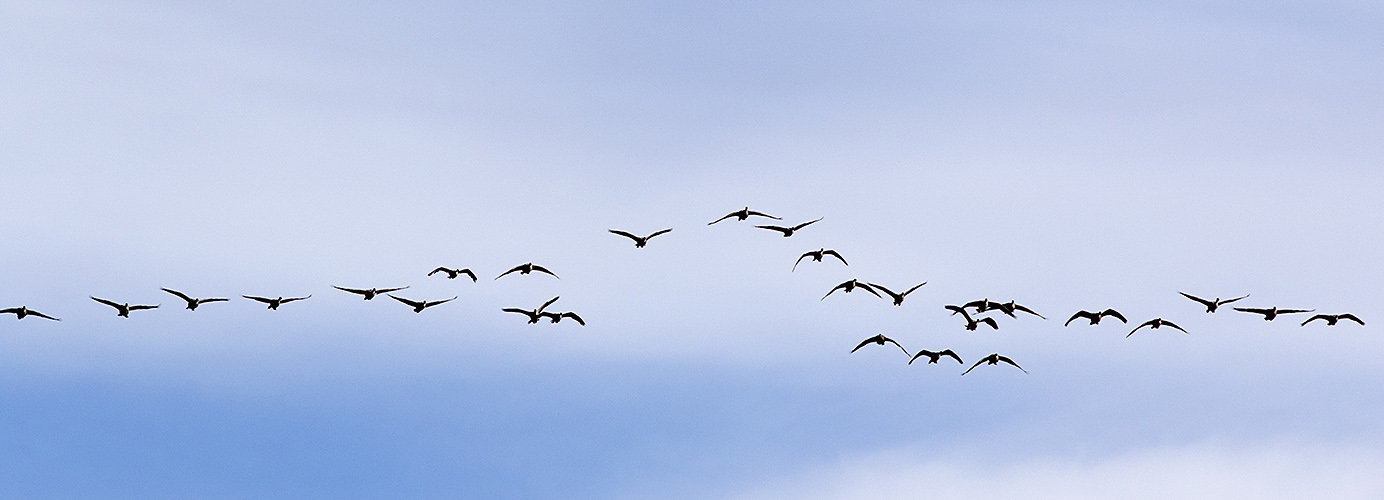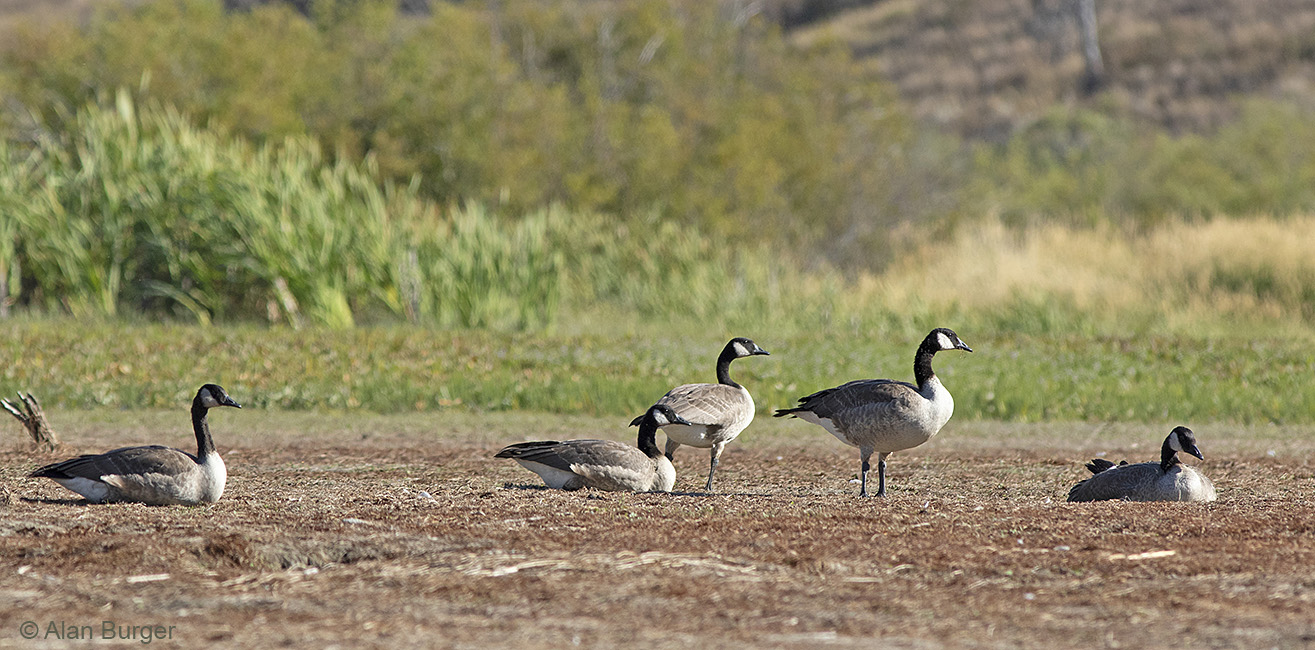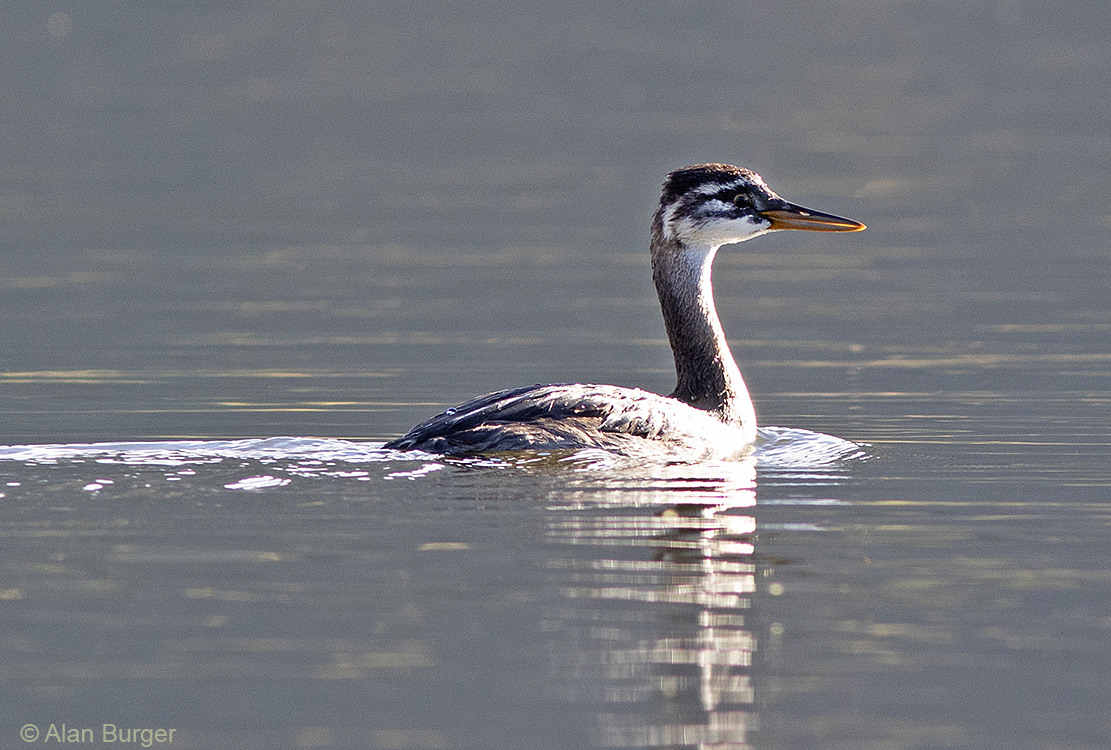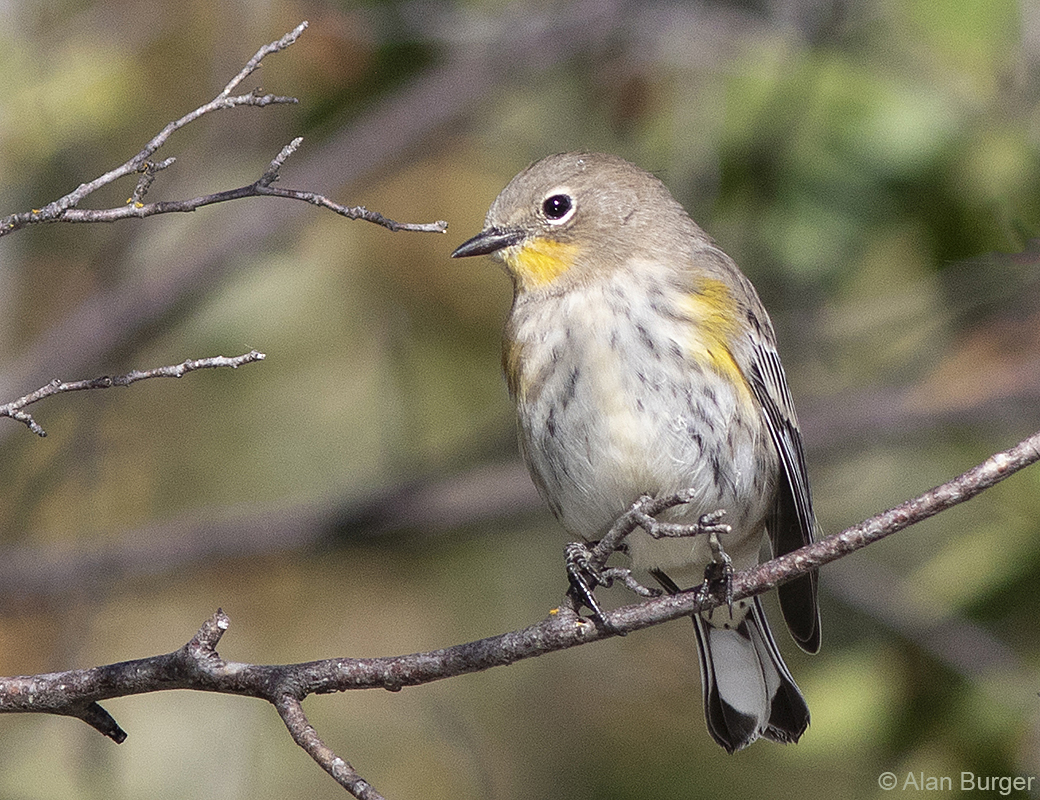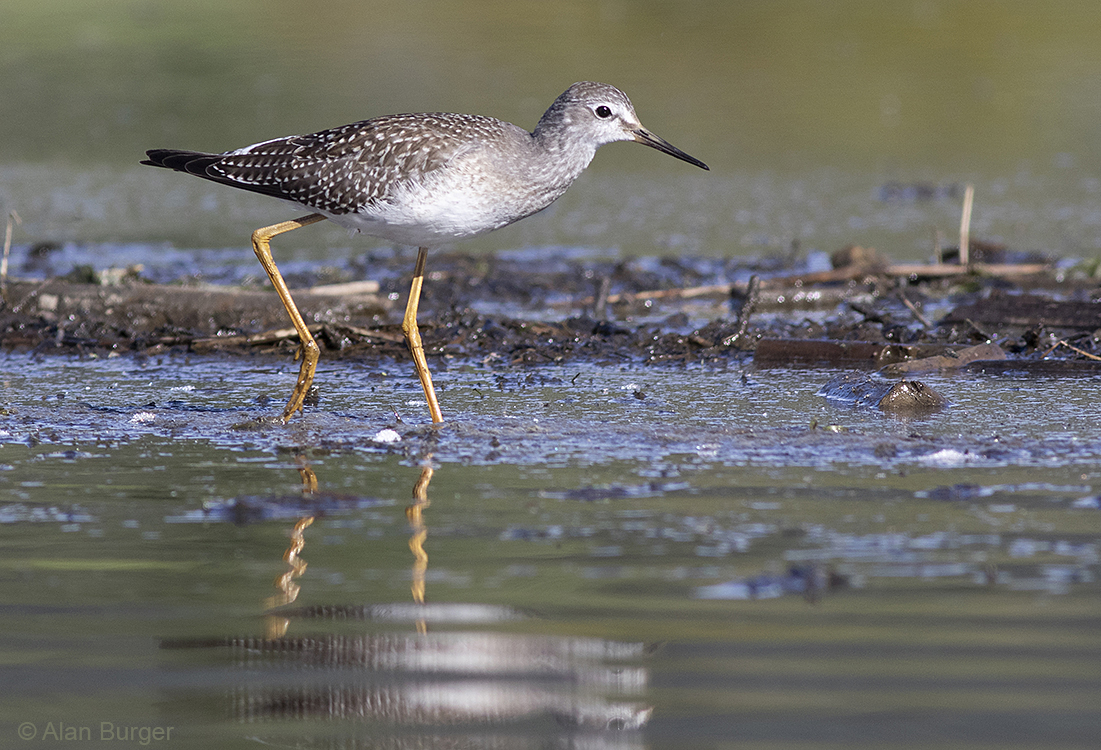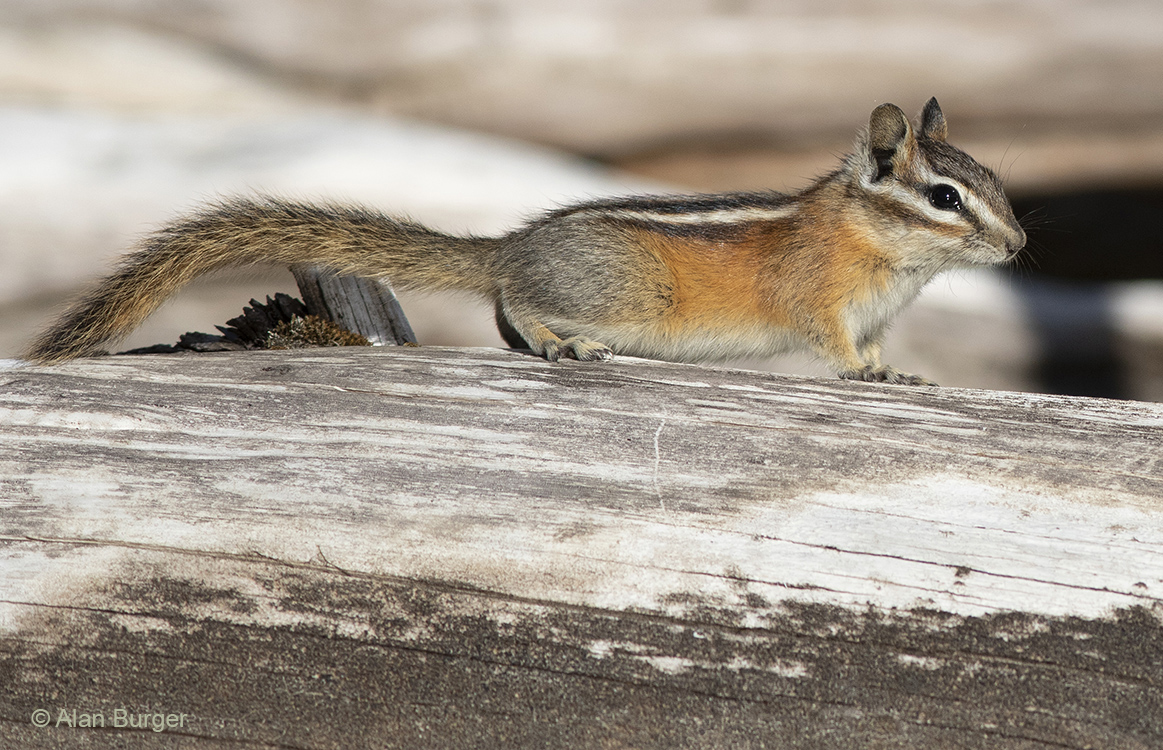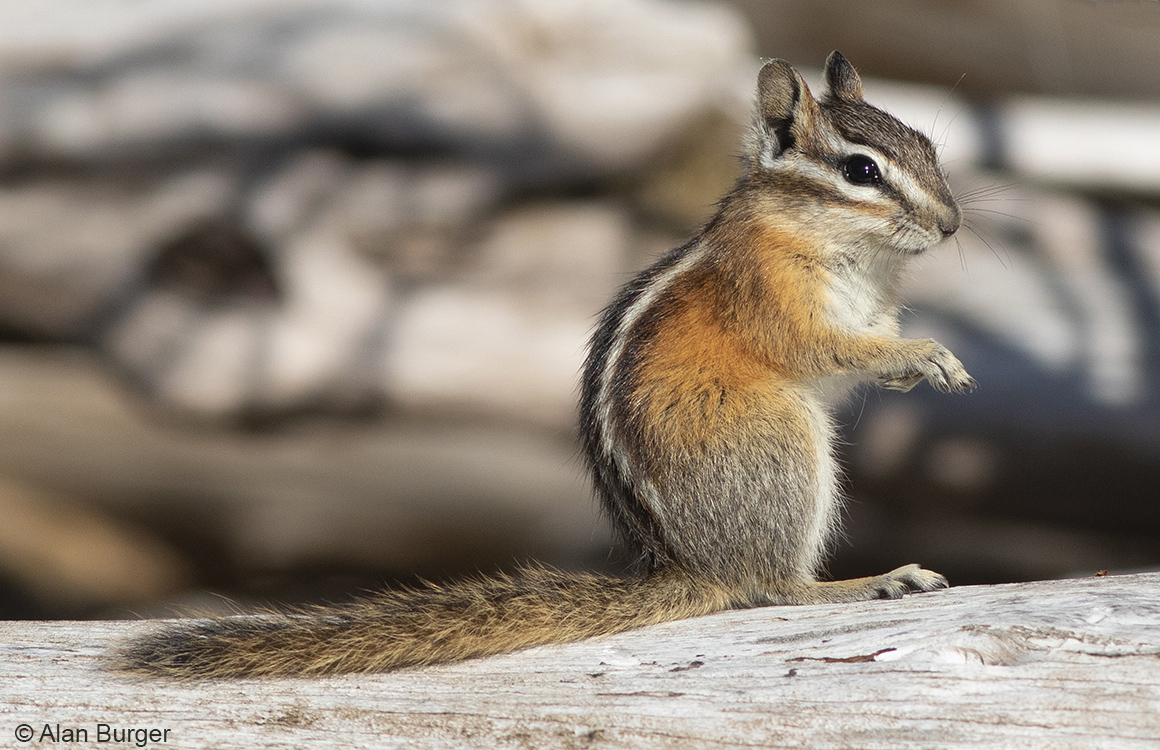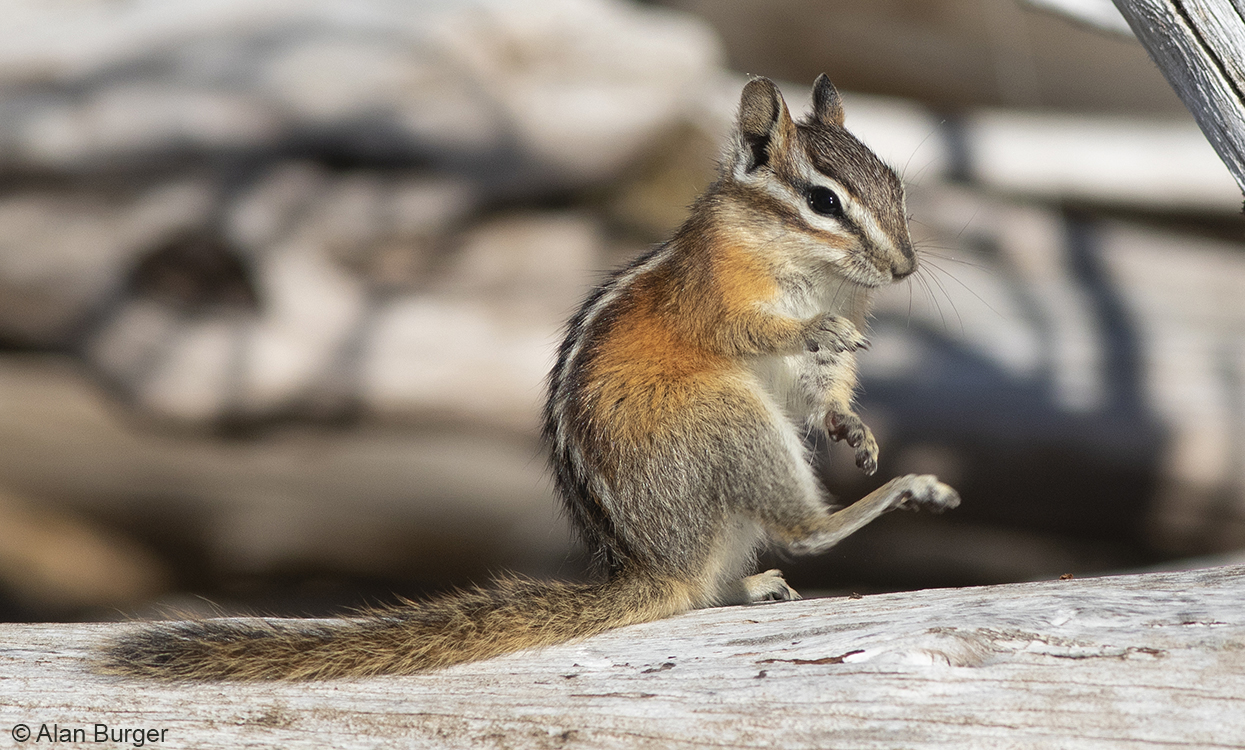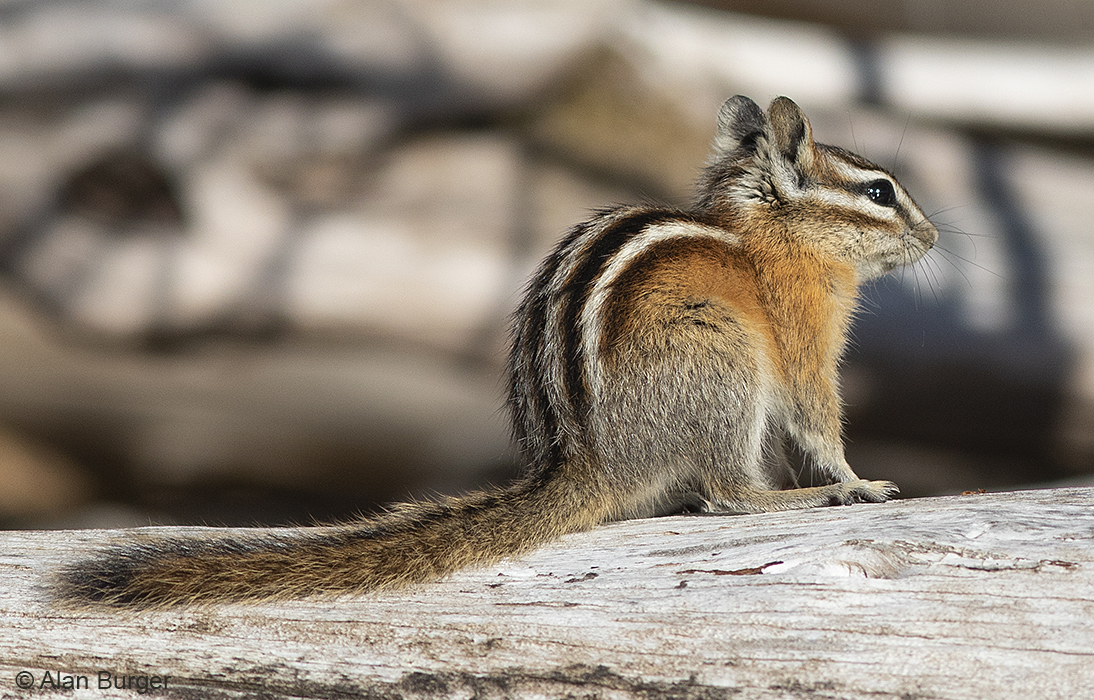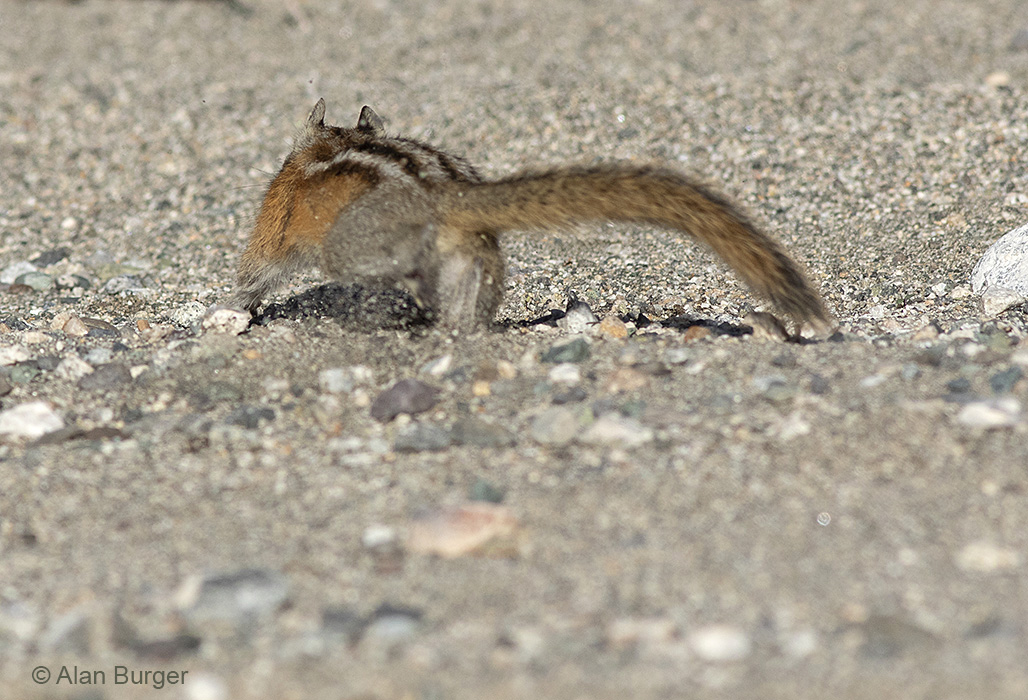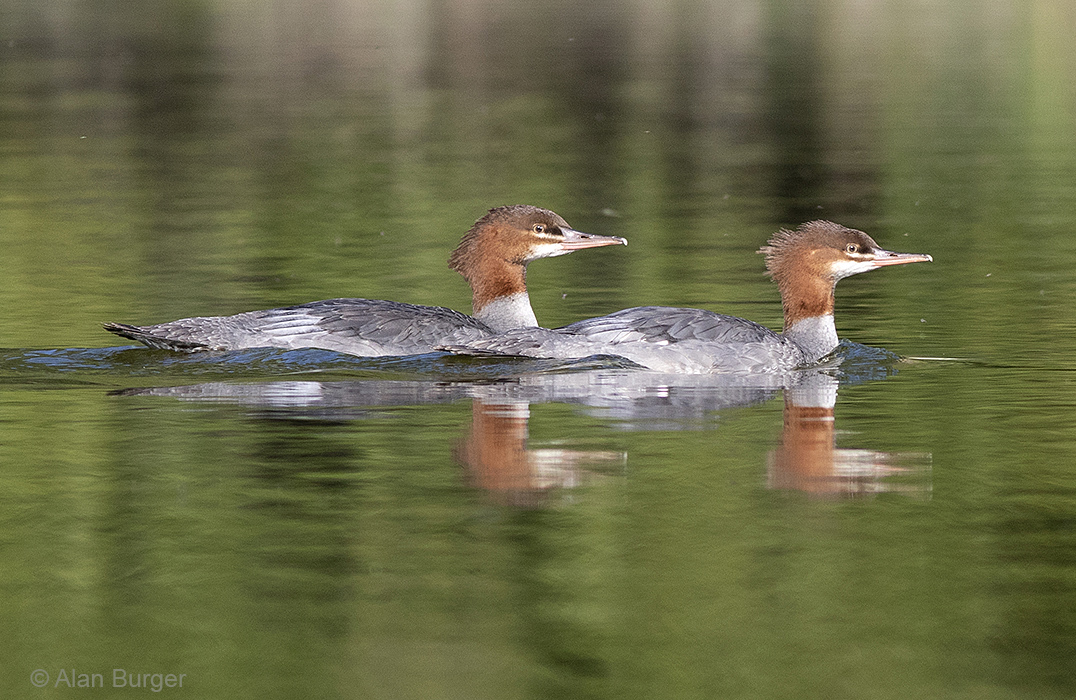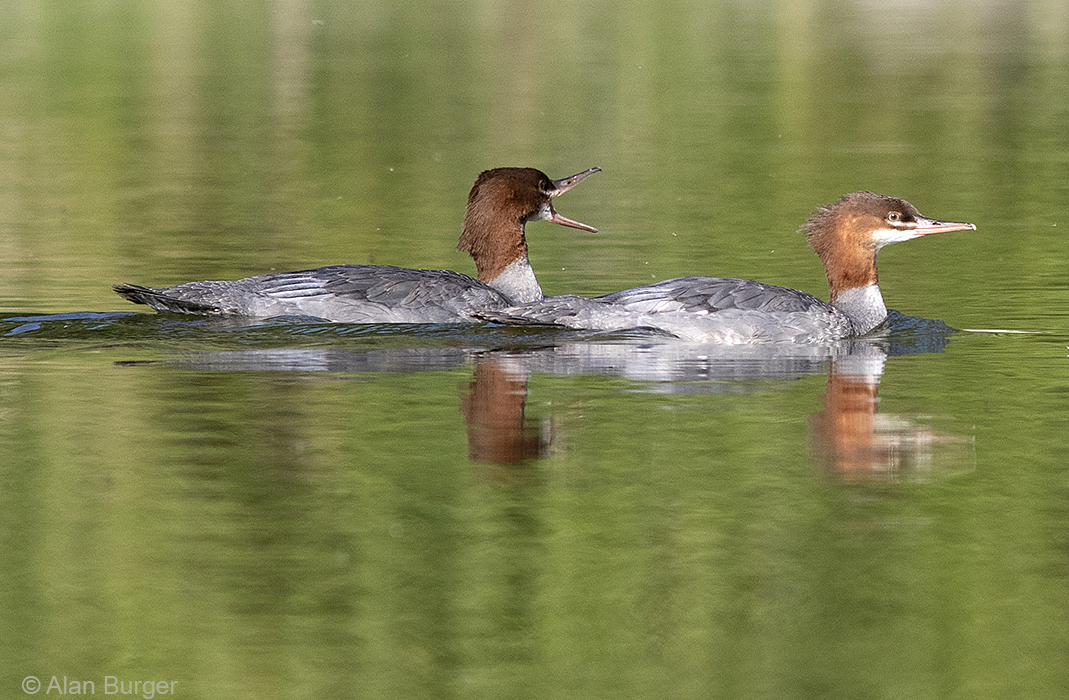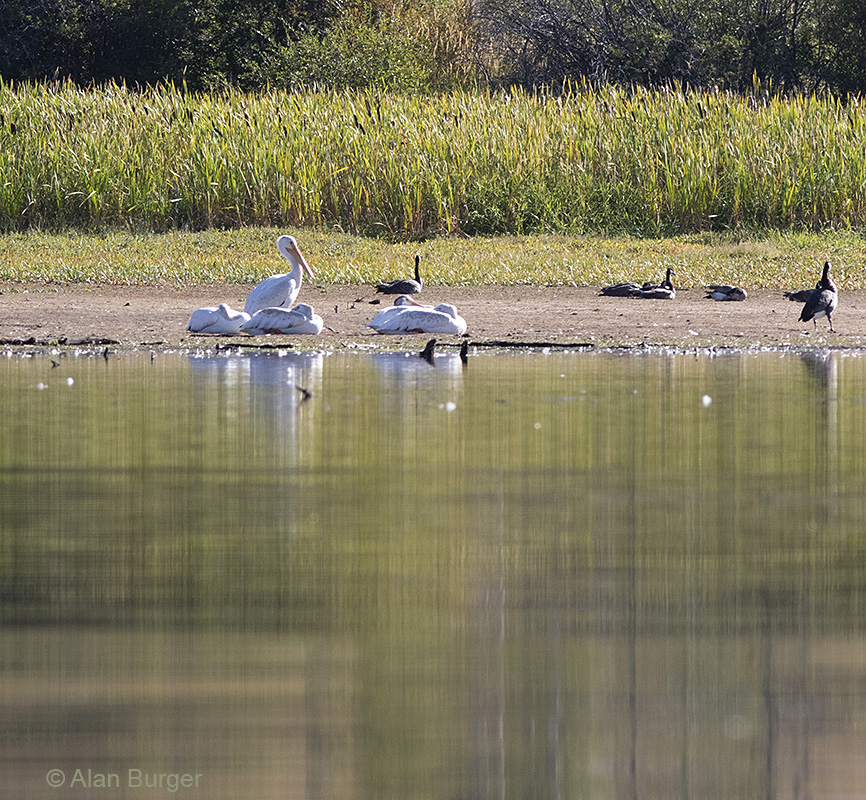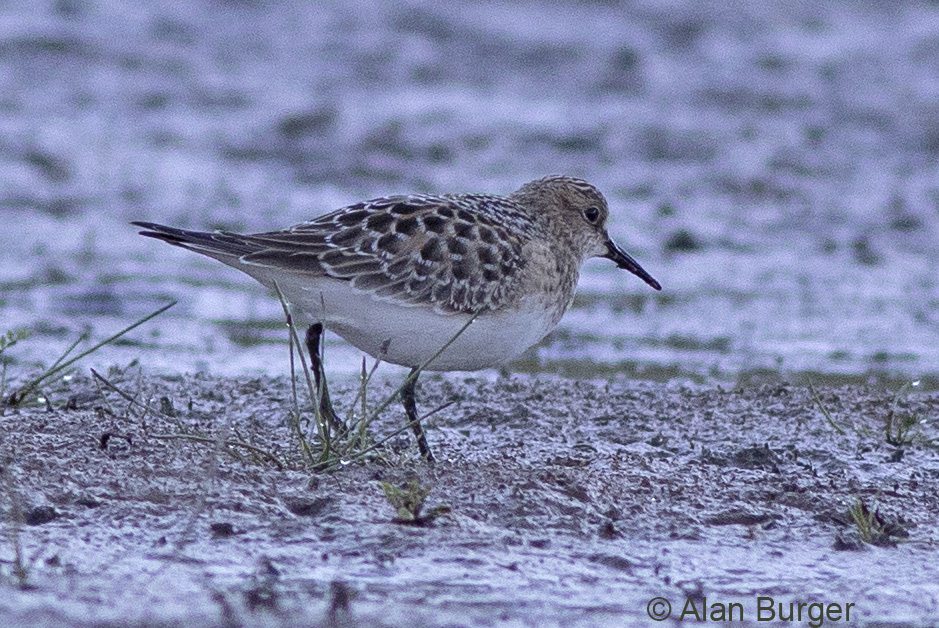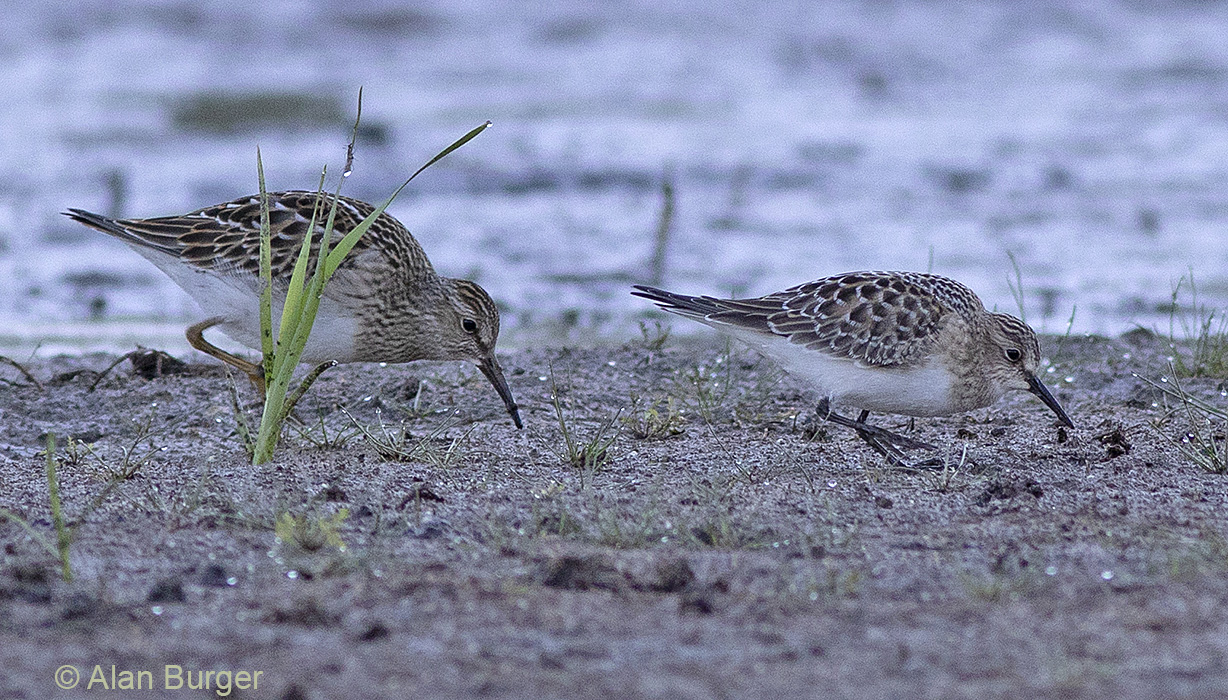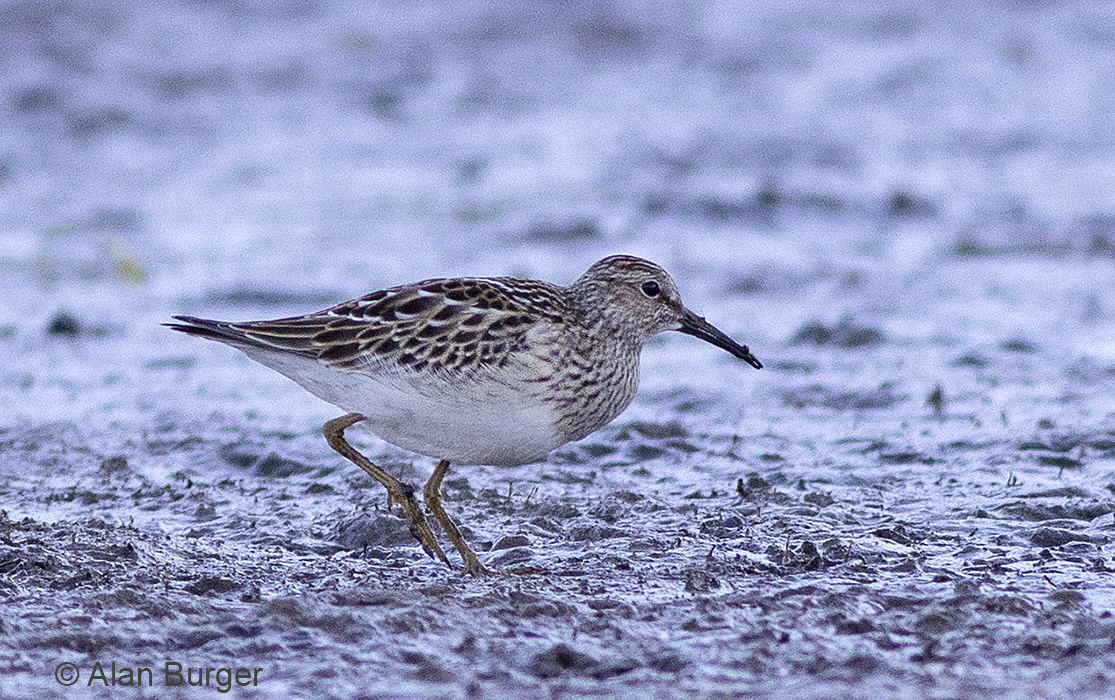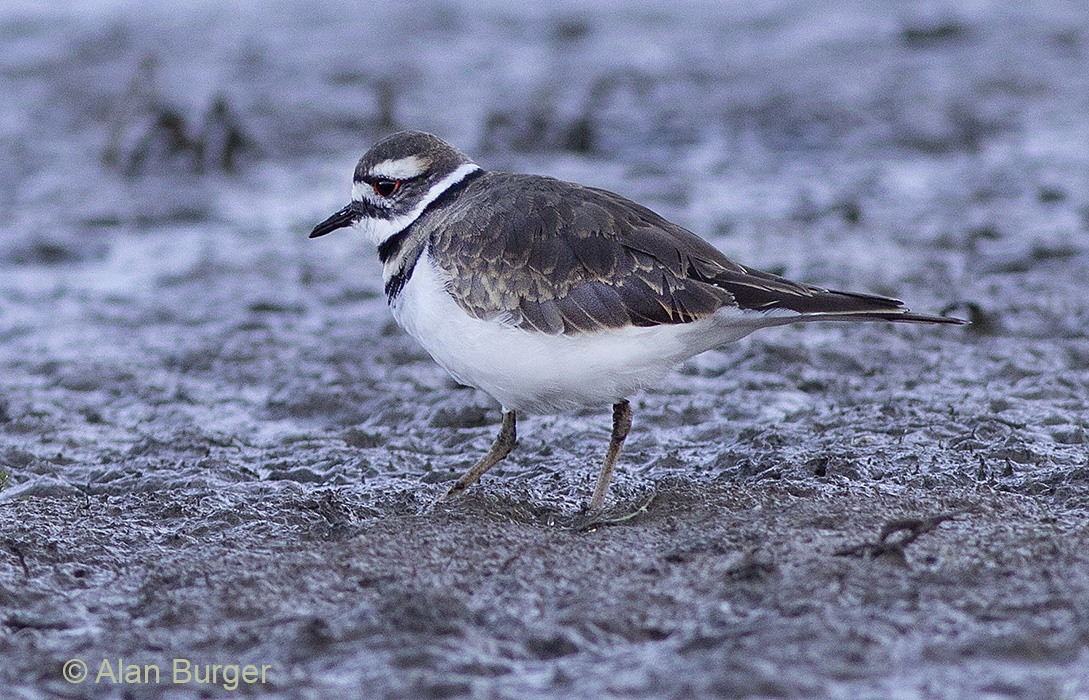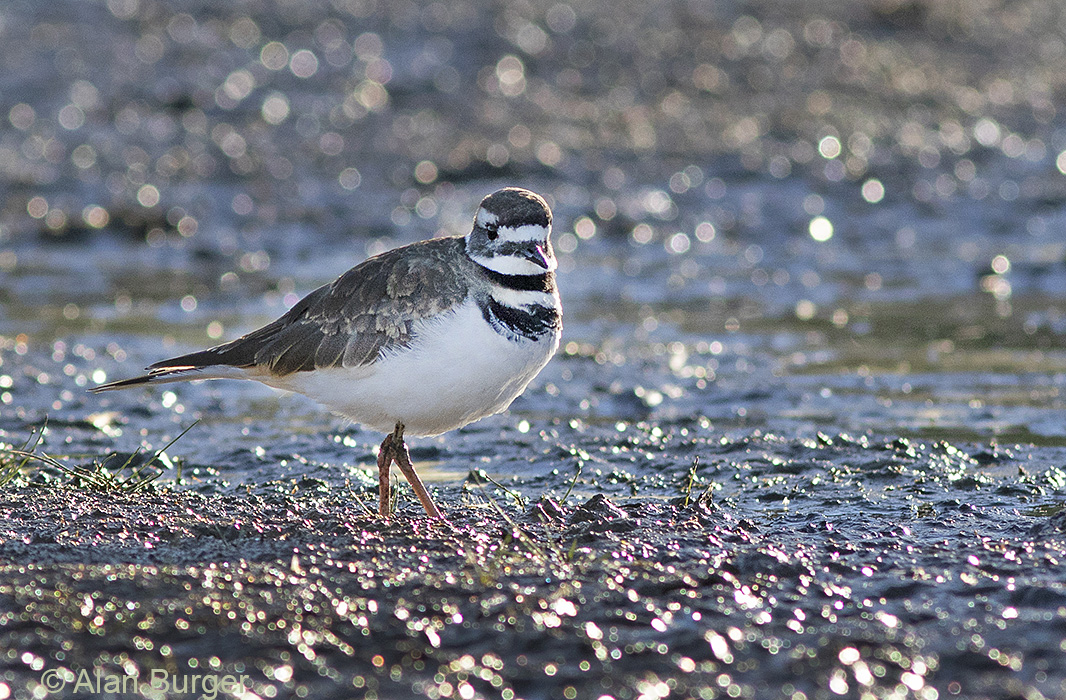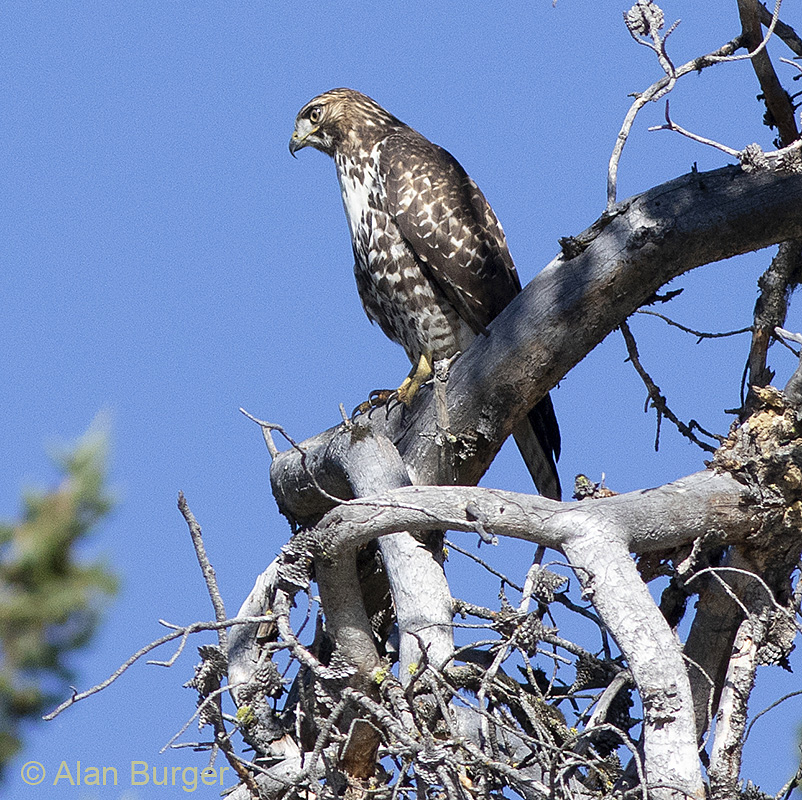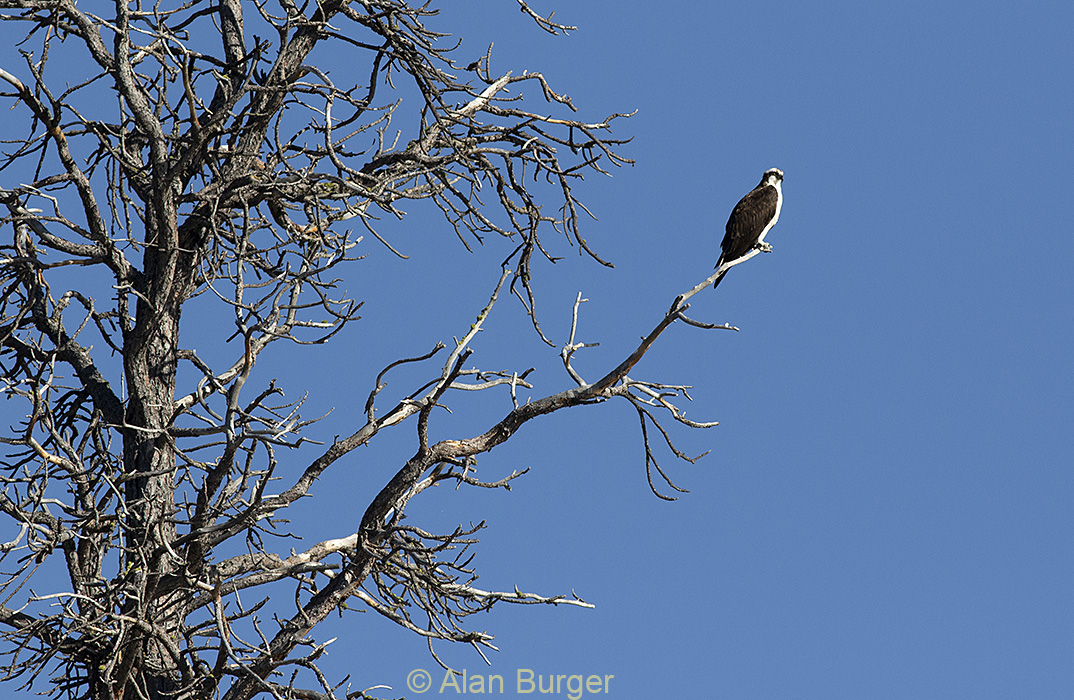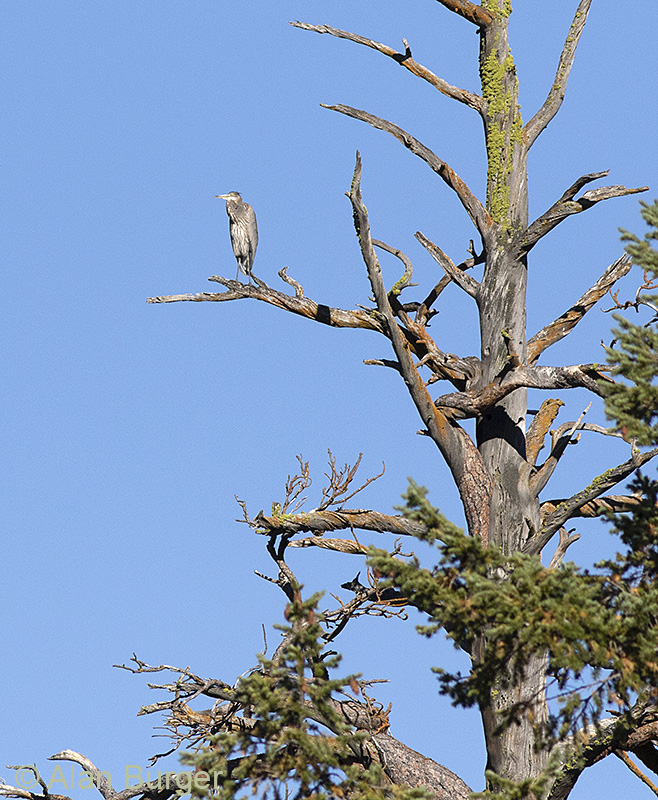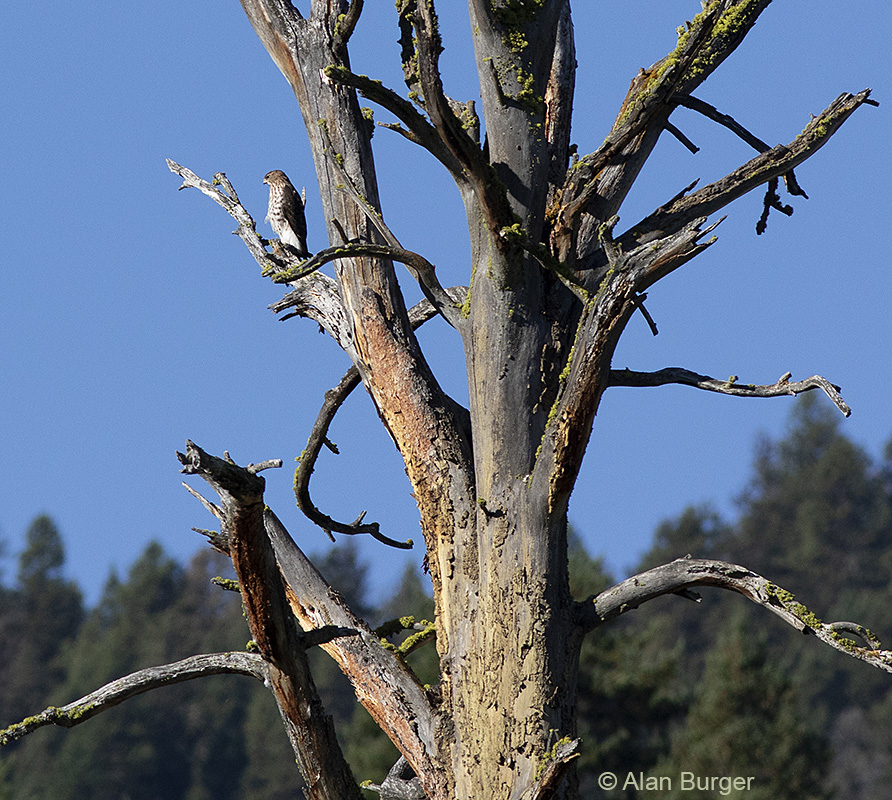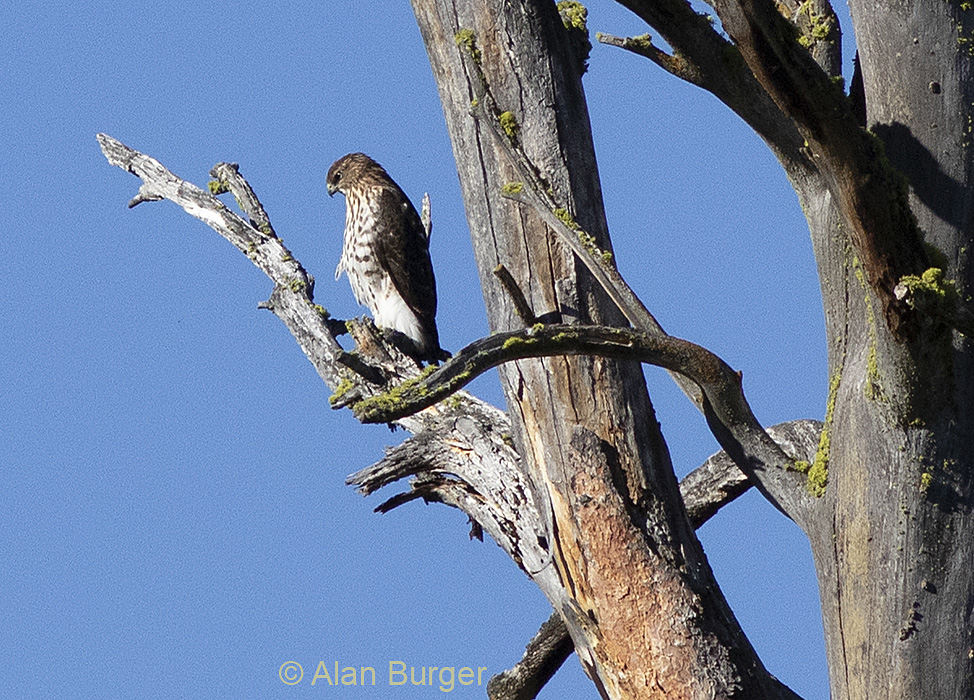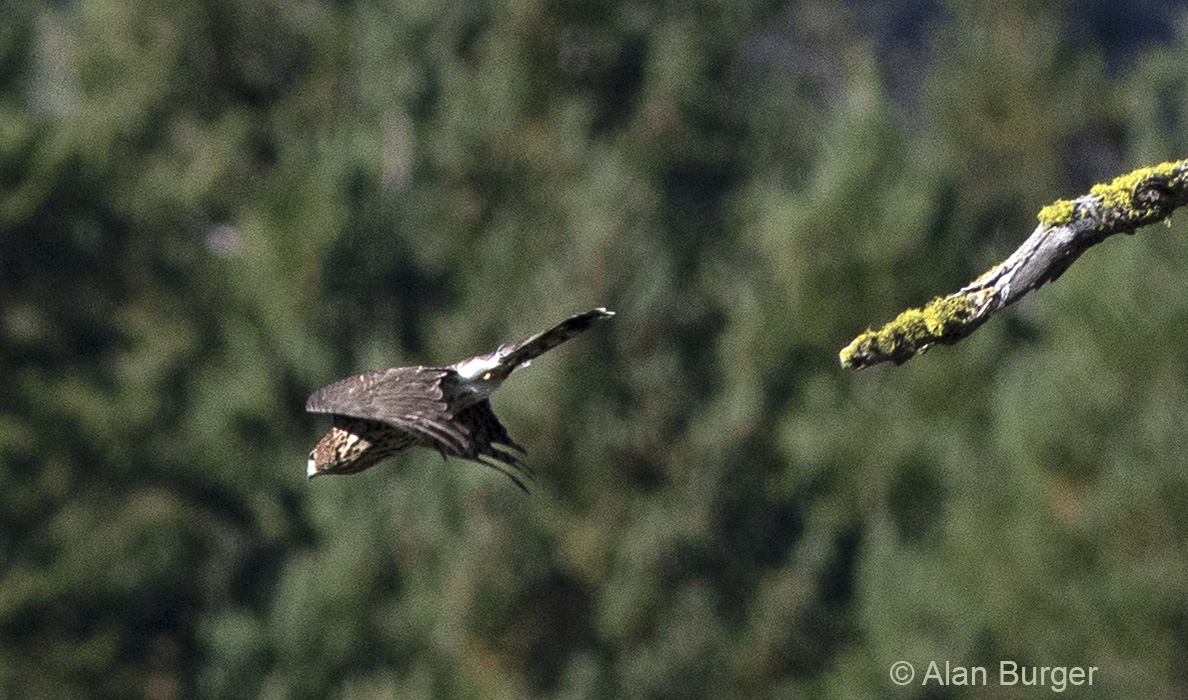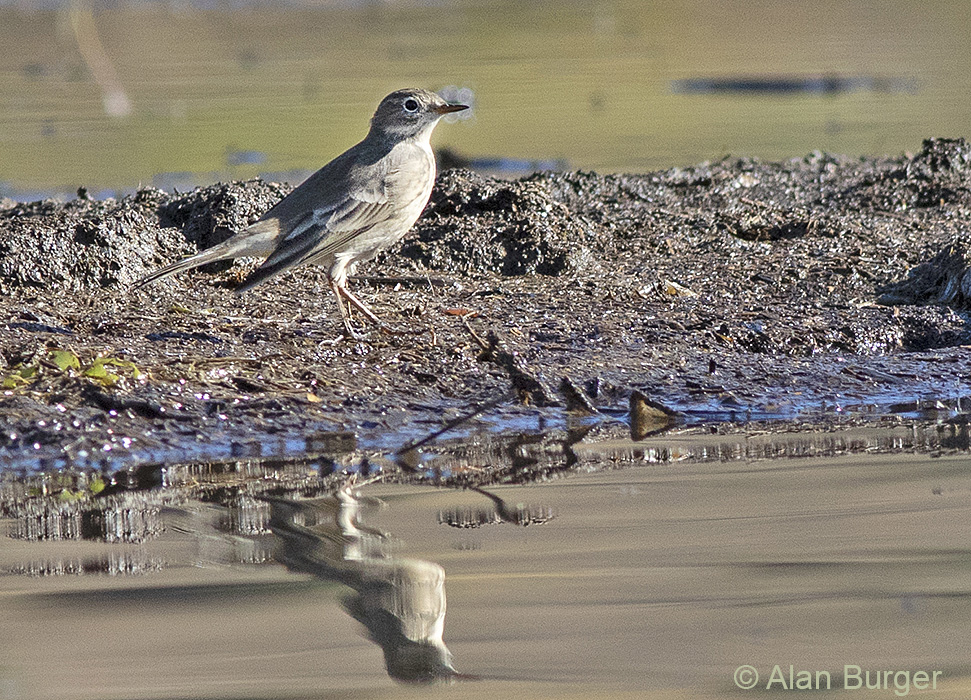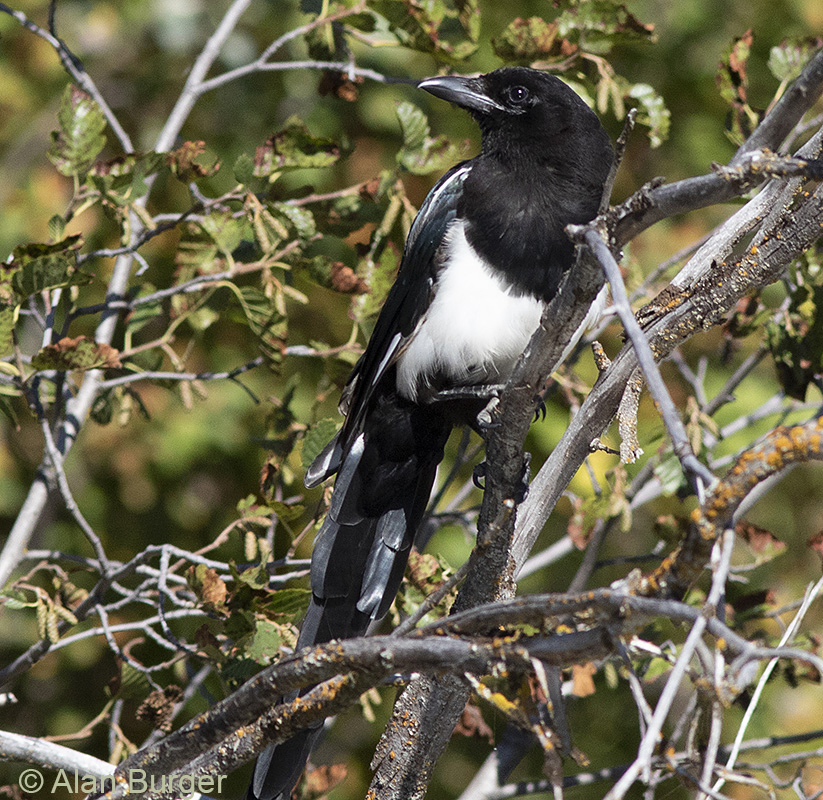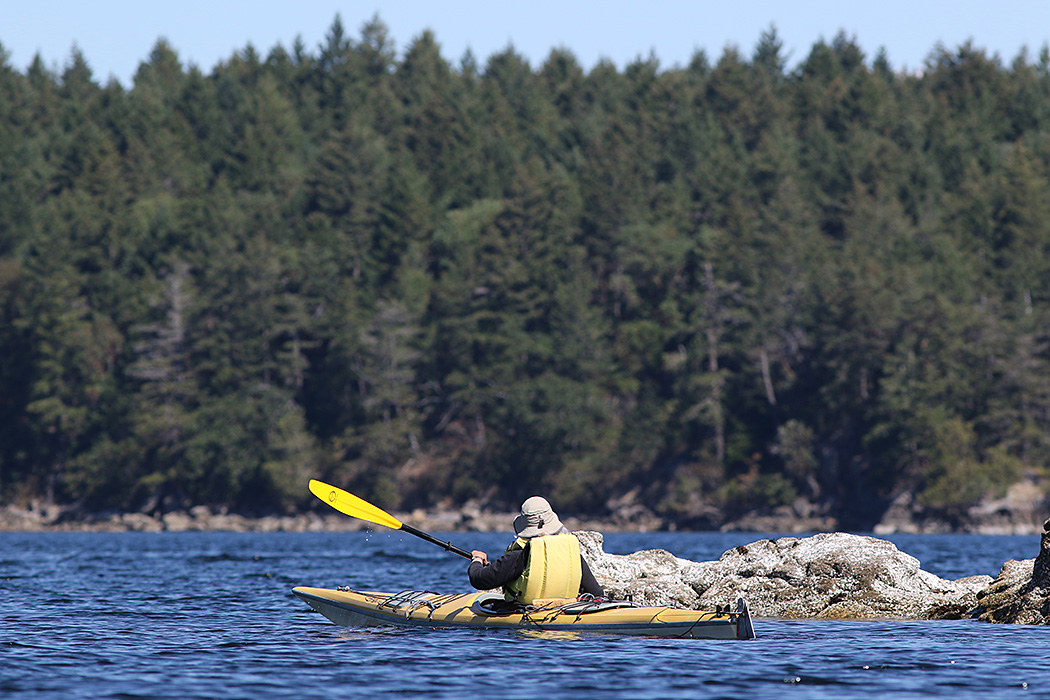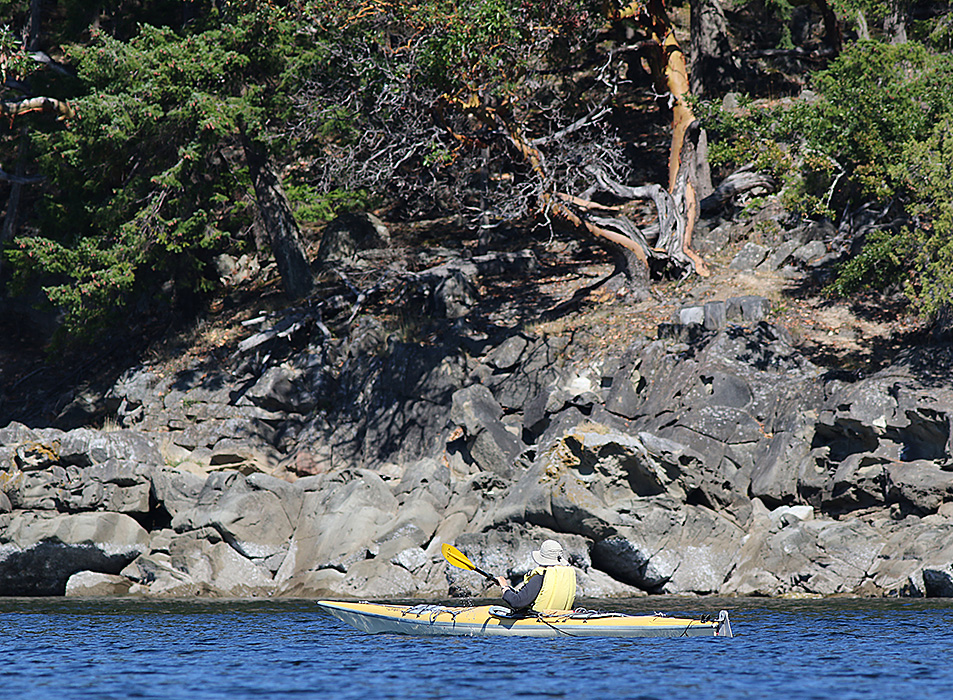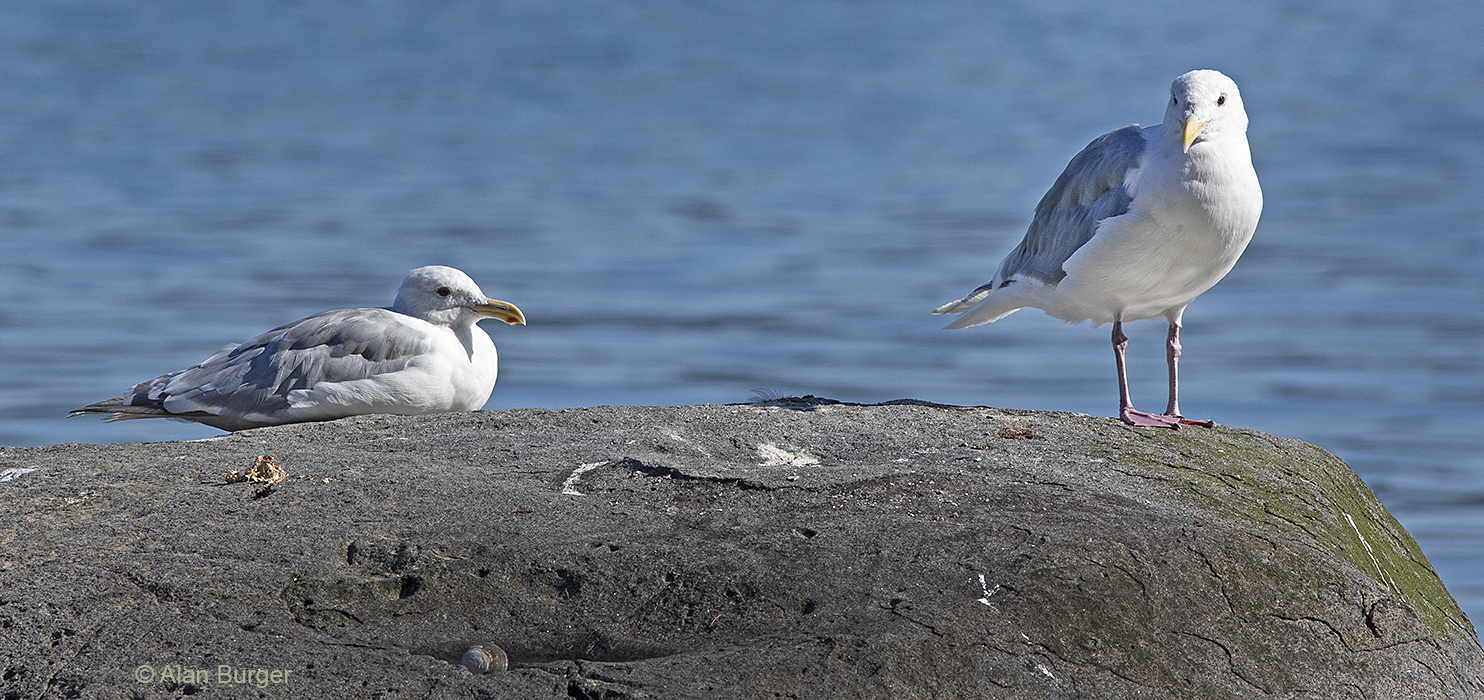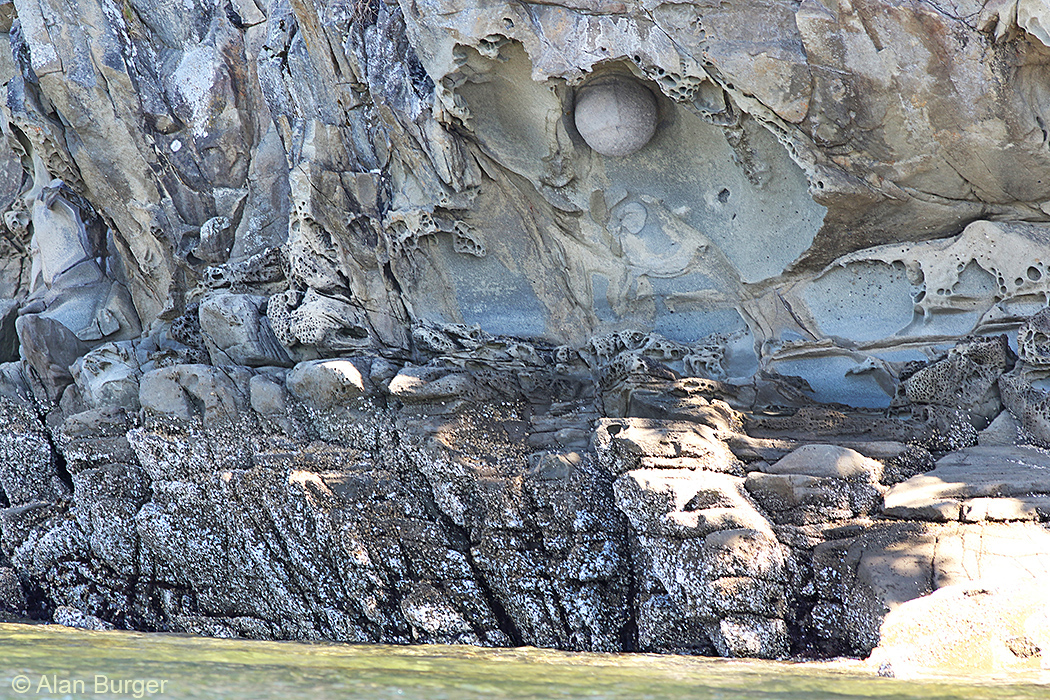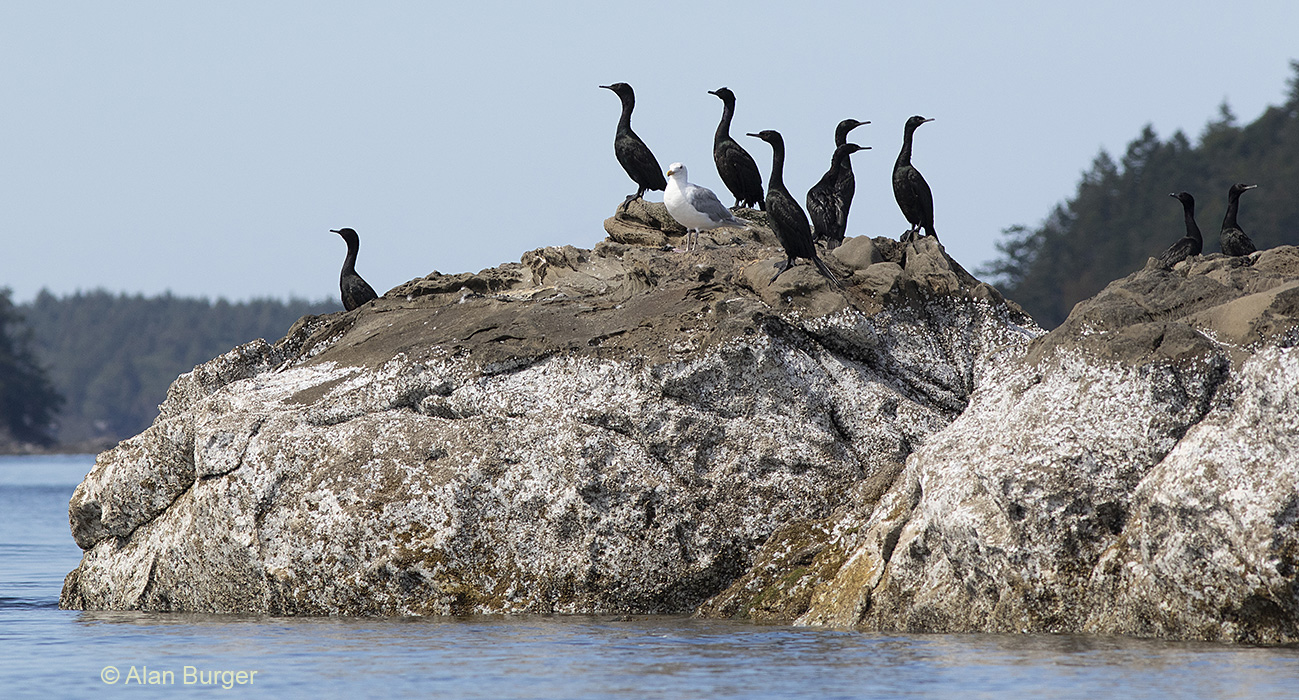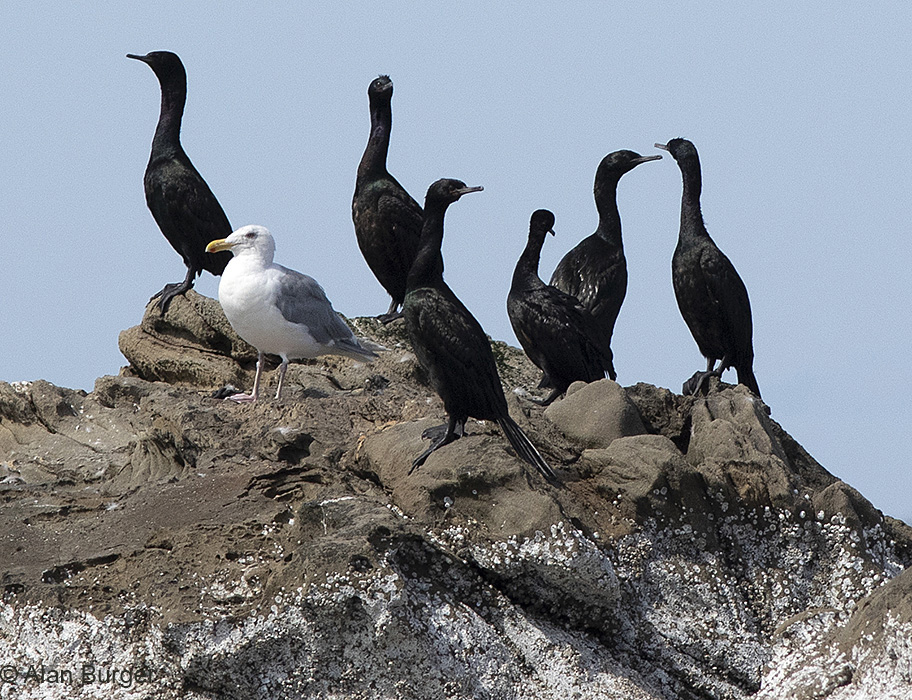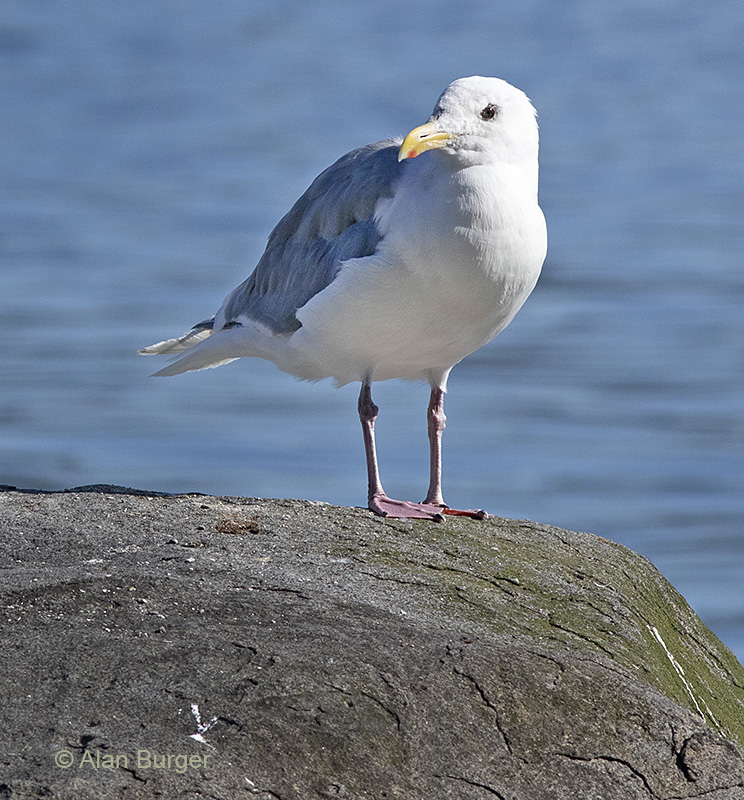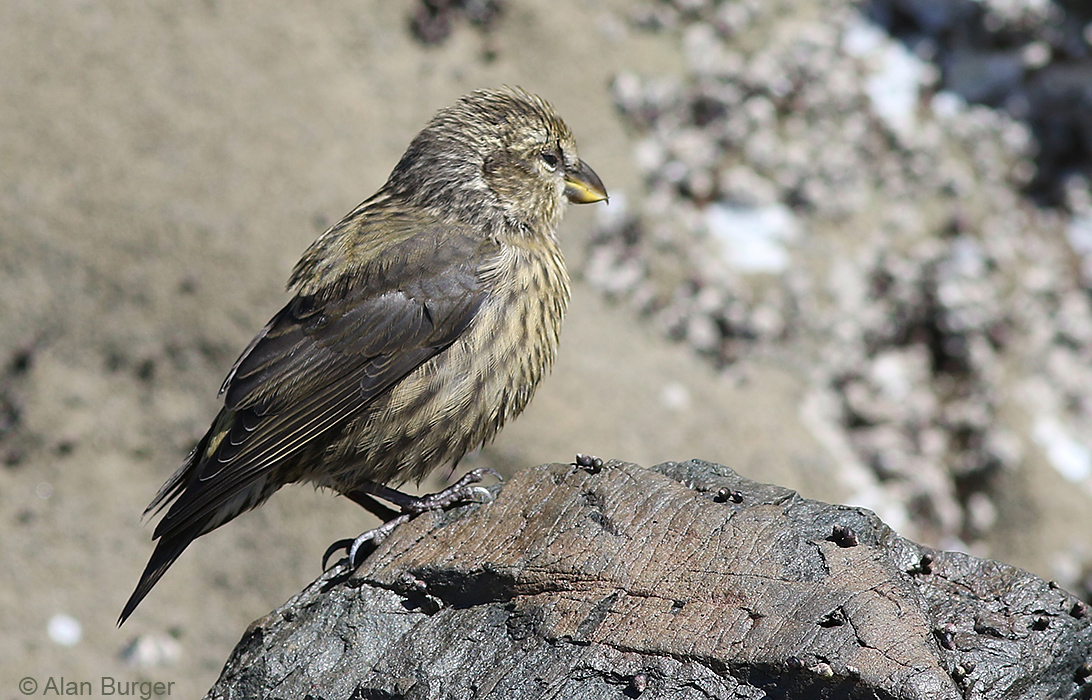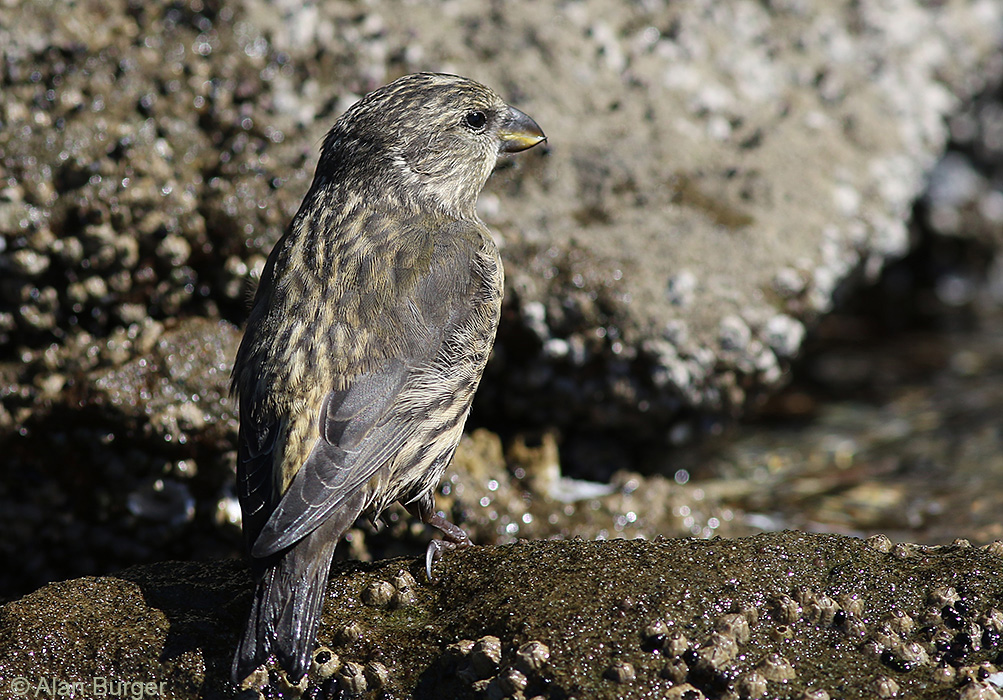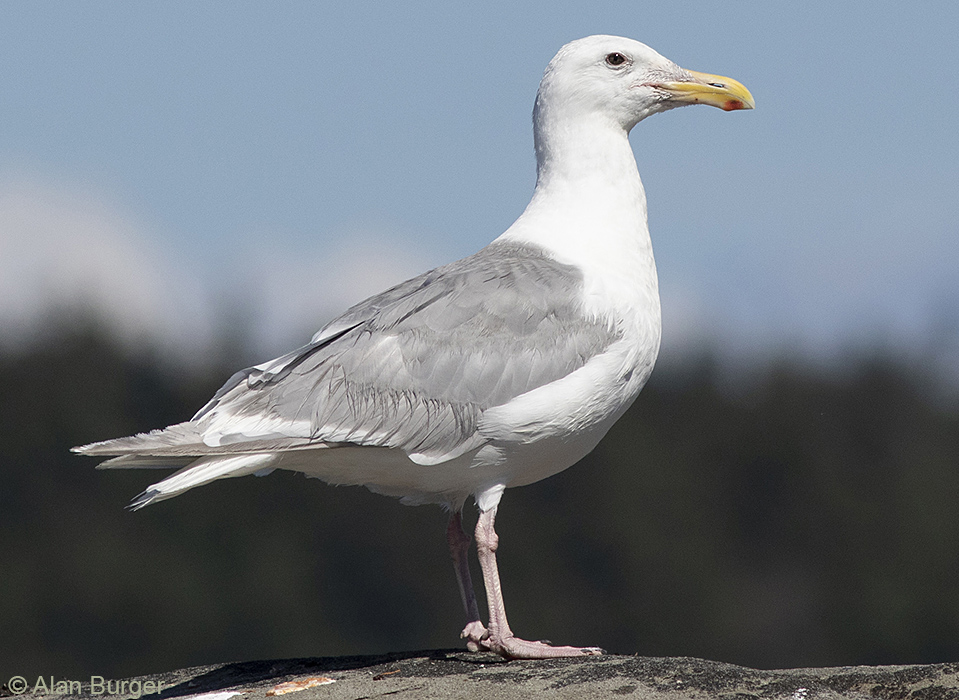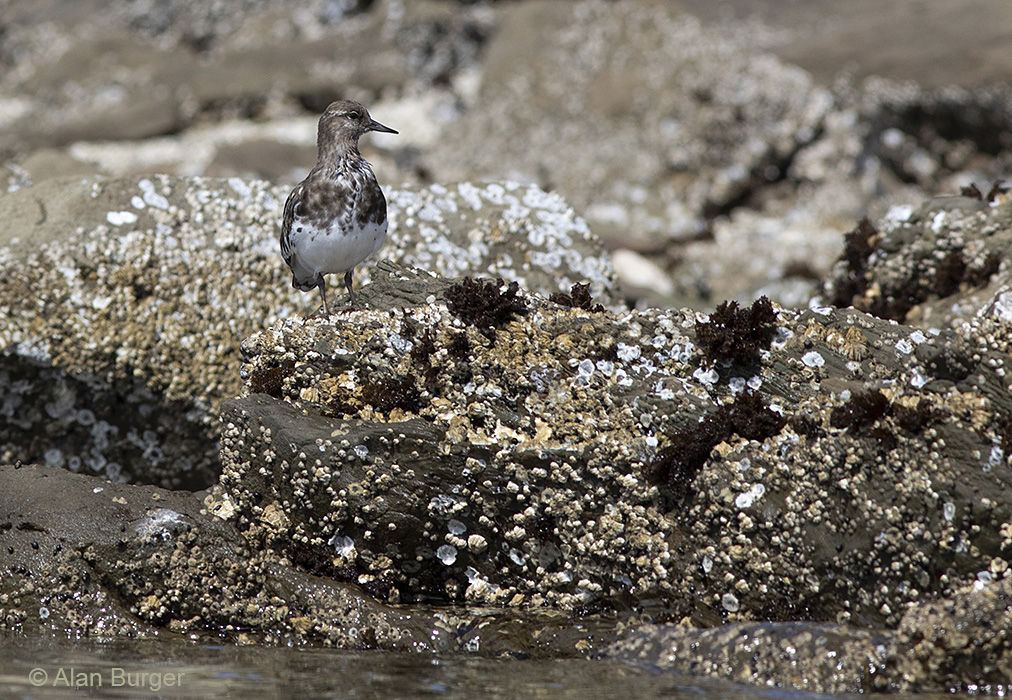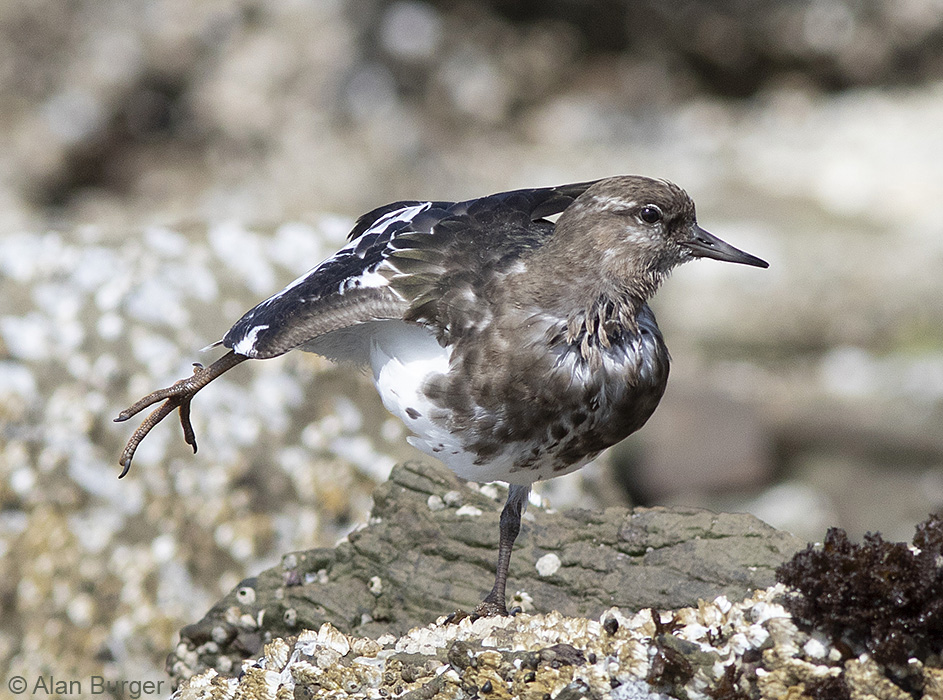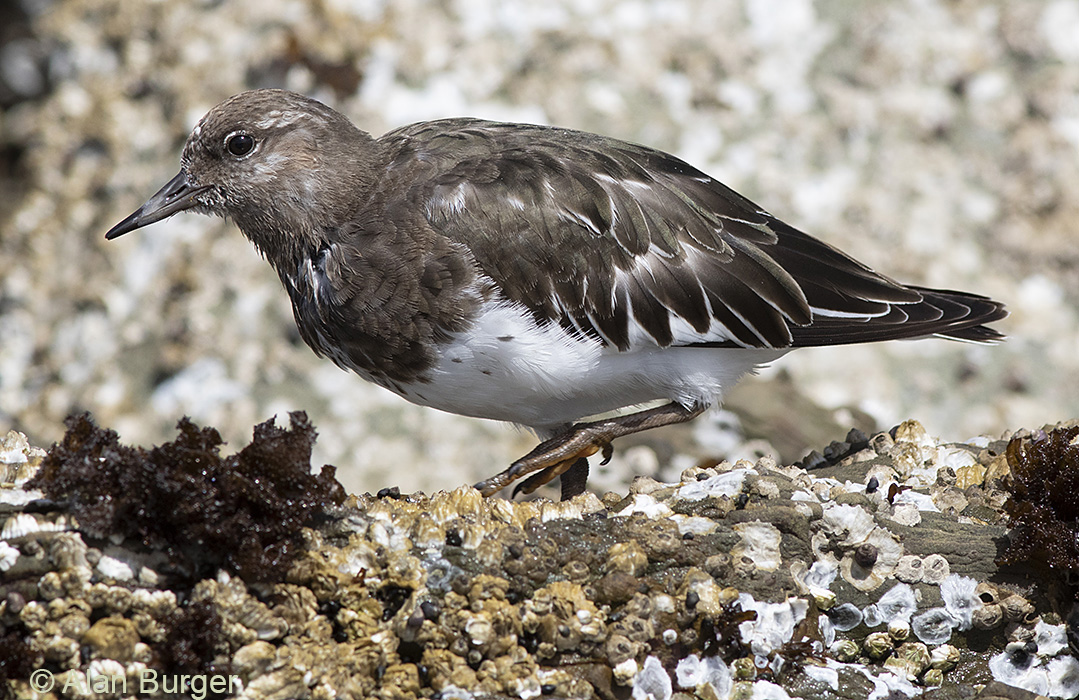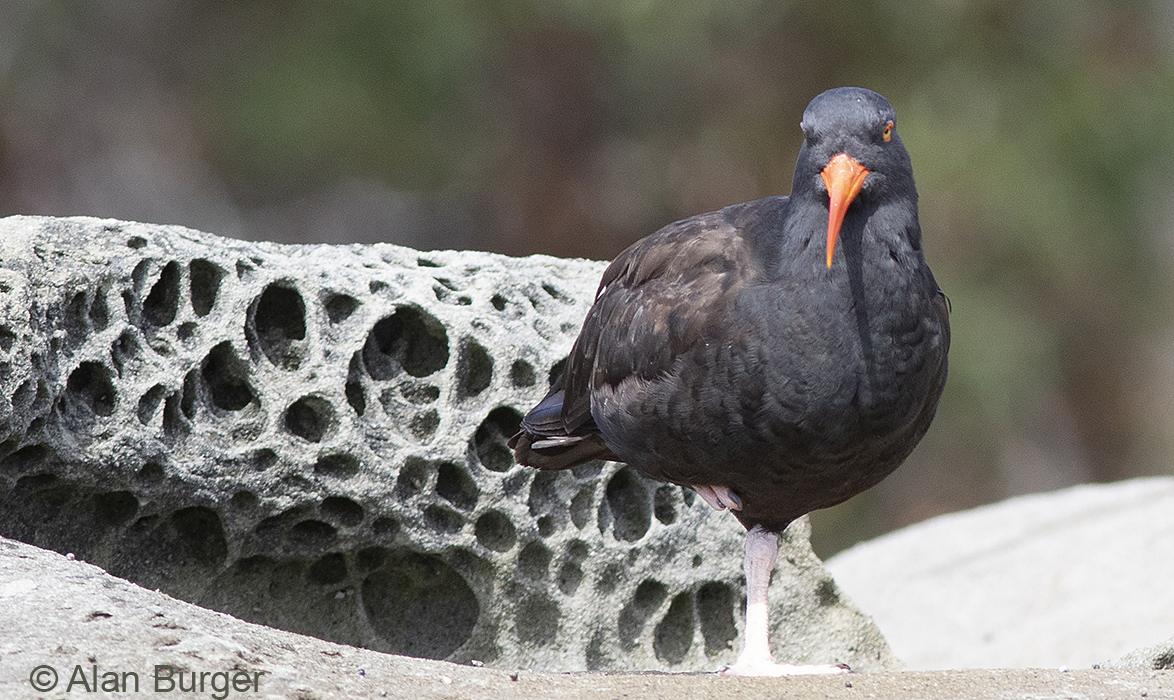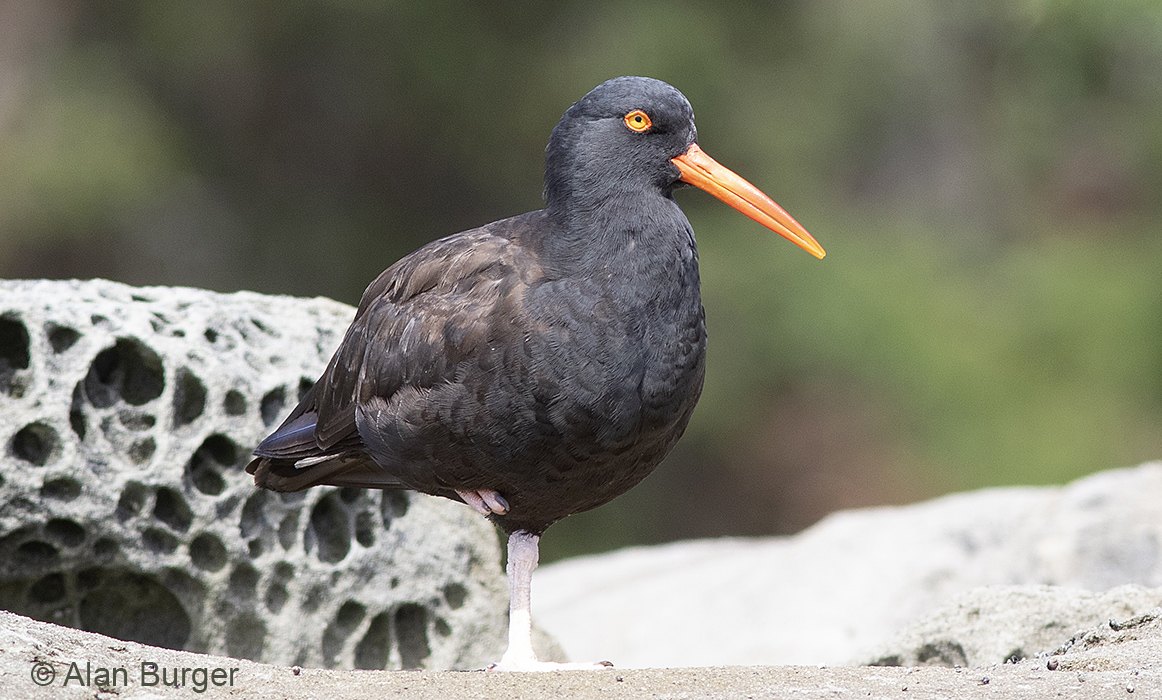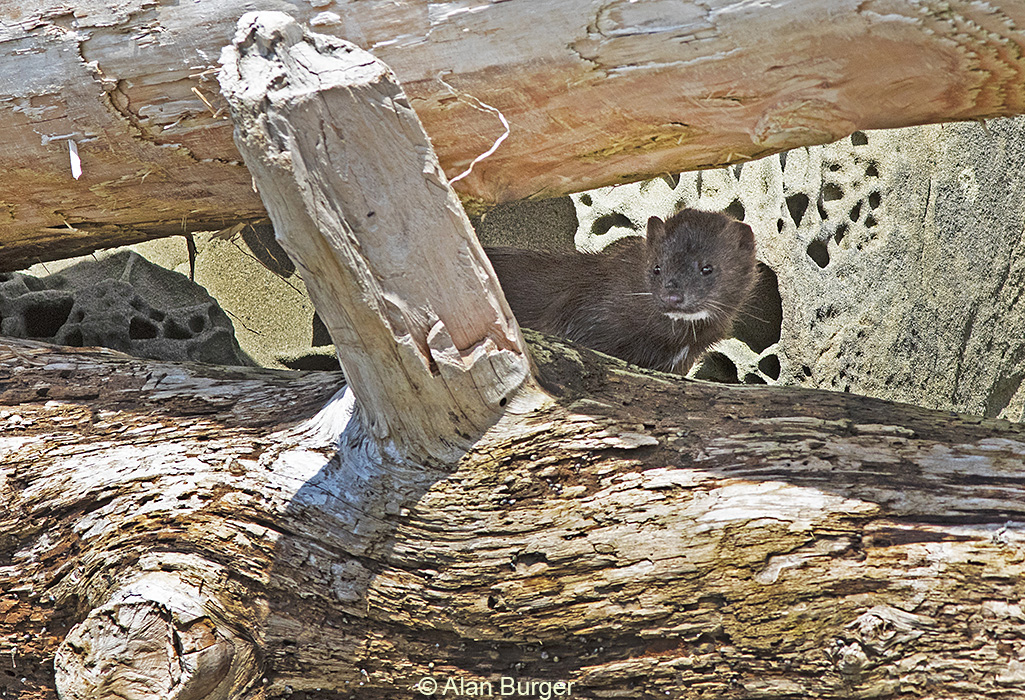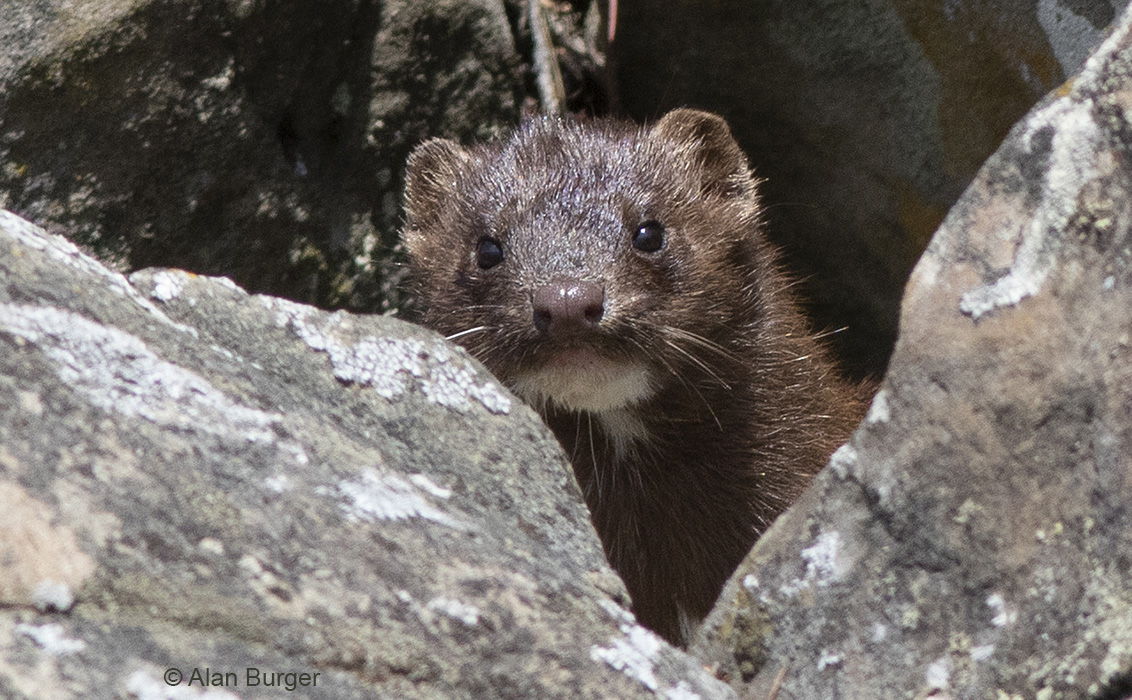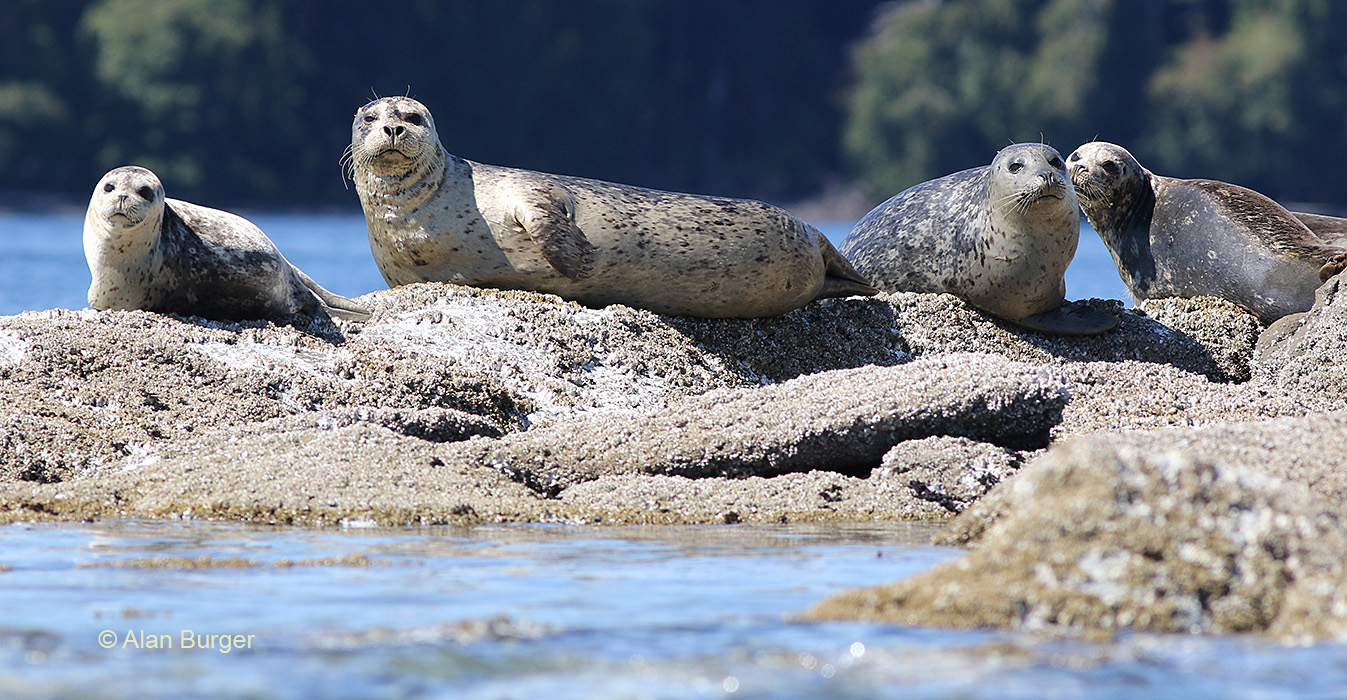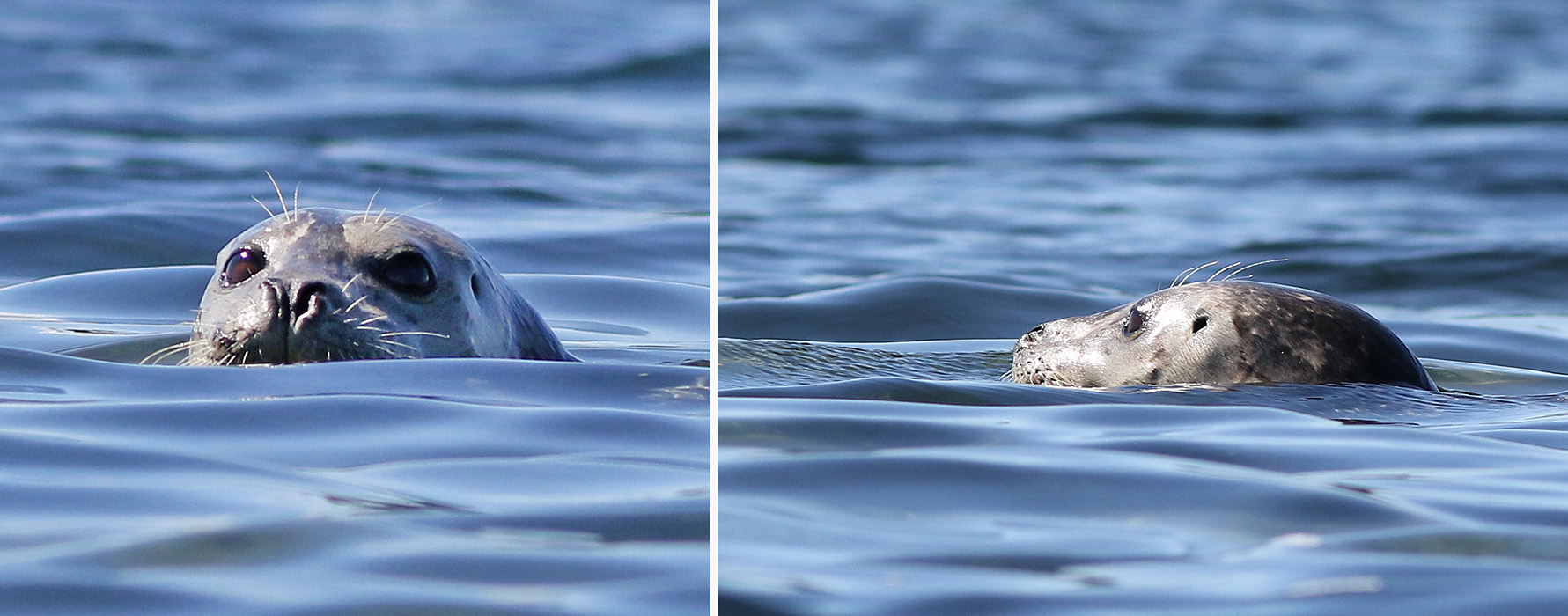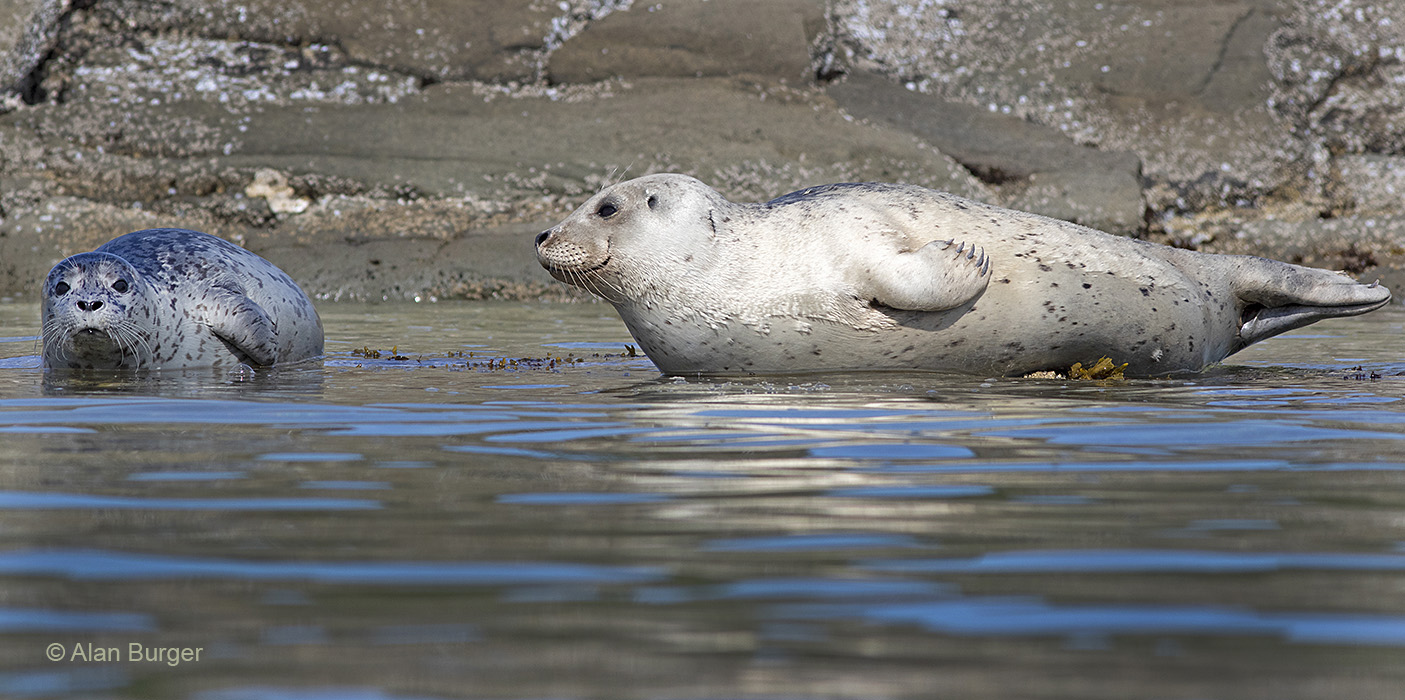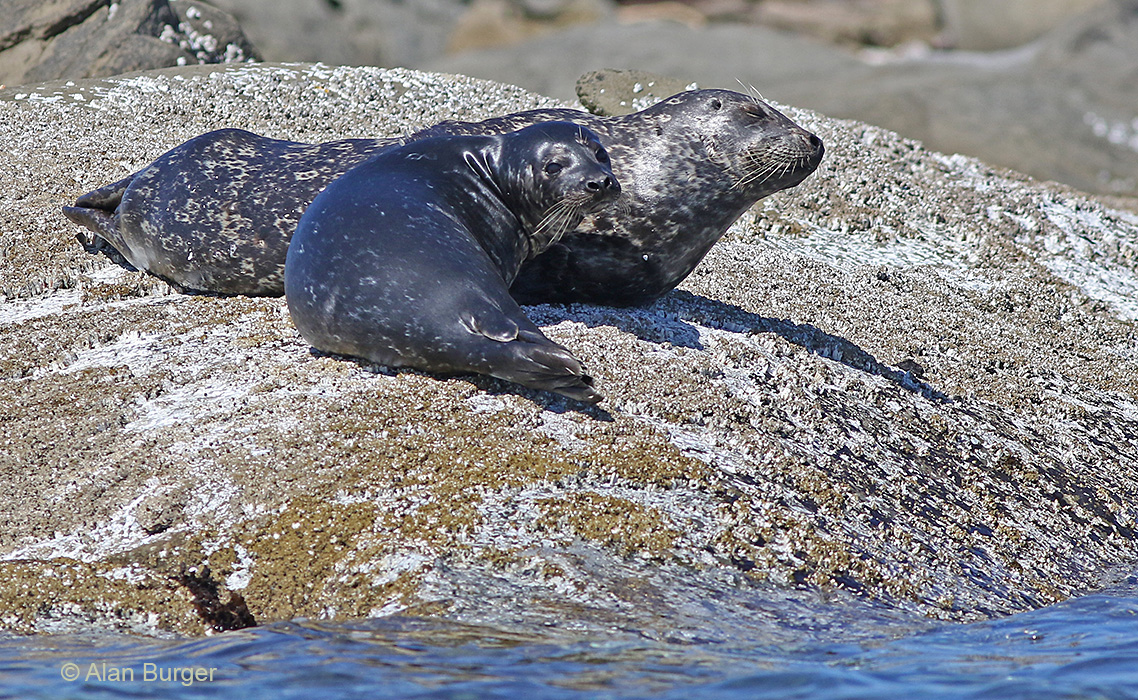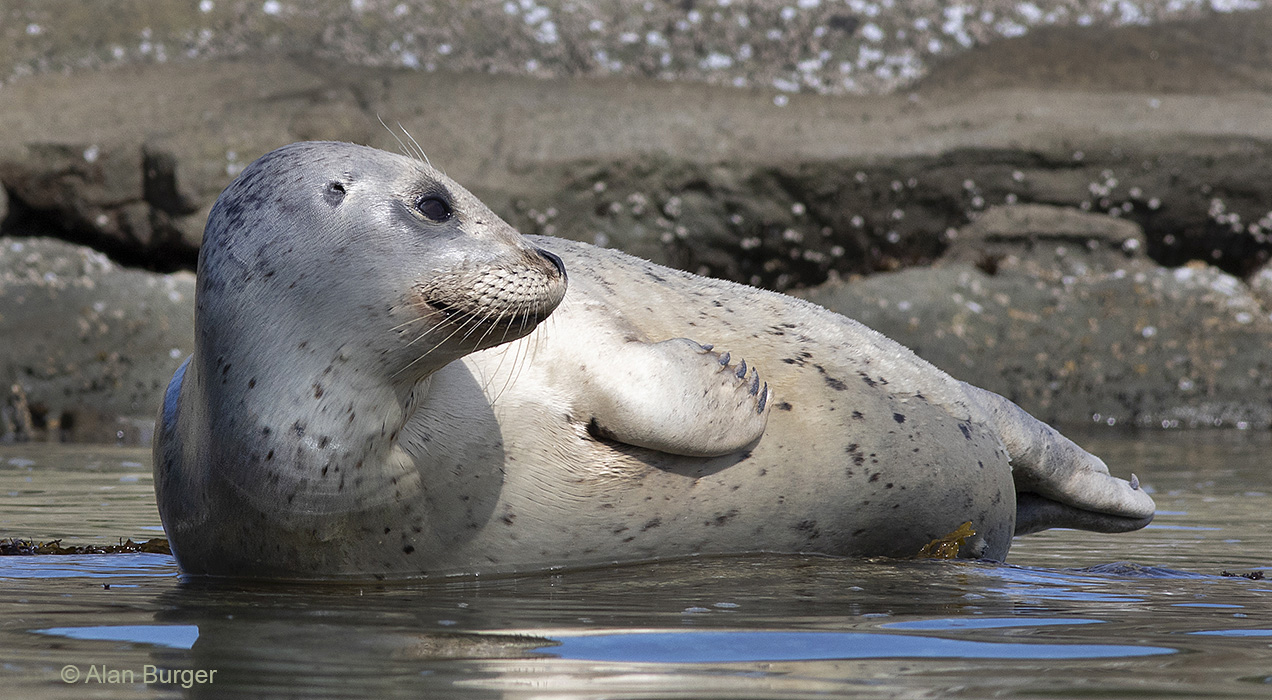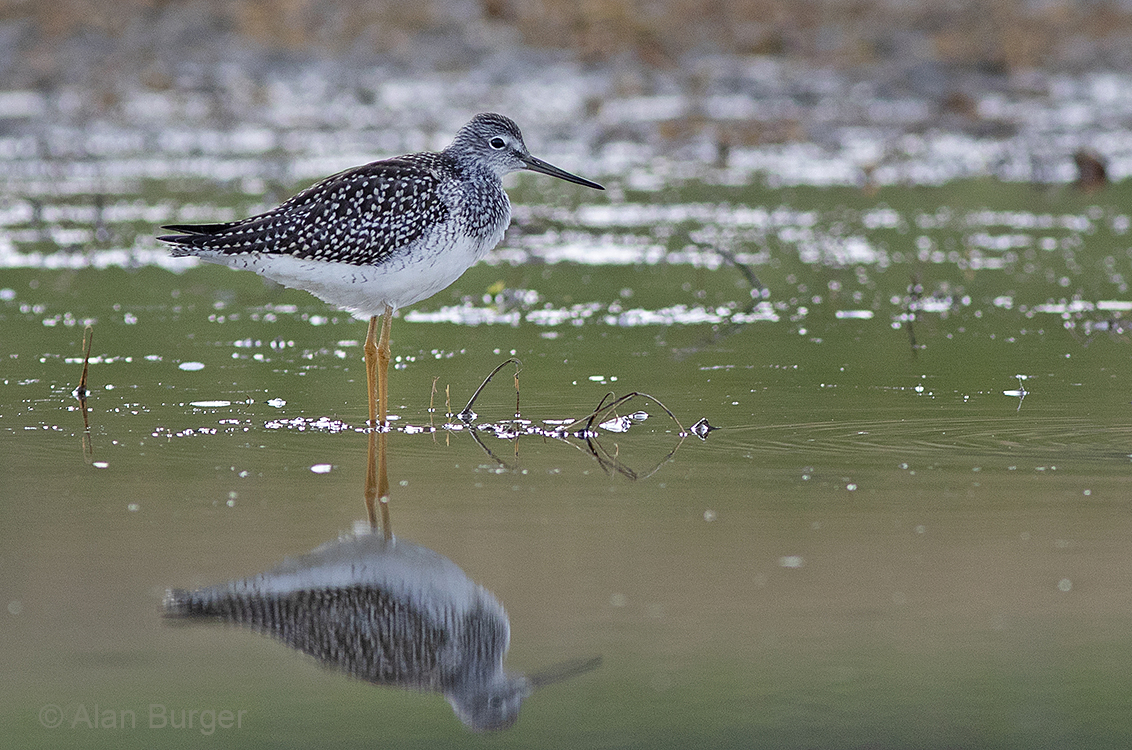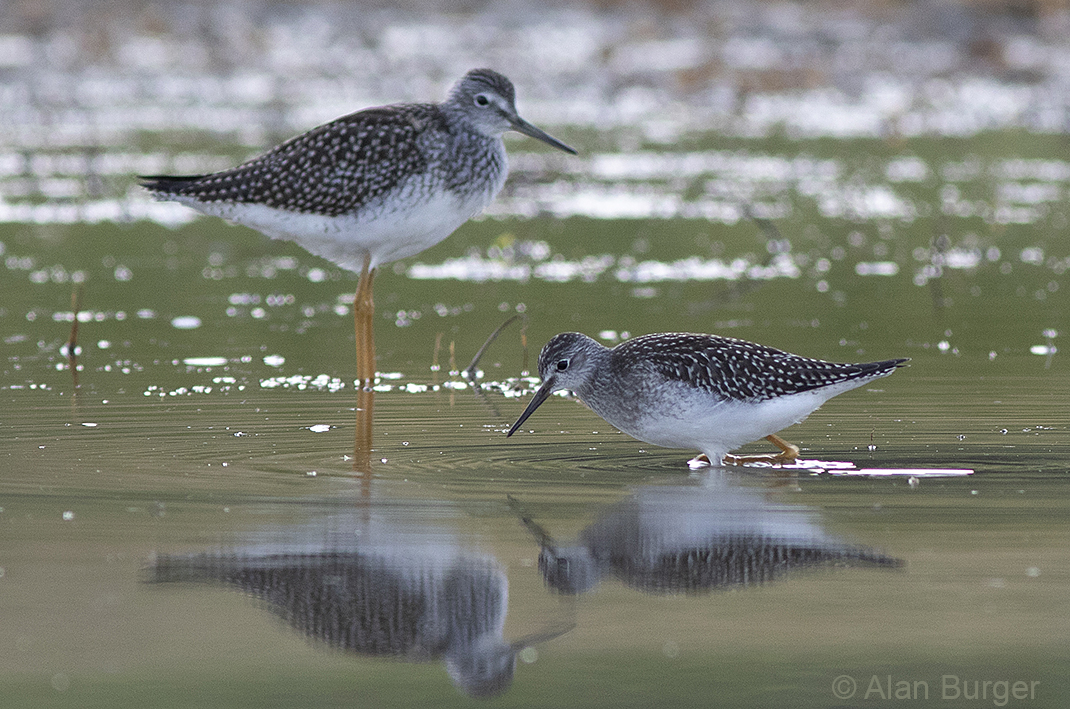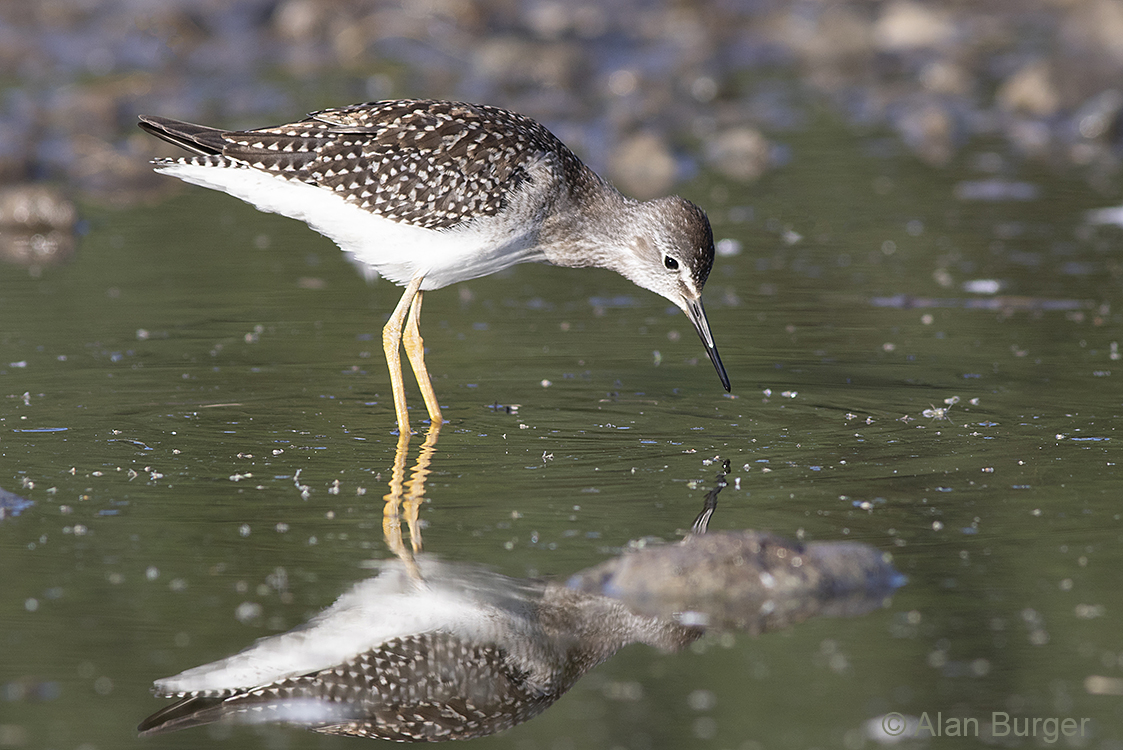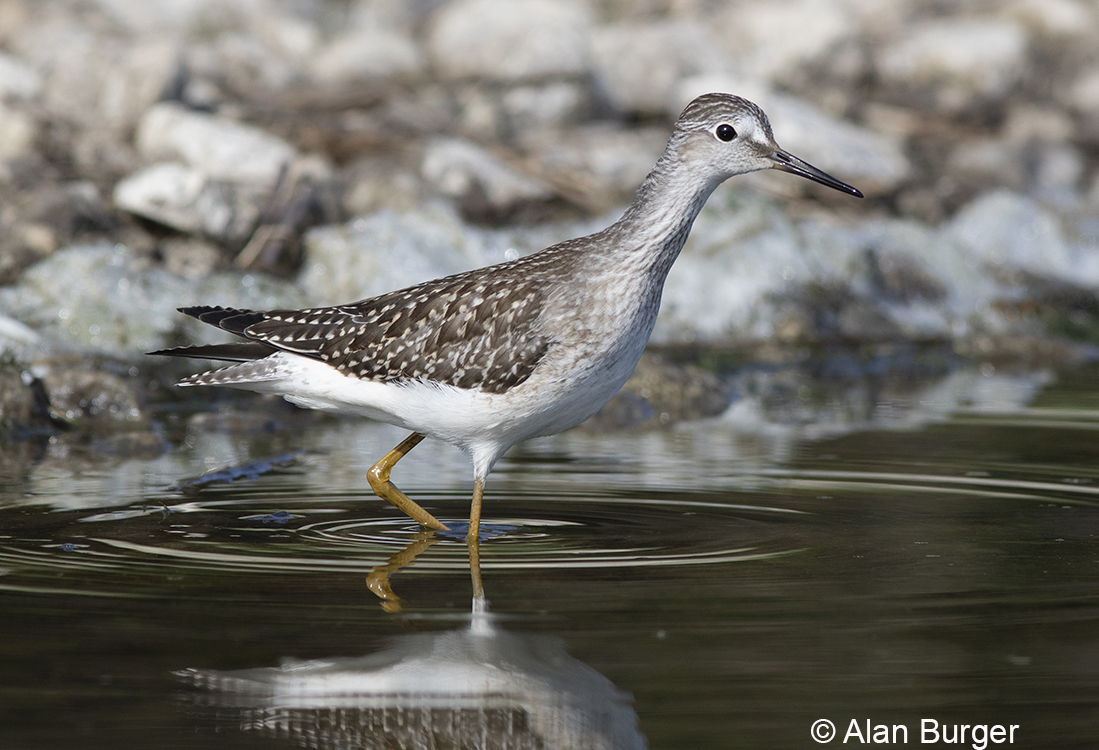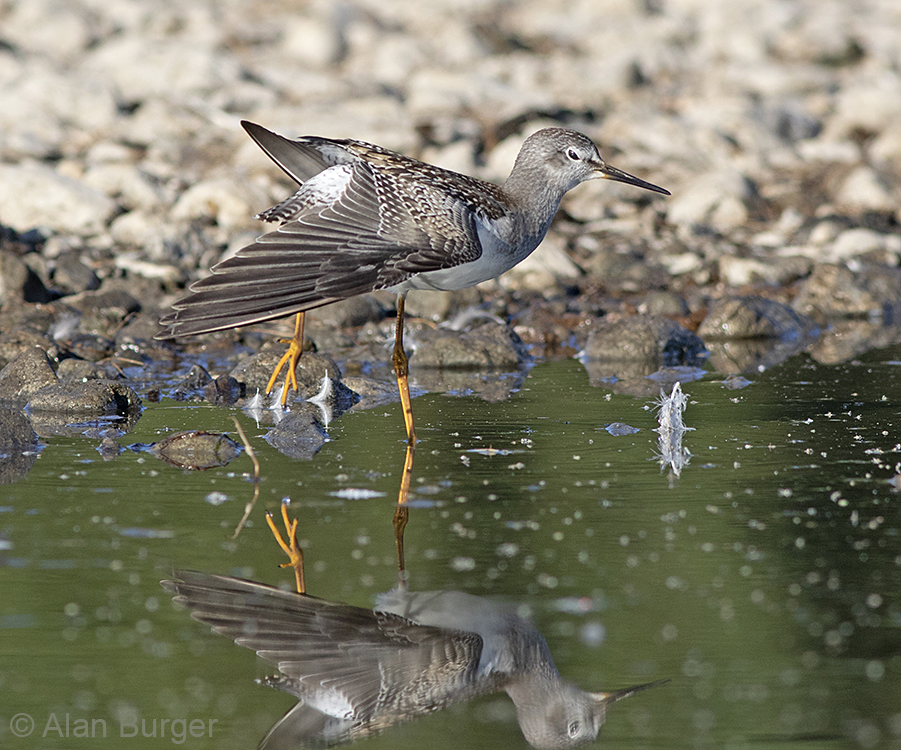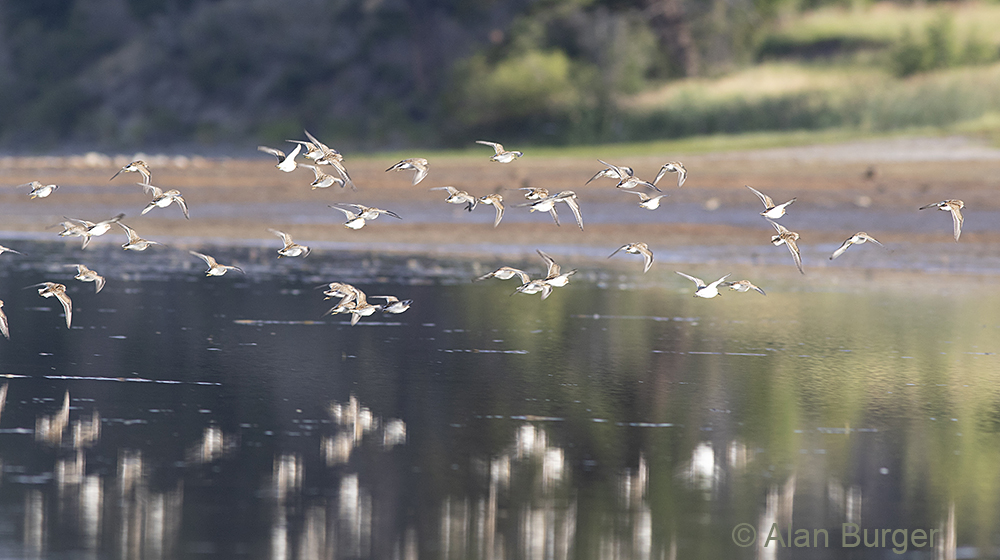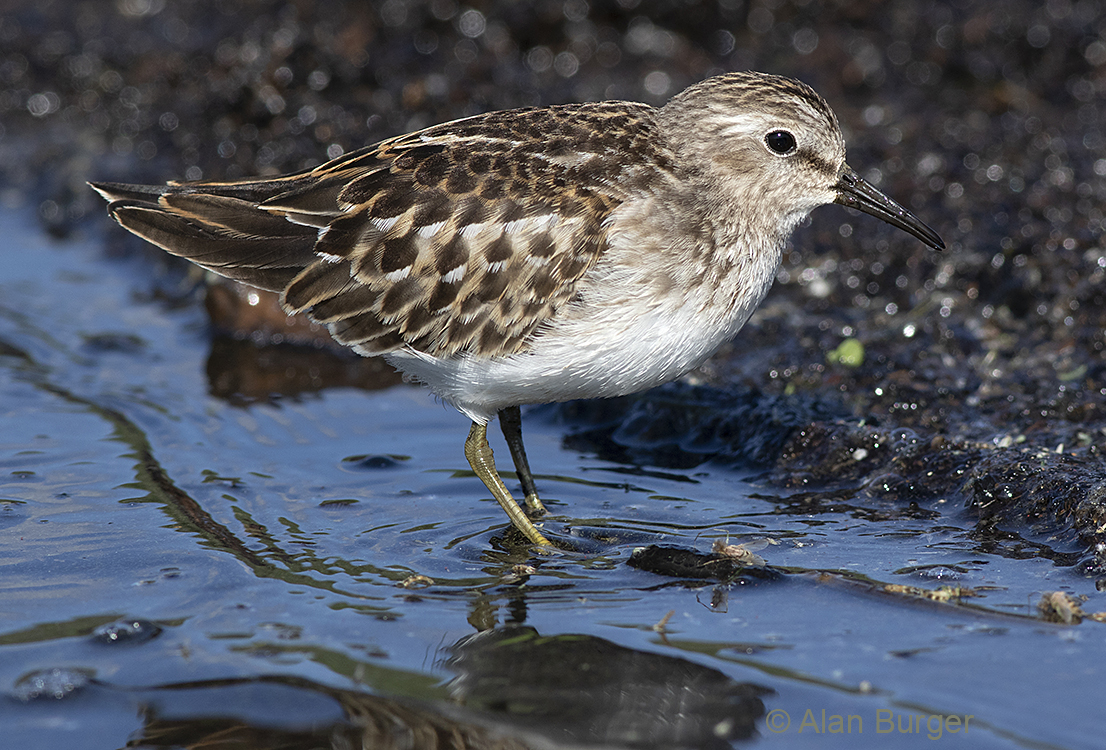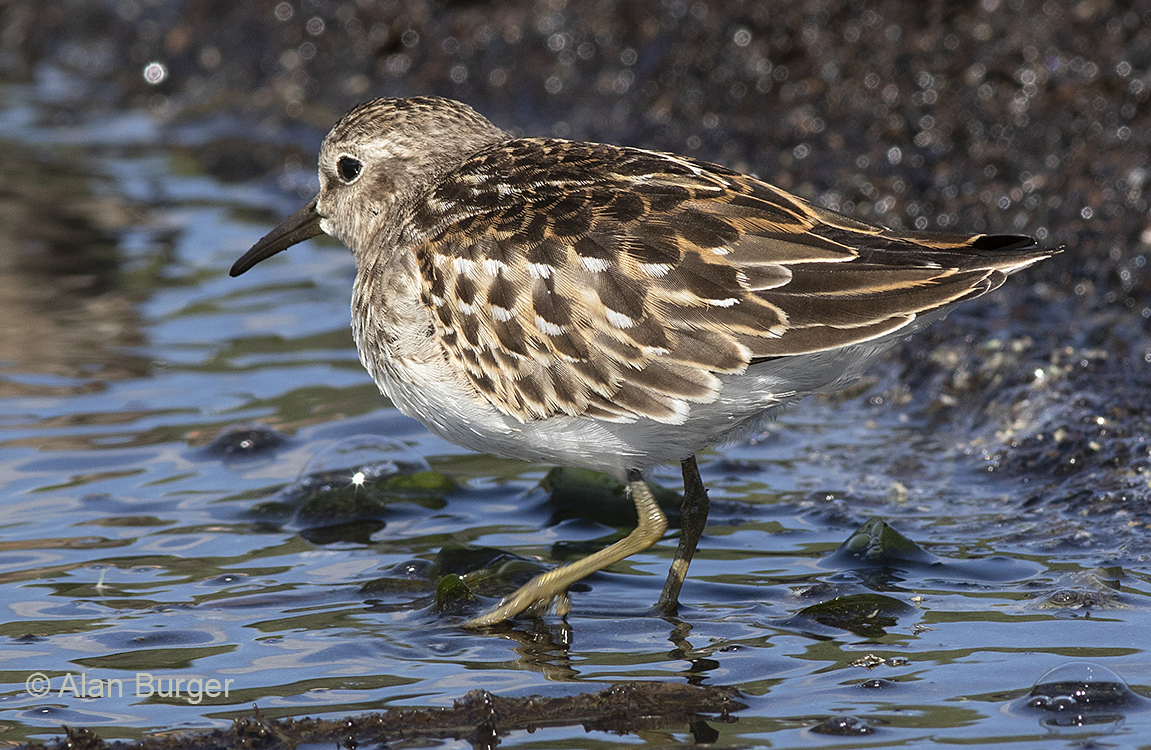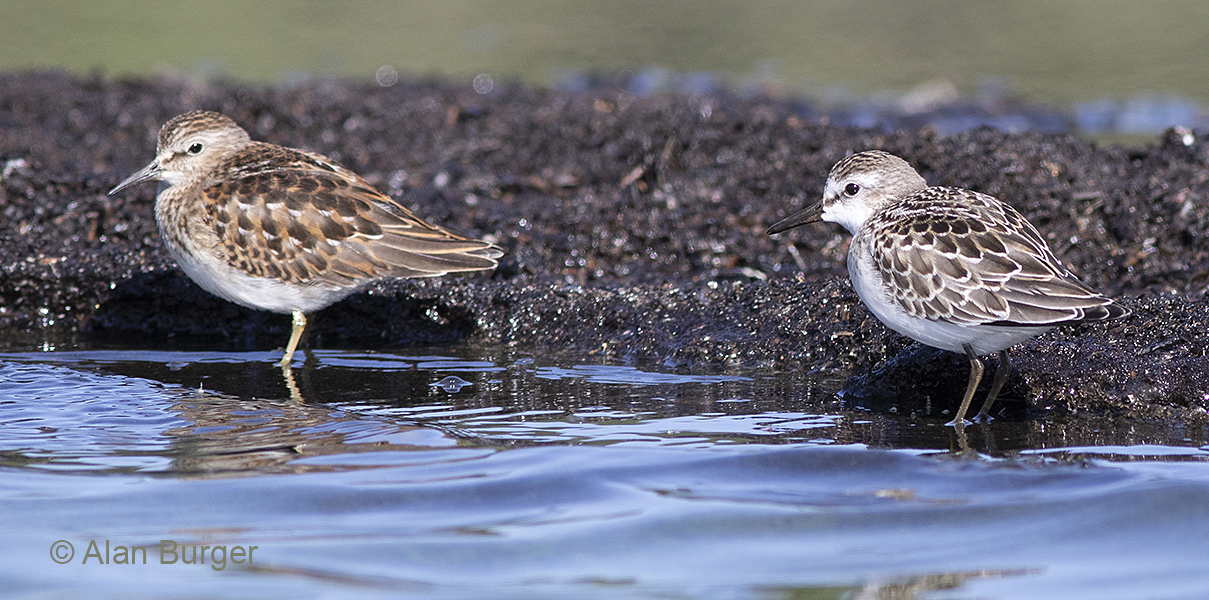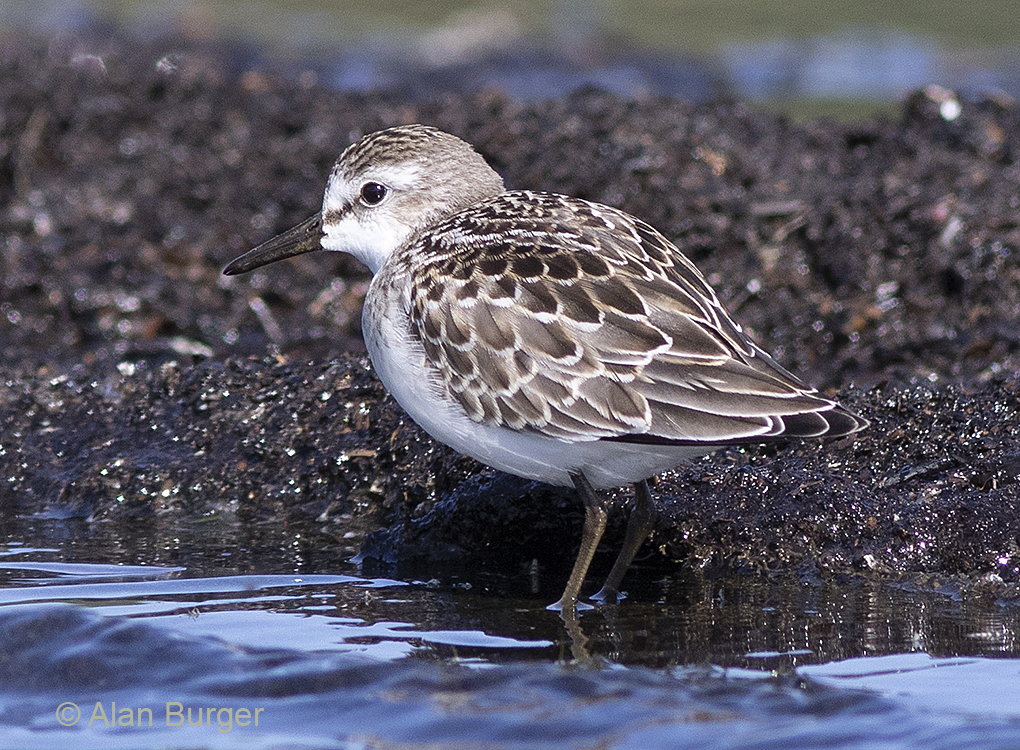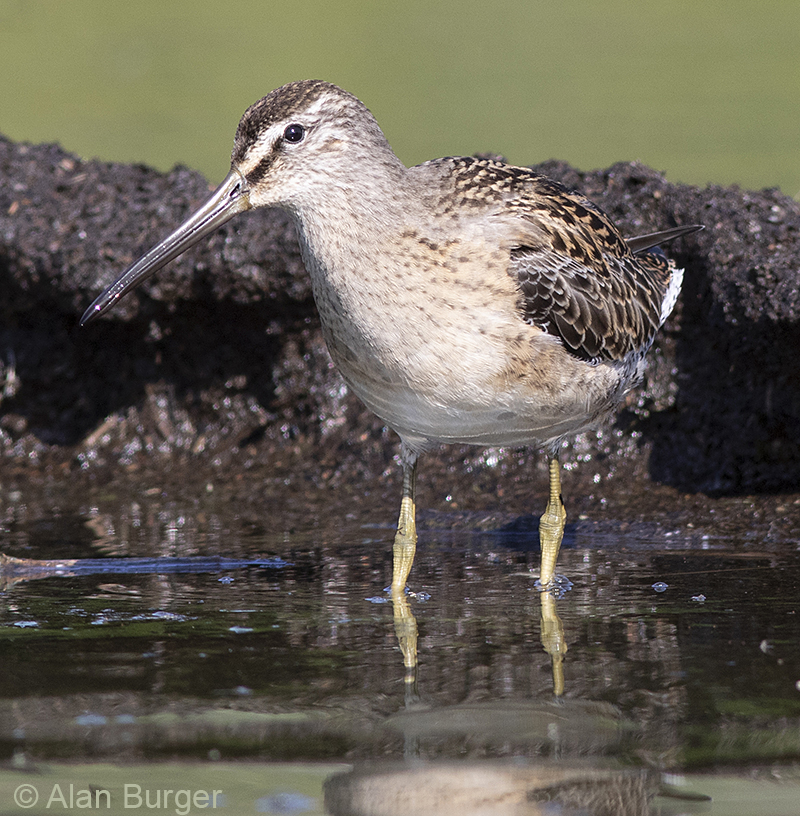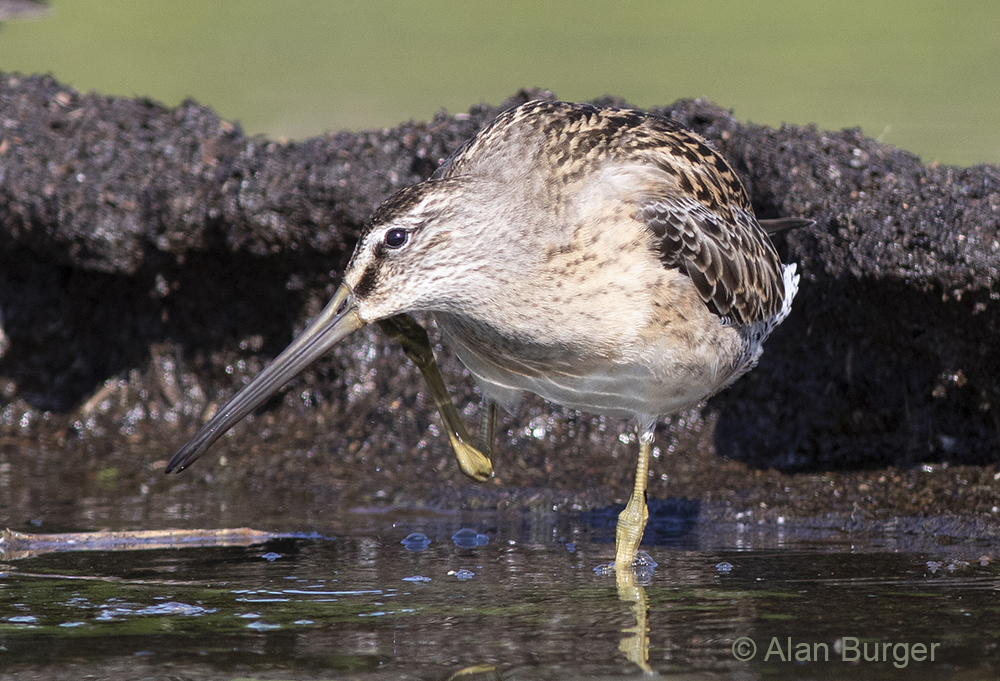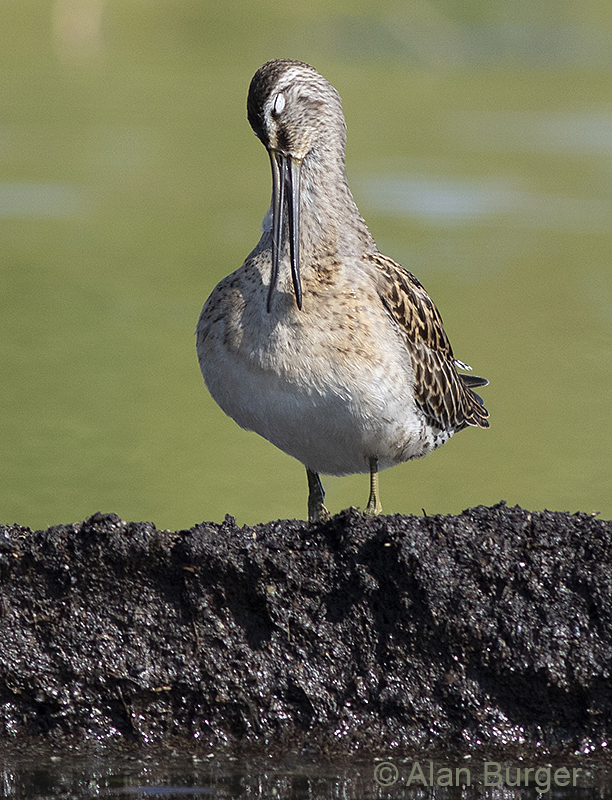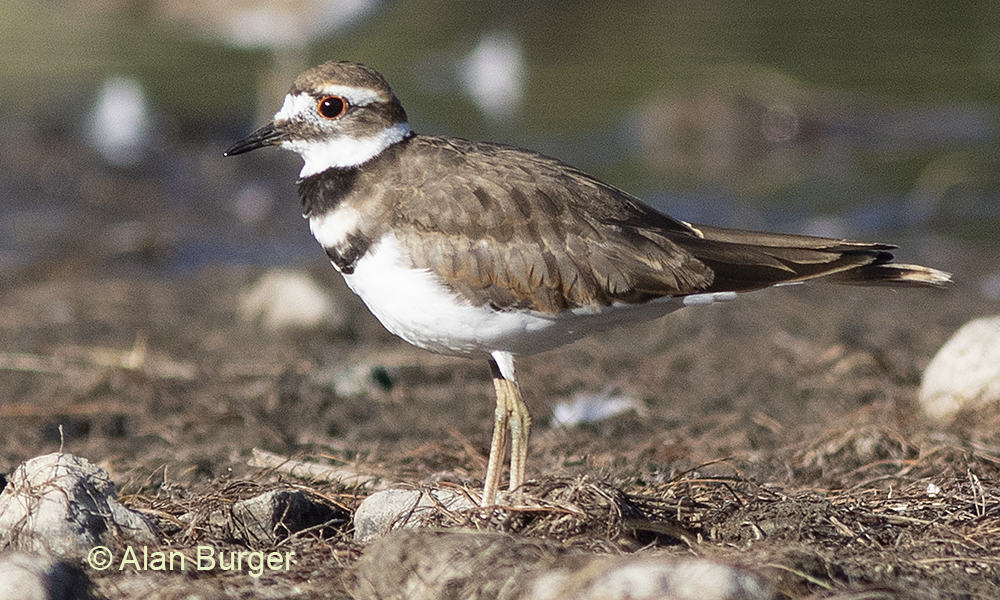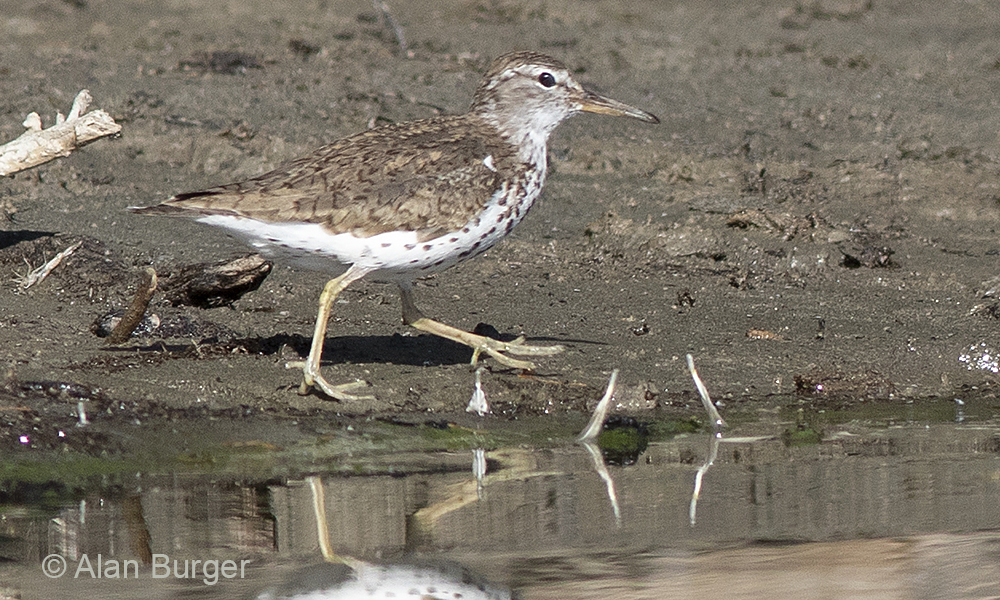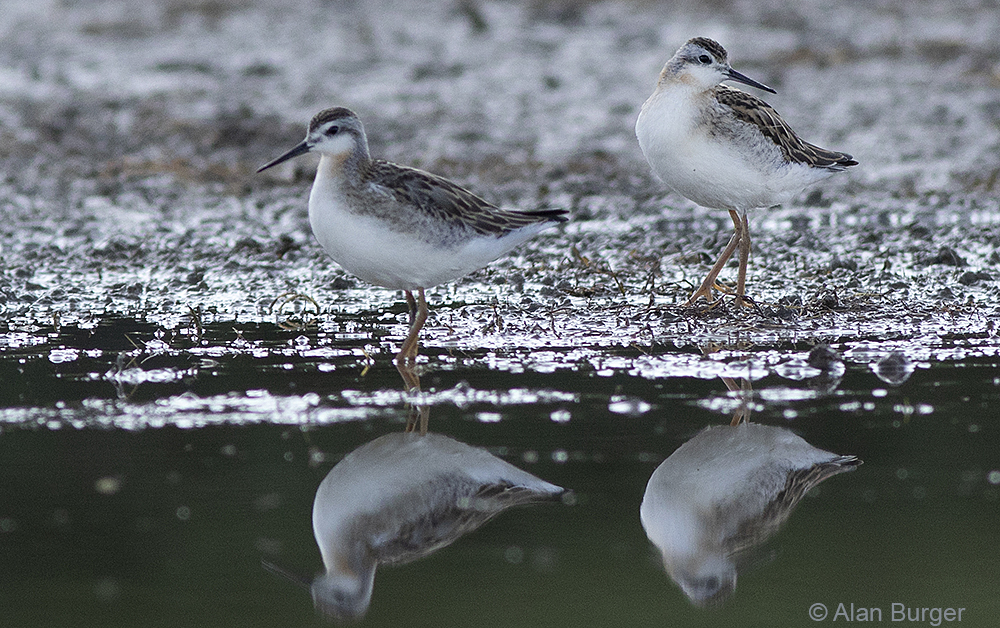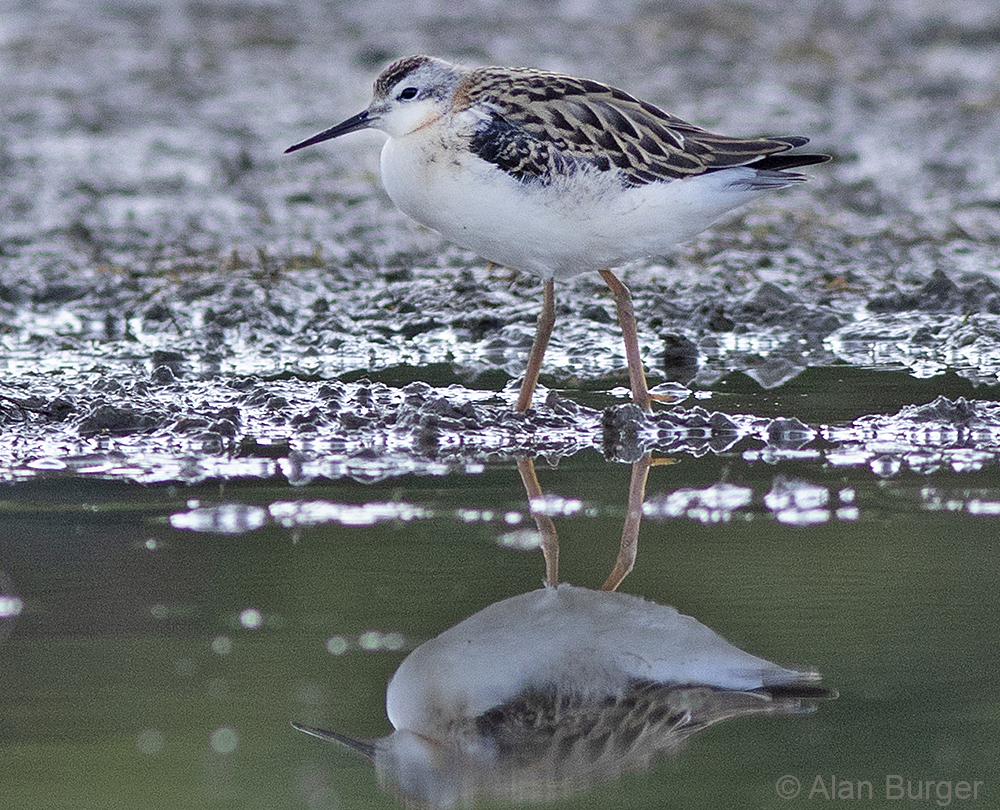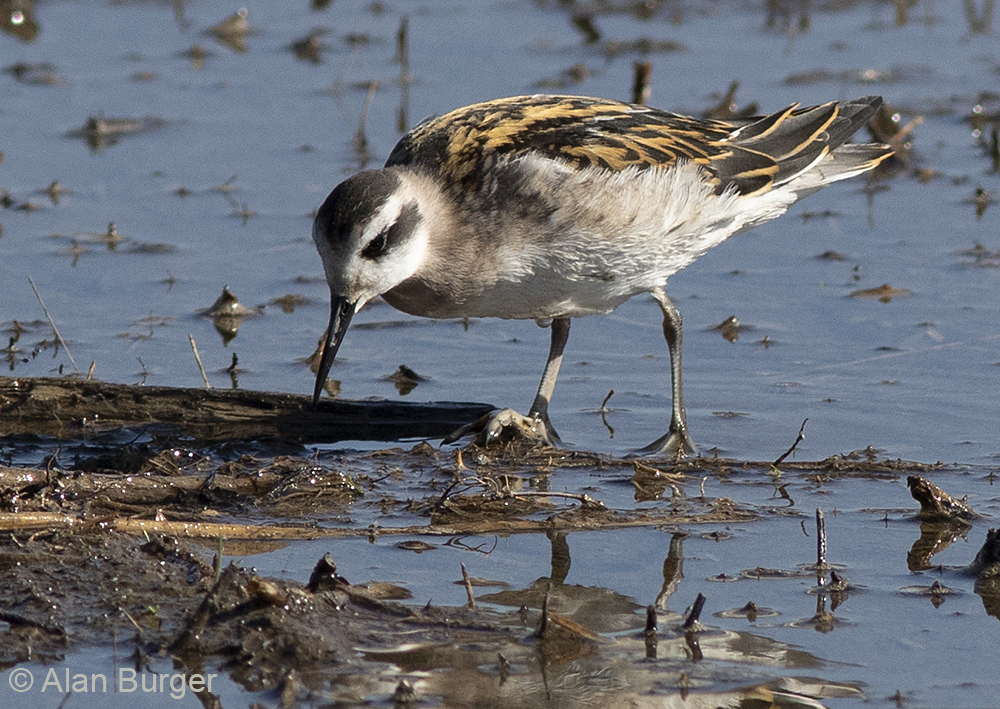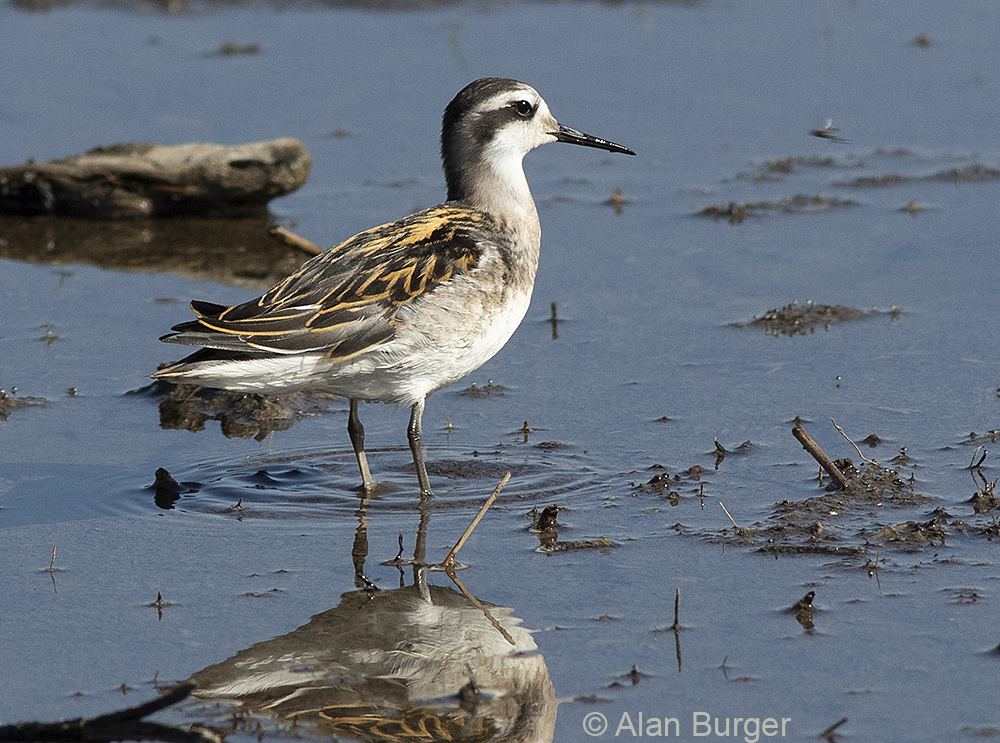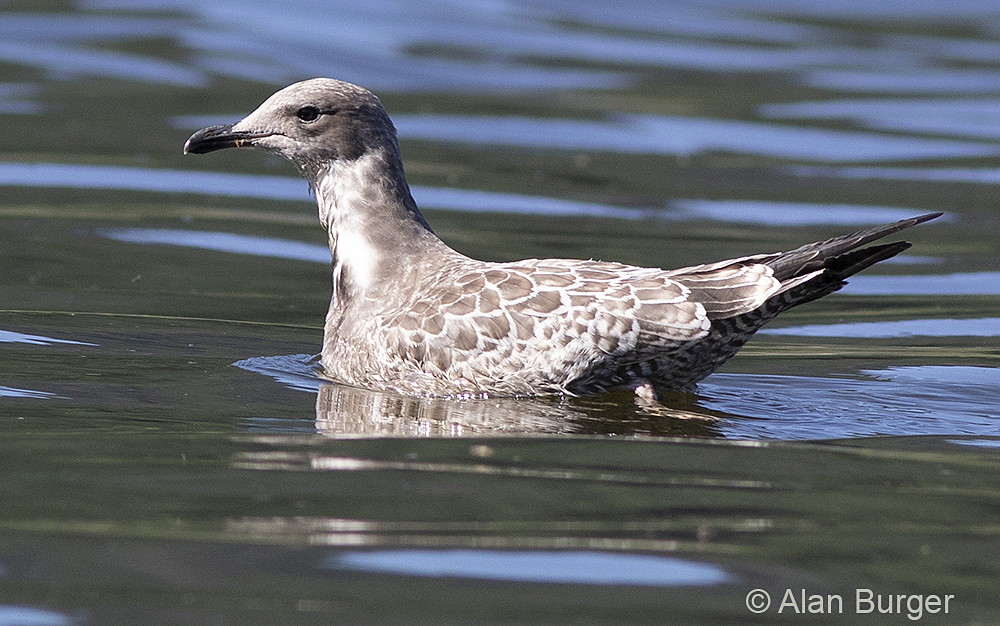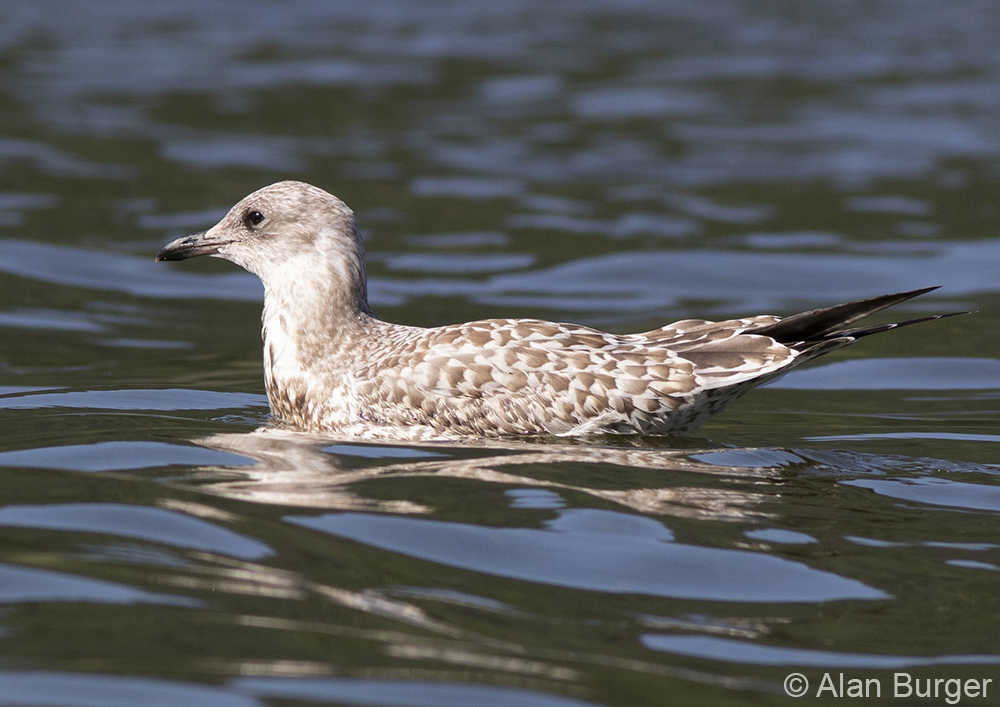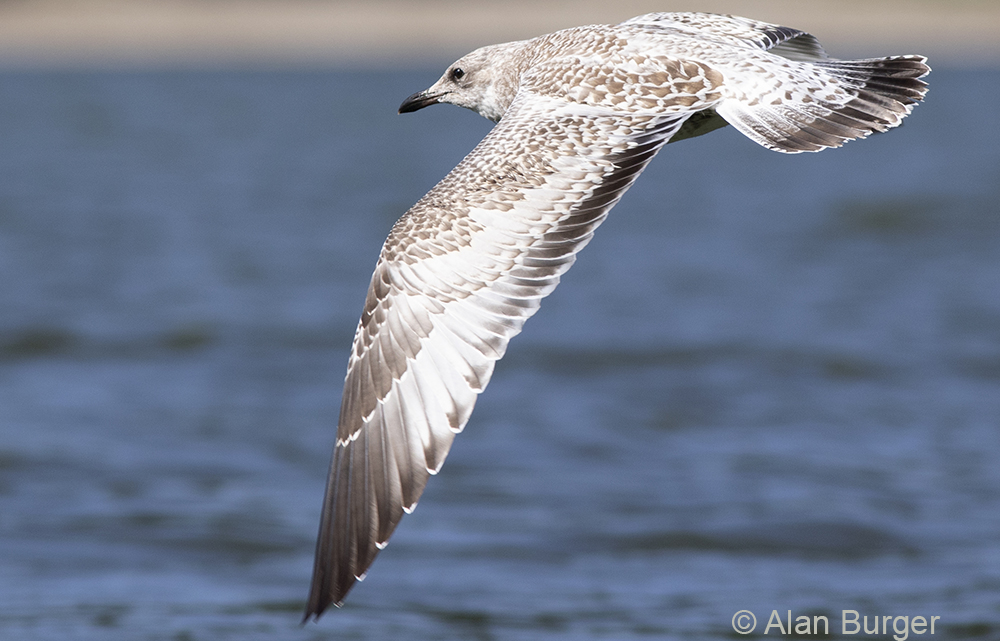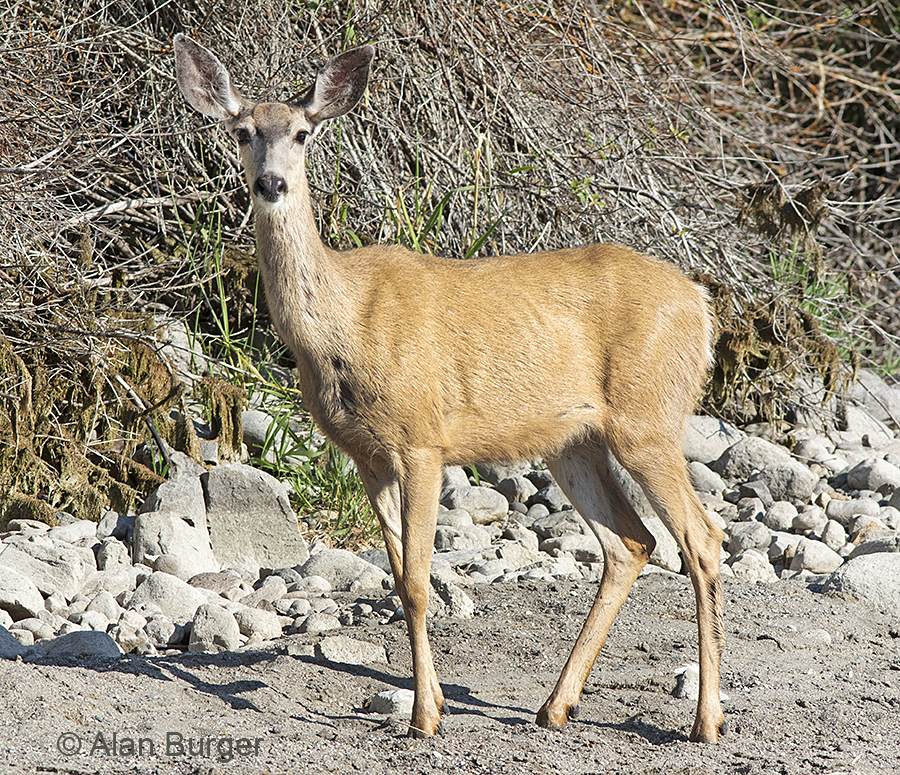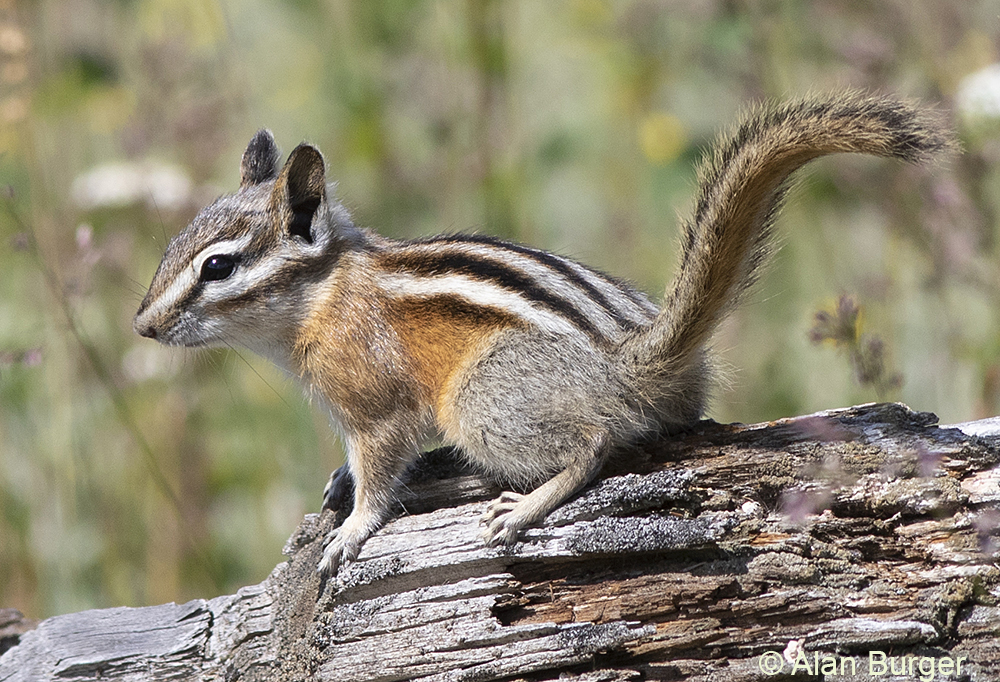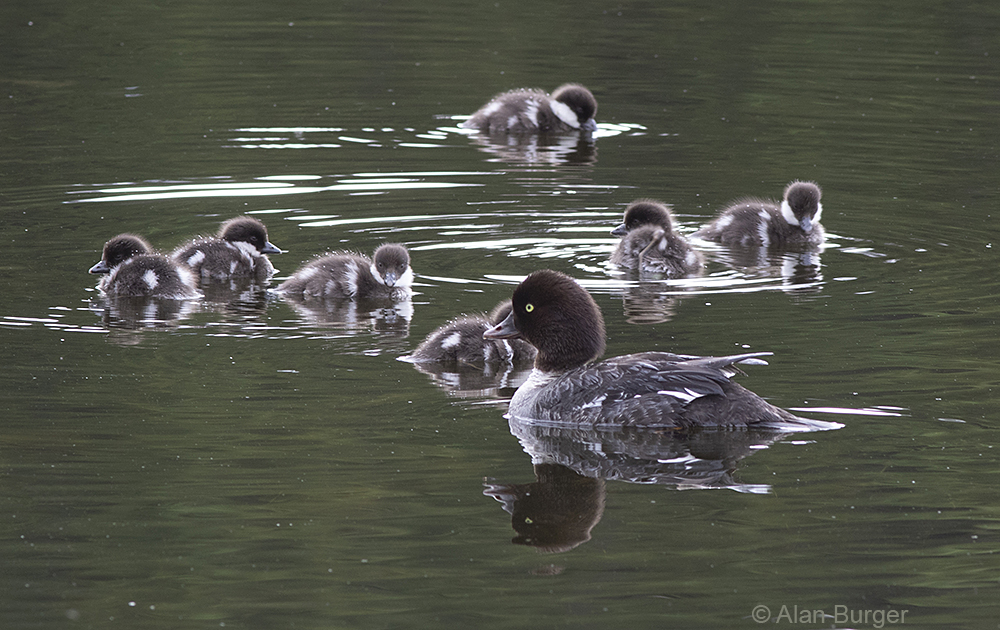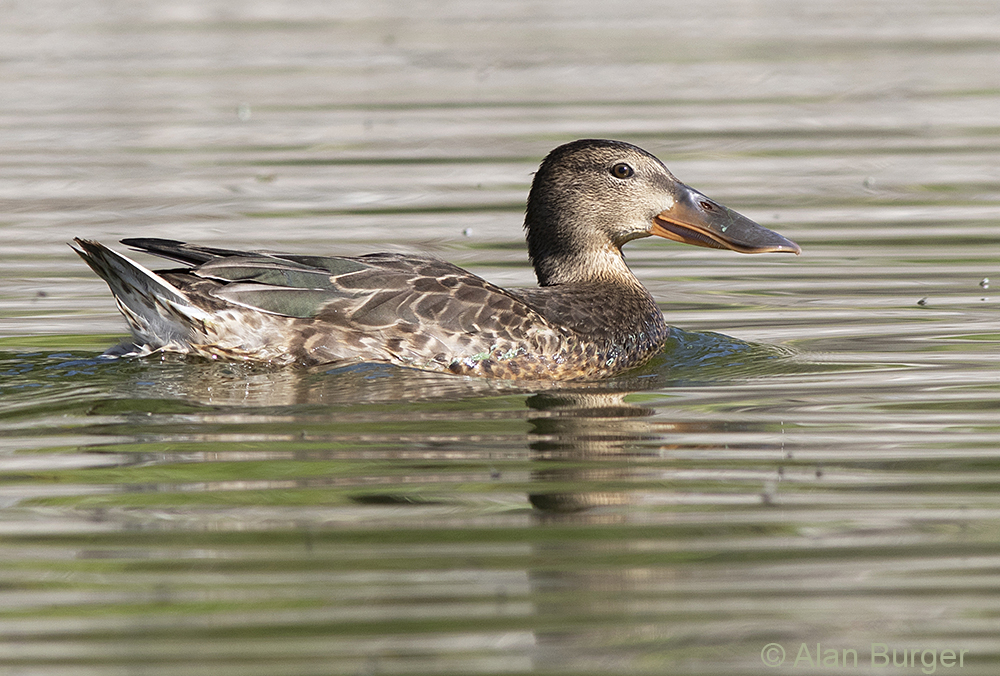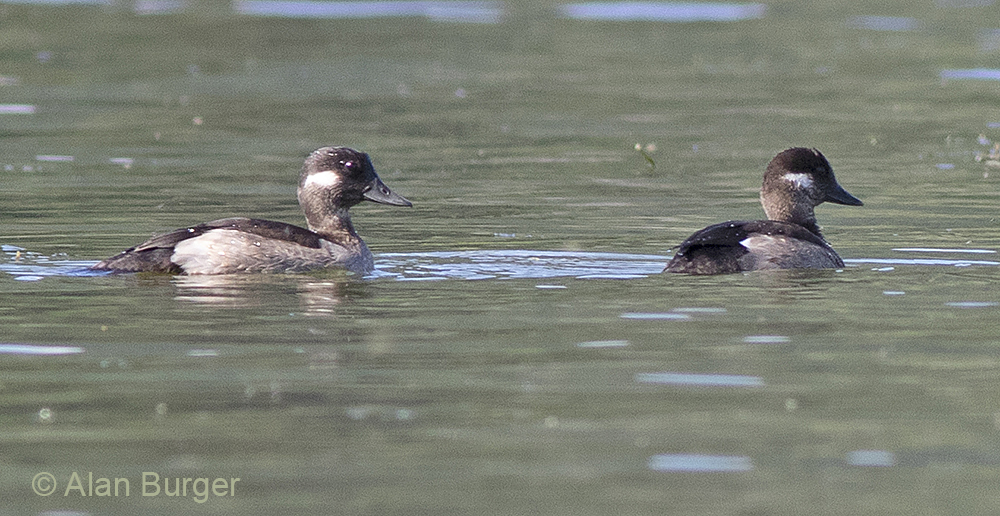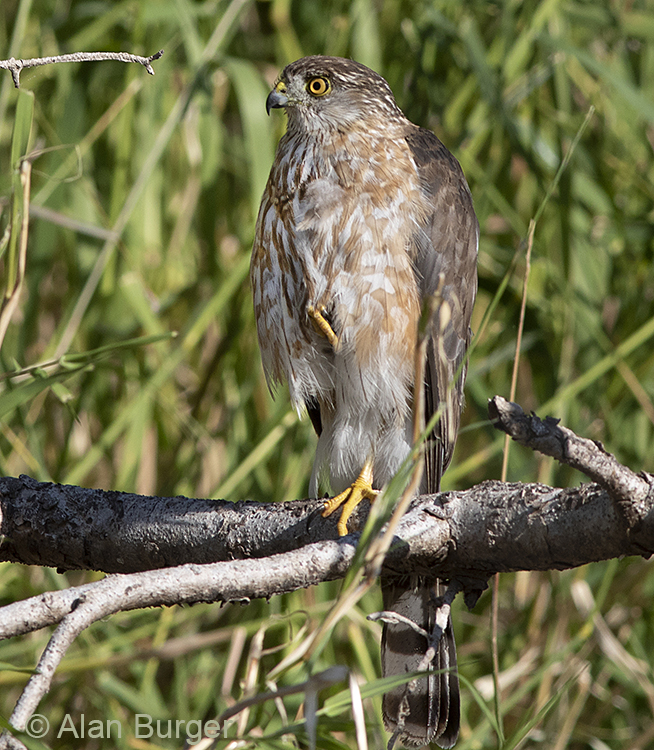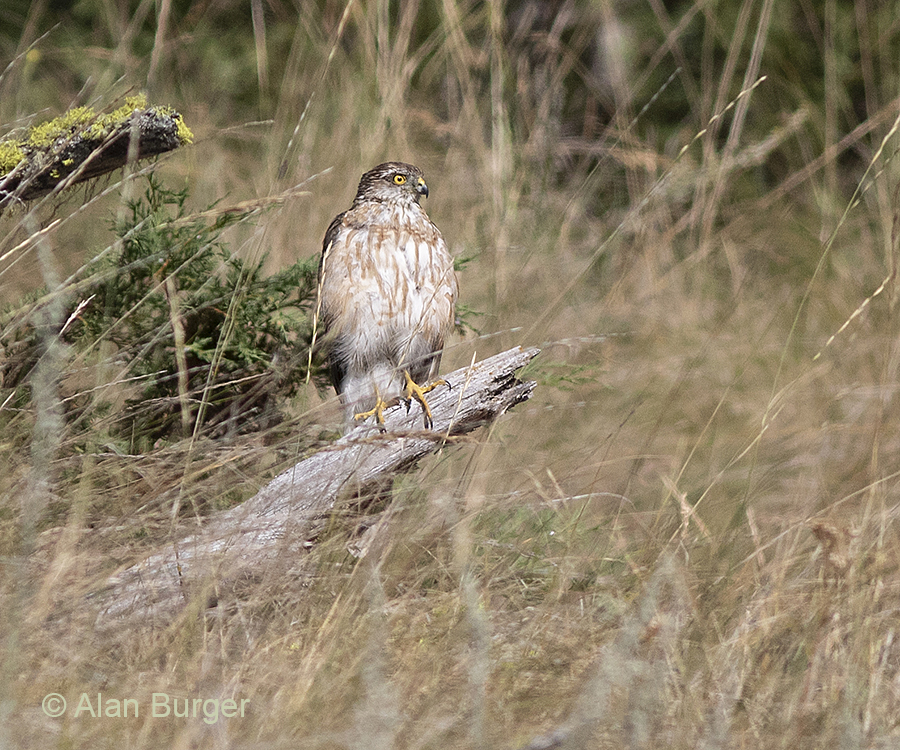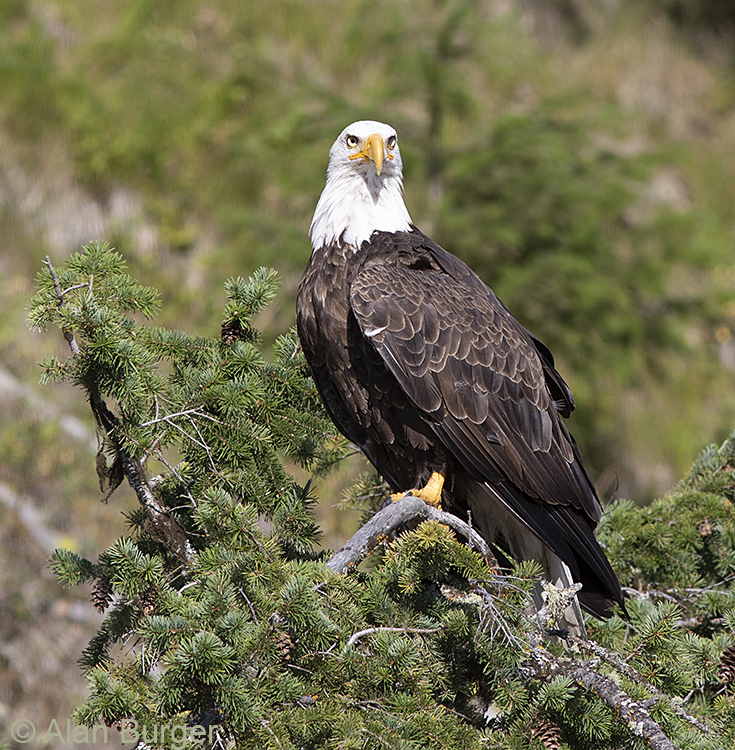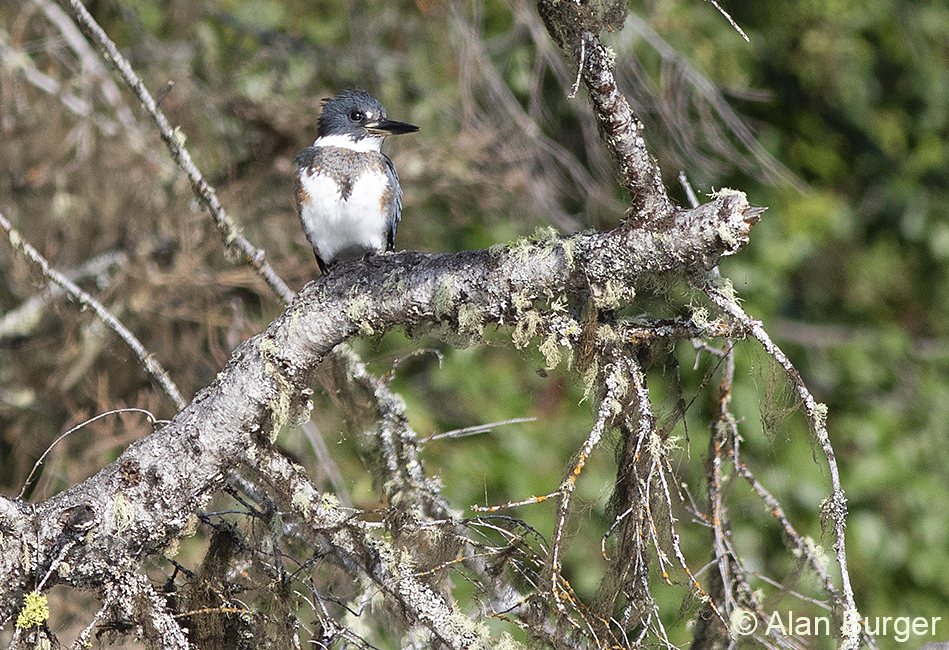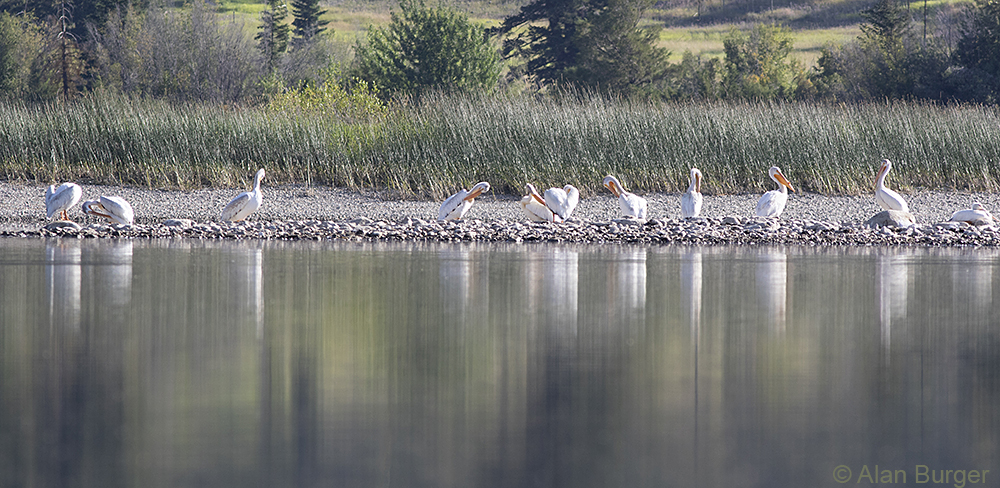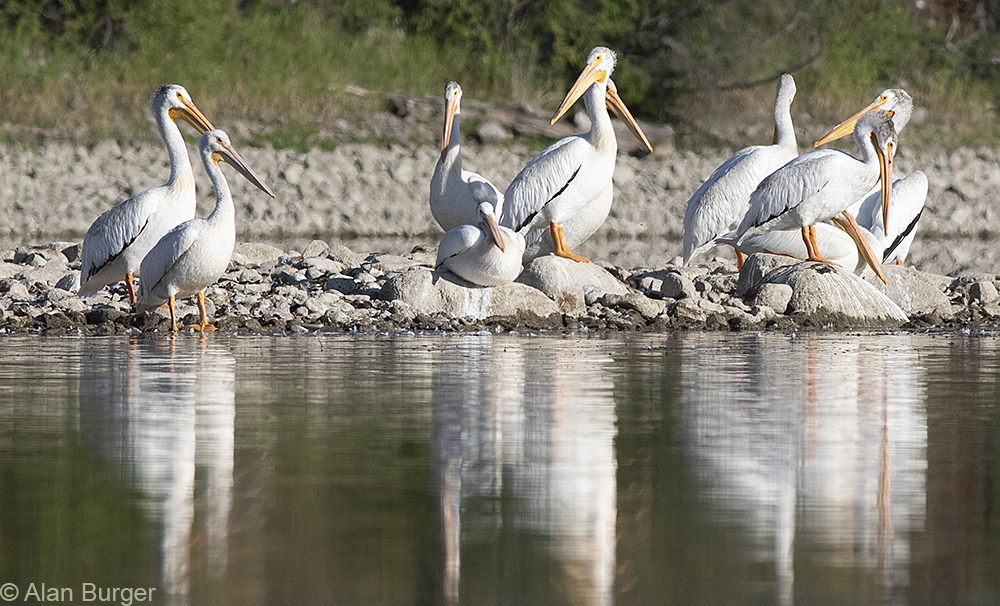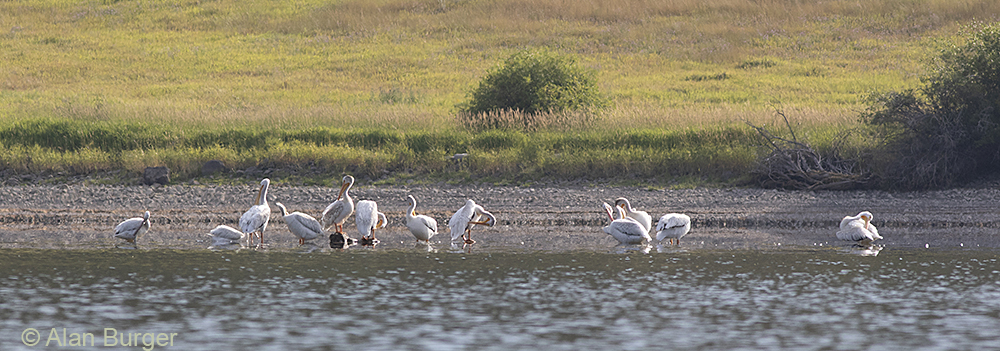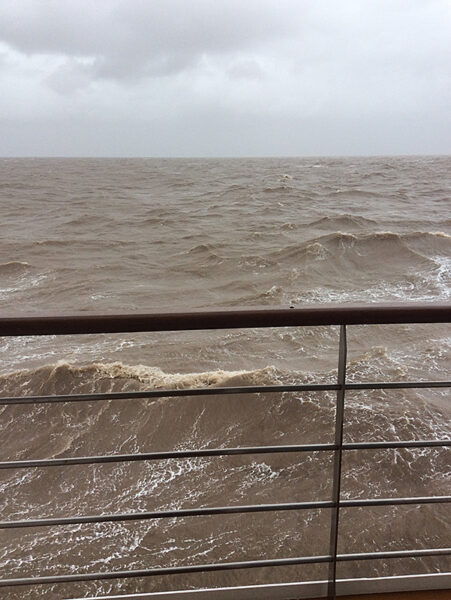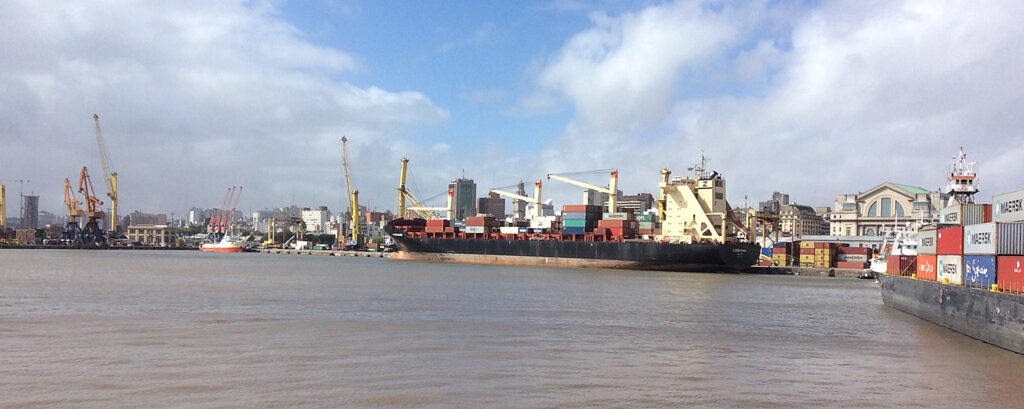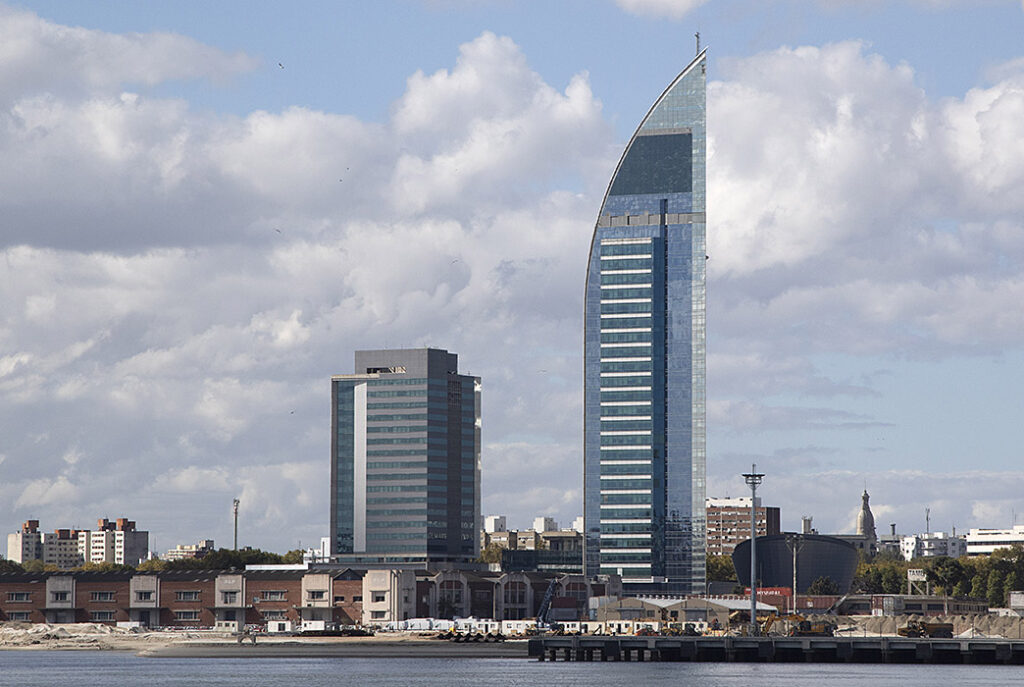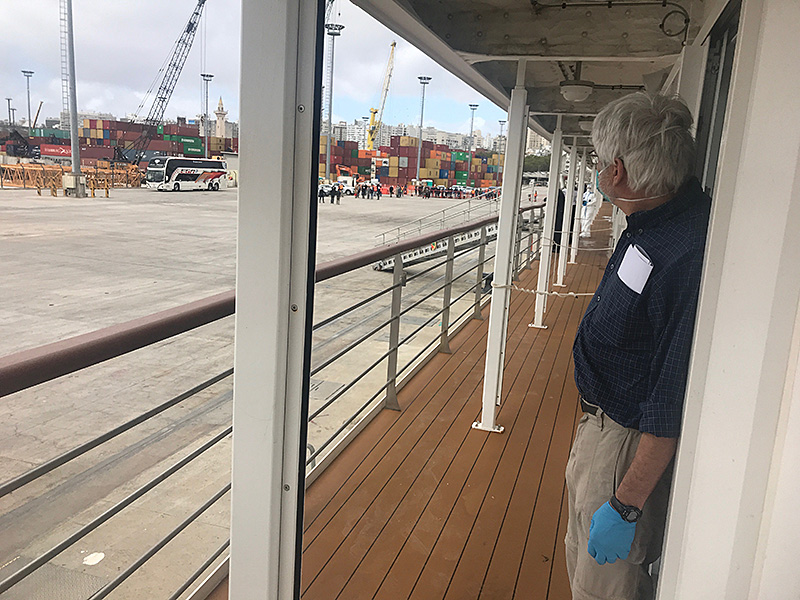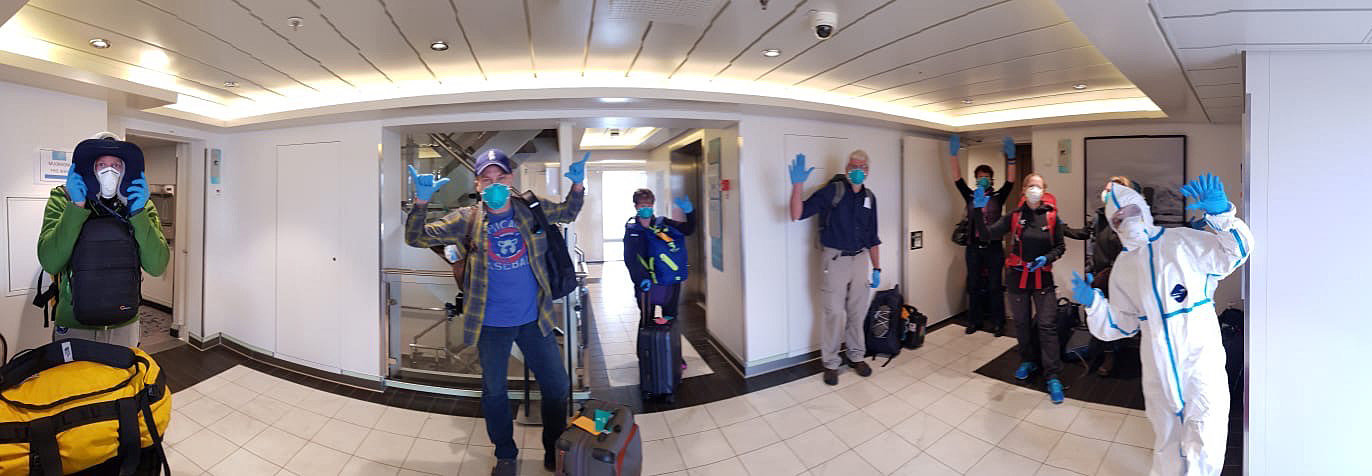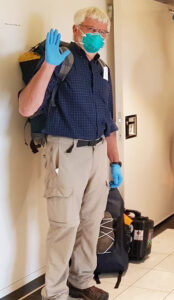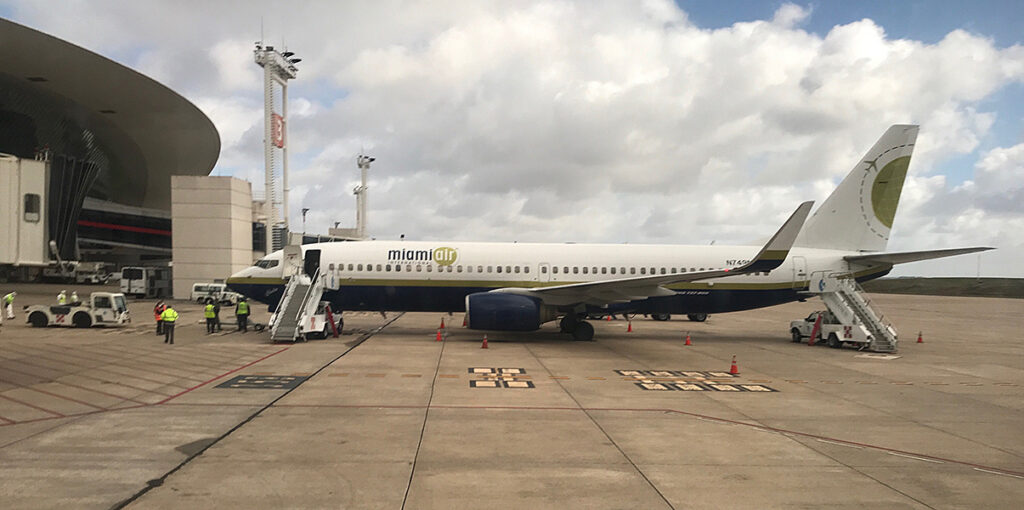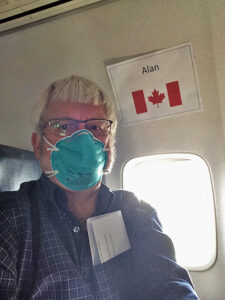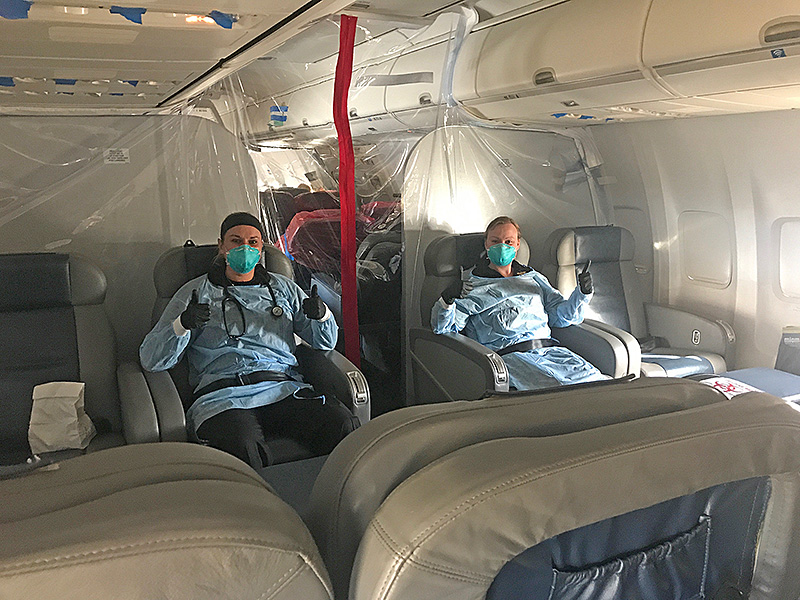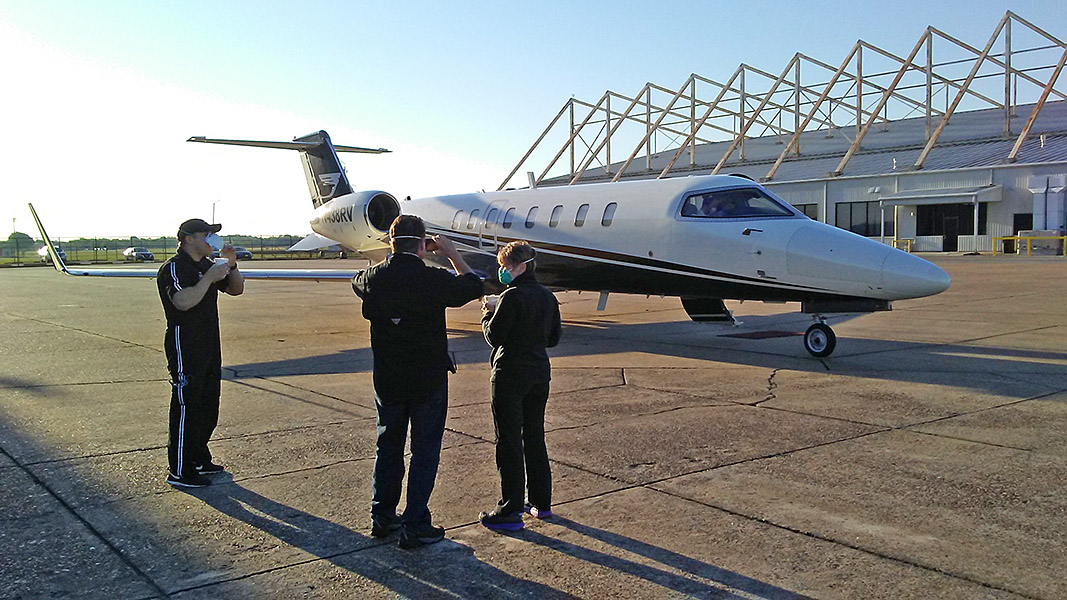It has been a rather brutal summer in the BC interior – with the phenomenal heat bubble (over 40 C in Logan Lake for 3 days in a row) and then the widespread fires and ever-present thick smoke. So we decided to head up to the high mountain country with 3 friends and booked a shuttle ride up to Cathedral Park near the U.S. border. It was smoky much of the time for the 5 days we were there, but much less than in the valleys below, so we enjoyed great camping and alpine hiking.
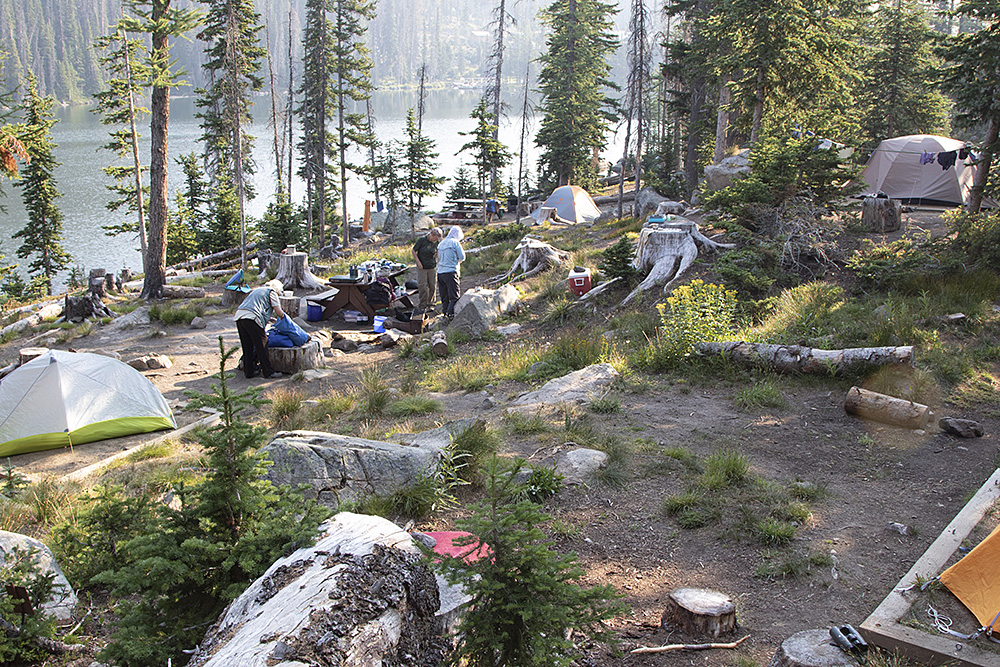
Camp at Quiniscoe Lake, Cathedral Park. We lucked out to get 4 adjacent campsites next to the lake so had a private, very pleasant location.
As usual for Cathedral Park, we were regularly visited by Mountain Goats. They come into the camping areas, attracted by the salt from human urine (people peeing near their tents at night). We used pee-bottles as recommended.
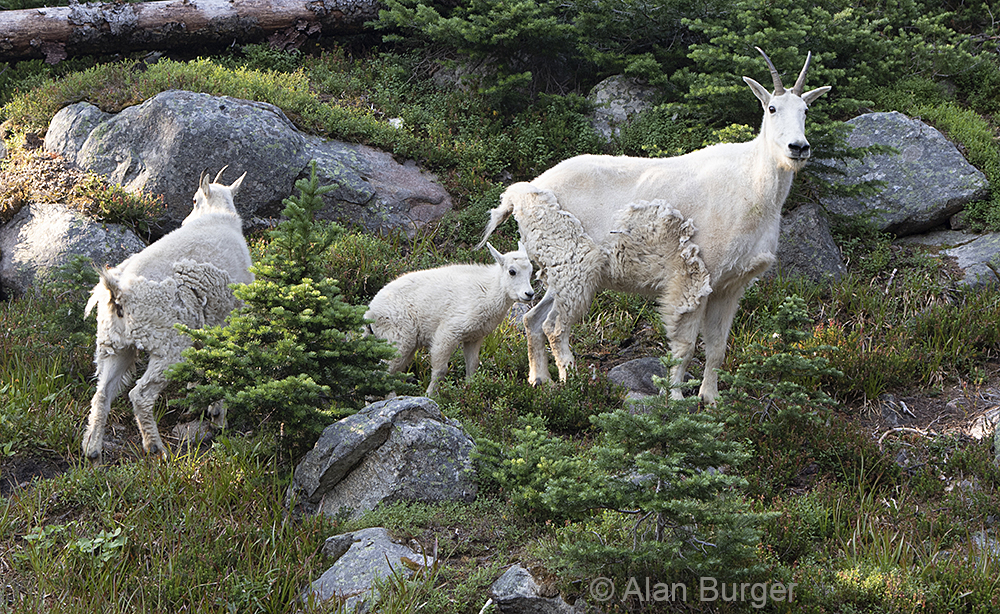
One of the families of Mountain Goat that came by our camp every day. This is a female with both this year’s and last year’s kids. Photo: © Alan Burger
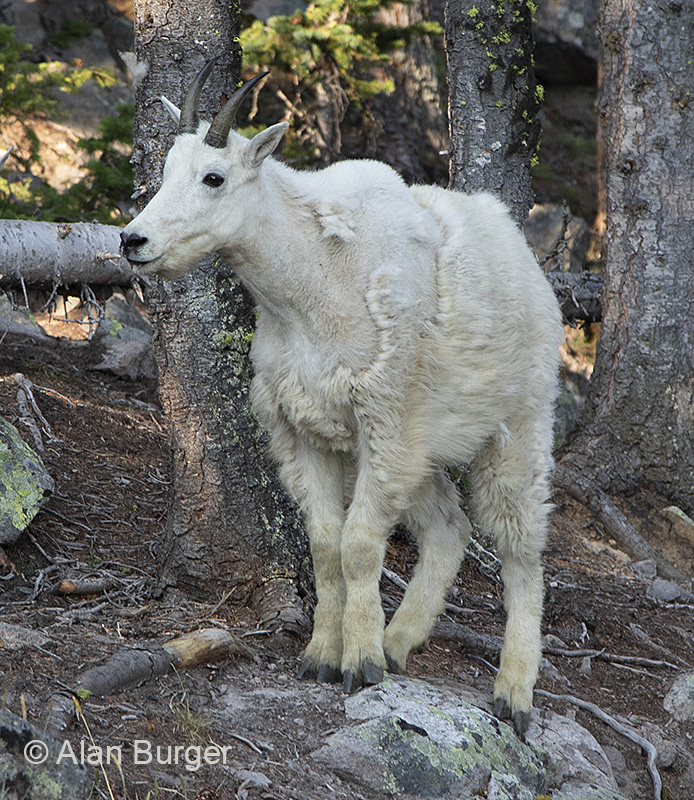
One of the many immature Mountain Goats. It is shedding the thick winter coat giving it a ragged look. Photo: © Alan Burger
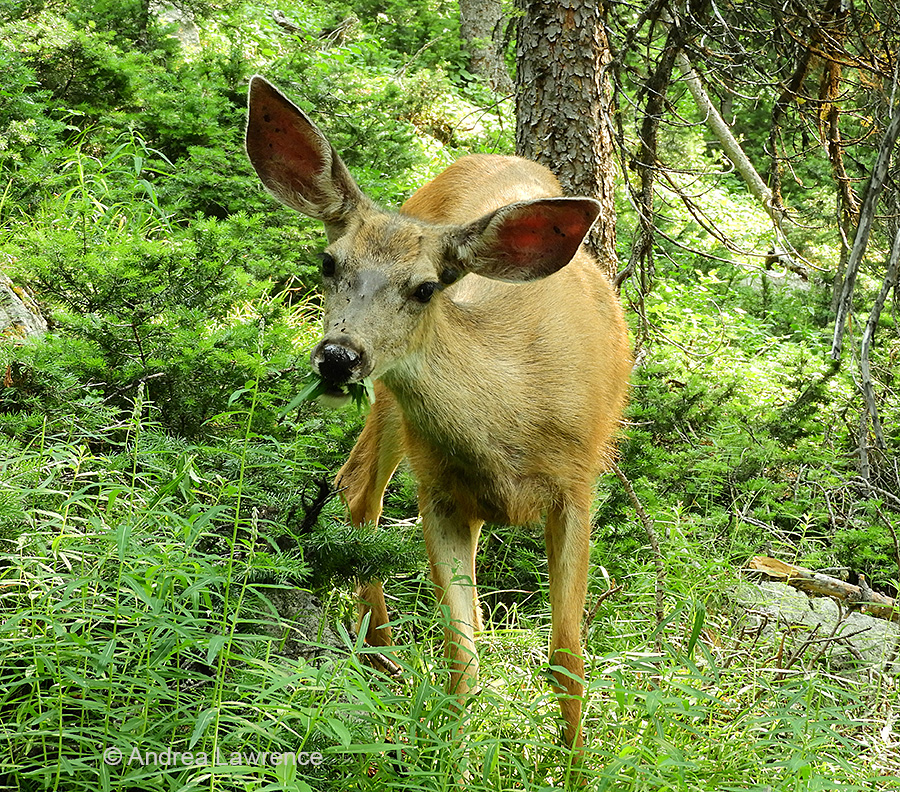
A few Mule Deer were also in the Quiniscoe Lake area. Notice the flies on the deer’s nose. This year we were plagued by mosquitoes, black-flies and no-see-ums – a product of the warm summer no doubt. Photo: © Andrea Lawrence
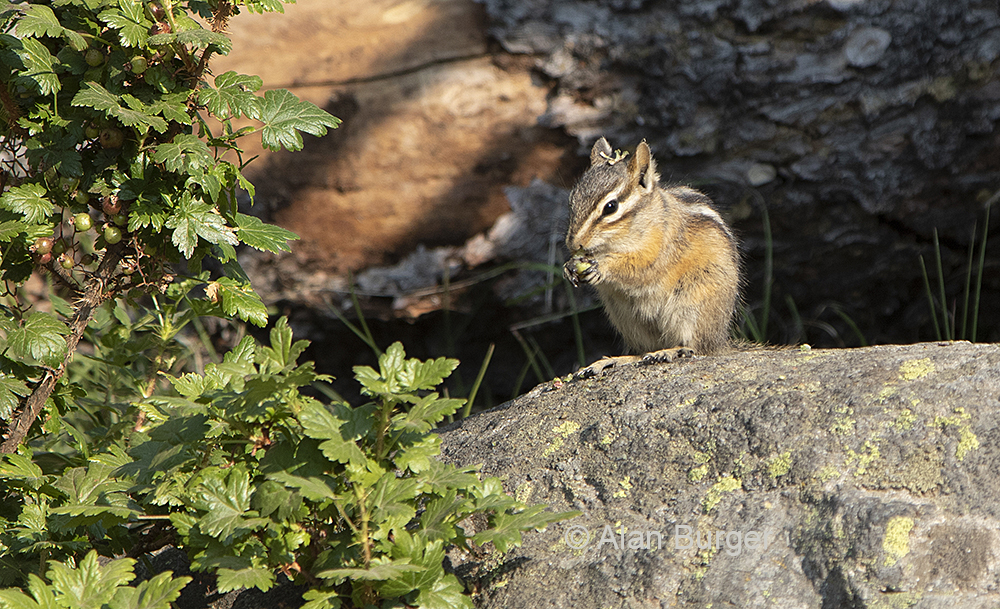
Yellow-pine Chipmunks were all over the camp area and beyond. This one is eating currants from the bush next to it. Chipmunks provide lots of entertainment, as long as they aren’t getting into one’s food supplies. Photo: © Alan Burger
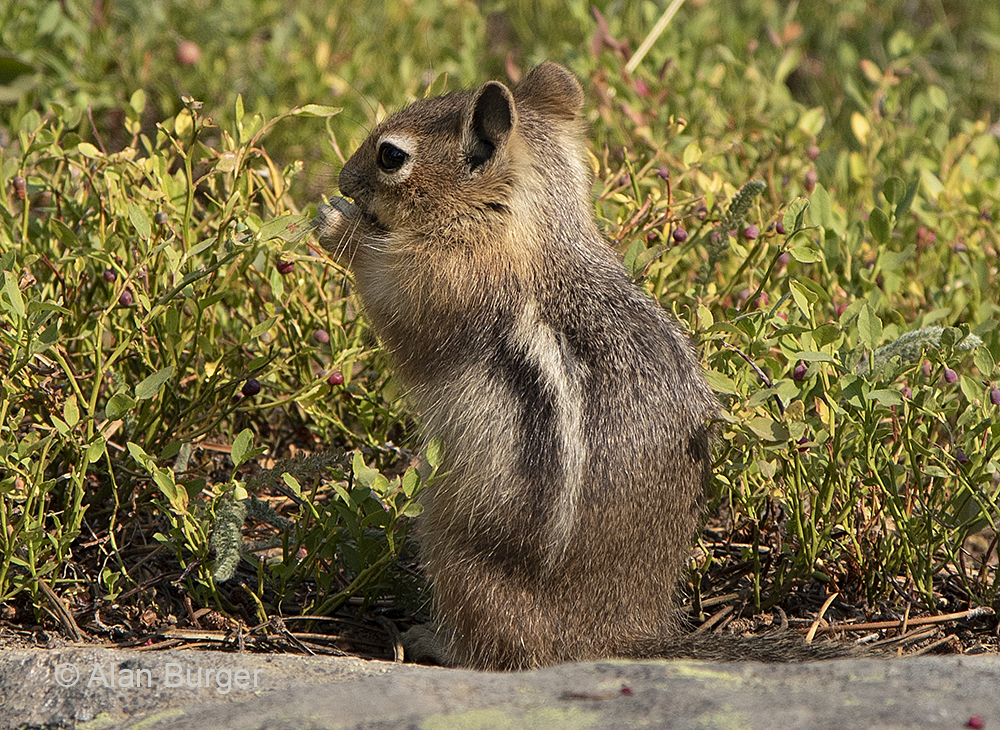
Somewhat bigger than a chipmunk and much less common, a Cascade Golden-mantled Ground-squirrel. This species is restricted to the Cascade Mountains of B.C. and Washington. Photo: © Alan Burger
On our first full day we did the 8 km Diamond Trail loop and side trip to Scout Lake. This covers a wide range of habitats from sparse open alpine to lush meadows and forest.
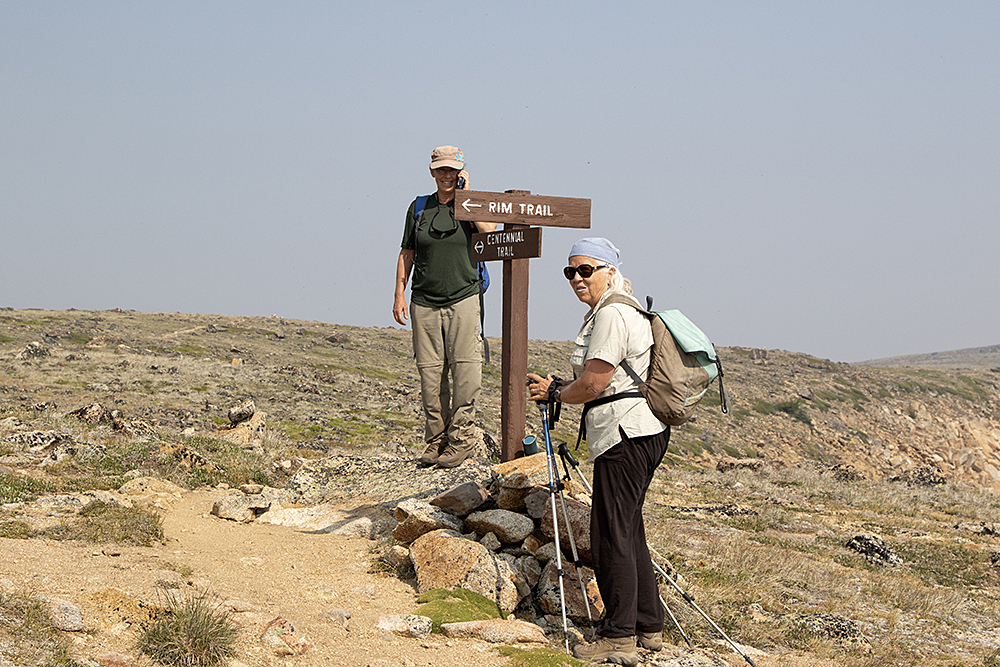
Here we are in the high country, the only place with cell phone coverage, checking on the fire situation back home. All OK – nice to be reassured.
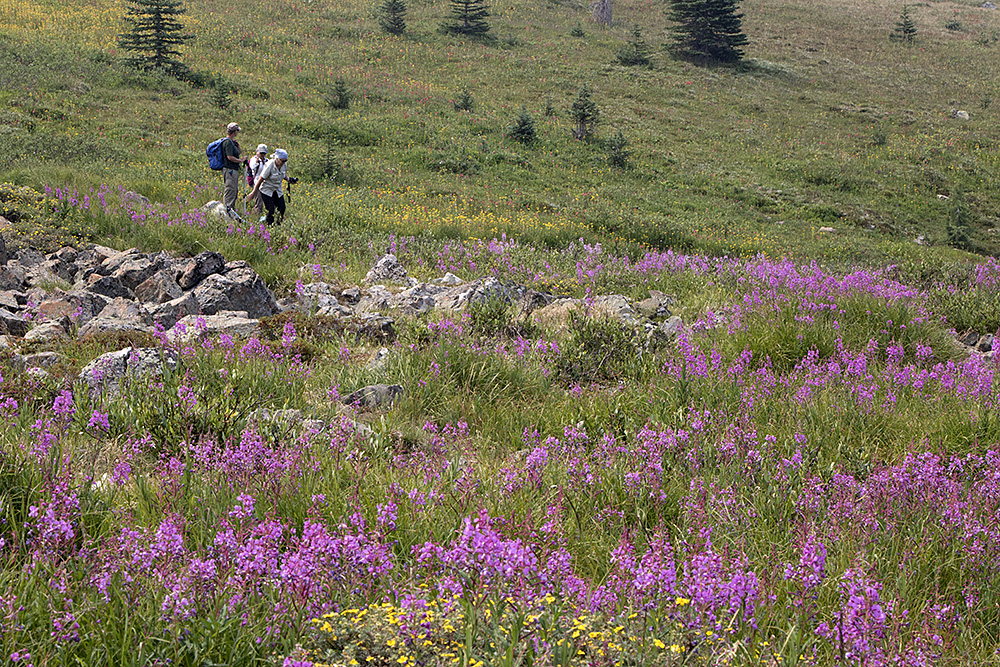
Lower down there are moist meadows with spectacular wildflowers – mostly fireweed in this photo.
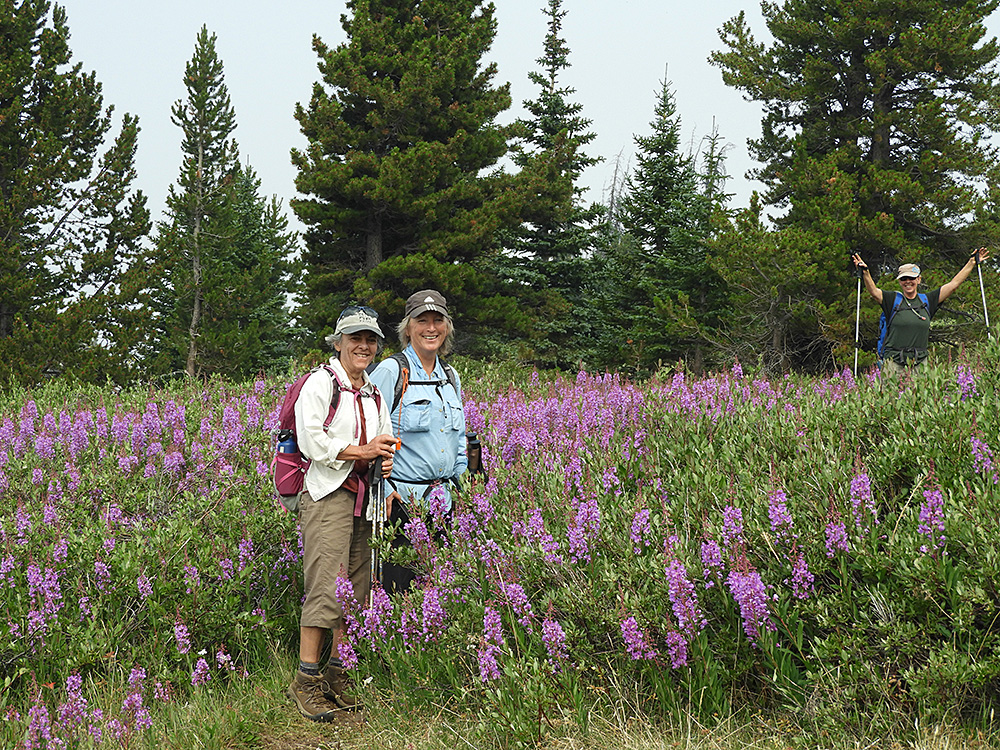
Hiking through the fireweed.
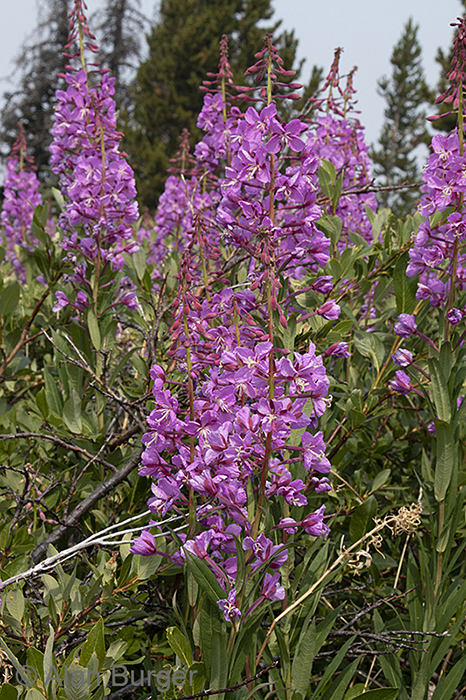
A close up of fireweed (Epilobium angustifolium). Photo: © Alan Burger
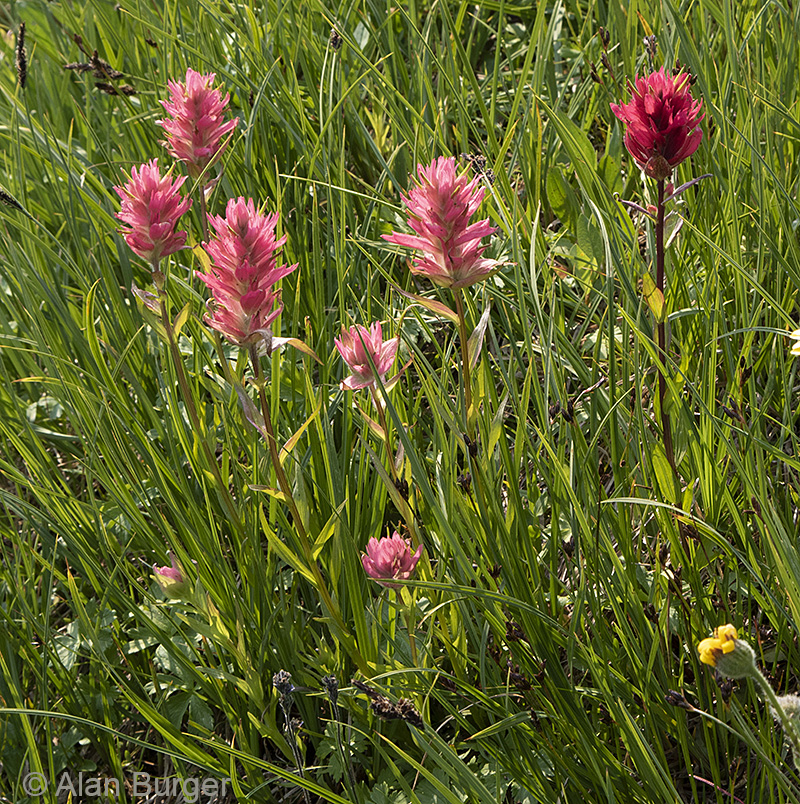
Paintbrush (likely Small-flowered Paintbrush Castilleja parviflora) – one of several species of paintbrush in Cathedral Park. Photo: © Alan Burger
Along with all the flowers there were many butterflies and other insects. Here are a few.
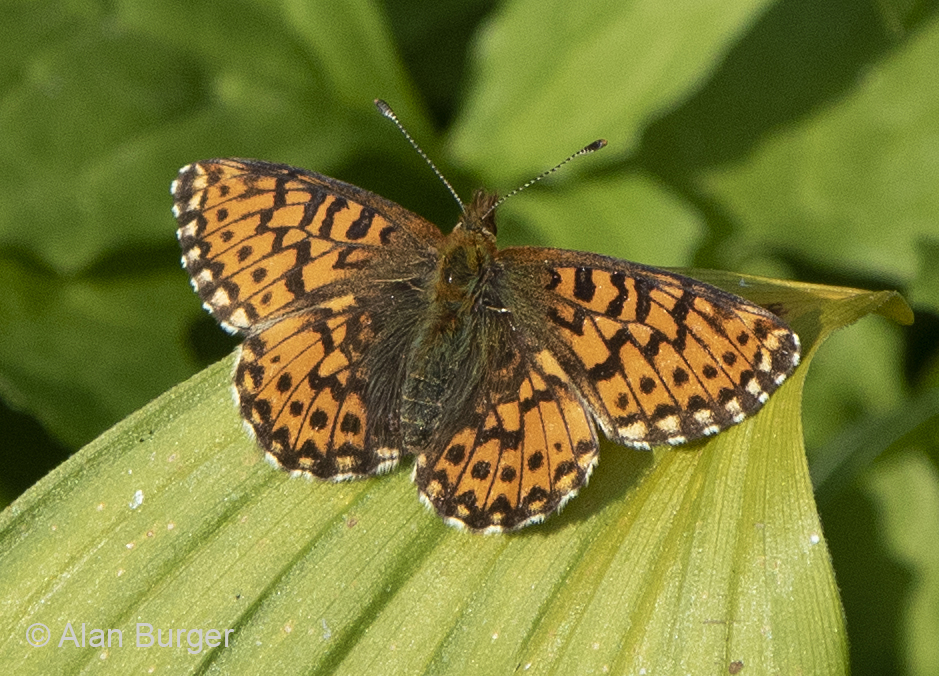
A Freija Fritillary (Clossiana freija) – one of the more common and conspicuous butterflies we encountered. Photo: © Alan Burger
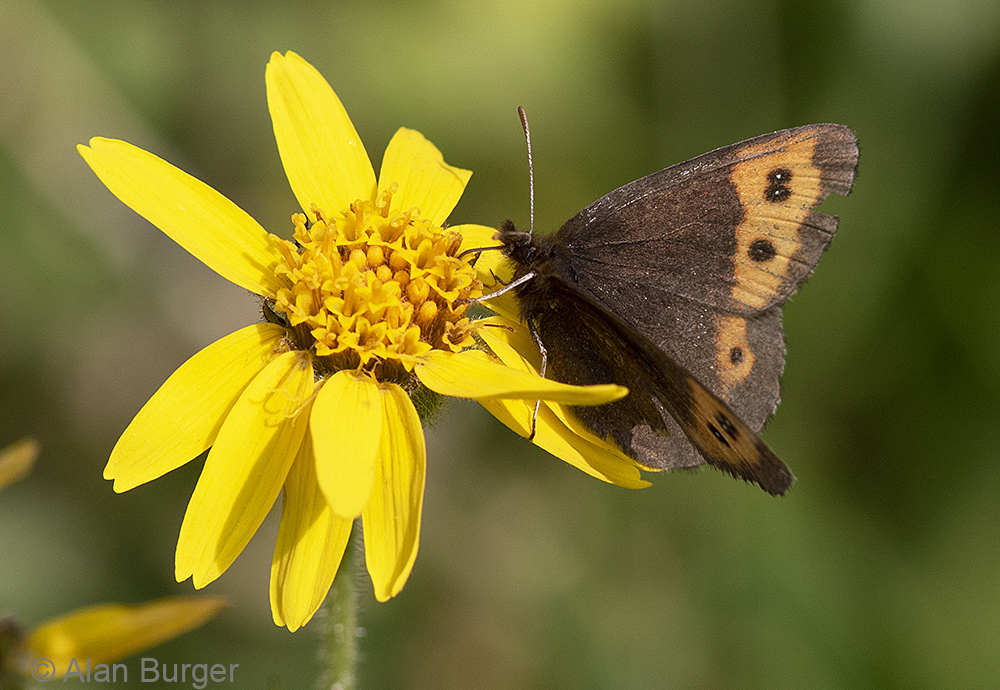
Tentatively identified as Vidler’s Alpine (Erebia vidleri). Notice that is has damaged wings – likely from a bird trying to catch it. Photo: © Alan Burger
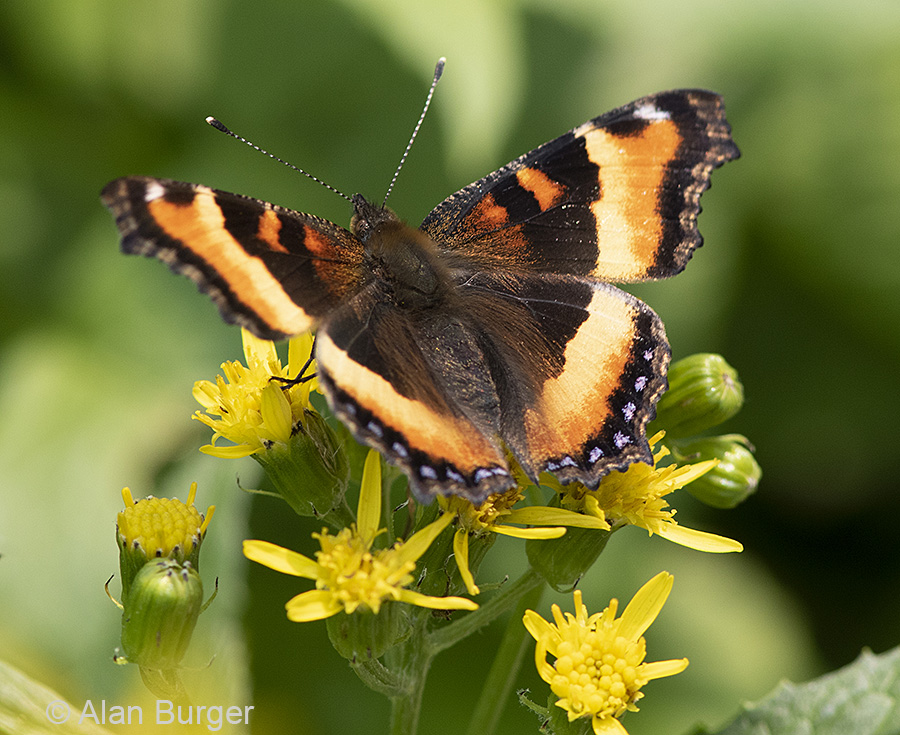
Big, colourful and bold – a beautiful Milbert’s Tortoiseshell (Aglais milberti) nectaring on ragwort blooms. Photo: © Alan Burger
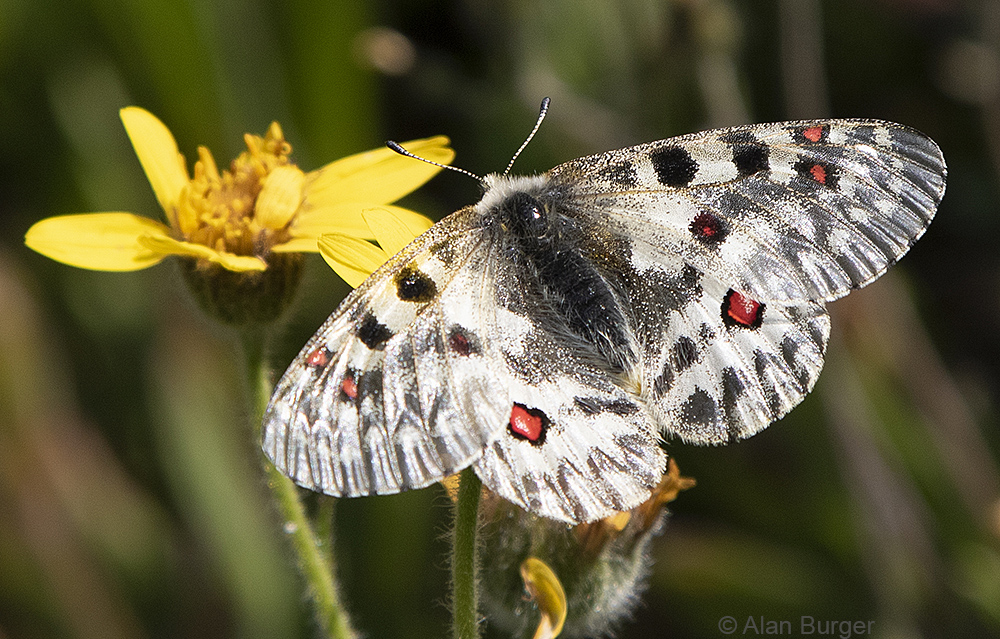
A spectacular large butterfly – the Rocky Mountain Apollo/Parnassian (Parnassius smintheus). Photo: © Alan Burger
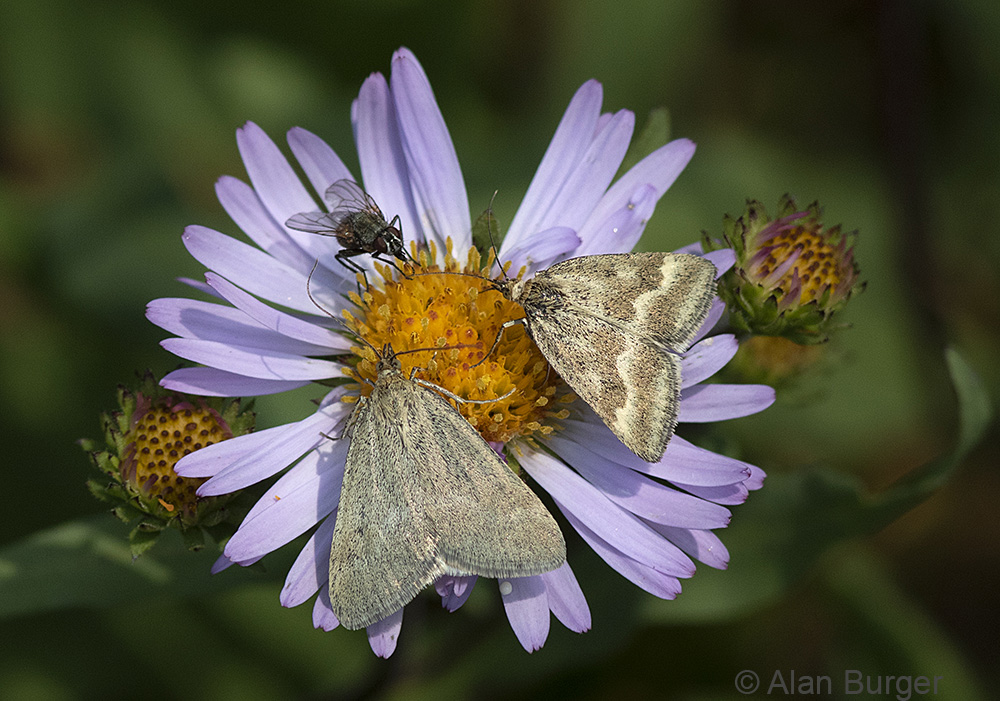
Two moths and a fly sharing the nectar on a Subalpine Fleabane (Erigeron glacialis) flower. Photo: © Alan Burger
And, of course, we kept a close lookout for birds and mammals.
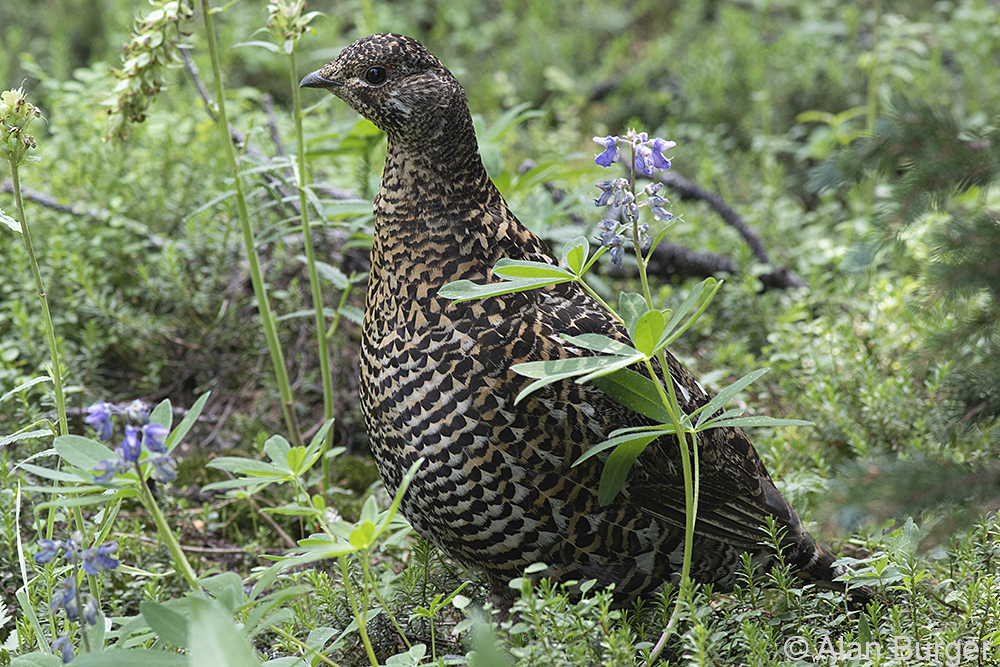
Cathedral Park supports many Spruce Grouse in the forested areas. This is a female. Photo: © Alan Burger
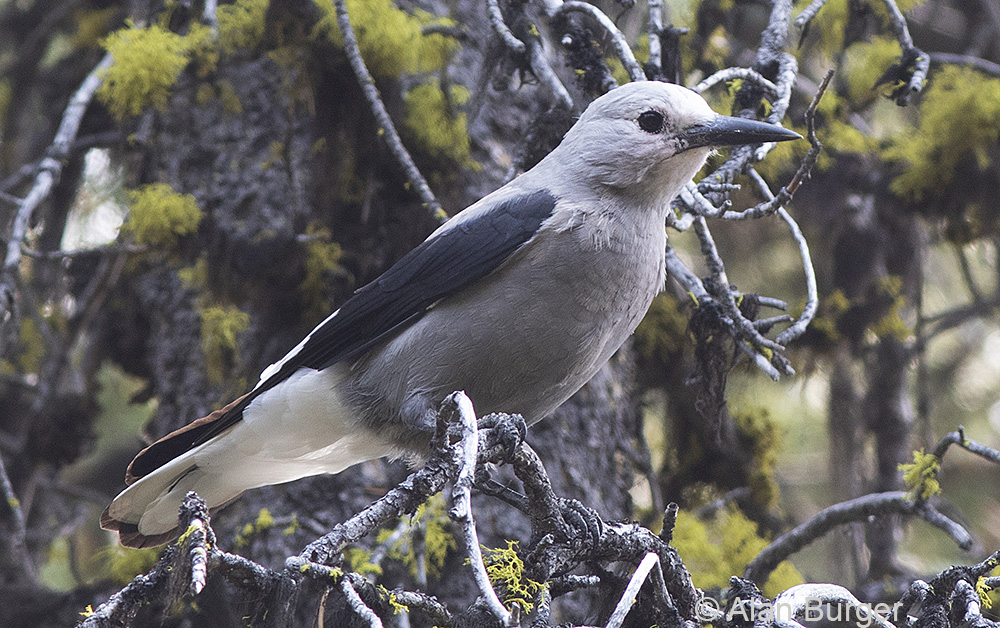
The harsh calls of Clark’s Nutcracker are a regular feature in the forests of the park. Photo: © Alan Burger
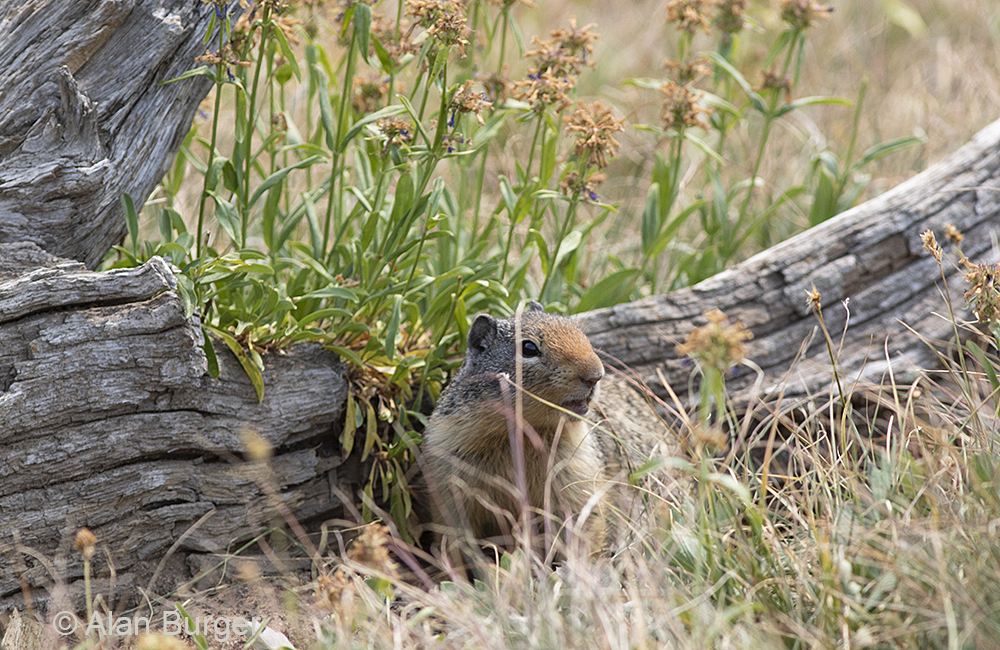
Columbia Ground-squirrels are common in the grassy areas – both in the valleys and in many alpine areas. Photo: © Alan Burger
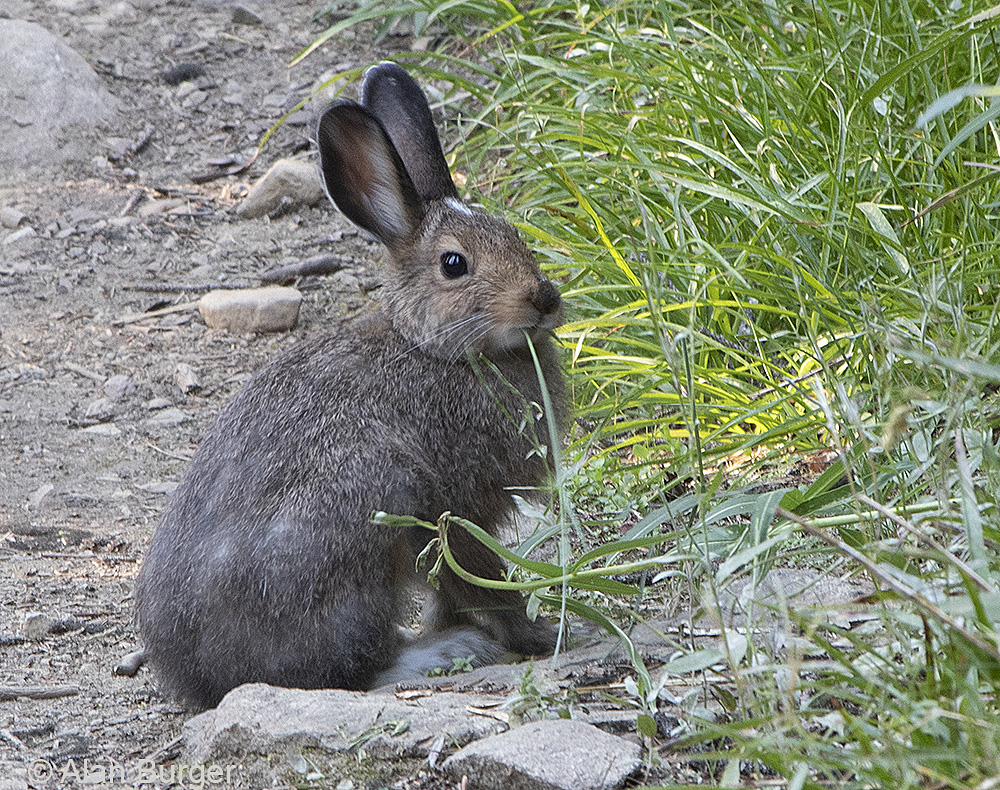
A Snowshoe Hare. One can just see the huge white feet – these remain white all year whereas the rest of the bunny changes from winter white to summer brown. Photo: © Alan Burger
The next day two of us decided to take on the Lakeview Loop – down to Lakeview Creek, a long valley hike to Goat Lake, then up the steep ridge to the Boxcar, up the next long ridge to Lakeview Mountain, back down to the creek and up again to our Quiniscoe Lake camp. In total a grueling 19 km 10-hour hike with knee-grinding changes in elevation. But some spectacular scenery and interesting plants and geology.
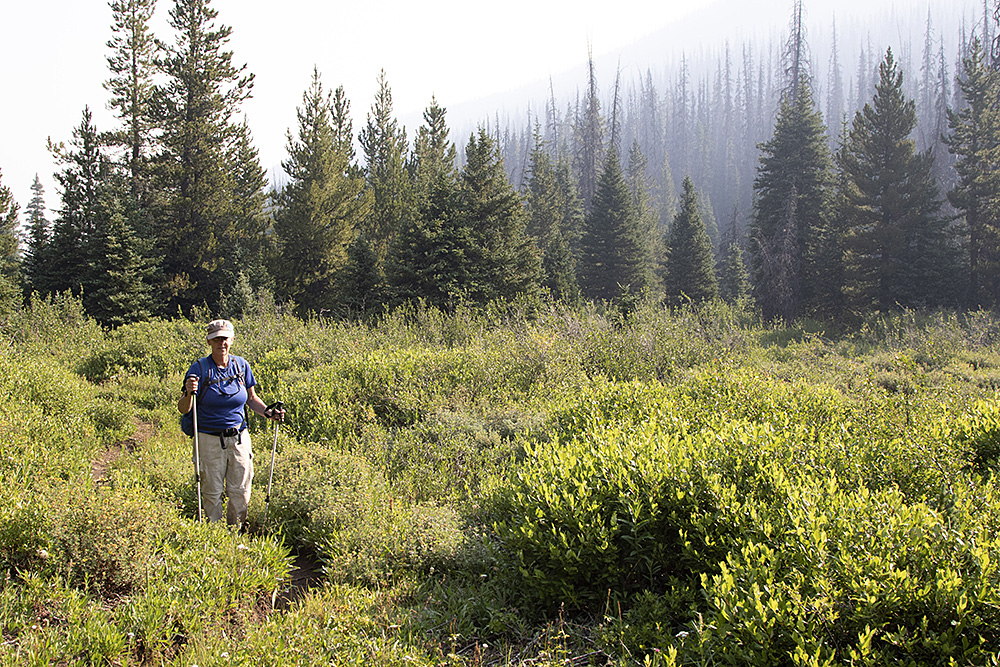
We first descended almost 200 m in elevation to the Lakeview Creek. Then a very pleasant trail next to the creek heading up to Goat Lake. Some other hikers had spotted a moose in these willow thickets on the same day.
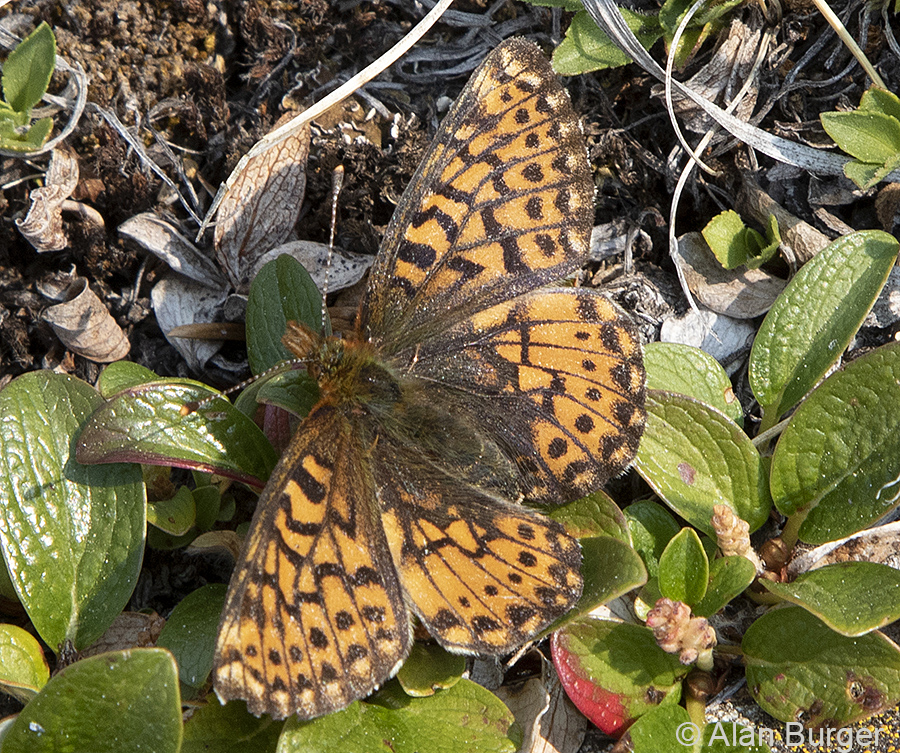
Along the way more Freija Fritillaries (Clossiana freija). Photo: © Alan Burger
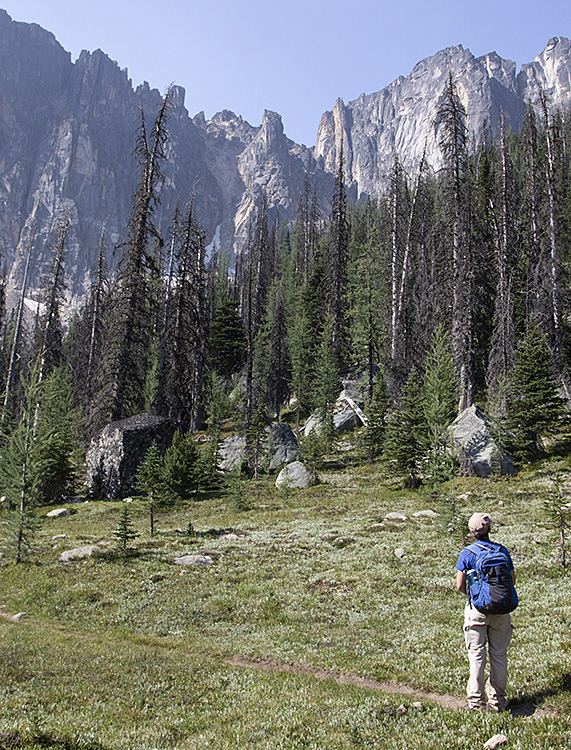
Approaching Goat Lake one begins to get nice views of the Grimface Mountains.
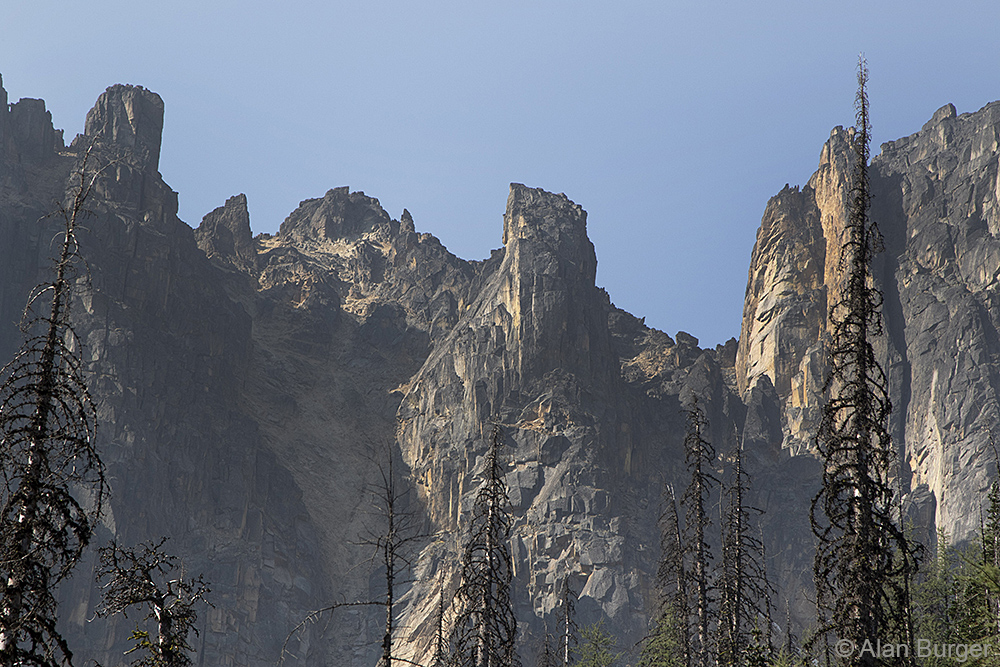
A close look at the spires that make up Grimface Mountain.
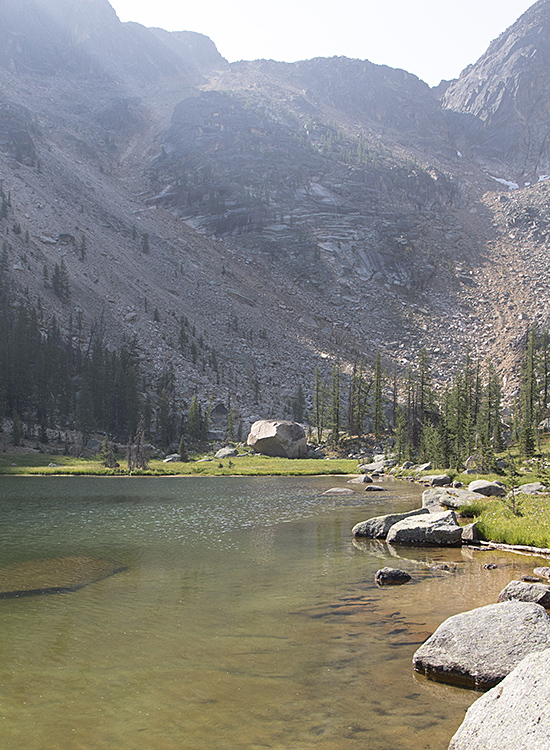
Goat Lake is in a very scenic location, with an amphitheatre of high peaks forming the backdrop. A lovely spot.
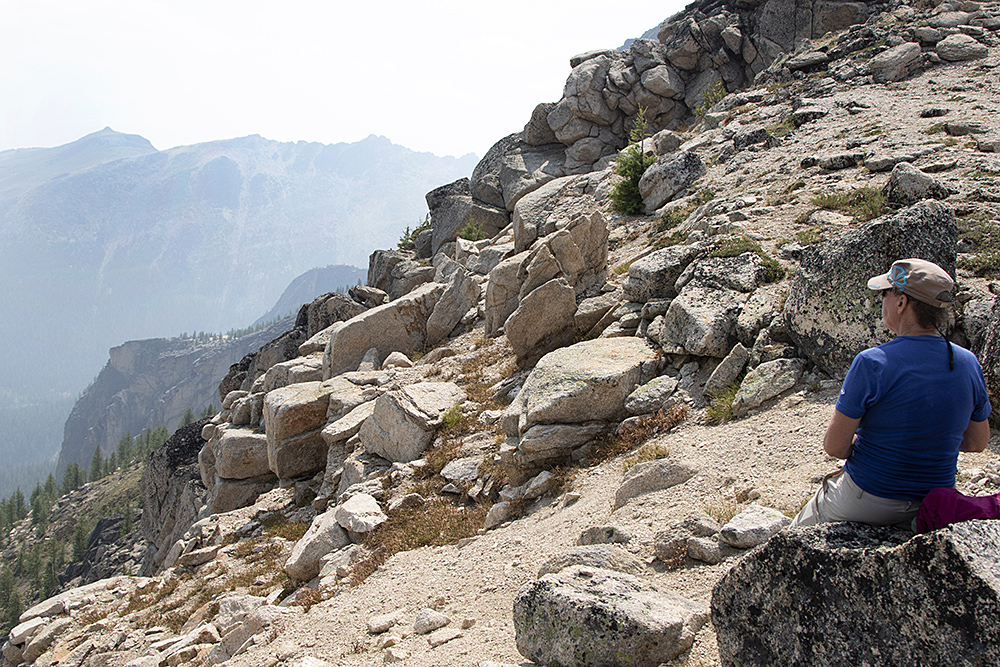
After a steep climb up from Goat Lake one reaches the saddle separating the Boxcar formation from Lakeview Mountain. A great place to rest and enjoy a smoky view of the mountains to the east.
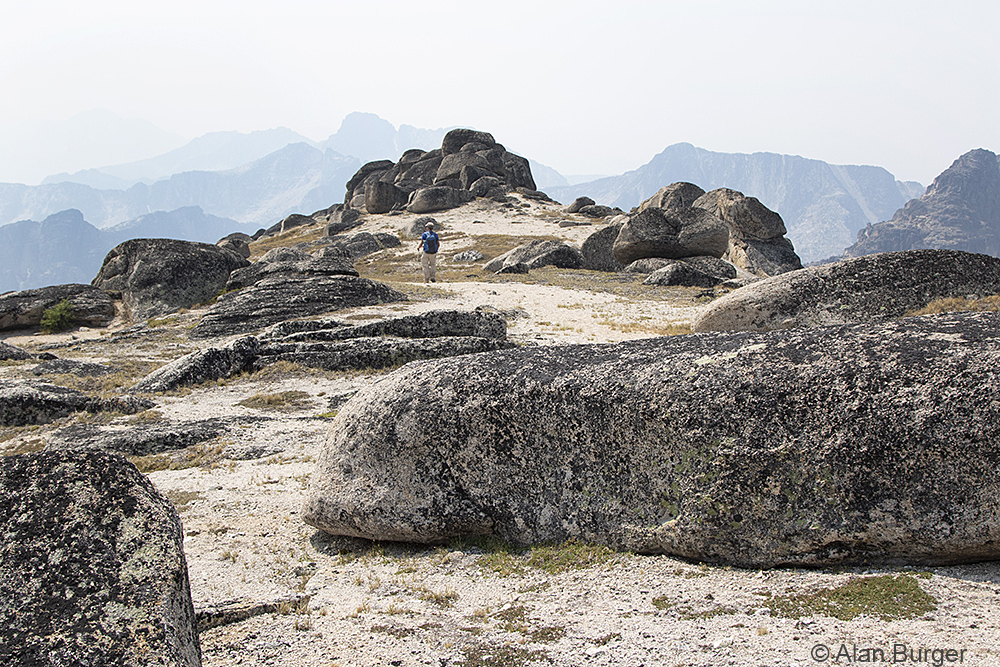
Approaching the Boxcar summit – a really interesting area with sandstone bedrock and boulders surrounded by gravelly flats. The far distant mountains to the south are in Washington State.
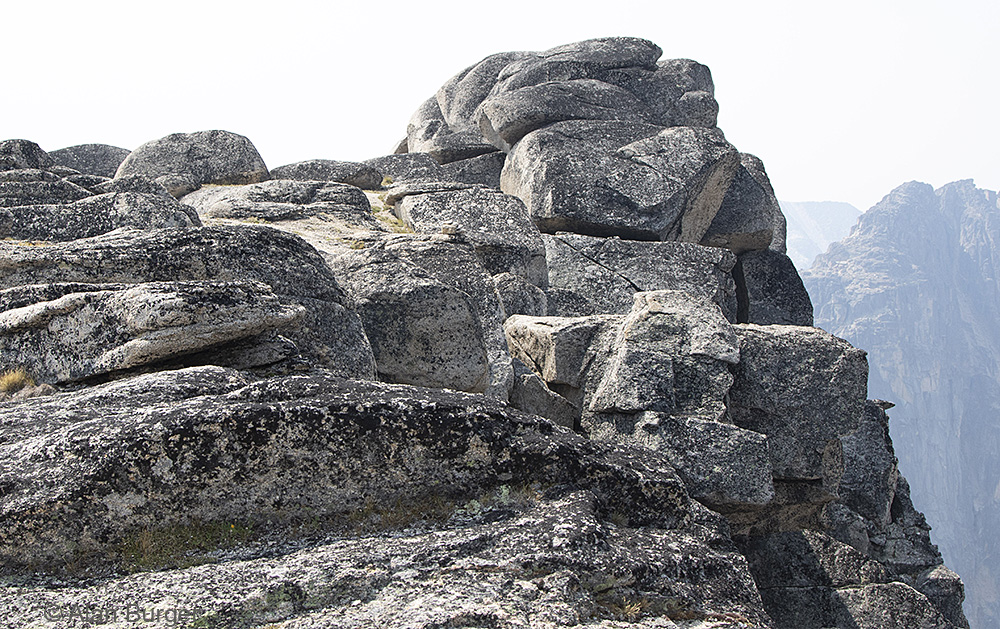
Lovely sandstone rock formations at the Boxcar.
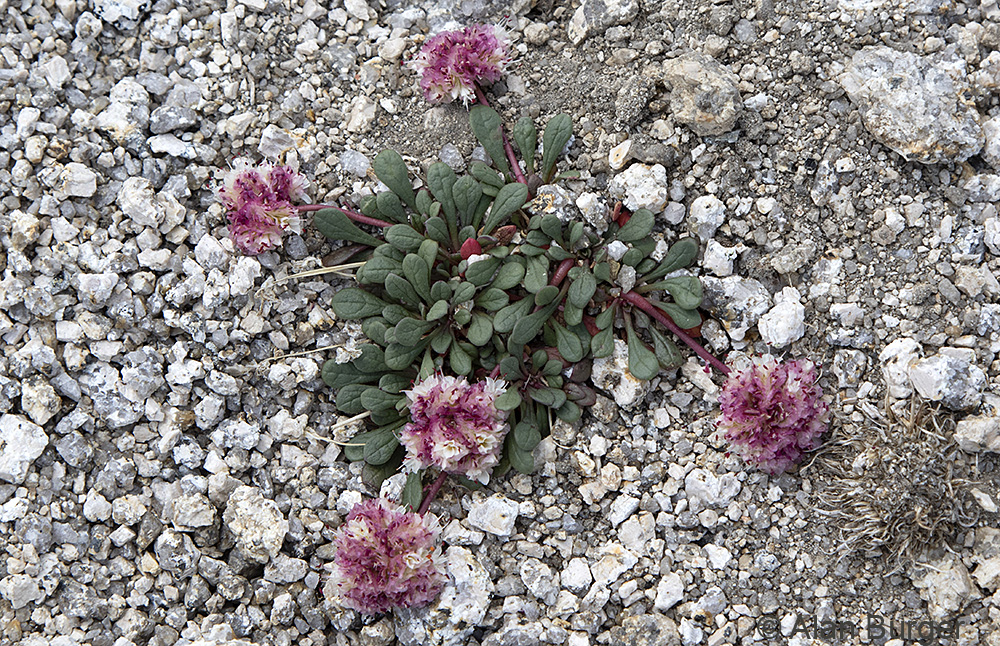
One of the rare plants that thrive in the gravelly soils of the Boxcar and Lakeview Mountain is the Umbellate Pussypaws (Cistanthe umbellata). Photo: © Alan Burger
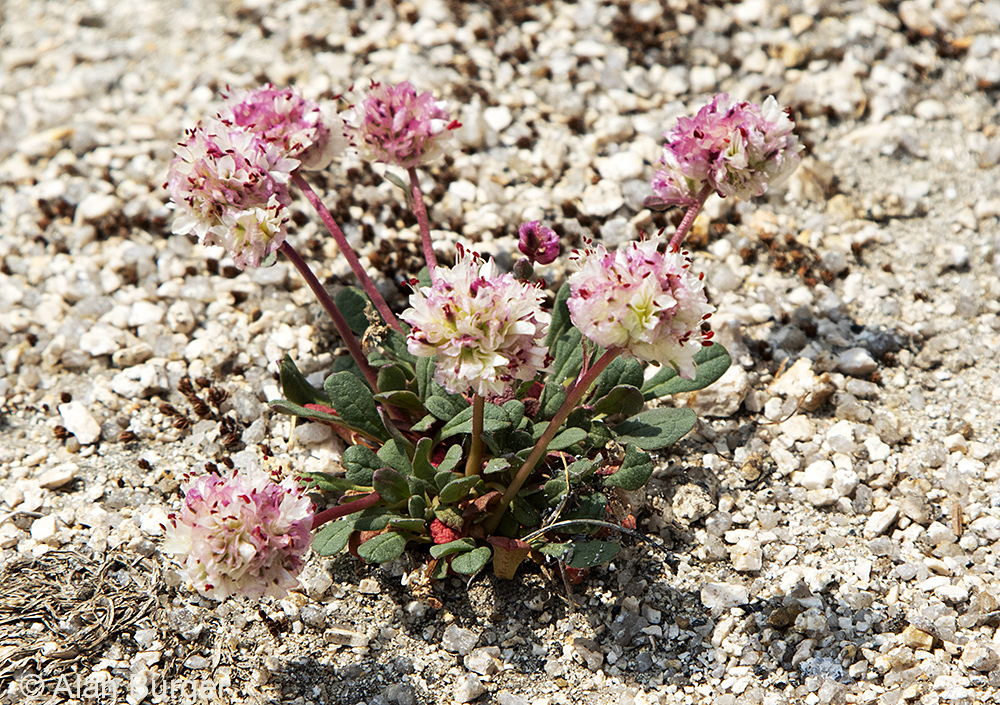
Another Umbellate Pussypaw plant in full bloom. The flowers reach about 8 cm high. Photo: © Alan Burger
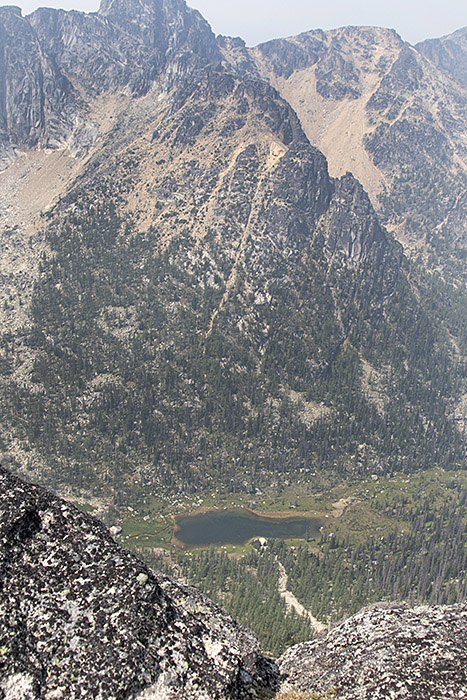
Looking down from the Boxcar. Goat Lake is visible 500 m in elevation below. It takes a tough slog to reach this summit.
From the Boxcar we backtracked down to the saddle and then up the steep ridge heading to Lakeview Mountain.
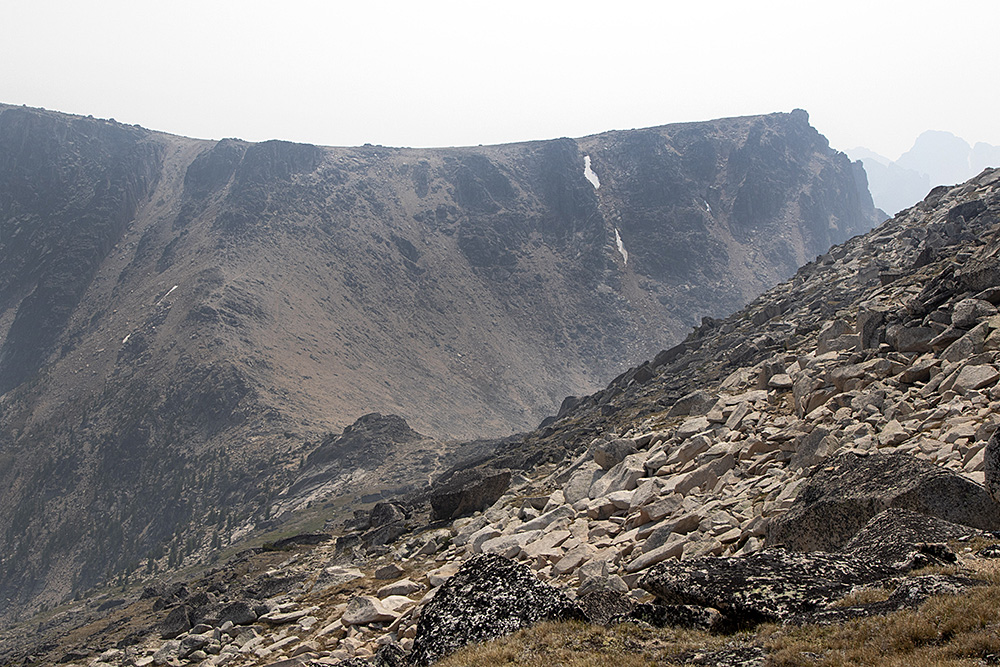
Looking back at the Boxcar ridge as we climbed up the slopes of Lakeview Mountain. The saddle between these mountains was our route.
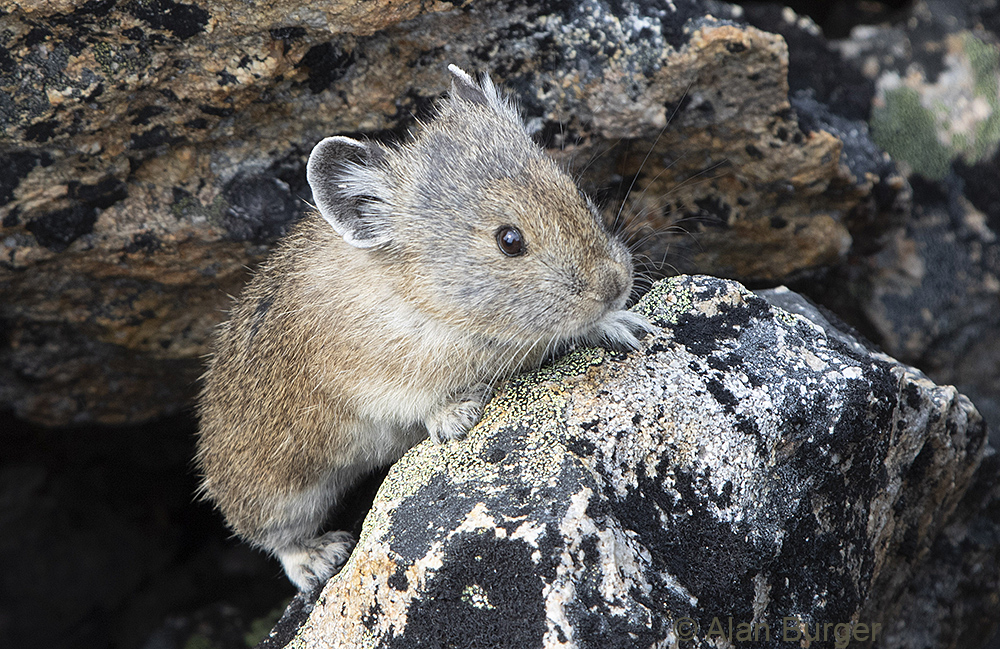
While having a well-earned rest and snack on the summit of Lakeview Mountain we were visited by this Pika – emerging from the rock crevices right at our feet. Photo: © Alan Burger
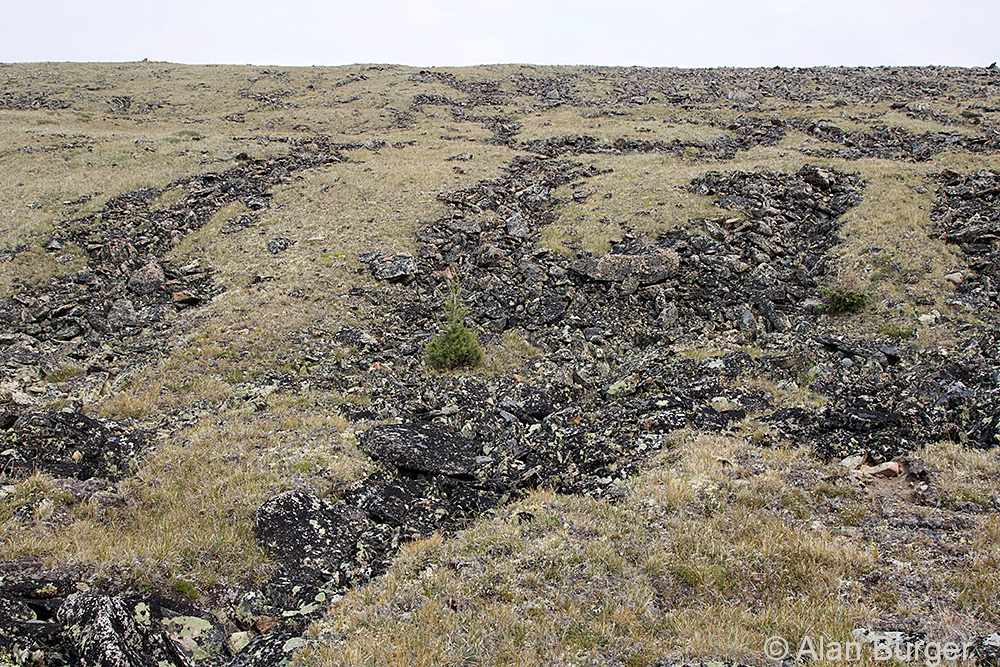
On the slopes of Lakeview Mountain there are huge areas with epiglacial stone stripes. The repeated freezing and thawing of ice over hundreds of years moves the rocks and separates larger boulders from finer gravel. Gravity then distorts these formations into stripes going downhill. Photo: © Alan Burger
The next day, despite creaking knees, I joined two of our energetic ladies for a loop around the Rim Trail – another 13 km hike with about 500 m elevation gain. But I didn’t want to miss the opportunity to find some ptarmigan in the high alpine areas.
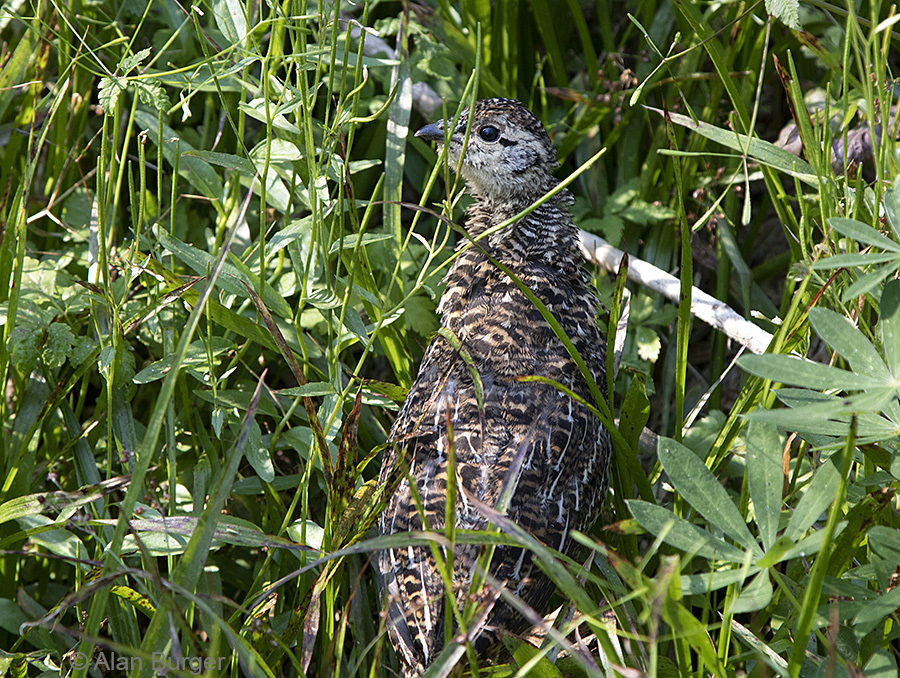
One of six Spruce Grouse chicks that we encountered in the forest heading towards Ladyslipper Lake. Photo: © Alan Burger
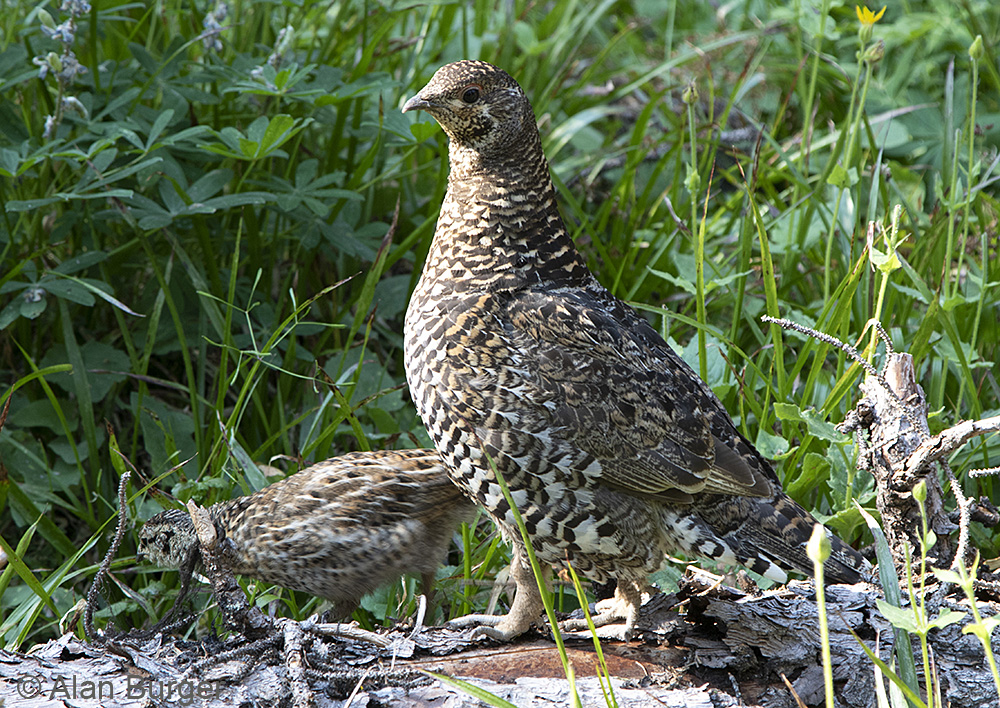
Mama Spruce Grouse with one of her 6 chicks. Photo: © Alan Burger
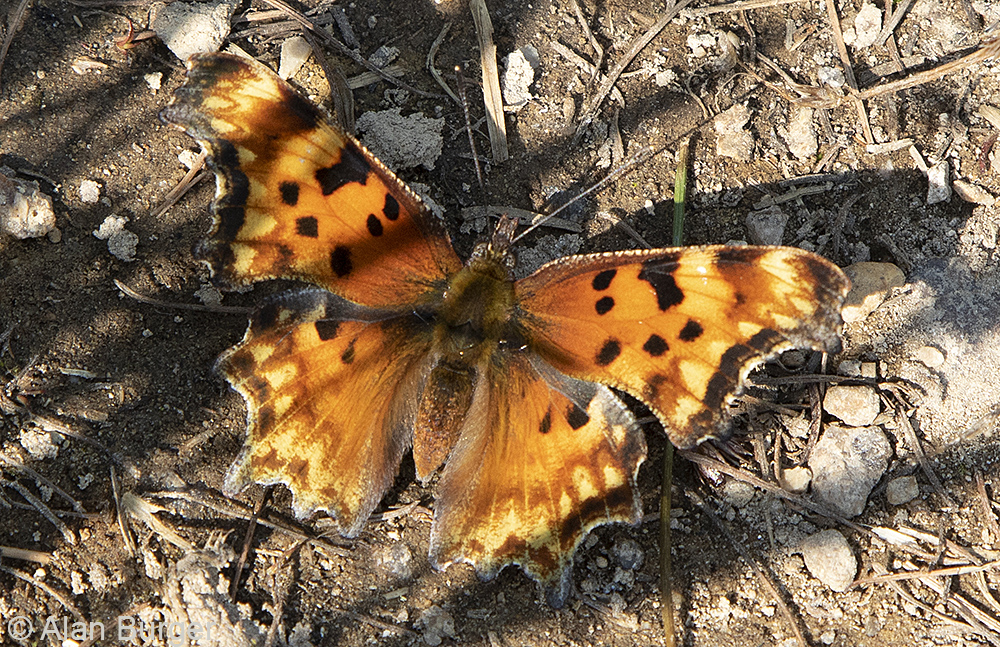
This lovely butterfly is tentatively identified as a Zephyr Anglewing (Polygonia zephyrus). Photo: © Alan Burger
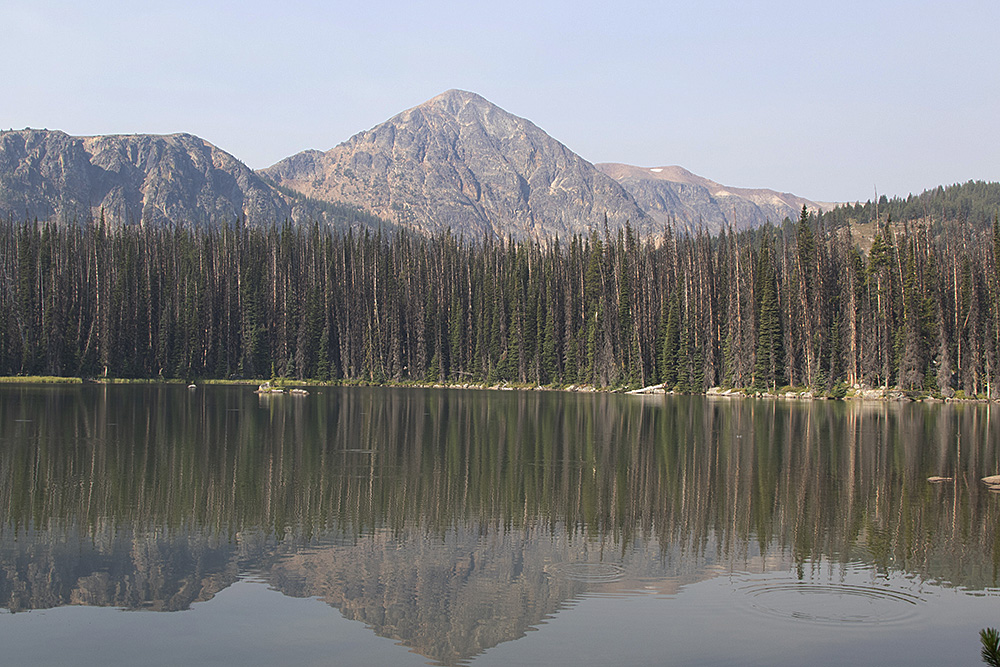
Ladyslipper Lake with Pyramid Mountain behind. This is a beautiful lake and a great place to rest on the climb up to the Rim Trail. Photo: © Alan Burger
After an hour or more of steep climbing we were once again looking down on Ladyslipper Lake as we neared the top of the Rim Trail
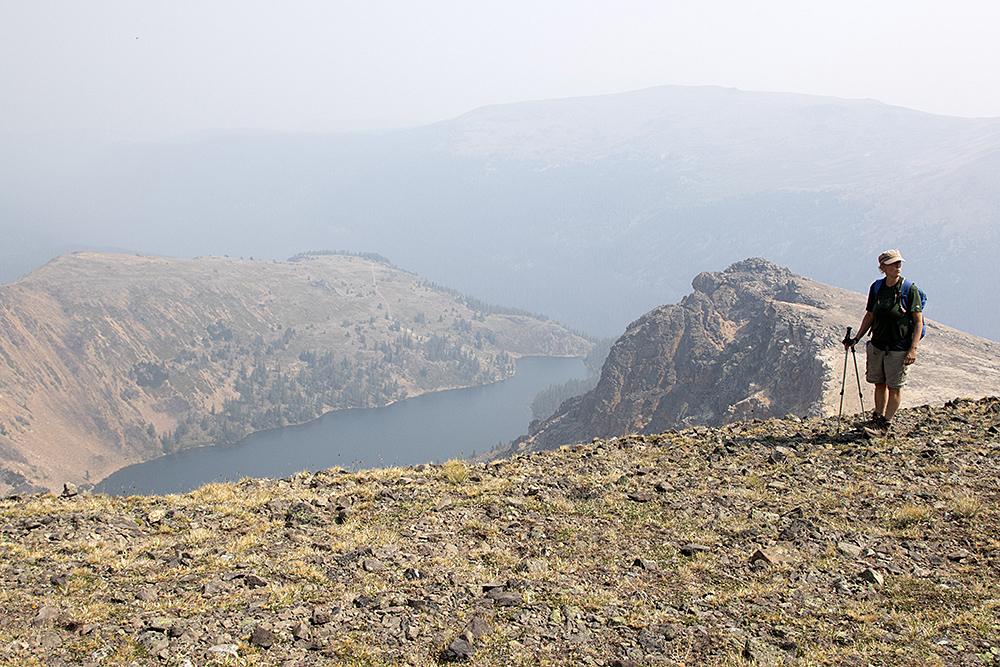
On the Rim Trail looking down at Ladyslipper Lake. In the smoky background is Lakeview Mountain with Lakeview Creek in the deep valley between.
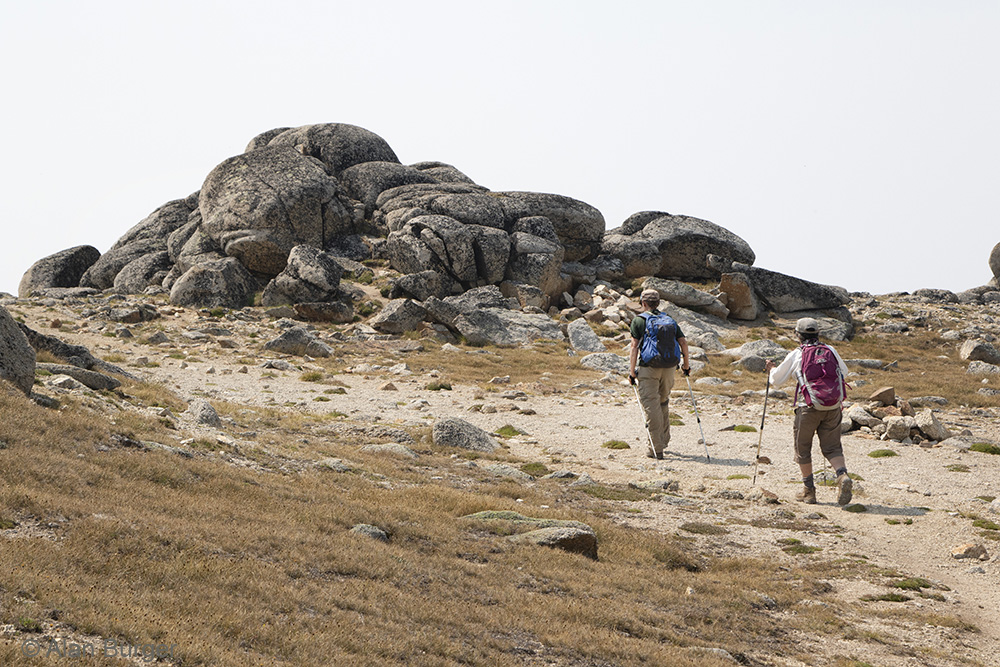
Approaching the Stone City area on the Rim Trail. The scenic rounded sandstone and gravelly substrate are similar to those at the Boxcar. Photo: © Alan Burger
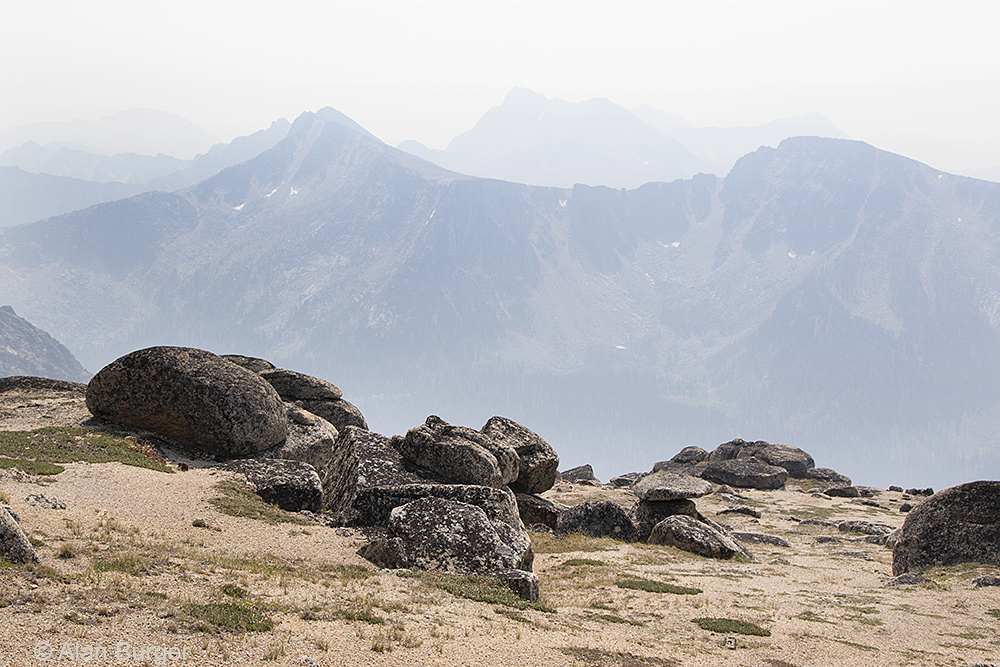
More rounded sandstone and gravel in the Stone City area. In the smoky distance are mountains across the border in the U.S. Photo: © Alan Burger
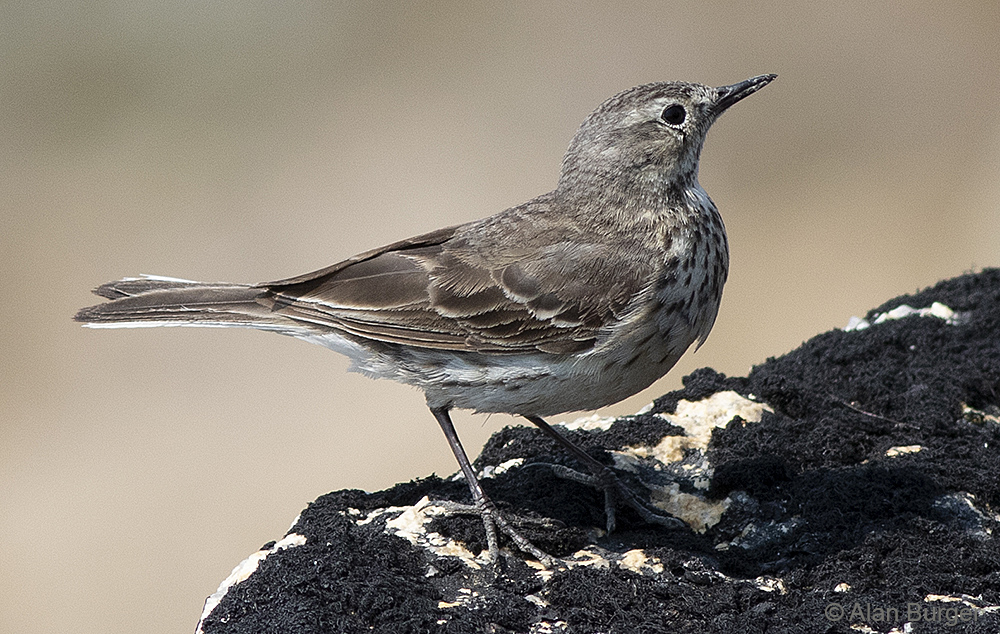
American Pipits are one of the few birds that breed in these high, sparsely-vegetated alpine areas. Photo: © Alan Burger
The high Rim Trail is a good place to look for White-tailed Ptarmigan. These rugged members of the grouse family are adapted to live in the high alpine and arctic areas. But they are hard to find – their summer plumage closely matches the lichen-spattered rocks and they sit tight as you walk past, reducing the chances of one noticing them.
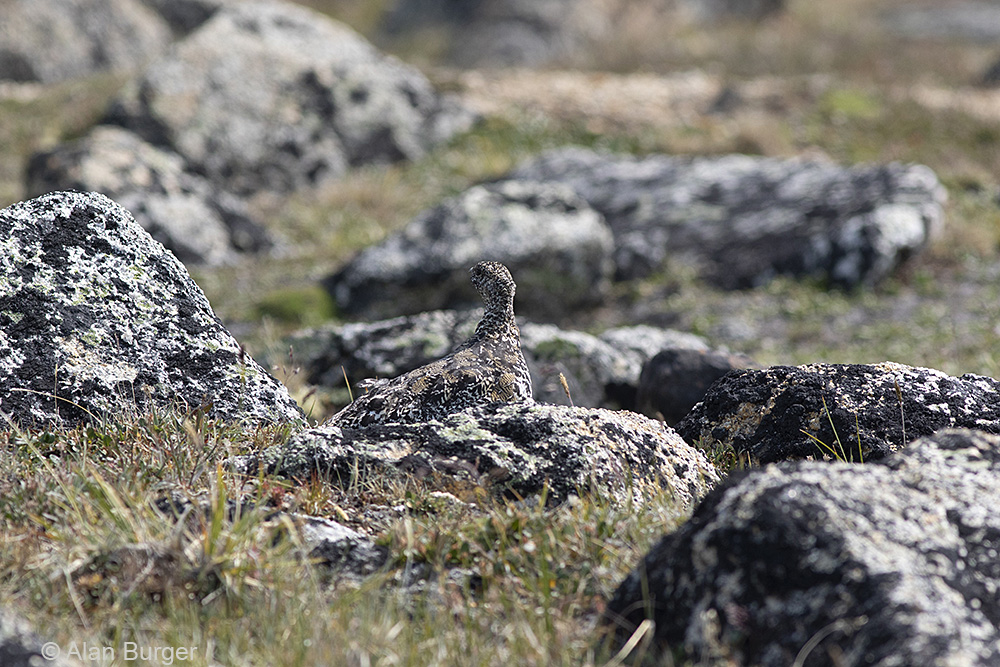
After almost an hour of fruitless searching I finally spotted a White-tailed Ptarmigan. One can see how well camouflaged they are. I probably walked past several more without seeing them. Photo: © Alan Burger
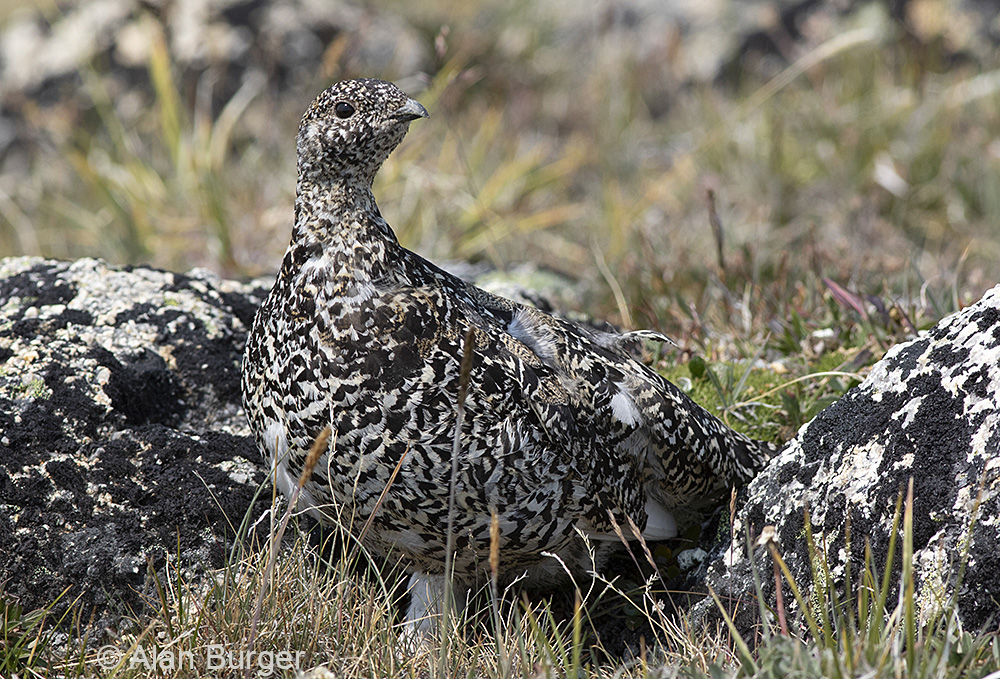
This female White-tailed Ptarmigan did not move as I carefully approached so I suspected she might have chicks nearby. Photo: © Alan Burger
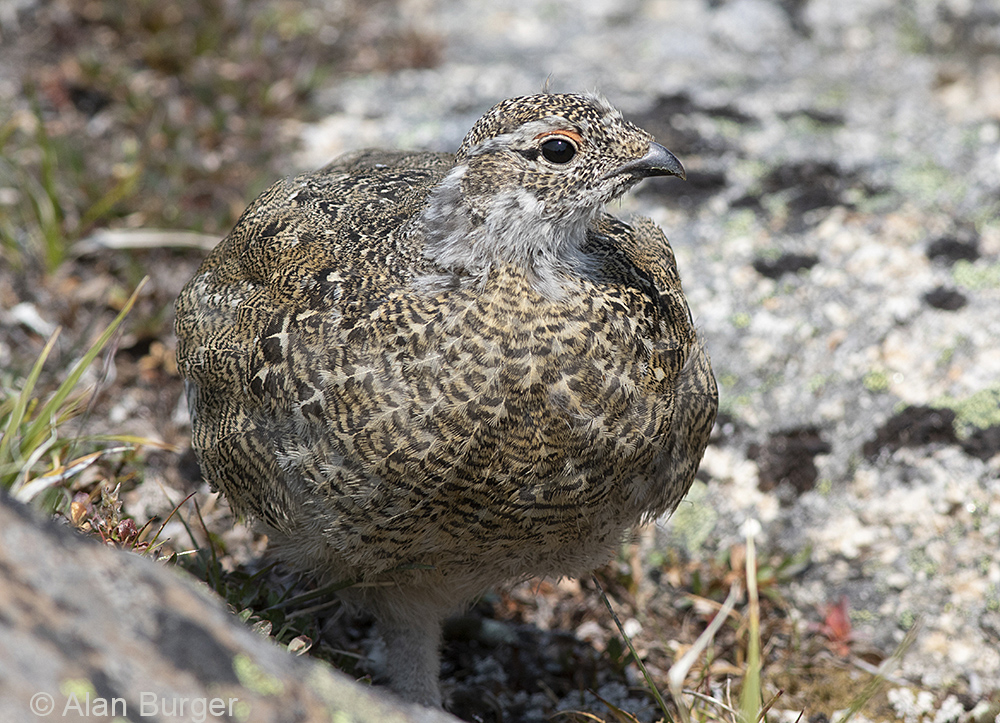
Sure enough, almost under my feet was this half-grown White-tailed Ptarmigan chick. I didn’t find any others. Photo: © Alan Burger
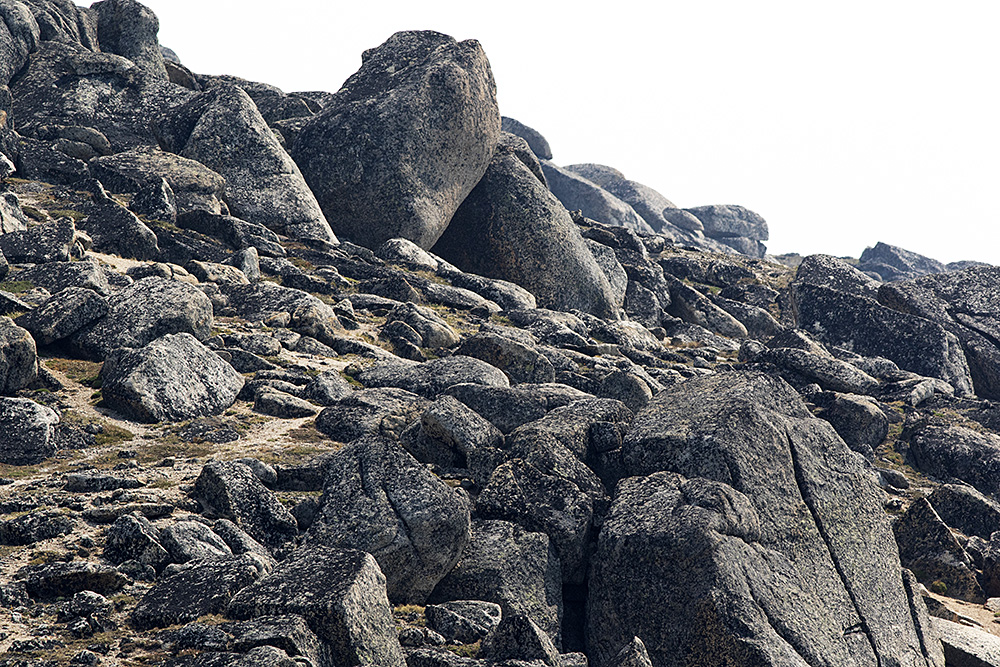
Lovely rock formations in the Stone City area. Photo: © Alan Burger
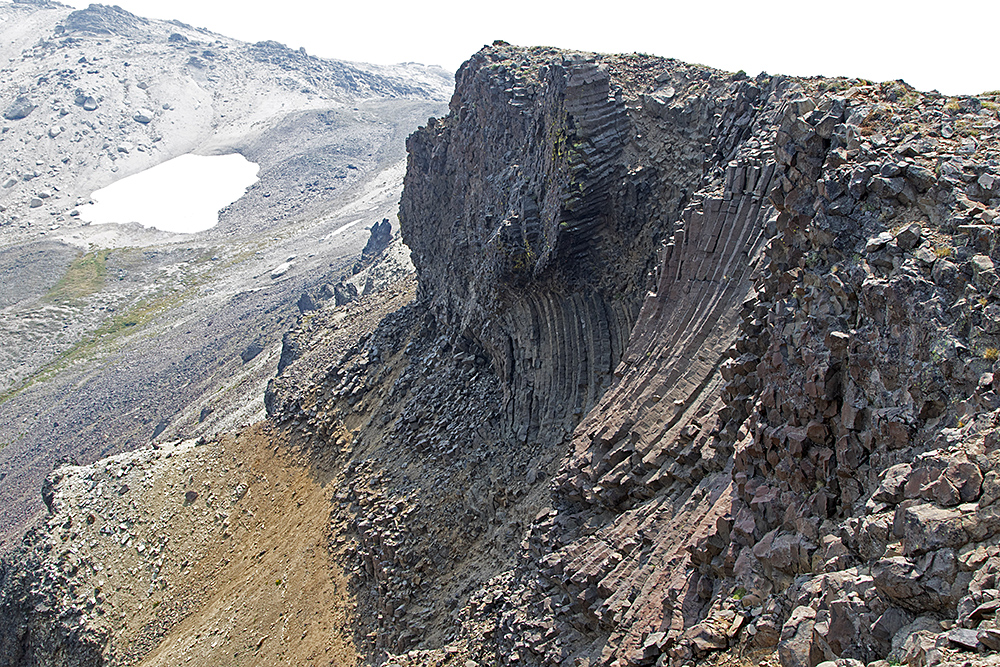
As one walks along the Rim Trail the bedrock abruptly changes from the pale sandstone (here in background) to black volcanic basalt. This wonderful columnar basalt feature is known as the Woodpile. Photo: © Alan Burger
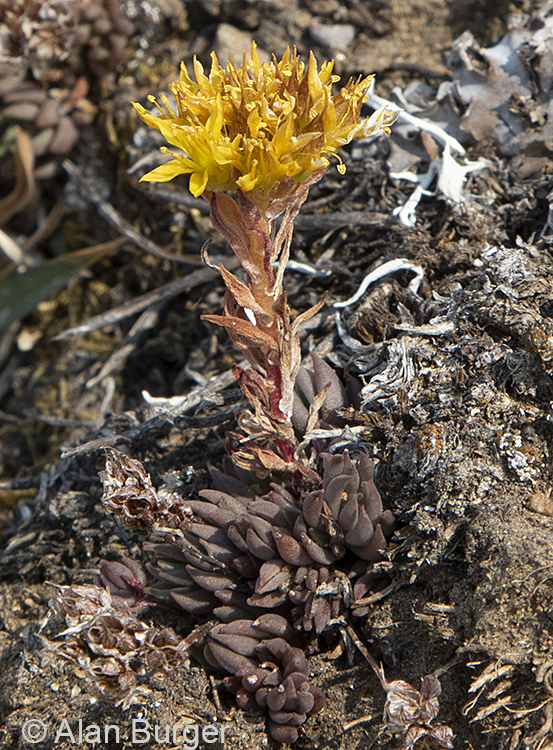
Among the high alpine plants that thrive along the Rim Trail are many Lance-leafed Stonecrops (Sedum lanceolata). Photo: © Alan Burger
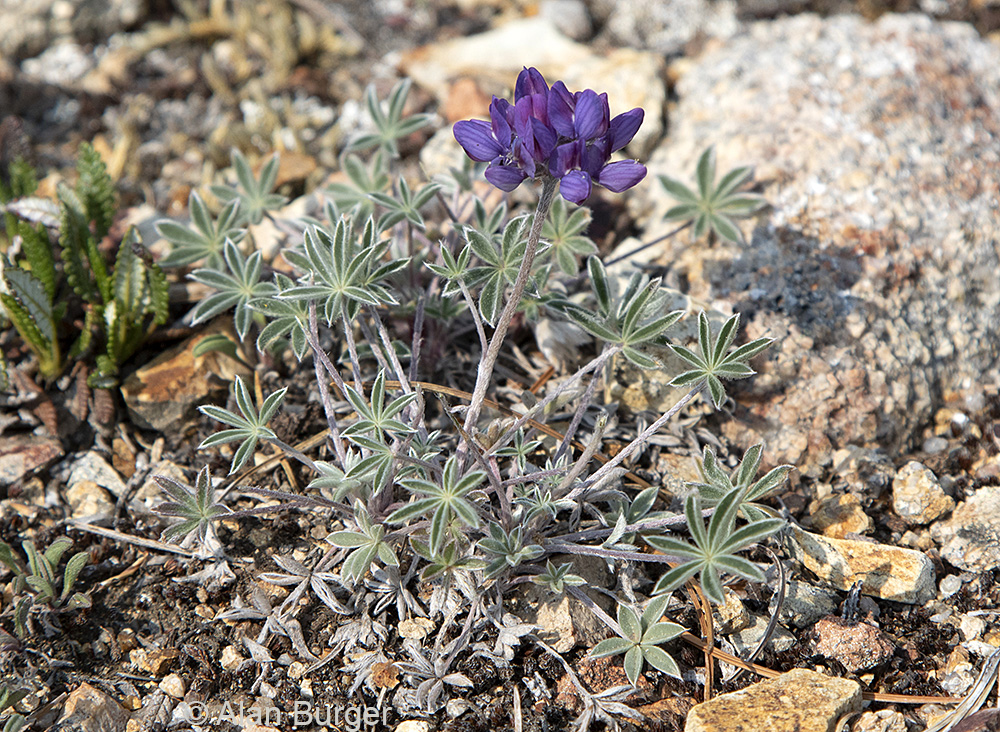
The tiny Alpine Lupine (Lupinus lyalli) is common in the harsh high-elevation areas of Cathedral Park. Photo: © Alan Burger
On our last night the park operator came around to tell us that the park was on evacuation alert because of a fire 10 km away. But we were leaving the next morning anyway – to return to the dark smoky lowlands and home.
Our September 2020 visit to Cathedral Park is featured here: Cathedral Park 2020
~~~~~~~~~~~~~~~~~~~~~~~~~~~~~~~~~~~~~~~~~~~

